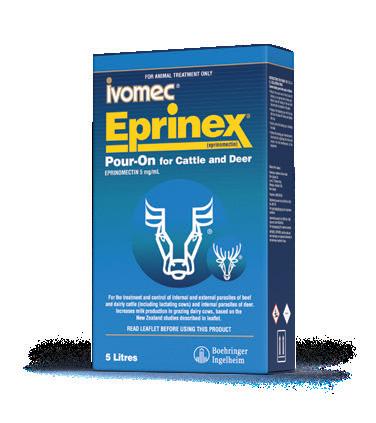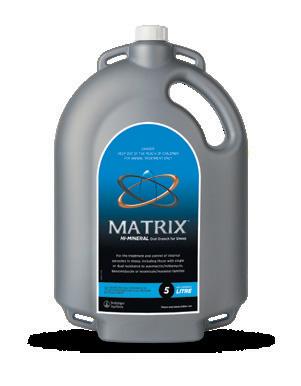September 2022
Keeping Mum: Leaving calves on cows
Global dairy: Aussie dairy exodus
Sentience: Positive and negative emotions

Learn, grow, excel
FMD: Are you ready for Foot and Mouth Disease?

Keeping Mum: Leaving calves on cows
Global dairy: Aussie dairy exodus
Sentience: Positive and negative emotions

FMD: Are you ready for Foot and Mouth Disease?

Moving ahead means making changes. And that usually comes with a few risks along the way. But with us as your partner, you can progress with more confidence. That’s because FMG offers the kind of specialised advice and knowledge that only comes from working alongside rural New Zealand for generations. To find out more, ask around about us. Better still, give us a call on 0800 366 466 or go to fmg.co.nz. FMG, your partners in progress.
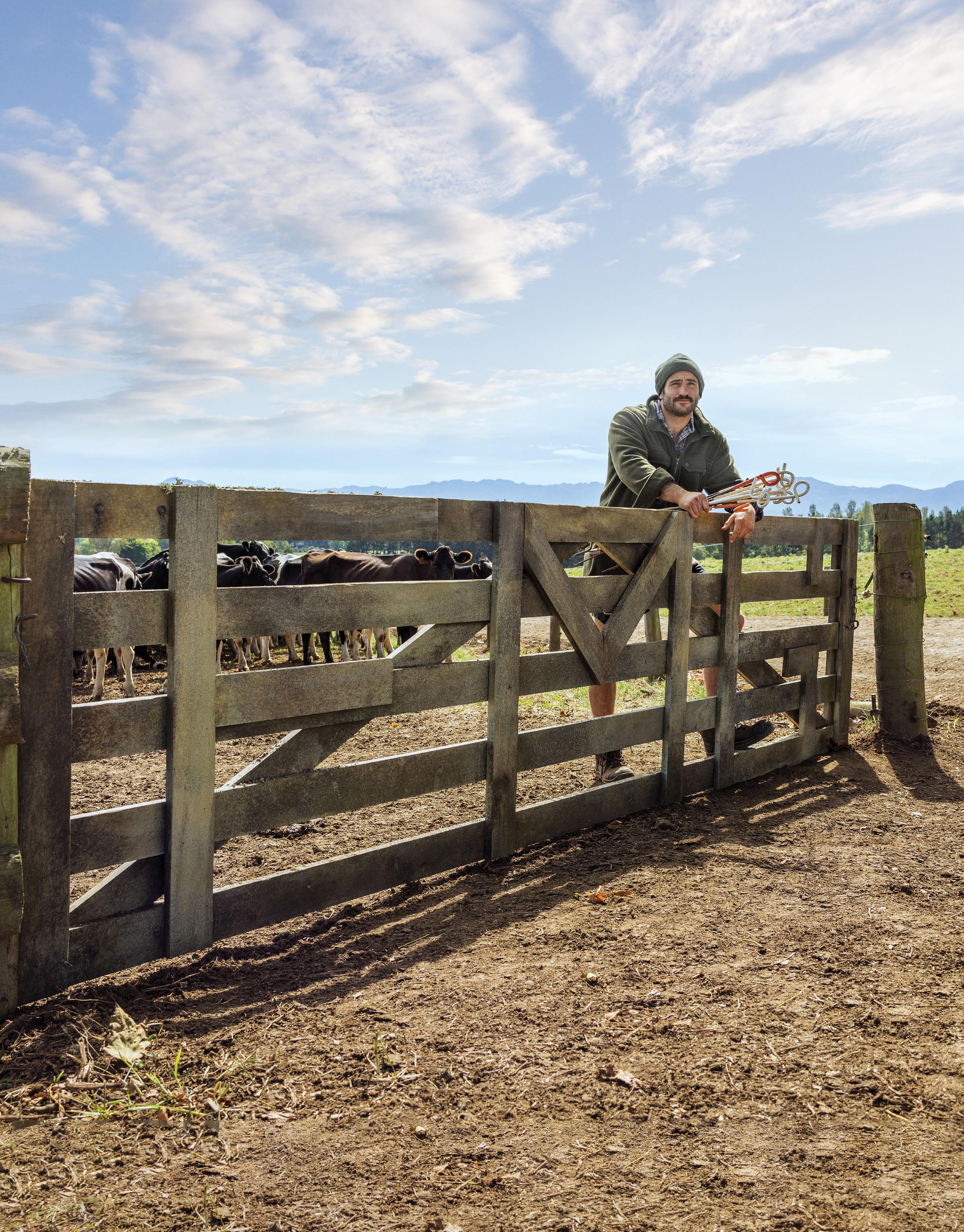
22 Milking on Faroe islands a vital industry
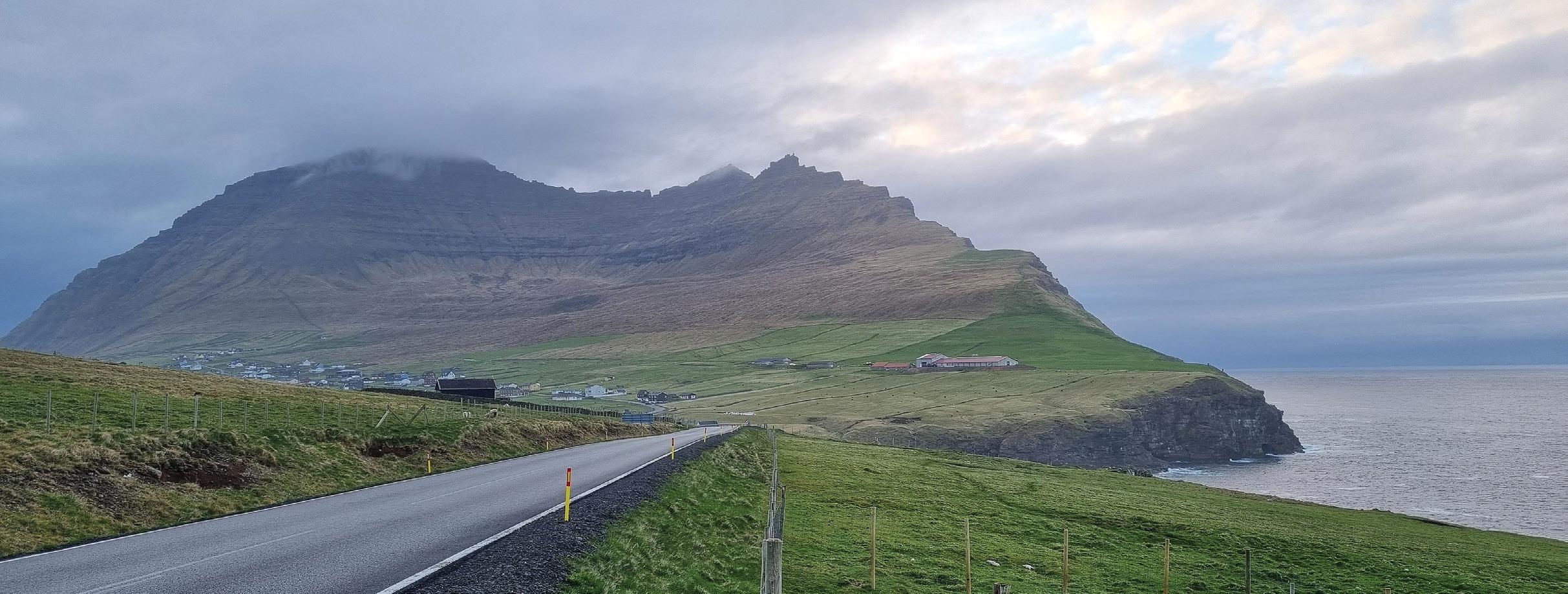
25 Foot and Mouth: Farmers urged to be vigilant
27 Relationships: When it all goes pear-shaped
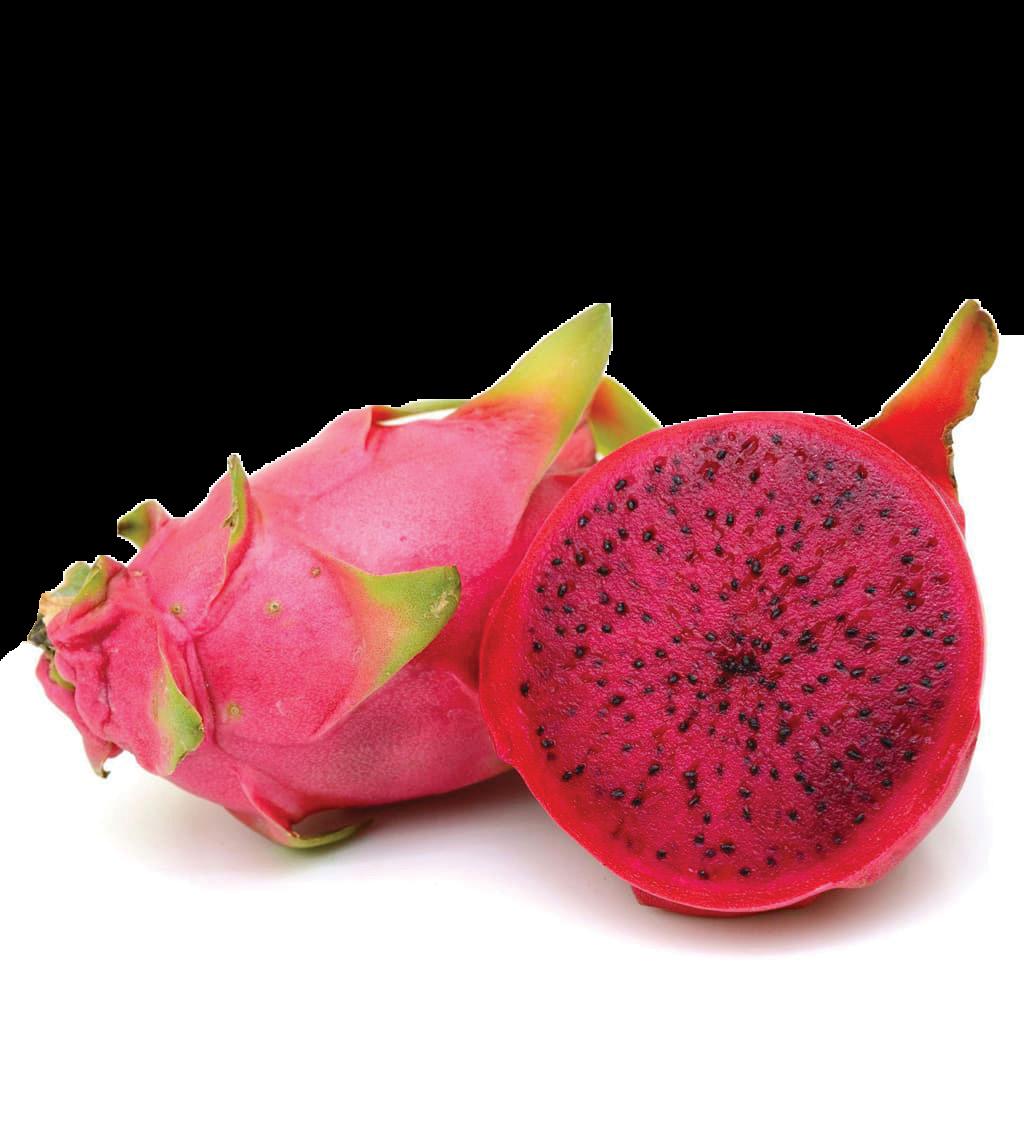
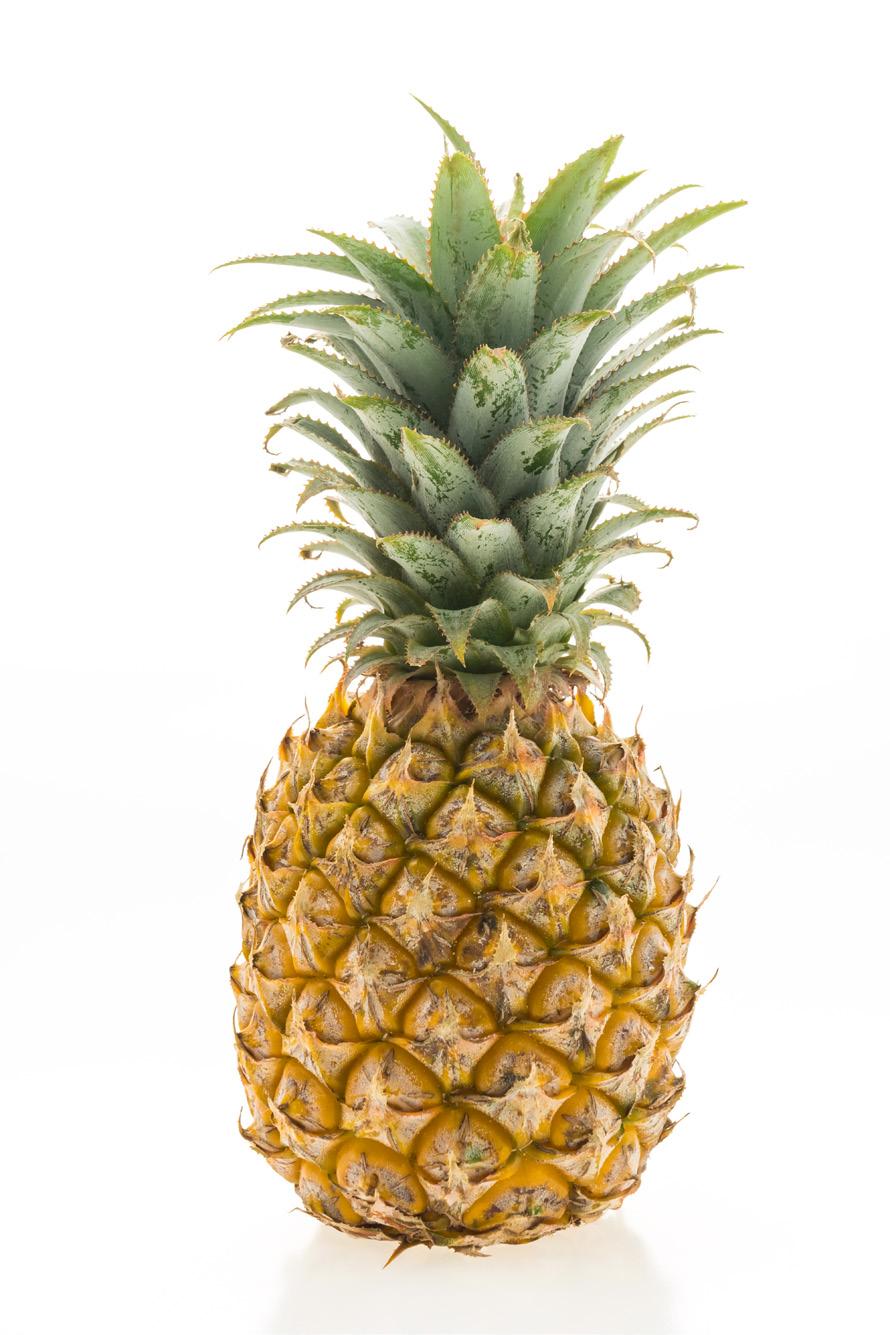
29 Scientist urges caution on treated urea
30 Budgets: Staying in control
SYSTEMS
32 Opinion: Exclusion of exotics from ETS are back in the mix
34 Kicking the nitrogen habit
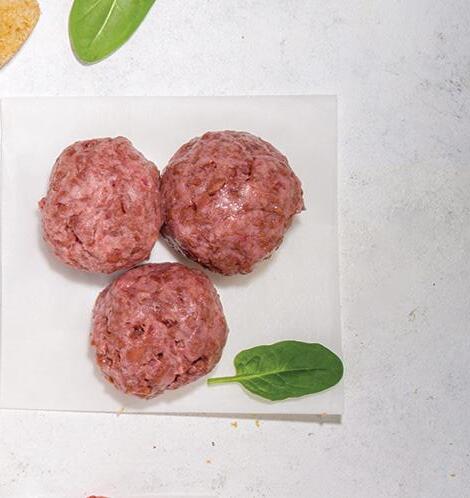
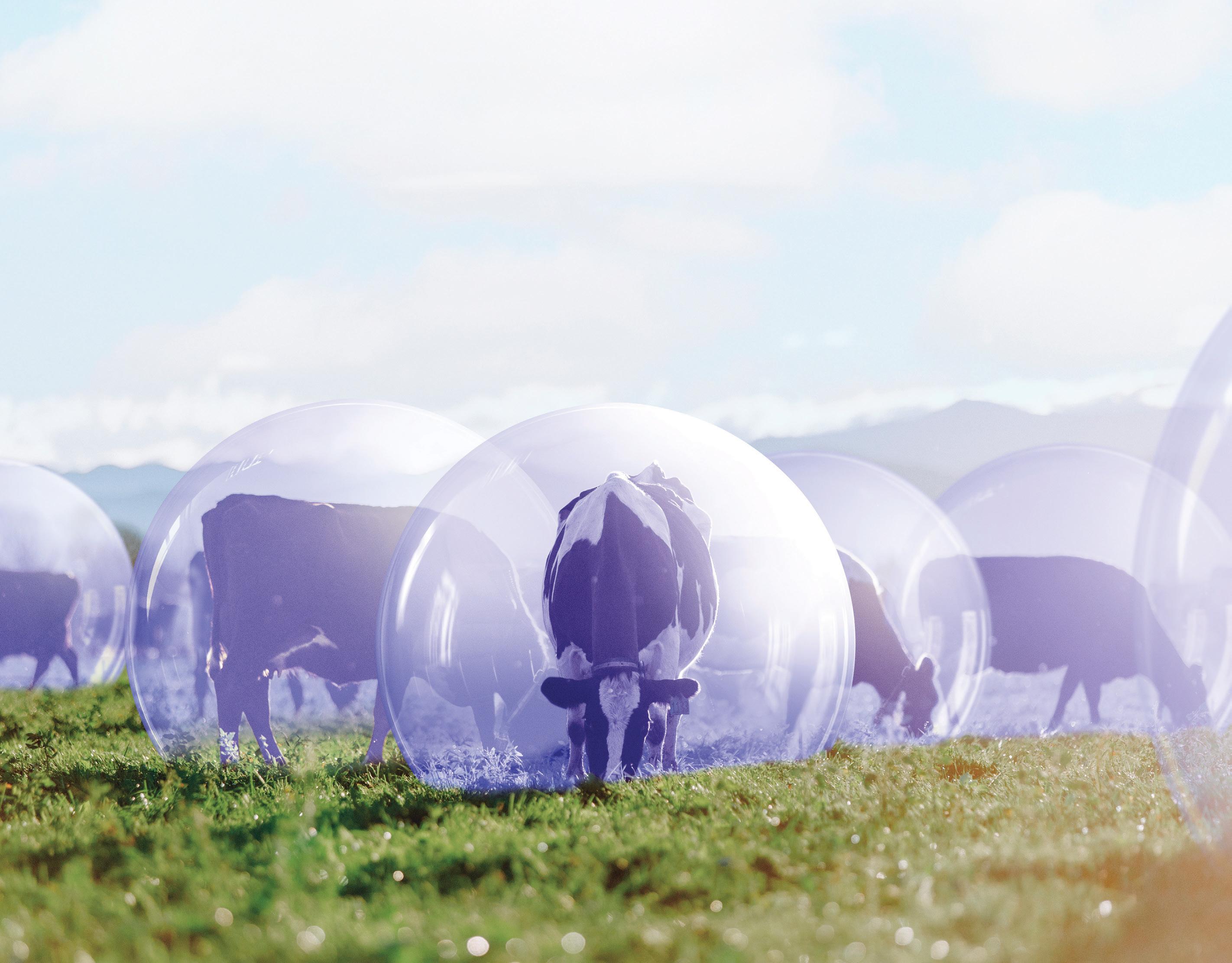
Use Bovilis BVD for 12 months of proven foetal protection1. The longest coverage available.
Exposure to BVD could mean your unborn calves become Persistently Infected (PI’s) - spreading BVD amongst your herd. It is estimated that up to 40% of dairy herds are actively infected with the BVD virus at any given time. The convenience of the longest coverage available along with flexible dosing intervals2 means you can protect this season’s calves no matter when they are conceived.
Avoid an outbreak. Ask your vet about vaccinating with Bovilis BVD or visit bovilis.co.nz

Page
62 Sexed semen key to veal trade
64
65 Here comes the sun(flowers)
86 Loving the science of soil
RESEARCH WRAP
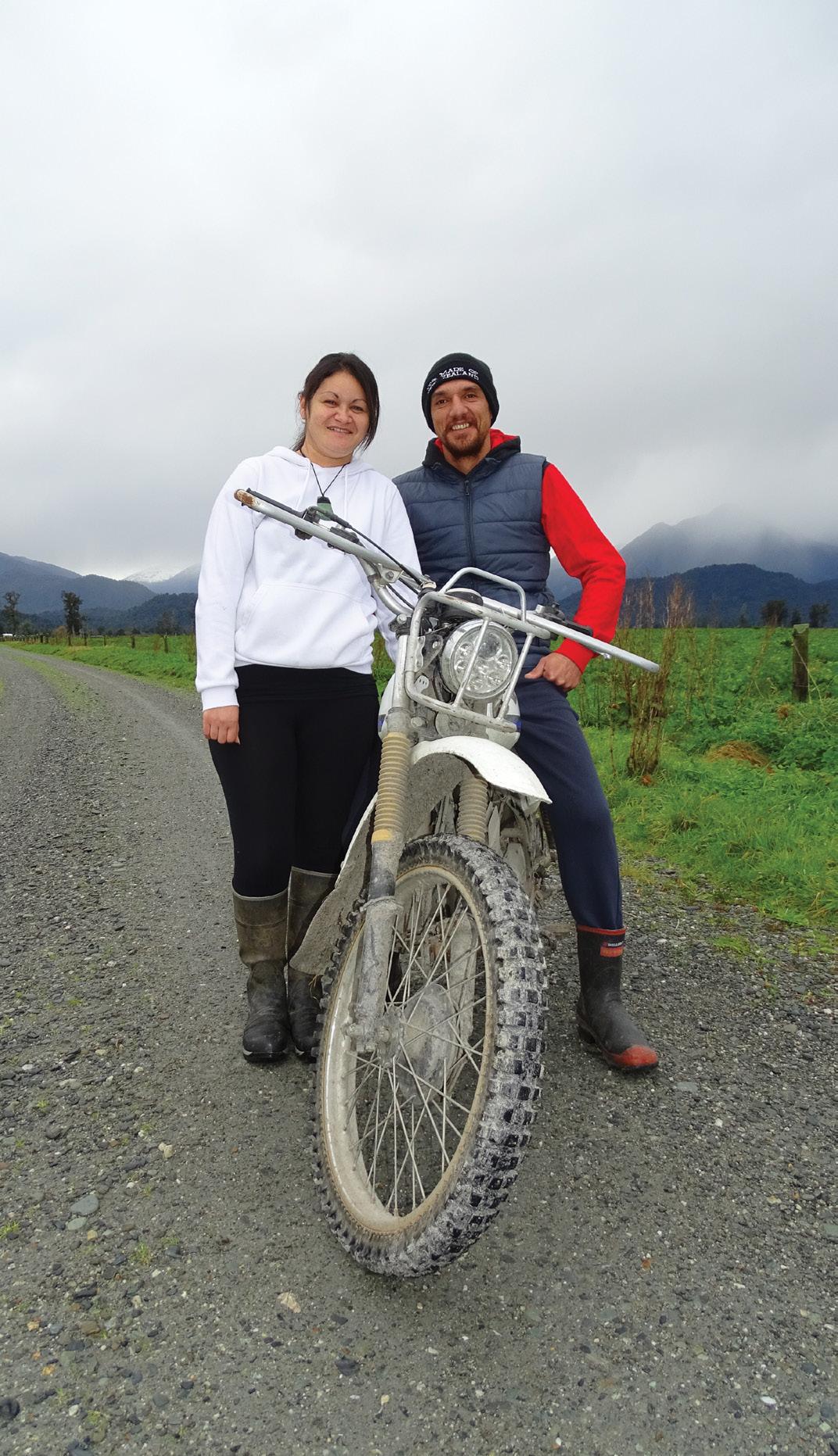
90 Ashley Dene on a health mission
WELLBEING
92 Addressing grief and trauma
DAIRY 101
94 Risk: Gamblers and ramblers
SOLUTIONS
96 Nutrition that stacks up
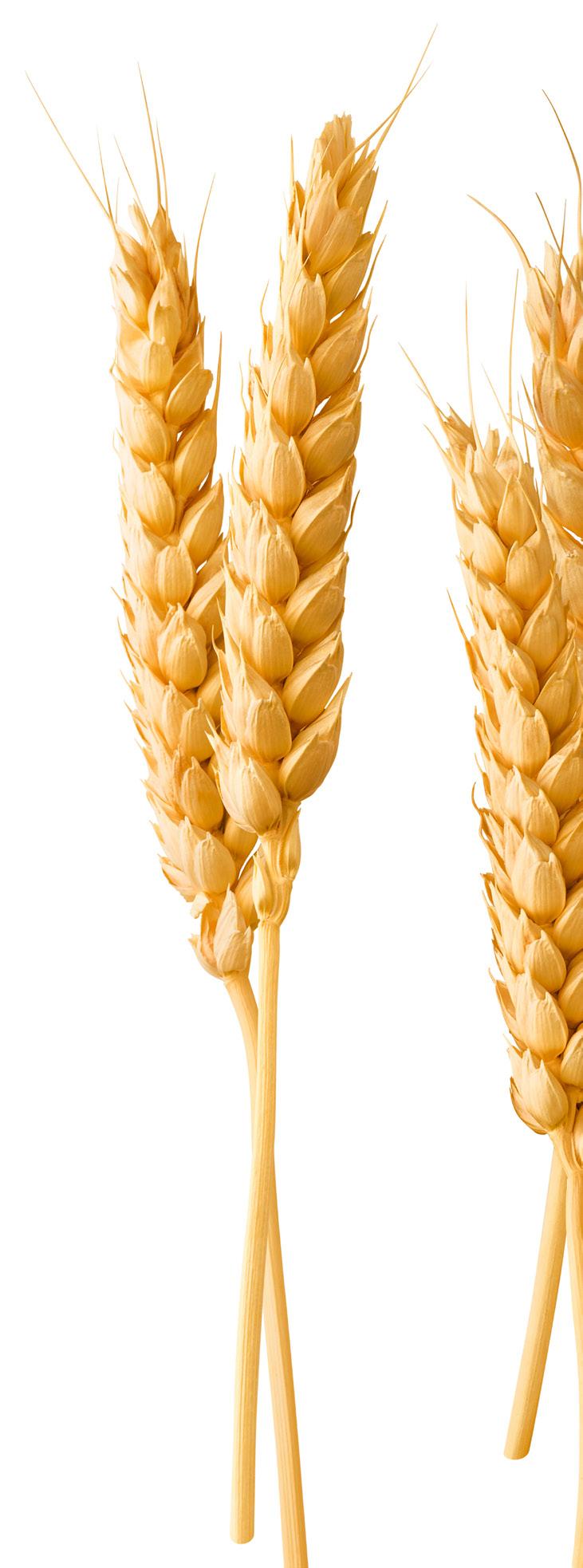


97 Nutrition’s big five
OUR STORY
50 ENVIRONMENT 66

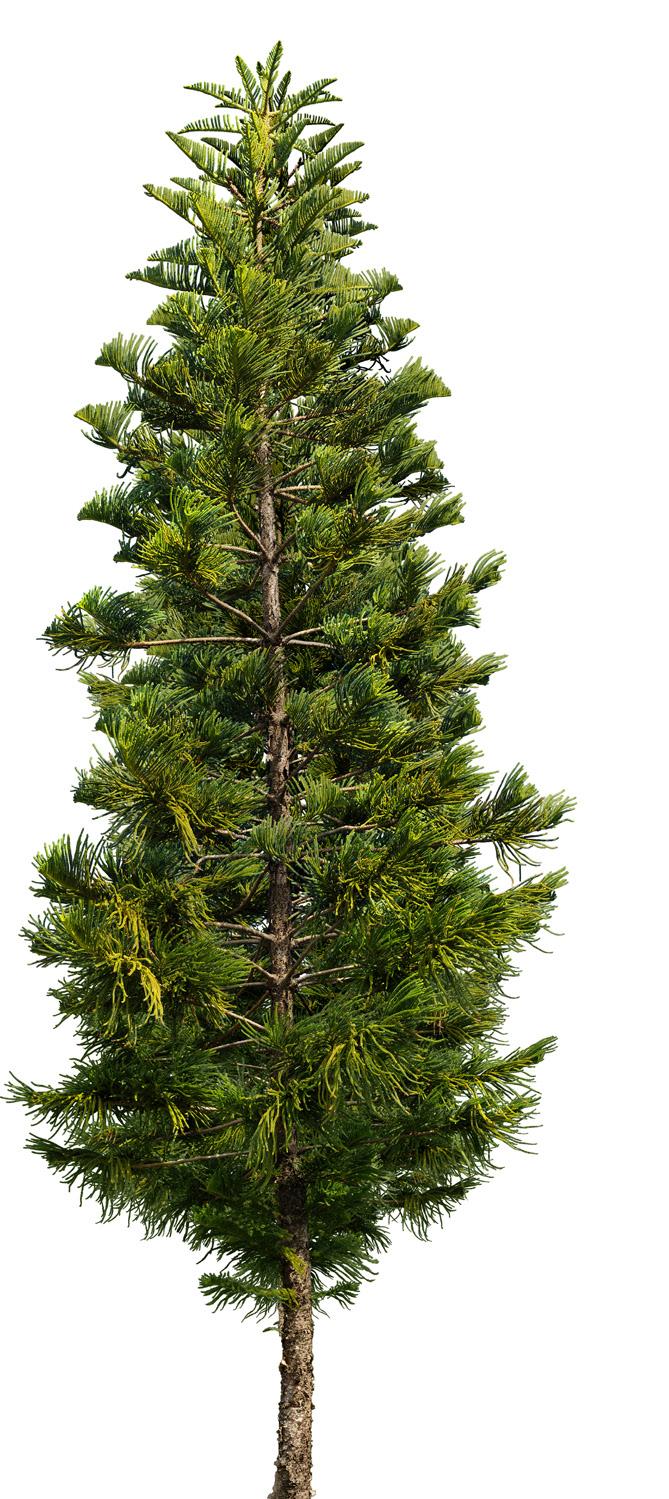
Page
STOCK
76
Vet Voice: Navel care for calves

September 27 – A Pasture Summit Field Day in Taranaki is being held on Nathan and Courtney Joyce’s Manaia Road farm. The field days are hosted by farmers for farmers, with input from dairy sector specialists, sharing ideas and developments on achieving profitable food production from grass and how they are adapting to change. More? visit www.pasturesummit.co.nz
September 27-28 – DigitalAg 2022 is at the Distinction Hotel in Rotorua. The formerly MobileTECH Ag brings together technology leaders, agritech developers, early adopters and the next generation of primary industry operators. To find out more and to register, go to agritechnz.org.nz/event/ digitalag
September 28 – Lincoln University Dairy Farm focus day with a focus on mating, managing costs and inflation. The day begins at 10.30am. Visit www.ludf.org.nz/events.
October 1 – Entries open for the 2023 Dairy Industry Awards. Visit www.dairyindustryawards.co.nz
October 6-7 – The New Zealand Landcare Trust is hosting the National Catchments Forum at Te Papa Tongarewa in Wellington. It looks at water reforms, integrated farm and catchment planning, and how
catchment groups are addressing the climate challenge. For more, visit www.landcare.org.nz/event-item/ national-catchments-forum
October 14-15 - AgFest returns to the West Coast. The event recognises the importance of the agriculture sector to the Coast and includes the latest in farming vehicles, stock care, health and wellbeing, entertainment, fashion and more. The event is being held at the Greymouth Aerodrome. To find out more visit www.agfest.co.nz
October 19 – A Pasture Summit Field Day in Southland is being held on Daniel and Emily Woolsey’s Gorge Road farm. Hosted by farmers for farmers, with input from dairy sector specialists, sharing ideas and developments on achieving profitable food production from grass and how they are adapting to change. For more information visit www.pasturesummit.co.nz

October 30 – Applications close for the first 2023 Kellogg Rural Leadership Programme at Lincoln. To apply, visit ruralleaders.co.nz/kellogg
November 3 – Reprogram – Charge the Brain is a webinar run by ASB in partnership with Dairy Women’s Network. It looks at the neuroscience of attention, memory and energy to help
with busy lives and increasing change. To register go to register.gotowebinar. com/register/1687105359498338318
November 9 – New Zealand Agricultural Show at Canterbury Agricultural Park in Christchurch. Visit www.theshow.co.nz
November 15-17 – The NZ Grassland Association’s annual conference takes place in Invercargill in conjunction with both the Agronomy Society and the NZ Society of Animal Production. A highlight of the conference is a tour to the Southern Dairy Hub. For more information and to register, visit www.grassland.org.nz
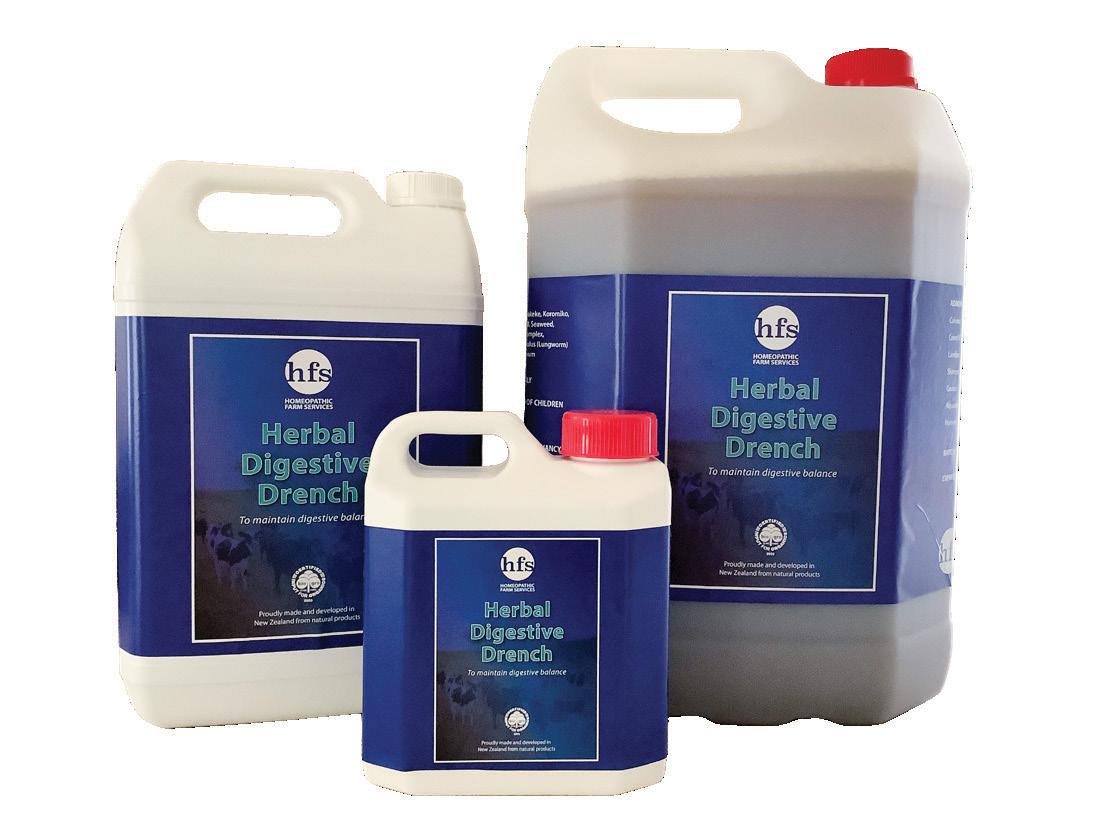
November 17 – Owl Farm is holding a focus day where it will present seasonal results to date. For more information about the Waikato demonstration farm, go to owlfarm.nz
November 18 – The supreme winner of the NZI Rural Women NZ Business Awards will be presented in Wellington. For more about the awards go to ruralwomennz.nz/nzi-rural-women-nzbusiness-awards-2022
November 30 – December 3 –Fieldays is a summer event this year at the Mystery Creek Events Centre near Hamilton. For details visit www.fieldays.co.nz
When everyone around you is zigging, should you zag?
Staying strong onfarm portrays an innovative programme run by Reporoa dairy farmer and cancer survivor Sarah Martelli, who helps other women find their balance and build strength and wellbeing to be the best they can be.
Strong Woman is an online community for women to work on their fitness with a workout to do at home, find quick and easy healthy recipes, goal planners and to connect with other women on the same journey.
Her philosophy is to help women create healthy, sustainable habits around moving and feeding their bodies and their families.
If women can prioritise their own health and fitness, they can inspire their partners, their children and their community around them, Sarah says (p82).
(p42). We also cover the Heald family of Norsewood (p52) who have transitioned to organics, OAD philosophies and are enjoying the less intensive more resilient system they have moved to, along improved profitability.
She is an inspirational woman creating a moment of lift for many women.
You might wonder at the sense of thinking of diversifications on your farm at a time of record high milk price, but on the other hand, maybe now is the best time to do it.
In this issue we take a look at the regenerative agri journey some NZ farmers are already on, and that the government has signalled they want others to join in on, in our Special Report.
At a time of good income you have good cashflow to invest in a diverse income stream and the headspace to think strategically about how it might help in the future, when the milk price has its next inevitable cyclical downturn.
And for out-ofthe-box thinking, Canterbury company Leaft has come up with a diverse income stream from plant protein that would also produce a low N food source for stock.
There is more research to be done in the NZ system context, says MPI’s chief scientist John figure out what will and won’t work, but he encourages farmers to engage and learn more, and to embrace regenerative as a verb - saying all farmers could be more regenerative, more resilient, lowering and building carbon storage.
The regen debate has divided the farming community in a big way - many scientists are affronted that NZ would need regenerative methods from overseas countries with highly degraded soils - would that then infer that our conventional methods were degenerative?
Of course many of the onfarm side hustles we have uncovered in our Special Report this month were established not just for reasons of having a diverse income stream. The subtropical fruits being investigated in the sunny Northland have come about because the climate has changed so much that these products are now viable, same with the investigations into growing avocados and kiwifruit, along with other innovative plants in Taranaki.
They say the methods won't work, and that research has already shown that, and also our farmers are already following regenerative practices. Others say that the methods are not prescribed and each farmer can take out of it what they want. It has been called a social movement rather than a science and the claimed benefits of improved soil and stock health and building soil carbon through diverse species, use of biological fertilisers and laxer and less frequent grazing practices along with less nitrogen is something that resounds emotionally with many.
Sheep dairy is touted as having a much smaller environmental footprint, and the grain crops being grown on Southland dairy country both make farmers more self contained and work to mop up excess N from the soils at critical times of the year (Pg48).
We ran out of room to tell of all the onfarm diversifications there are out there - I would love to hear of any more you have so we can keep the conversation going. A cabin on a hill? A glamping site by the river down the back? Native tree nursery? Truffles under a grove of hazelnut trees? Or a back paddock of walnut trees? The opportunities are endless. Sentience is a word that many farmers may not have heard, but now it’s been combined into the overhaul of the animal welfare regulations you need to be aware that it’s the ability to experience feelings and sensationslike pain and sadness. Accepting that animals feel pain and discomfort means we need to actively treat them to minimise those feelings (Pg76).
We have taken a snapshot of thinking by scientists in MPI and DairyNZ (p46) and portrayed what farmers using the practices are finding, including ongoing coverage of the comparative trial work by Align Group in Canterbury
If you are interested in getting into farm ownership getting out but retaining an interest, read about Moss’ innovative idea for a speed-dating weekend potential partners (p11). We think it could be
@YoungDairyED
@DairyExporterNZ
@nzdairyexporter
JULY 2021 ISSUE
In the next issue: October 2022
• Special Report: Farming/business investment – if you are starting out or bowing out.
The glimpse at veal farming in Denmark shows how strategic mating and clever marketing into established world markets for veal could turn an undervalued bobby calf resource into a profitable beef farming venture (Pg62).
Others have planted areas of their dairy operations in trees, for amenity, carbon and production timber and others have harnessed the abundant local water resource into hydro power to mitigate rising electricity prices and sell back to the grid.
The Lincoln University study comparing three methods of calf rearing, including leaving them on mum for six weeks and a wean time of 10 weeks, is not looking at sentience - but the more practical aspects of growth rates, passive immunity, rumen development and lifetime performance alongside monitoring the mums for differences in a range of production and health measures. (pg82).
There is always interesting research going on, enjoy the read,
• Milking it - looking at all the milks.
• Wildlife onfarm
• Ahuwhenua winners
• Going organic to get to Carbon Zero
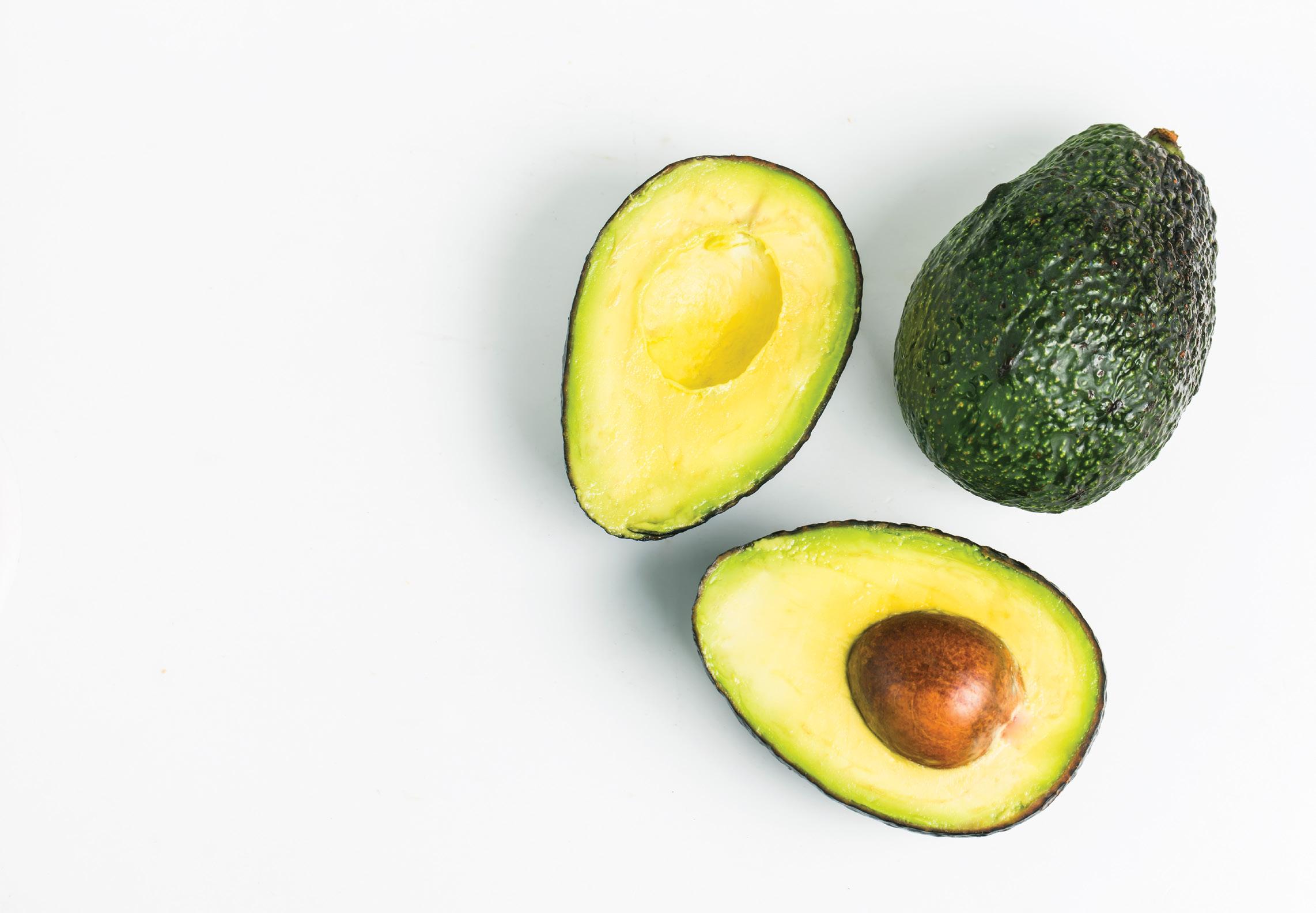
• Sheep milking conference coverage
- Tongariro farm.
• New programmes at Dairy Trust Taranaki.


New Zealand Dairy Exporter’s online presence is an added dimension to your magazine. Through digital media, we share a selection of stories and photographs from the magazine. Here we share a selection of just some of what you can enjoy. Read more at www.nzfarmlife.co.nz
Young Country is pleased to announce that episode three of From the Ground Up is now live on all of your favourite podcast providers.
NZ Dairy Exporter is published by NZ Farm Life Media PO Box 218, Feilding 4740, Toll free 0800 224 782, www.nzfarmlife.co.nz
Editor
Jackie Harrigan P: 06 280 3165, M: 027 359 7781 jackie.harrigan@nzfarmlife.co.nz
Deputy Editor Sheryl Haitana M: 021 239 1633 sheryl.haitana@nzfarmlife.co.nz

Sub-editor:
Andy Maciver, P: 06 280 3166 andy.maciver@nzfarmlife.co.nz
Reporters
Anne Hardie, P: 027 540 3635 verbatim@xtra.co.nz
Pareka farm has gone through a significant change in farm systems this season with the aim of cutting N losses and methane emissions, paving the way and creating learning opportunities for others.
Take a look:
https://www.youtube.com/ watch?v=SV9t9tqB3Kc


- Succession Series Podcast
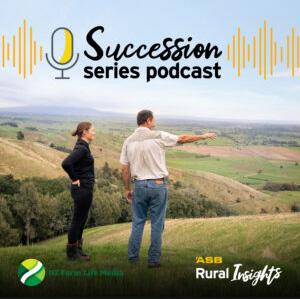
Episode 3: The Mangamarie Sunflower Field, established by farmer, photographer and mum, turned sunflower entrepreneur extraordinaire, Abbe Hoare, is turning heads for all the right reasons.

Episode 2: Amanda King founder of By The Horns. They say you should never work with children or animals, but By the Horns photographer Amanda King has carved out a niche for herself doing exactly that.

Episode 1: Delwyn Tuanui from The Chatham Island Food Co about how he chased his dreams from the ground up.
We love highlighting positive stories of young agri-innovators chasing their dreams Listen to From the Ground Up: nzfarmlife.co.nz/podcasts-2 or scan QR code

Anne Lee, P: 021 413 346 anne.lee@nzfarmlife.co.nz
Karen Trebilcock, P: 021 146 4512 ak.trebilcock@xtra.co.nz
Delwyn Dickey, P: 022 572 5270 delwyn.d@xtra.co.nz
Phil Edmonds phil.edmonds@gmail.com
Elaine Fisher, P: 021 061 0847 elainefisher@xtra.co.nz
Claire Ashton P: 021 263 0956 claireashton7@gmail.com
Design and production:
Lead designer: Jo Hannam P: 06 280 3168 jo.hannam@nzfarmlife.co.nz
Emily Rees emily.rees@nzfarmlife.co.nz
Partnerships Managers: Janine Aish
Auckland, Waikato, Bay of Plenty P: 027 890 0015 janine.aish@nzfarmlife.co.nz
Welcome to the ASB Rural Insights
- Succession Series podcast, where we’re talking about farm ownership transition from all sides. Thanks to the ASB Rural team for partnering NZ Farm Life Media on this four-part series. Each week Angus Kebbell will be profiling farming families, talking to experts from the advisory sector and investigating new opportunities for farmers thinking about diversifying their farming business. When it comes to ‘what’s next’ for the farm, there’s a lot to think about, so we aim to share success stories, provide useful tips and help you understand more about the many facets of succession planning in the food and fibre sector today.
To listen:
https://nzfarmlife.co.nz/podcasts-2/
CONNECT WITH US ONLINE:

www.nzfarmlife.co.nz
NZ Dairy Exporter @DairyExporterNZ
NZ Dairy Exporter @nzdairyexporter

Sign up to our weekly e-newsletter: www.nzfarmlife.co.nz
Tony Leggett, International P: 027 474 6093 tony.leggett@nzfarmlife.co.nz
Angus Kebbell, South Island, Lower North Island, Livestock P: 022 052 3268 angus.kebbell@nzfarmlife.co.nz

Subscriptions: www.nzfarmlife.co.nz subs@nzfarmlife.co.nz
P: 0800 2AG SUB (224 782)
Printing & Distribution:
Printers: Ovato New Zealand
Single issue purchases: www.nzfarmlife.co.nz/shop
ISSN 2230-2697 (Print)
ISSN 2230-3057 (Online)
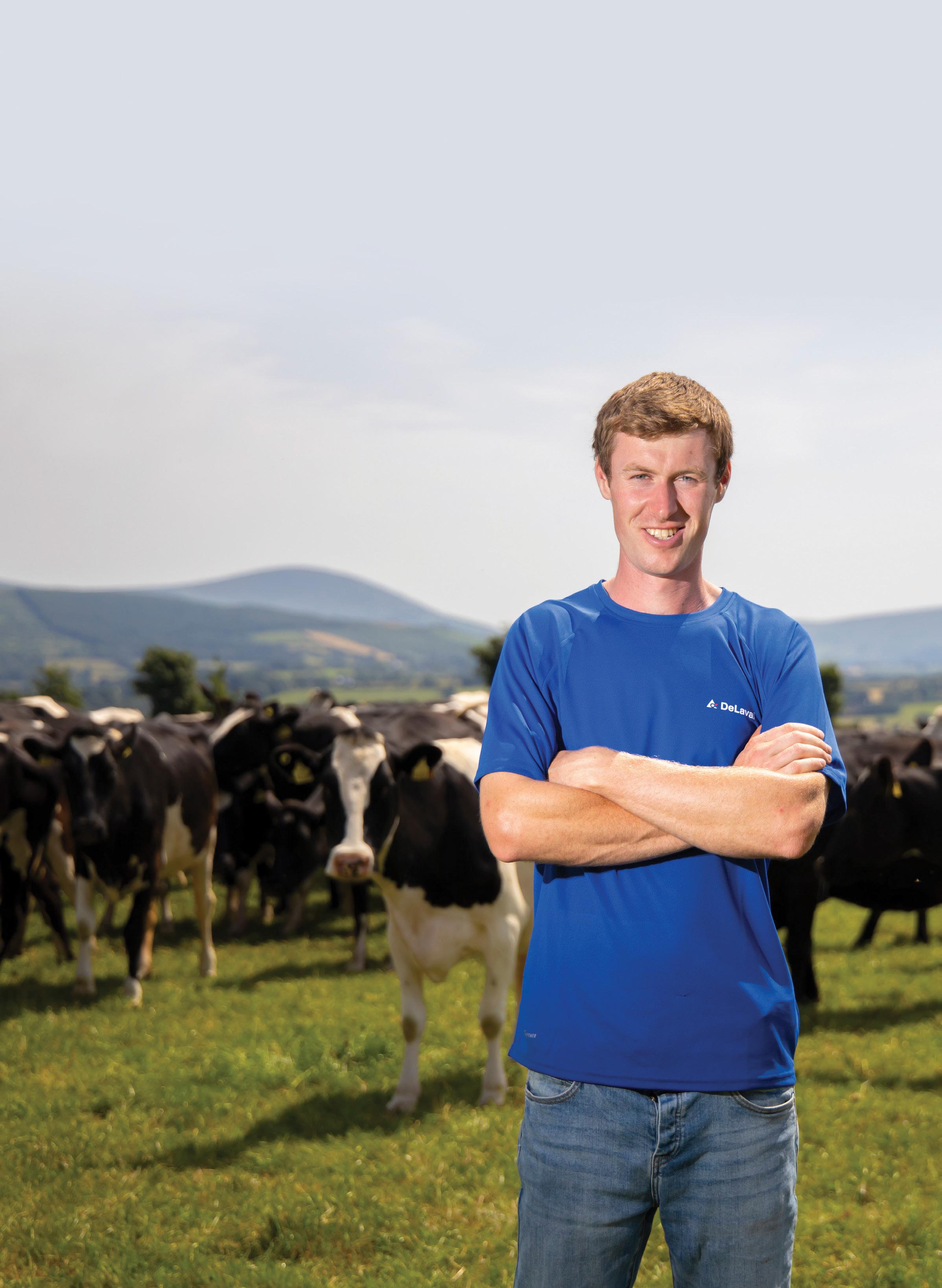

One thing we love about dairy farming is the amazing rural community that backs it. You would be hard-pressed to find any other sector that has such a cohesive and strong network of support behind it.
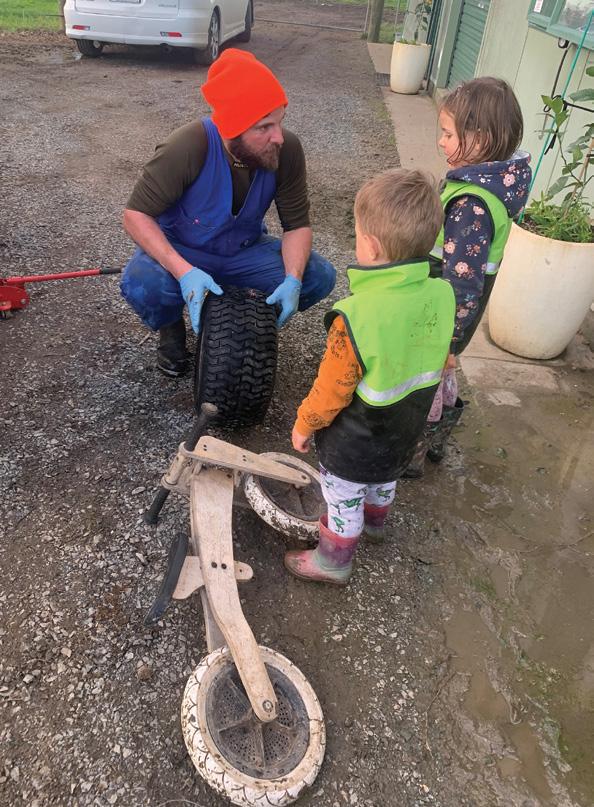
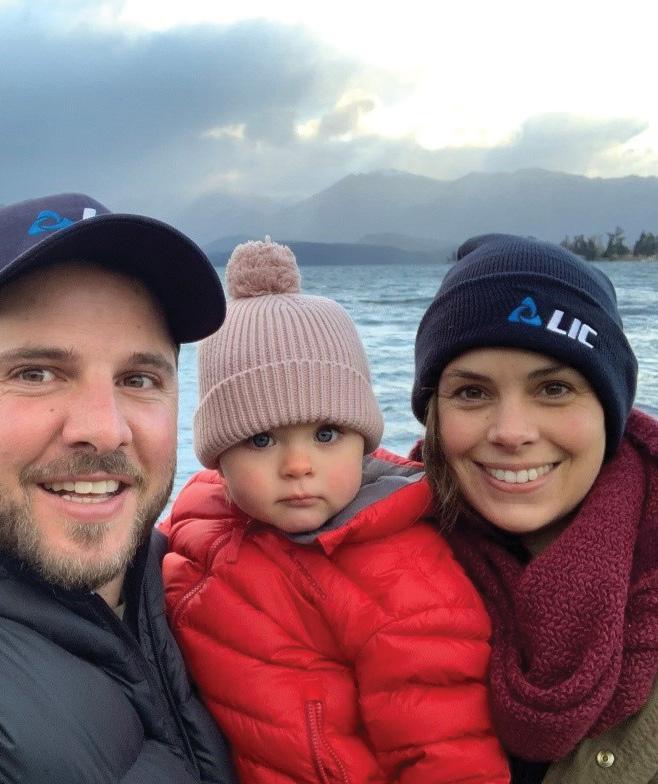
Here in the Waikato, it has been a hard slog - five months of drought, autumn skipped, and straight into winter and floods. Things haven’t really improved since our last article. Pasture is something we are still squinting to find. Rather than dust it’s now mud, inflation is worsening, interest rates keep rising, and expenses are still out of control. Milk production is also down despite our best efforts.
But the light behind this has been our rural community. And getting support during these hard times is important. Our rural community has been amazing, and we want to acknowledge them.
We have been grateful to the gestures of our rural providers who have turned up with food in hand and forced us to have a breather over a coffee.
We are grateful to the relationships that go beyond the farm gate.
To those in our rural network who take the view that a problem shared is a problem halved.

To our rural suppliers – namely PGG Wrightson in our case – who bend over backwards to get us the right product when we need it and take the time to understand our farming business.
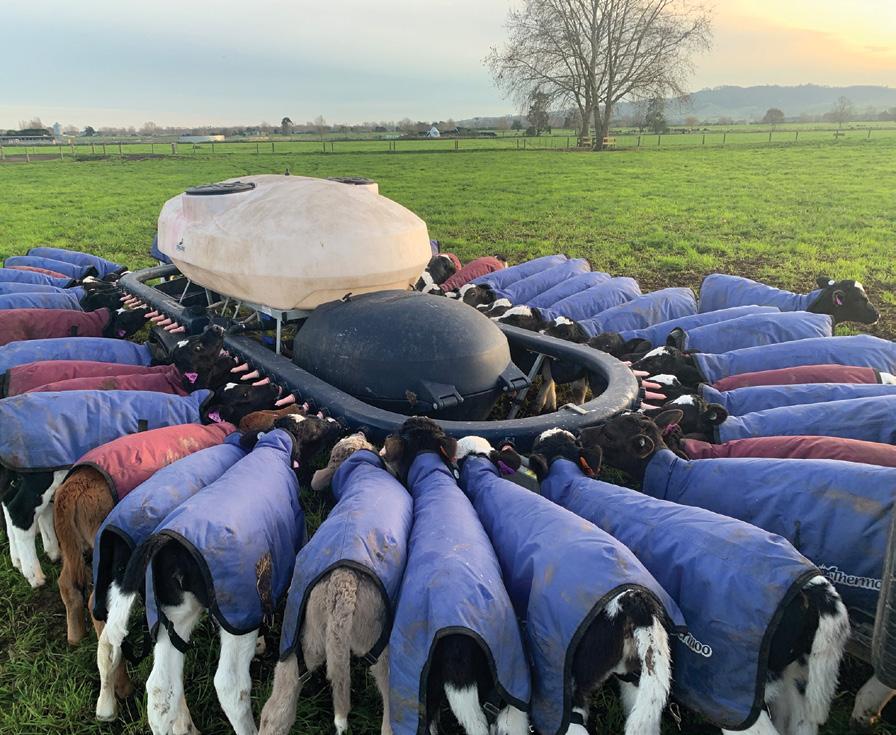
To LIC, who gave us the chance to have a day and night away from the farm and get an understanding of how they are moving our agriculture industry forward.
To our rural consultants – namely DairyNZ and BakerAgwho are on hand to provide resources when we need them and an impartial view of how the business is running.
To our business partner and farm owner, who gets that things are hard going for us as sharemilkers at the moment and is willing to be flexible on our contractual agreements. The big one was allowing us to bring our yearlings home to graze due to a feed shortage at the block they were at.
To our farming peers – that unspoken agreement that we are all in this together and they are going through it also. Watching out for each other is something you would struggle to find in any other sector. While we have our individual goals, we have the same collective goal to see each other succeed.
So, while things are likely to get worse before they get better, reach out to your rural network. They are on hand to support you. You are not alone.
Keep your finger on the pulse with your financial budgets. While it is easier to put your head in the sand, in the long run keeping abreast of your financials will give you the time to make good decisions.
We are constantly reviewing our budgets and identifying where the fat is that will ultimately be trimmed out if we must. We feel at times we are taking one step forward and two steps back; the most recent has been breaking a twoyear hiatus and contracting palm kernel while we wait for the pasture to come back on board. That’s farming – unpredictable as ever. But we have a great community backing us and we are proud to be part of it.
Kirsty and Nic Verhoek give credit where it’s due to the people of their local network.Cosy calves in their Thermoo covers from Antahi. A lesson in puncture repairs.
Getting support during these hard times is important. Our rural community has been amazing, and we want to acknowledge them.
Dairy Exporter’s ‘50 years ago’ feature has John Milne reminiscing about the way things were done.
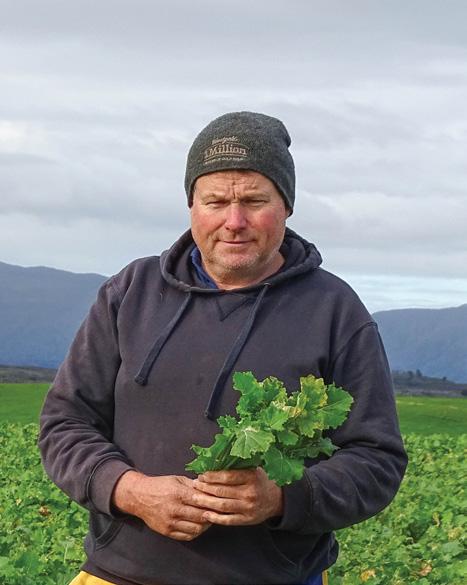
This industry is definitely evolving year on year. We have our first year of N reporting completed for our N Cap for the regional council, our GHG (greenhouse gas) number has been calculated through Overseer.
Where this information takes our farming operation is yet to be decided and determined.
’50 Years Ago’ on the back page of the NZ Dairy Exporter, it is one part of the magazine I am always interested in. One of the articles back in the July issue was regarding the ‘Induction Trials’. It just shows how things come and things go.
Obviously we weren’t farming when they started things 50 years ago, but I can remember using ‘The jab’. It started in 1989 for me, while going through one of the toughest springs in ’88, many had seen and probably not seen since then.
I can’t remember how much rain we had on the family farm that season, but clearly remember it just never seemed to stop. Calving came around in August ‘89 and we had an extremely stretched-out calving like we had never seen before.
‘The jab’. A couple of seasons before we stopped, we had to increase the percentage of replacements we kept.
Culling began and in the first couple of years it was amazing to see how many had been kept in the herd that probably shouldn’t have been.
Three years later and the culling had settled down for that reason, our next target was non-cyclers. It was a tougher decision than stopping ‘The jab’, it was a good five years till that decision settled down. Sticking to our guns on the direction we had taken, it was and is tough to watch some good cows go off to greener pastures, but as I said: you have to stick to your plan.
‘Genermate’ was another system we stuck with for a number of seasons as well, ‘Syncro’ the heifers for the readers who haven’t heard of this before.
The idea was to get the high BW calves from the highest genetic animals in your herd, in a condensed calving spread. We had quite good success with this and achieved what it was set out to do. The downside was with a slightly longer calving spread for the animals that did not hold to the ‘Syncro’. That has all been stopped now as we have gone to a less-intensive system and only pick yearlings for AI if required.
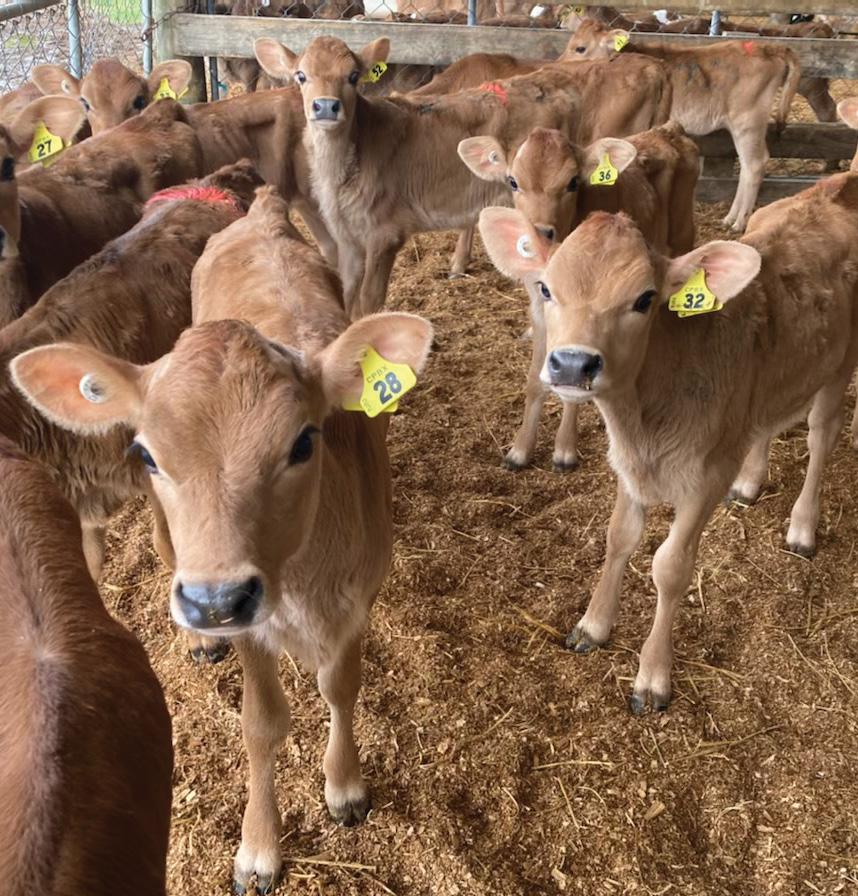
So ‘The jab’ began for a genuine reason. From then on it became common practice. Year on year, a similar percentage each year, only small numbers but we thought it was beneficial. In the background we had unwittingly started a problem.
It wasn’t until the numbers and the herd records started showing that we had been fooling ourselves. So we stopped
So this season is well and truly underway. Our calving spread is pretty much the same year on year. First calvers, calving in a timely fashion, mixed age cows heading down the same constant track as usual. It matches our growth and early start to calving every year.
Whether this evolves into changes will probably depend on who’s in charge further down the track.
I can’t remember how much rain we had on the family farm that season, but clearly remember it just never seemed to stop.“More evolution. Gone are the days of dehorning. Now sedation and disbudding, checking for extra teats on calves, castration of steers all while they are sound asleep.
In the midst of a challenging season, George Moss managed to take a break and go fishing.
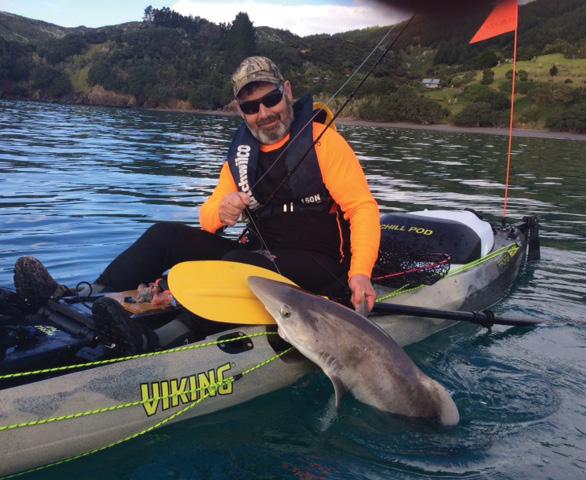
As I write it is p….. down with rain but mercifully it is very warm and has pulled the soil temps back up to 13-ish.
Winter has been and still is challenging with soil temps of 12C at the start of July and gradually decreased to lows of 4C about a week back due to a couple of “pearler” frosts. We grew more grass in June and July than we have for August. A period of extreme wet in late July required us to stand off cows repeatedly. Grass is very short, and cows are getting silage and palm kernel to fill the gap.
The winter project has been to paint the inside of both farm homes, new floor coverings where required and a new kitchen unit on the second farm, a DVS system at home, all of which chews through the cash, but hopefully maintains or improves the value of the dwellings.
Accounts are back from the accountant showing a big increase in costs but offset by the good milk price despite our fixed milk price positions.
the risk of tax rates increasing as well. We are comfortable with the decision. We managed to get away for four days just prior to the start of calving and I managed to get the kayak out on some gloriously still days and catch a good feed of gurnard, kahawai and a large snapper that went flip flop on my legs and left. Out on the water alone with just sea and sky and hopefully a few fish is my happy place and I yearn to be there now. Kayaks have a silence and a simplicity that is totally relaxing.
Like a great many farms, we are short staffed on the home front and yours truly has ended up back in the shed for the first few weeks. We have employed a young guy (16-yearold) drive in to assist in the shed and do the plant and yard washes. He is keen, pleasant and tries hard, but it is a lot to take in if you have not been exposed to dairying before.
With inflation running amok, we are fortunate to be growing our own leafy greens and still harvesting the odd tomatoes and have a freezer full of vegies/ fruit and meats. We are truly fortunate to be living on a farm with our own food. Hopefully, the onfarm inflation will be offset by product prices – in theory there should be a natural hedge.
Just had an interview with a couple of delightful Wintec students who are working on “circular economies” and their role in solving the “big” problems of the planet so that we have a thriving and enduring humanity.
The numbers are being entered into Dairybase as I write, and this will give us definitive indication as to our performance. The full impact of cost increases will be felt this season, with interest being the biggest mover despite significant debt reductions.
Rightly or wrongly, we have used a mixture of Farm Income Equalisation to take the spikes out of the tax bill. There is an inherent assumption that either due to costs increasing more than income or a structural change, our incomes will fall in the next three to five years. There is also
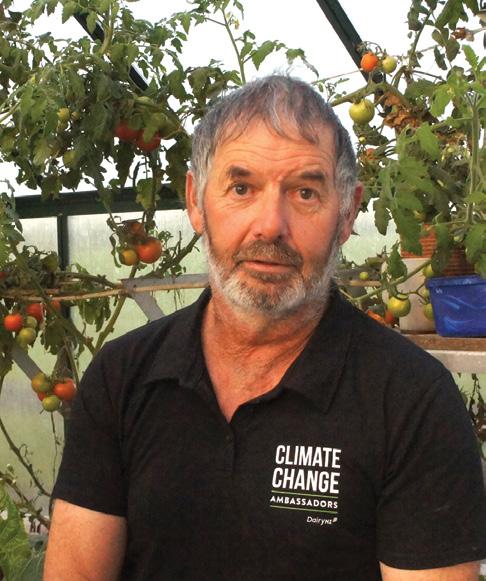
Given as a society, the paradigms are leaving us more stressed and divided. I pose the question of how do we move our value system from “standard of living” to “quality of life” and what does that look like?
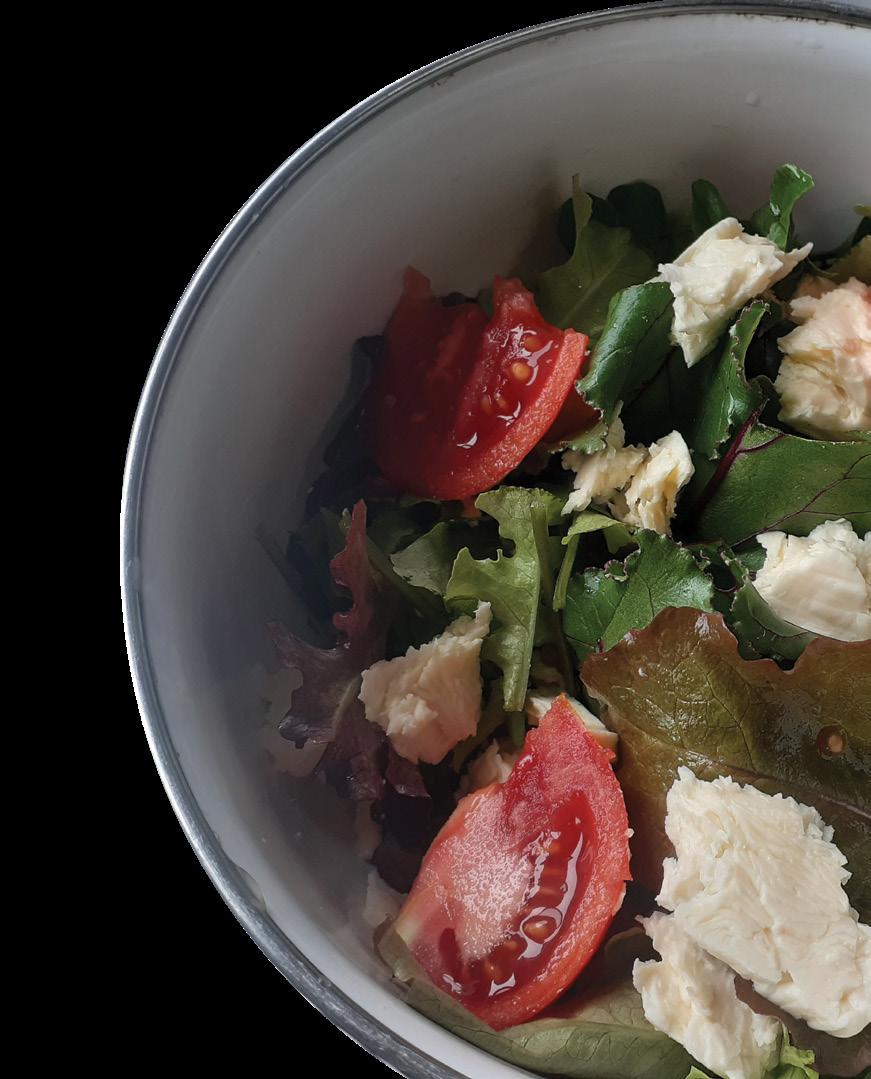
Out on the water alone with just sea and sky and hopefully a few fish is my happy place.Right: The Good Life: Homegrown lettuce and tomato, from George and Sharon’s hydroponic glasshouse setup, and homemade feta cheese.






ecent regulatory moves by other countries to limit non-traditional food producers hijacking terminology associated with animal protein could soon be considered in New Zealand.
An update of the joint Australia New Zealand Food Standards Code has been proposed across the Tasman with implications for shop shelves in NZ, based on a sympathetic assessment of meat industry claims of unjust product labelling.
This might instinctively be seen as an early victory for those in the business of producing animal protein the traditional way. But when considering wider investment and government policy trends favouring the expansion of plant-based food production, not to mention consumer indifference to being ‘duped’ by vegan mince and the like, any such change in labelling laws might yet be a hollow victory for those wanting the supremacy of conventional sources of protein restored and unopposed.
Calls for bans on ‘fraudulent’ meat and dairy category branding have been made for some time now, but recent changes to labelling laws offshore is creating a precedent for others to follow. France led the way when it amended its Agriculture legislation to prohibit any product based on nonanimal ingredients from featuring traditional meat and/or dairy
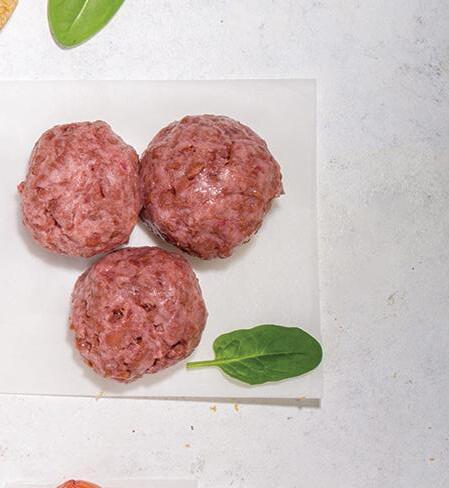
The ban is scheduled to come into force in October. Elsewhere, Turkey has banned the production and sale of vegan cheese alternatives that look like traditional dairy cheese and the Belgian government, following France’s lead, has been

Internationally, regulators are tussling with the issue of labelling traditional animal-based foods and their plant-based reports.
working on guidelines that would make it more difficult for vegetarian and vegan plant-based foods to refer to animal products.
Rule changes in far-off lands might otherwise be given cursory attention but this year a Senate committee across the ditch released findings on an inquiry into the state of meat category branding. It recommended, among other things, a review of the Food Standards Australia New Zealand (FSANZ) Food Standards Code be made to limit the use of named meat, seafood and dairy category brands. The committee shared concerns with the meat industry, which had agitated for the review, that plant-based protein manufacturers are dishonourably using terms that animal protein sectors have invested heavily in to distinguish their own products.
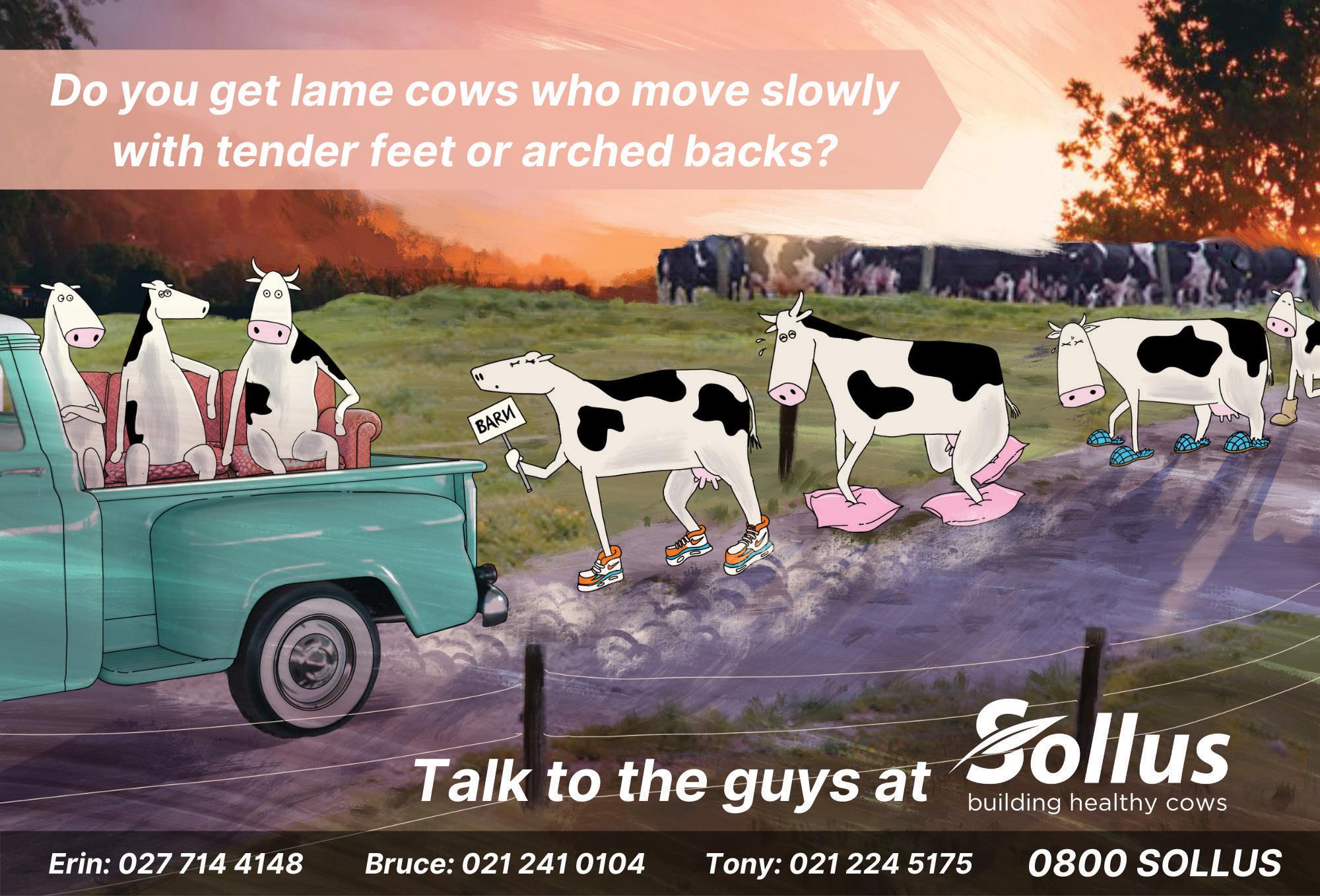
Wheels turn slowly in mammoth regulatory reviews, however the FSANZ Act is being modernised (the process began in 2020) and a Food Code change could

be contemplated as part of this. This could be good news for those who believe that not only have the meat and dairy industries been robbed by plant-based newcomers, but that tighter rules will reinvigorate the appeal of animal protein.
It sounds like common sense finally prevailing. But... in all cases listed above, legislators have been stymied by challenges from plant-based manufacturing interests.
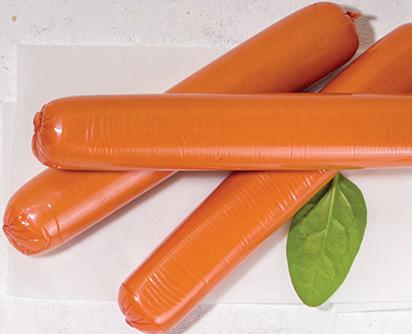
In the United States, advocates of the plant-based food sector have successfully prevented new rules applying in some states, while some high-profile producers of alternative meat products (such as Tofurky) have been victorious in fighting labelling laws. In 2020 the European Union tried to ban terminology such as ‘burger’, ‘steak’ or ‘sausage’ in relation to plant-based products, however this legal amendment was not supported by the European Parliament. And in July this year,
France’s highest court halted its new law due to be enacted following a request from an alternative protein association.
All this speaks to the thorny challenge of balancing consumer interests. On one hand there is the rightful interest in protecting consumers from misleading labelling. On the other there are equally compelling arguments insisting consumers should have the freedom to access food in whatever form they demand, and that it is not obstructed by anti-competitive regulations.
The recent experience of NZ feta cheese manufacturers being told they won’t be able to label their product as such when
the NZ-EU free trade agreement is ratified comes to mind. It is worth noting there is no research in NZ that suggests consumers are feeling tricked by plant-based mishmash being labelled as vegan mince, for example. A spokesperson for the NZ Food & Grocery Council says it has previously discussed the issue with FSANZ and the Commerce Commission.
“There’s no evidence so far that consumers are being misled. A consumer purchasing an Impossible Burger is unlikely to believe it’s genuine meat. No doubt issues like these are open to debate, but words such as ‘burger’ and ‘steak’ could be seen by many as generic words now commonly used by consumers to describe plant-based and meat products.
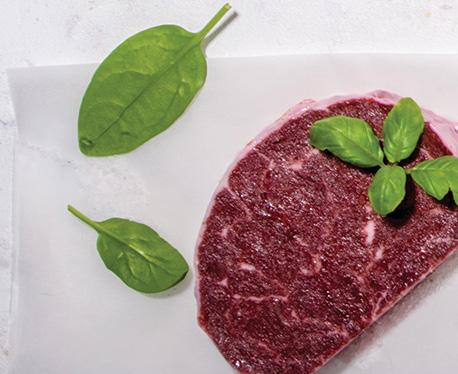
our fledgling modern foods sector presents nearly unlimited opportunity to participate in the food revolution over the coming decades.”
And while the Australian Senate committee review referred to earlier was quite forthright in the need to bring plant-based producers to account for unfair use of animal protein terminology, in the very next breath it recommended that Australia’s Department of Agriculture, Water and the Environment “support investment opportunities into the plant-based alternative product sector’s manufacturing infrastructure to foster competitiveness and market opportunities”. It also advised “the plantbased protein product sector is supported to contribute to the Ag2030 goal of achieving a $100 billion agricultural sector by 2030.”
making sure investment in the science of cellular agriculture has a focus on what the consumer wants, and this means delivering products with functionality. But it doesn’t mean the person who will fill the role will be tasked with developing a product to take to market. It’s about generating more understanding about the processes and science behind the technology.
It’s difficult to dispute the fact that new, viable food production systems have evolved and there are credible reasons to believe they will continue to grow, and in so doing, threaten the growth prospects of conventional food production.

“As far as we could see from the Australian inquiry, there is no evidence of confusion. Both countries have legislation to deal with misleading representations in the Food Acts and the Fair Trading Acts. We doubt there is the basis to develop a standard along the lines proposed.” We’ll see.
Meanwhile, the momentum in the protein debate that may or may not be edging towards the protection of animal protein interests at the level of the supermarket shelf, is not being replicated at the production investment level, nor it could be said at the level of governmental policy.
The Ministry for Primary Industriesaligned primary sector think tank Te Puna Whakaaronui, which this year pitched to reframe NZ’s food sector opportunities, insisted “continued development of our natural food system must not come at the exclusion of New Zealand’s participation in the fast and accelerating world of modern foods, defined as plant-based, fermented and lab-grown products.” It also stated “Although our natural food systems are experiencing record financial returns, this is time-limited … In contrast,
As with challenges associated with balancing consumer interests, this speaks to a difficulty in managing the arguably contradictory interests of plant-based and animal protein producers. Like Australia, that tension is visible in NZ. A recent example was seemingly conflicting messages delivered by AgResearch. At the end of June, it publicised research that showed red meat held a nutritional advantage over highly processed plantbased products, that are formulated to mimic the taste and basic nutrient composition of meat. A few weeks later, AgResearch announced it was jointly funding the first ever NZ Chair in cellular agriculture, acknowledging that biotechnologies for producing animal protein-based foods without animals has the potential to significantly disrupt the traditional animal protein industry, and that it is extremely important for NZ to develop capability in cellular agriculture and exploit commercial opportunities.
AgResearch science group manager Stefan Clerens says there is plenty of room for both traditional and modern food production systems to co-exist and there is no reason why NZ can’t be successful in facilitating advances in both. The importance is about
At the same time though, there’s enough evidence to dispel the possibility of a near-term takeover. Just last month Beyond Meat, one of the biggest US producers of plant-based meat substitutes cut its estimated revenue based on a fall in demand following some disheartening commercial trials. Among others retail food chains, McDonalds had decided not to go ahead with an immediate broader launch of Beyond Meat products. Similarly, the growth expectations of the large Swedish food company Oatly have been curbed after failing to convert more consumers from dairy to its plant-based alternative than anticipated.
The perceived reasons behind these developments are that the taste of the Beyond Meat and Oatly products aren’t quite on the mark. This undervalued factor in determining the appeal of meat and dairy alternatives is most likely the key reason holding back the march of modern foods. If NZ funding of the science of modern foods is aligned to what consumers want (tasty!), then issues around labelling might end up being neither here nor there.
CALLS FOR BANS ON ‘FRAUDULENT’ MEAT AND DAIRY CATEGORY BRANDING HAVE BEEN MADE FOR SOME TIME NOW, BUT RECENT CHANGES TO LABELLING LAWS OFFSHORE IS CREATING A PRECEDENT FOR OTHERS TO FOLLOW.
ECLIPSE® and EPRINEX® have formed the backbone to New Zealand farms over the generations for animal health. So together with these Merino Icebreaker Thermals, we’ve created the ultimate legends of the land for you and your stock this season.


Purchase qualifying cattle drench products this season and you’ll receive either an ICEBREAKER short sleeve merino tee or a long sleeve merino jersey absolutely FREE *

*Promo runs from 1st August - 30th September 2022. Ask in clinic for qualifying products. Ensure



the back of seasonal-friendly pricing.
Plenty of dairy farmers were already reviewing their system, Mumford said.
“Do we as businesses need to be milking seven days a week over 365 days, for example?” he said.
Record farmland prices made it attractive to exit farming altogether and Mumford said those keen to stay on the land could now generally make a reasonable living grazing beef cattle, which needed a fraction of the labour demanded by dairying.
“Labour is the number one issue they look at first,” he said.
“It would probably be safe to say that every farmer who employs staff is probably one labour unit short, and that’s having a huge effect on the dairy industry.
“It puts stress on businesses and it puts stress on family units.”
seeing many Australian dairy farmers quit the industry. By Marian Mac.
Breaking the $10/kg milk price barrier for the first time hasn’t been enough to stop Australian dairy farmers exiting the industry in large numbers.
Farmgate milk production fell another 3.9% to less than 8.51 billion litres in 2021/22, the lowest figure this century.
It’s not a loss-driven contraction. The National Dairy Farmer Survey (NDFS) showed 88% of Australian dairy farms expected to make a profit in 2020/21 and 90% thought they would make a profit this year, too. It’s unlikely to be a seasonal aberration, either. One in eight farms has left the industry since 2019/20, taking the total down to just 4401 dairy farm businesses by March this year. United Dairyfarmers of Victoria president Paul Mumford said dairying was no longer the only natural choice for his members.
“Dairy farmers are putting a lens over their business, thinking, ‘Are we prepared to go on in the dairy industry? Do we want
that stress and are there alternatives for our business and our lifestyle?’,” he said.
In its Situation & Outlook report, Dairy Australia said, “high beef prices and soaring land values have enticed farmers and farmland away from dairy,” and they expected the trend to continue.
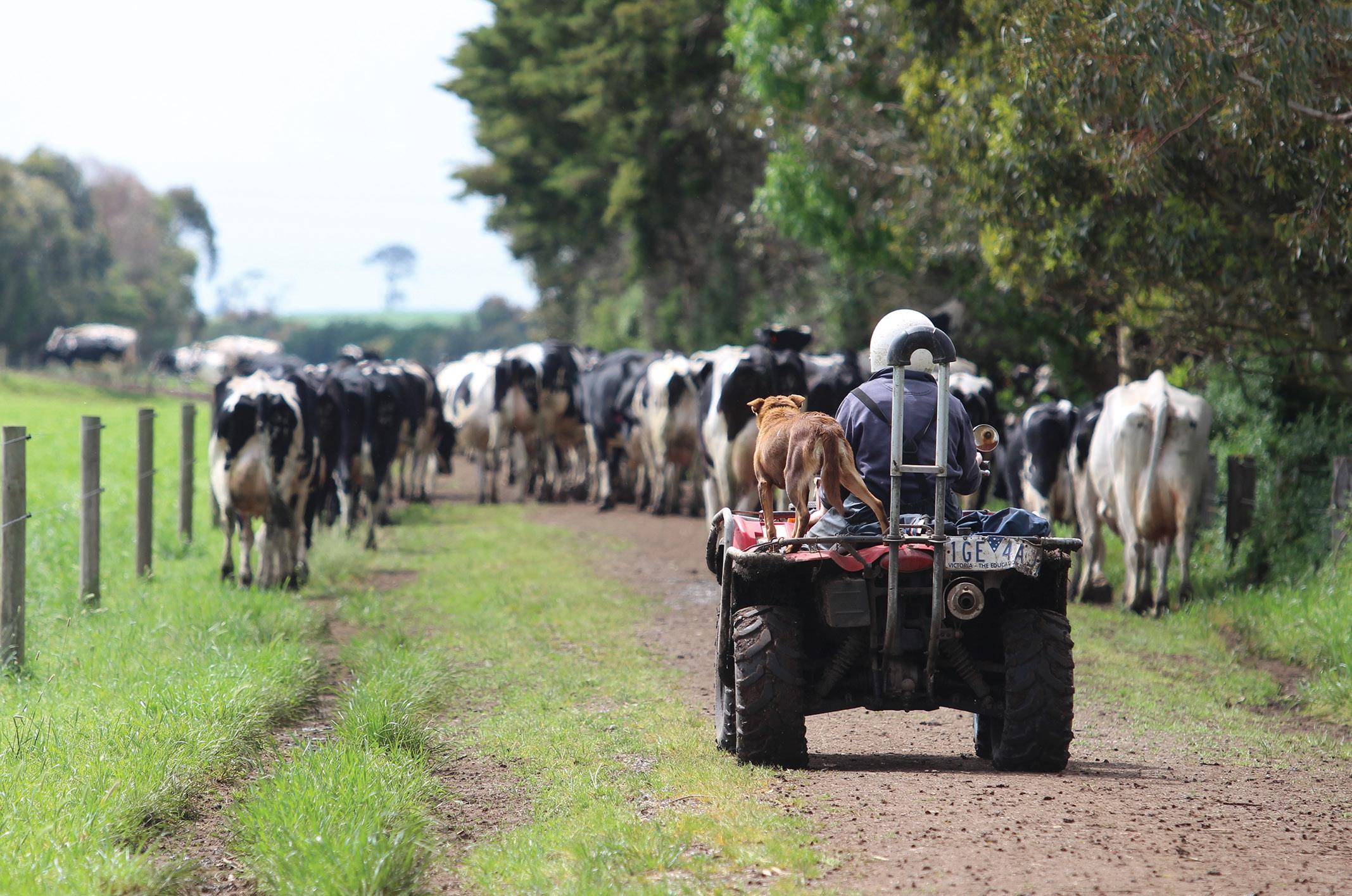
It’s something Duncan Morris has seen first hand. Morris, who administers the two-year-old processor SW Dairy Ltd, is an accountant, southwest Victorian dairy farmer, and former Murray Goulburn Cooperative director.
“The number of farms exiting dairy has been absolutely massive around here, and nearly every one of them has gone to beef or sheep,” Morris said.
The solution, he said, was to adopt something of New Zealand’s seasonal, low-input model, but that needed to be matched with a suitable milk price model. That realisation was the catalyst for SW Dairy Ltd, which had grown from 8 million litres to 30 million in two years on
Mumford’s observations were backed up by the NDFS report, which highlighted three main issues: input costs, labour and climate.
Of the 700 farmers surveyed, 57% said input costs like feed, fertiliser and fuel were their top concerns.
Almost a quarter (at 23%) said they had shrunk their herds in the last 12 months in response to the labour shortage. At the same time, floods swept through South Australia, Queensland, and New South Wales, while the normally reliable northwest Tasmania suffered one of its driest summers, and Western Australia was scorched by bushfires.
The 2016 dairy crisis had also played an ongoing role in the dairy exodus, Morris said, and would continue to be felt for many years.
“It’s not going to come back easily,” he said.
“There’s a generation of kids in their later teens and early 20s who’ve gone and they’re never coming back because they got burned when mum and dad got burned.”
Sow the right chicory this spring, and you’ll be ahead of the game right from the start, with a fast-growing, nutritious summer crop that’s ready for grazing sooner than you think.
501 Chicory jumps out of the ground fast because it’s an annual, and that early start means up to one more full grazing during summer than other perennialtype chicory cultivars.
Feel like immersing yourself in two days of pasture expertise and understanding, at our expense? Your chance is coming up fast – our interactive farmer workshop Grass into Gold is back by popular demand in November.
You’ll join other farmers from all over New Zealand at our research farm in Canterbury for a first-hand look at our latest R&D, exciting new emerging technologies and the opportunity to share and learn everything pasture from outside experts as well as from each other.
You’ll also help shape our research going forward – your feedback about the future of farming is a key driver behind our efforts to create the pastures you need in years to come.
Who should apply for Grass into Gold? Anyone who wants to improve their business through growing better pastures.
You’ll learn about pasture genetics and how to help your pastures thrive, and tips on how to maximise the use of home grown pasture, because that’s where the rubber hits the road in terms of on-going
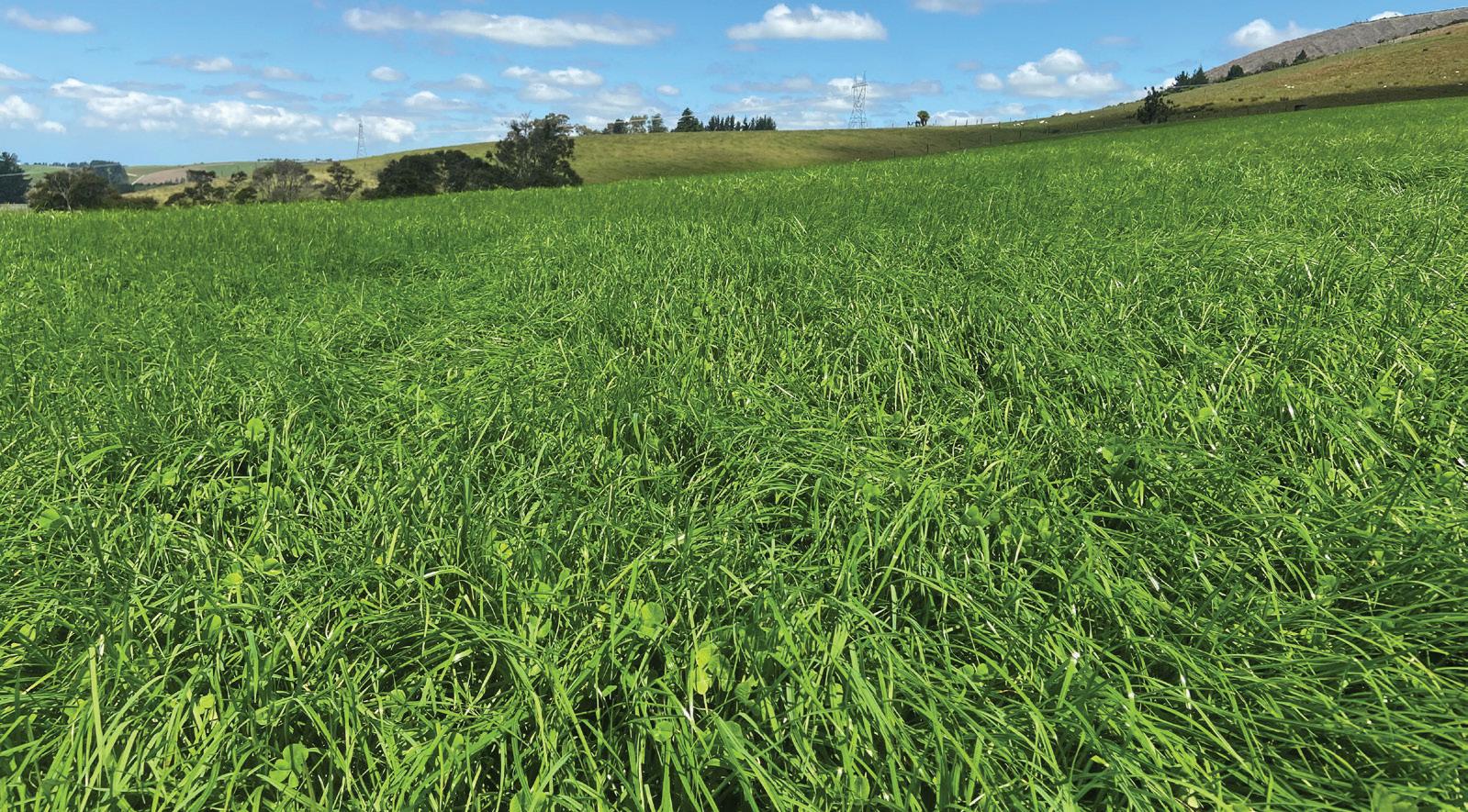
profitability and sustainability.
Golden opportunity
The programme starts mid morning on 1 November; includes field trips and visiting speakers; and concludes mid afternoon the next day, with plenty of time for open discussion and debate.
Afterwards, you’ll have the opportunity to follow up, and have us visit your farm to help get the best out of pastures for the good of your business.
We’ll pay all the expenses –flights where appropriate; meals, accommodation and transport to and from the airport. All you have to do is fill in the entry form at www. barenbrug.co.nz, and tell us briefly why you want to come to Grass into Gold and how it will benefit your farm.
Spaces are very limited, so check it out now. We look forward to seeing you November!
You can make the most of this benefit by getting well organised for sowing ahead of time – signs are summer crop plantings will be up this season, and 501 Chicory needs to go into the ground when the soil is consistently above 12oC.
So now’s the time to select paddocks, order seed and book your contractor, if you use one, to ensure you are all set to go when conditions are right.
Best results come from sowing 501 Chicory into effluent paddocks; using AGRICOTE and slug bait to protect seedlings from insect pests; drilling seed no deeper than 10 mm, and rolling before and after drilling to improve seed to soil contact.
Visit www.barenbrug.co.nz for more information.

As world economies teeter, Stuart Davison reads the tea leaves on the prospects for NZ dairy on world markets.
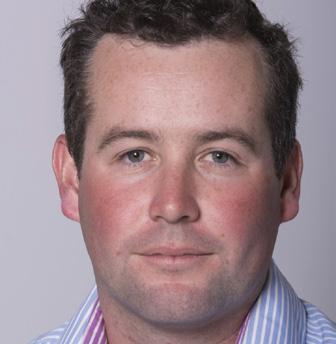
Peak milk approaches in little old New Zealand, global market uncertainty is still rife, central banks are dancing the monetary policy line in the face of inflation and China’s economy remains the counterbalance. Cool, so we know the headlines, what does that mean for dairy and other soft commodities?
Let’s start at the top of that list. NZ milk supplies are looking more price supportive. Expectations for NZ’s total milk production season are pointing to another year of reduction. If our tea leaves are telling the truth, two years of production declines in a row will really stir the global milk market. Such a result would turn the trend of a growing milk pool in the South Pacific on its head, and make the global market think a little harder about dairy prices. This carries some weight considering where the trajectory of European milk production is. Likewise, the United States dairy market is still growing, but only just keeping up with their population. Strike one for pricesupportive market measures.
Global market uncertainty has been a buzz word for the first two quarters of 2022, but as we head into the tail end of the year, markets seem more confident. Not enough that hedge funds or other investment funds are shouting from the rooftops, but enough for investors to price in expectations.
For equity markets, that’s moving from the bottom of the screen on the left to the top right, not the opposite, as we witnessed over the first six months of 2022. This is an insight into expectations of economies, albeit still a little blurry. Two strikes for price-supportive market measures. Global monetary policy should be accumulating a lot of your cowshed thought patterns; these policies are far reaching, and the farm isn’t out of reach. You know the story; pandemic,
quantitative easing (QE) (money printing), inflation,rate hikes, cooling of inflation. Rate hikes appear as interest rate hikes for those with debt. These control inflation by controlling spending, by burning consumers’ fingers when they buy things or by increasing interest costs so discretionary spending is limited. With these rate hikes, we know consumers will be less likely to spend on luxuries. Unfortunately, dairy is a luxury for most. Consumers in NZ alone are already spending a little less on dairy, as cheese prices soar. It has been mooted the 30% decline for whole milk powder prices, thus the 30% decline in forecast farm gate milk price in NZ, is a result of dairy procurement teams measuring the risks of inflation on consumers’ purchases.
One positive for NZ dairy because of these rate hikes, is the strengthening of the US$, thus devaluing the NZ$. The devalued NZ$ meant dairy exports earned, which has somewhat cushioned farmgate price expectations from falling further. However, the strengthening of the US$ hurts our trade partners, who buy dairy in US$, termed buying power. Over the last two years, our trade partners have had significant buying power, making imports cheaper. So, rate hikes and currency movements have been two measures, but
the cumulative pressure is negative, so two strikes for negative market pressure.
China is in trouble. NZ is one of those economies tied to China; they are our biggest trading partner, and our biggest dairy trading partner. When they suffer, we suffer. Right now, the Chinese economy is stumbling; economic growth expectations have been downgraded, unemployment for Chinese in their 20s is at 20%, and the housing market is about to implode.
Added to the economic issues, China’s Communist party is due to sit for congress elections shortly, creating political tension within the country itself, as well as geopolitical issues such as Taiwan. As a result, the buying power of the Chinese yuan has been reduced.

If dairy consumption follows the trend of the last two years, imports will remain a key part of the market. So, on balance, the Chinese dairy market is somewhat neutral; economic, political and monetary policy weigh one end, but consumer demand and changed consumption levels continue to provide support to the other end of the scale.
After all of that, the market hangs in a precarious spot with pressures on both sides. Added to the global macroeconomic and monetary issues, China’s economy is acting like a duck on a pond: calm on the surface, but paddling like mad. Uncertainty is unlikely to reduce any time soon.
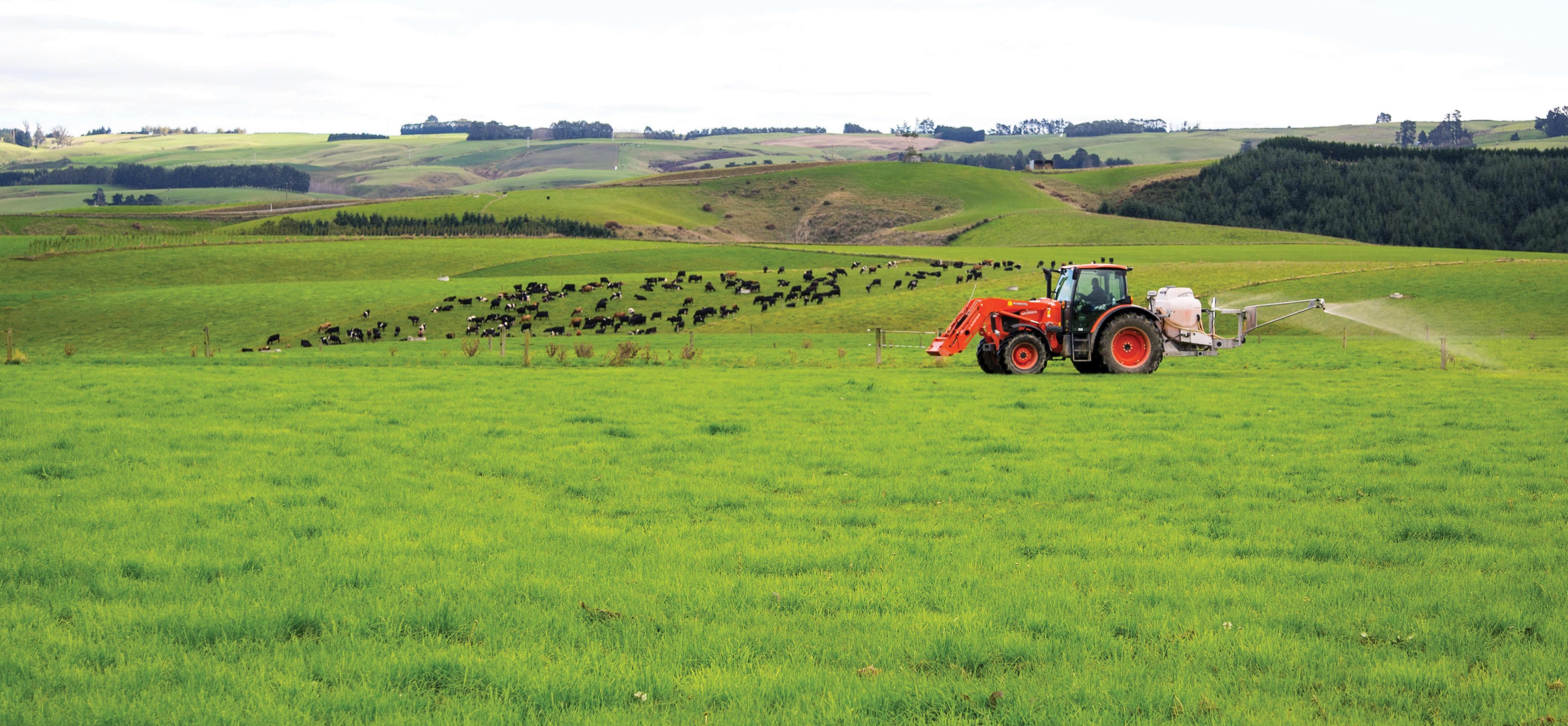
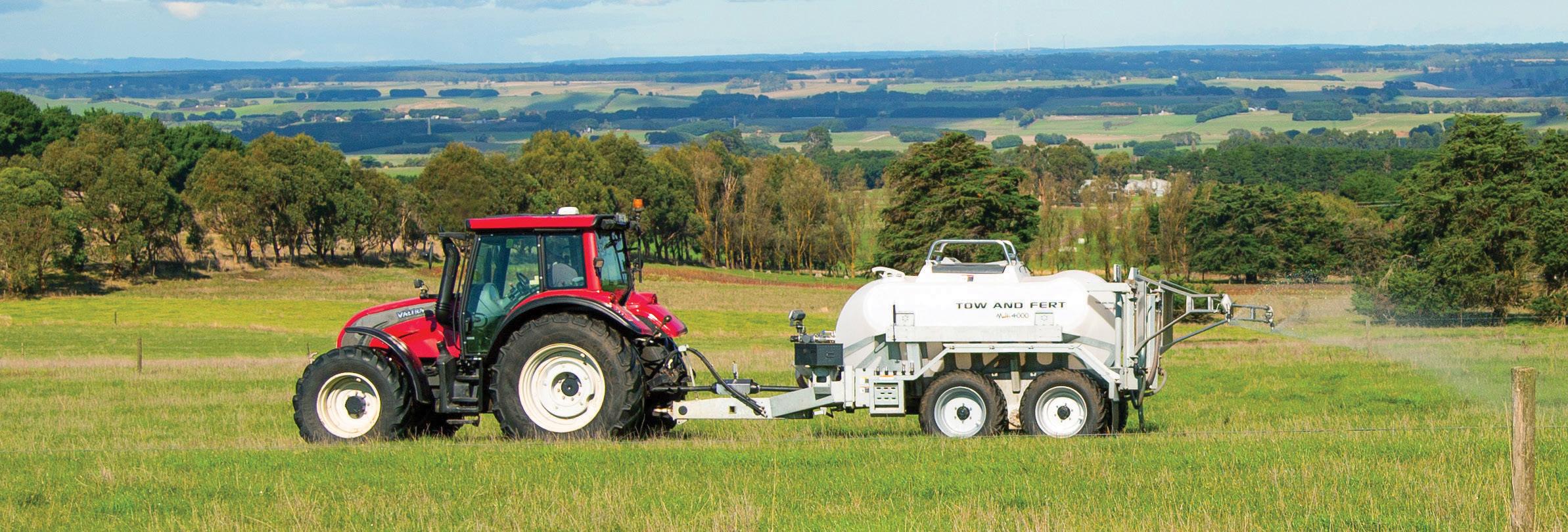
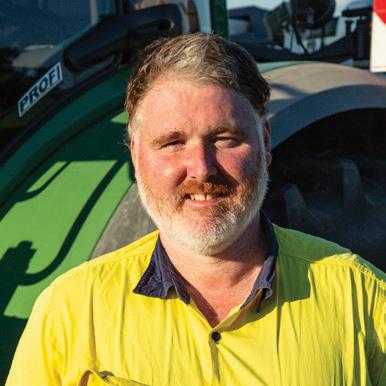
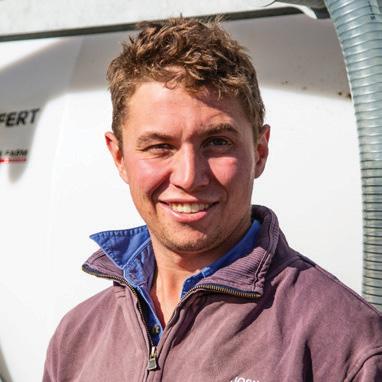
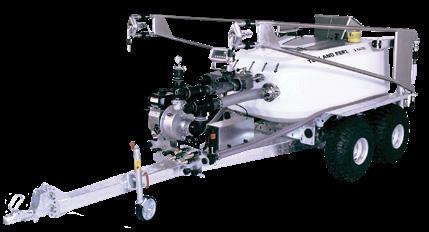
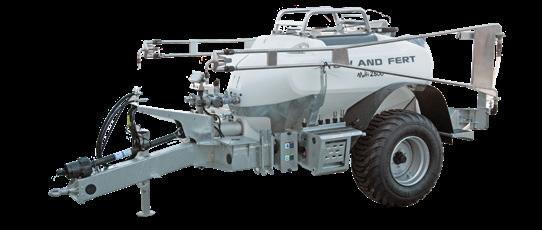
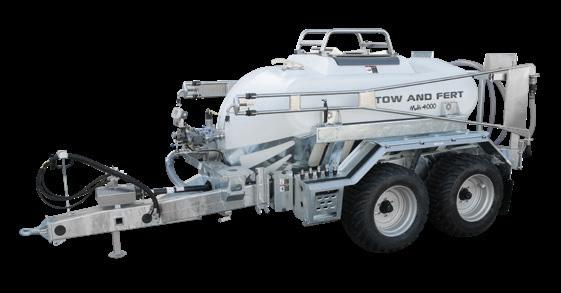
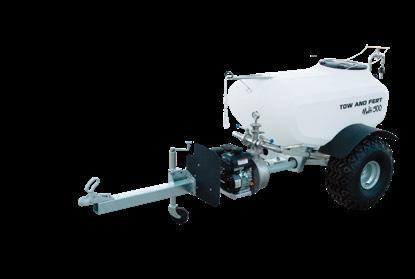
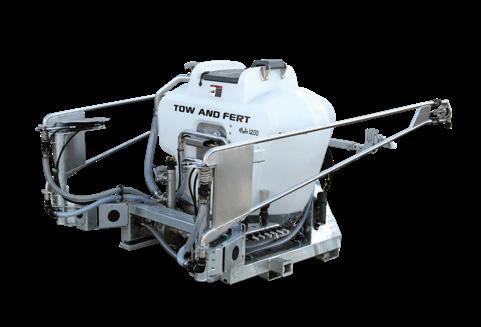
With just over 1140 dairy cows on 16 farms producing milk for 53,800 people, the dairy industry in the Faroe Islands is quite a vital sector.
The Faroes are in the north Atlantic Ocean, halfway between Iceland and Norway, northwest of Scotland, and cover 1400 square kilometres.
It is one of the three constituent countries that form the Kingdom of Denmark along with Denmark and Greenland.

Aside from the fishing industry, which is by far the biggest in terms of food production, dairying, sheep farming and vegetable growing are the main agricultural sectors.
Due to challenging climate, soil types and field structures, most dairy cows on the Faroes are kept indoors. One of the more modern farms is owned by business partners Roi Absalonsen, Nils Absalonsen and Esmar Sorensen, based at Vioareioi in the north of the island.
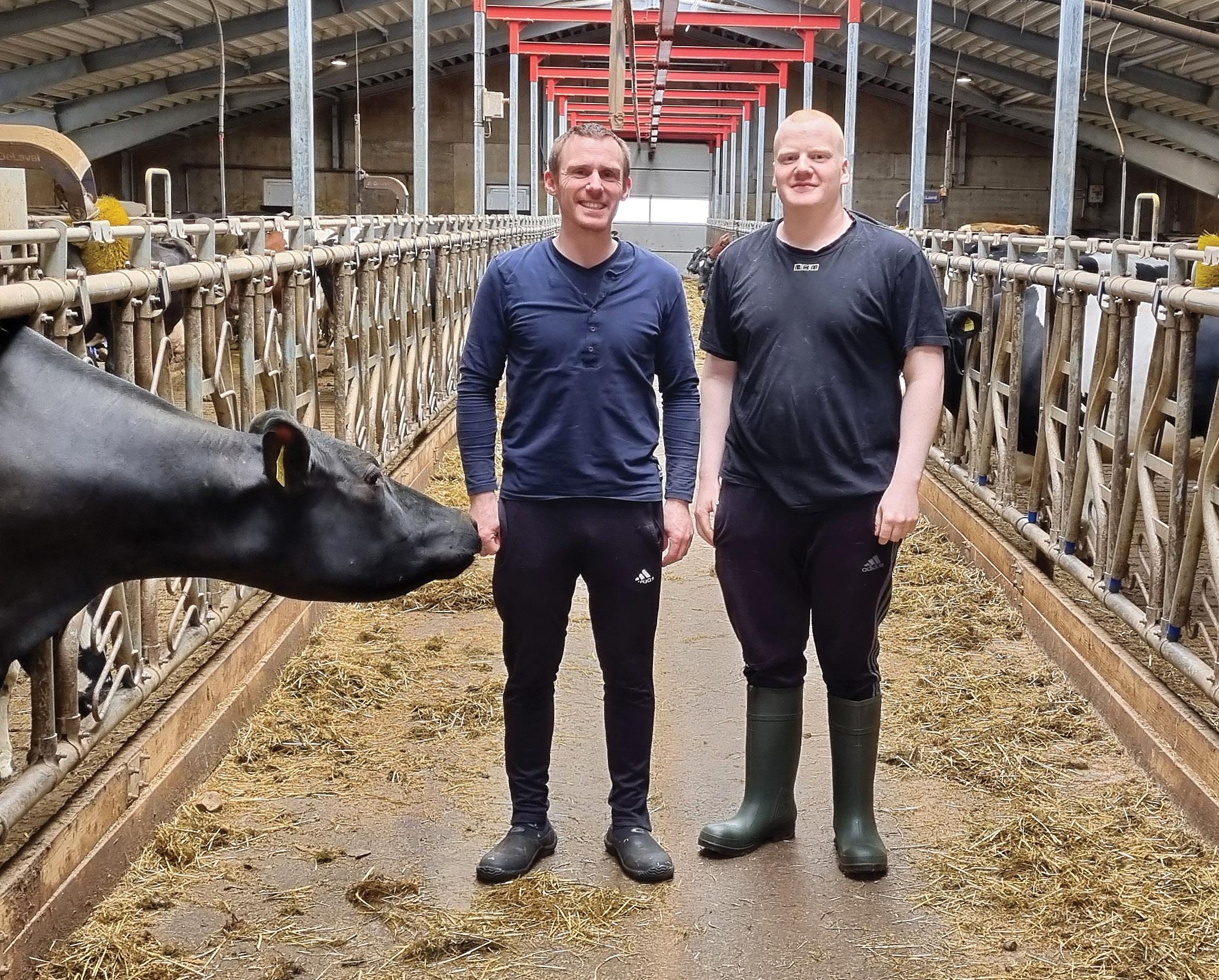
Dairying has been a traditional enterprise on this farm for hundreds of years, but as Roi explained there have been major changes there in recent years.
“We milk 120 cows that are yielding 32 litres per day on average at 4.2% butterfat and 3.45% protein,” Roi says. “The milk is sold to MBM, the only dairy processor on the Faroe Islands. Our
current price we receive for the milk is around seven Danish Krones or 94 euro cents per litre (NZ$1.50).
“The cows are being milked an average 2.8 times per day through our two DeLaval VMS300 robots, with 60 cows grouped to each robot.”
Roi’s grandfather built a new barn while running the farm in 1980. His uncle and business partner Nils took over the farm in 1987 and continued to milk cows.
However, with a restructured ownership, the trio decided to heavily invest in the farm and built a new barn for the cows in 2019.
That was not the only investment required though, as extra quota needed to be purchased to increase cow numbers.
“In total, we have about 60 hectares here on our farm and we manage to buy or rent another five hectares each year.
“Our cows are kept indoors all year long but the youngstock graze outdoors during the summer from June to September.
“Nils, Esmar and myself first drew up the plans to build a new barn in 2013. At that time Nils had 212,000 litres of quota so we bought another 320,000 litres that same year. With more
The remote Faroe Islands in the North Atlantic are almost self-sufficient in dairy produce, Chris McCullough writes.
‘THE ROBOT IS SET TO FEED THE COWS EIGHT TO 10 TIMES PER DAY. THEY ARE BEING FED GRASS AND SILAGE AS WELL AS MASH FROM THE LOCAL BREWERY, PLUS CONCENTRATED FEED.’Faroe Islands Roi and Nils Absalonsen in their new barn on their Faroe Islands farm.
quota purchased in 2019 we now have a total of 1.3 million litres to work with each year.”
Most of the cows in the herd are of the Holstein Friesian, plus there are a number of Norwegian Red cows. The team use AI across the herd to get the cows in calf each season.
The Faroe Islands have quite a mild climate, given their latitude, with temperatures only dropping to 3C or 4C in the winter. Summer days are mostly overcast with temperatures never really getting above 15C.

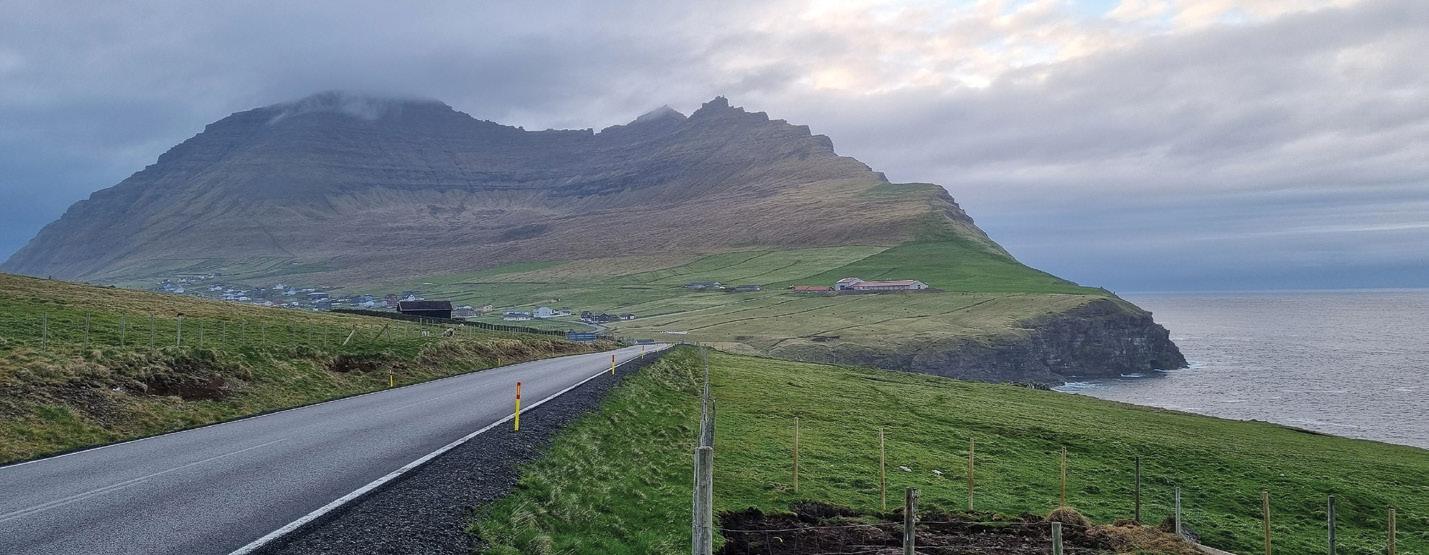
Heavy rain is common and the islands get 210 rainy or snowy days per year. With this in mind, dairy farmers tend to keep their cows in during the year to avoid damaging the land as they can prove to be too heavy to suit the wetter ground conditions.
Forage is transported into the cow barn all summer and silage is fed in the winter via a robotic feeding system.
“We feed the cows with a robotic TKS system which is a Norwegian system. The robot is set to feed the cows eight to 10 times per day. They are being fed grass and silage as well as mash from the local brewery, plus concentrated feed,” Roi says.

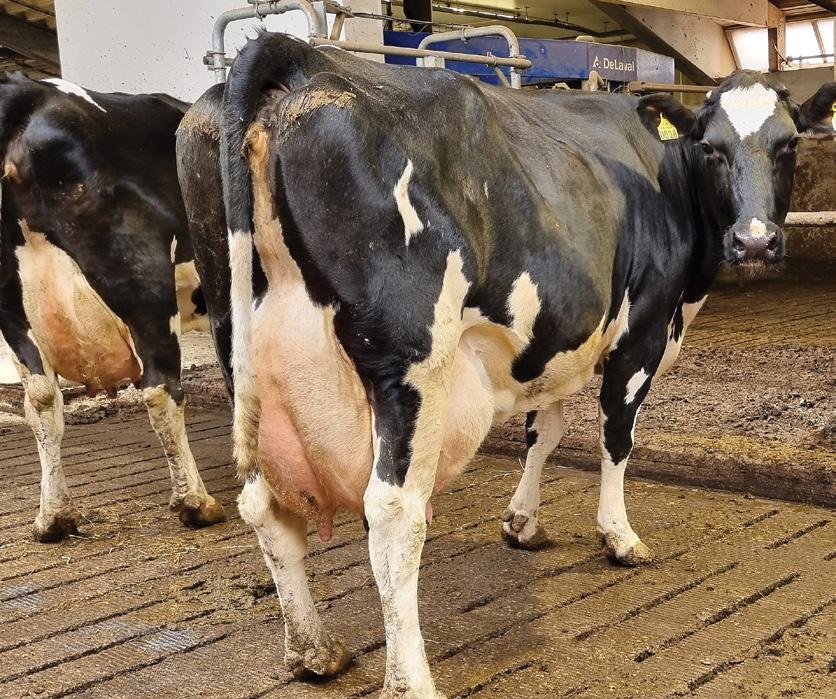
The Faroes are almost self-sufficient in dairy products, with the exception of cheese.
Over the past 10 years milk production has increased by 10%, but the number of farms that include dairy cattle has fallen from 28 in 2012 to 16 in 2021.

In 2012, the Faroe Islands produced 6.8 million litres of milk from 1138 cows. This compares to 7.5 million litres produced from 1147 cows in 2021. Due to advances in breeding the average yield has also increased from 6000 litres per cow in 2012 to 6,600 litres in 2021.
One of the main problems associated with dairy farming on the islands is the lack of a slaughterhouse, so there is nowhere to kill cull cows.
“This is a job we must take on ourselves,” Roi says. “We slaughter the older cows ourselves and sell the meat to the public, just like door-to-door selling. It’s a tedious task but it has to be done.”
Roi and his business partners plan to expand their milk production keeping a close eye on new technology.
“We have invested heavily to reduce labour in the new barn with the milking robots and the robotic feeding system. At the moment we have cattle in a barn in a different location, so in the future we would like to extend the barn so we can house all the cattle under the one roof,” he says.
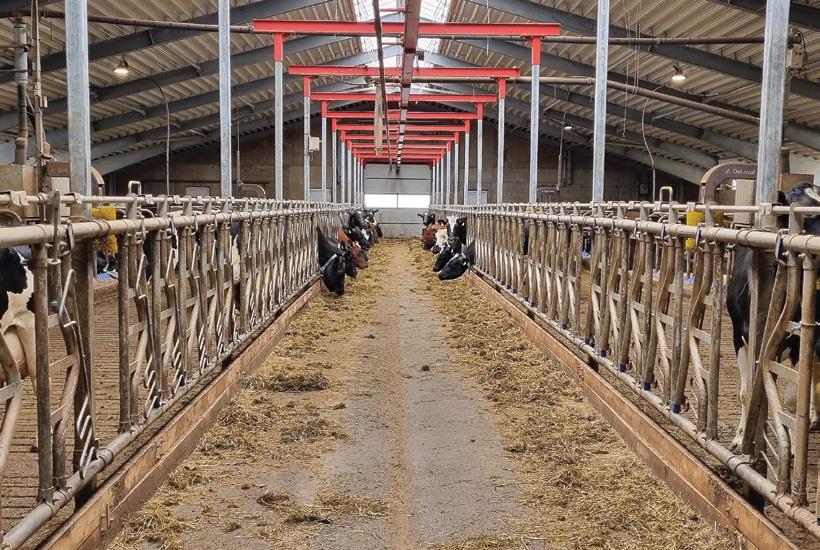
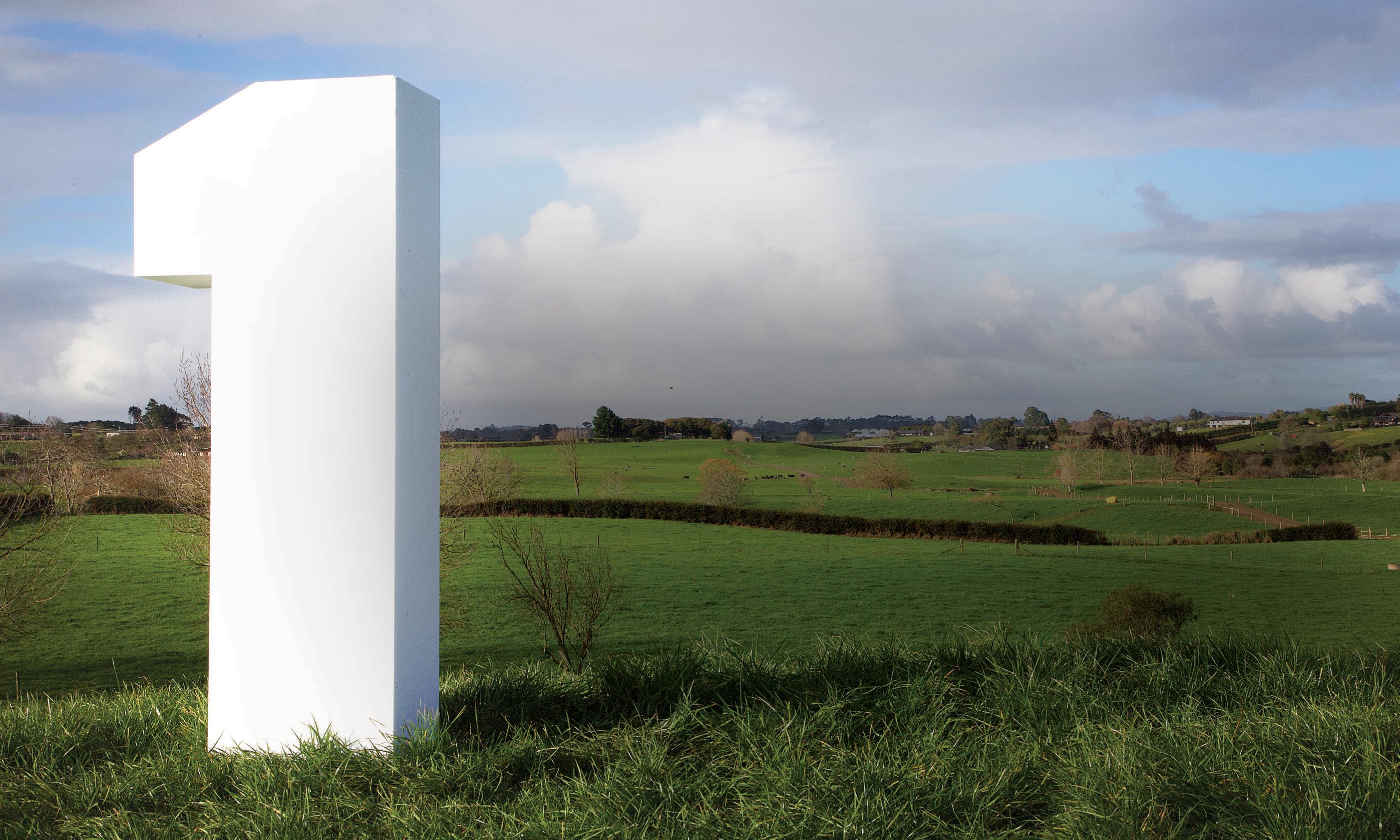
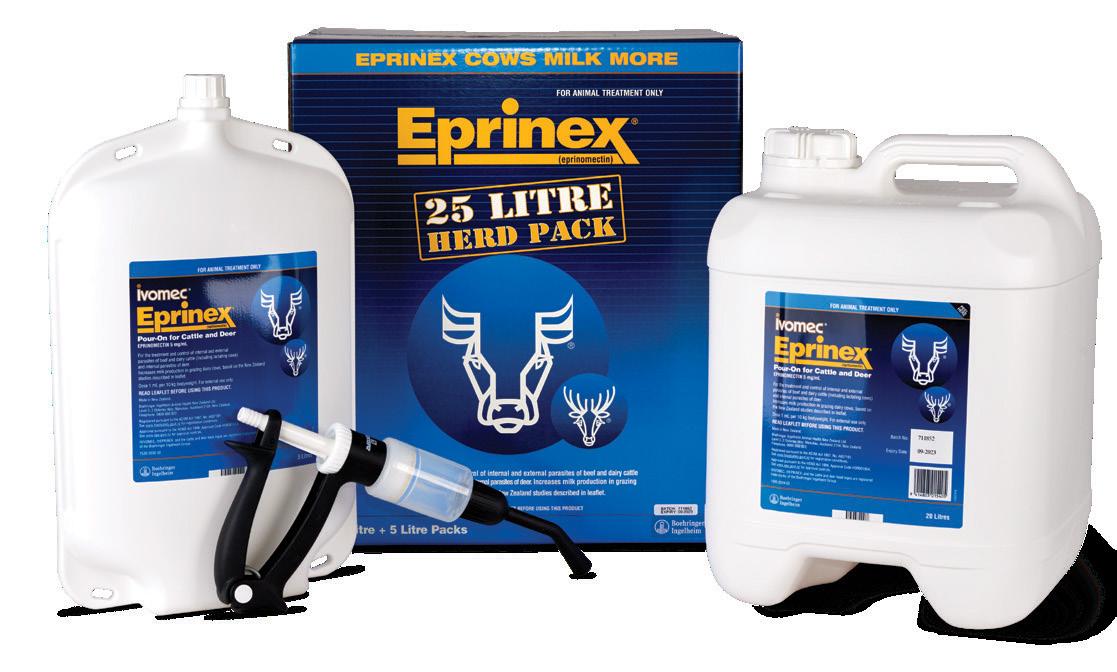

The outbreak of foot and mouth disease in Indonesia has raised alert levels in New Zealand.
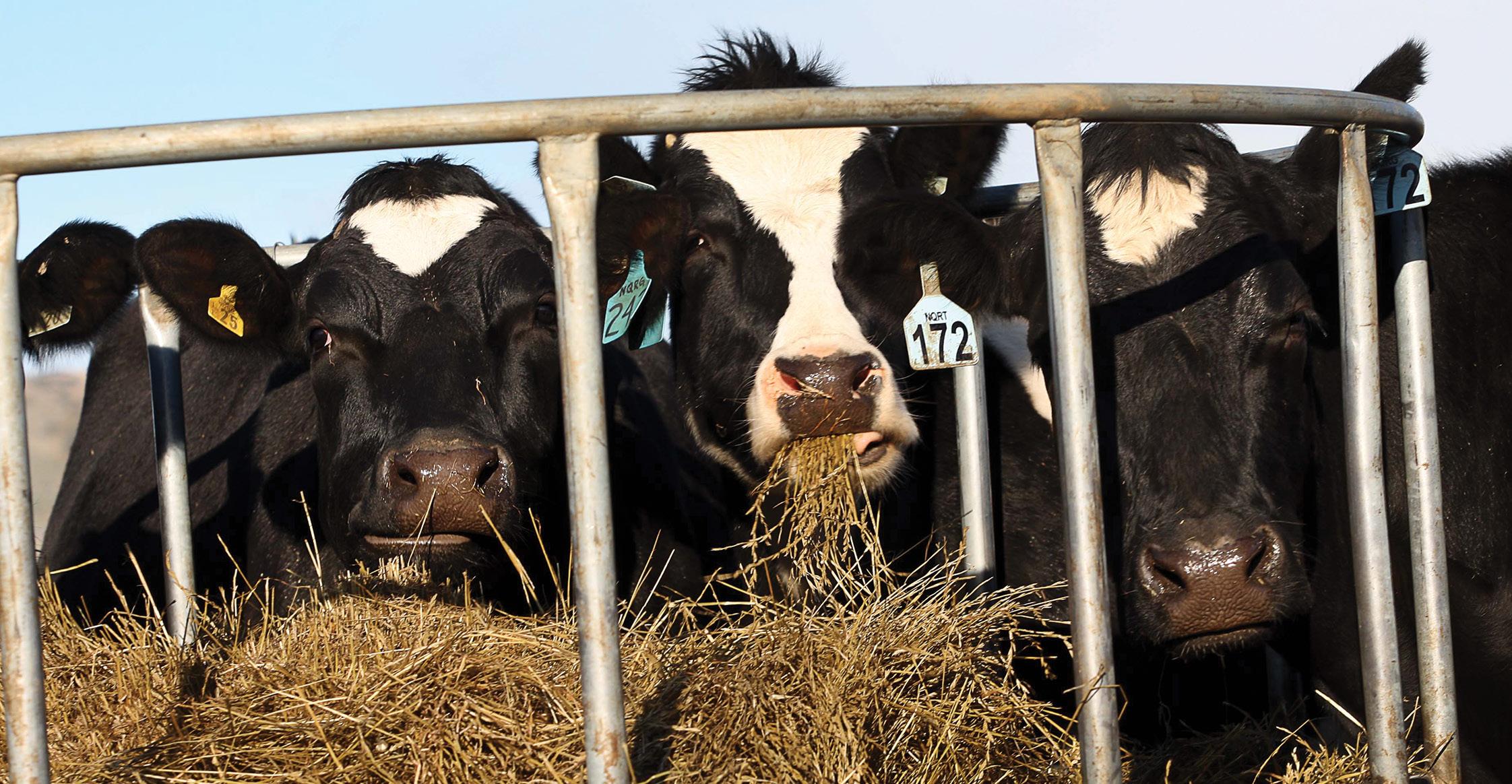 By Anne Hardie.
By Anne Hardie.
Biosecurity measures at the border will hopefully continue to keep foot and mouth disease (FMD) out of New Zealand, but farmers also need to be on the front foot with their own biosecurity practices. Because sometimes, like Covid-19, the problem can be in the country and circulating before we know it.
That means keeping a diary of all visitors to the farm and if you have staff or family returning from countries that have FMD and they have been around animals, they should not have contact with animals in NZ for a week. That’s not just Indonesia which has the latest outbreak, but numerous parts of the globe including countries in Asia, Africa, the Middle East and South America.
An estimated 77% of the global livestock population live in countries with FMD, so
it gives some idea of its prevalence and the airways are busy again with travellers.
Ministry for Primary Industries chief veterinary officer, Dr Mary van Andel, says biosecurity practices on farms are an insurance so that if the disease gets into the country, it doesn’t spread or at least spreads slowly.

alarm to get it checked out as soon as they are suspicious. Dr van Andel acknowledges farmers will be fearful of doing that, but every day delayed is another day where farms can get infected.
“We would hope we would find the first case of FMD in New Zealand, but we could never be sure.”
It is one of the reasons farmers need to know the signs of FMD and raise the
Traceability is key and since Mycoplasma bovis there has been a marked improvement in NAIT recording on NZ farms which, she says, will be essential for tracing animals if there is a FMD outbreak. It is not perfect yet though and she says some people find it difficult to comply with the NAIT scheme, for whatever reason.
“WE DON’T NEED TO WAIT FOR RESULTS TO LOCK DOWN THAT FARM TO MAKE SURE THERE IS NO FURTHER SPREAD.”Ministry for Primary Industries chief veterinary officer, Dr Mary van Andel.
Farmers’ own biosecurity measures for a potential outbreak of FMD – or any other diseases that may slip into NZ - should start with a simple onfarm biosecurity plan that is updated regularly and familiar to all staff.
The visitor diary should record anyone coming onto the property so that should an infection arise, it is easy to trace people movements for the weeks leading up to its discovery.
Dr van Andel says every farm should have a policy all the time that no dirty boots are brought on to the farm because of the potential to introduce diseases from other properties. The same applies to equipment and machinery used on different properties and there should be a ‘clean slate’ policy between properties.
All employees should know the rules and she says everyone should be respectful to other farmers’ biosecurity when going to a property.
One of the most dangerous ways of spreading the disease is through animals and meat products imported from countries with FMD. Feeding food waste
that includes meat products (swill) to pigs, whether it is your own pigs or supplying it to someone else’s pigs, is high-risk if the disease gets here. Any food waste needs to be heated to 100C for an hour to destroy disease-causing bacteria and viruses.
If a FMD case is suspected, MPI will immediately enforce restrictions to stop all movement on and off the property. Tests take only a matter of hours to determine whether the disease has breached the border or it is a false alarm.
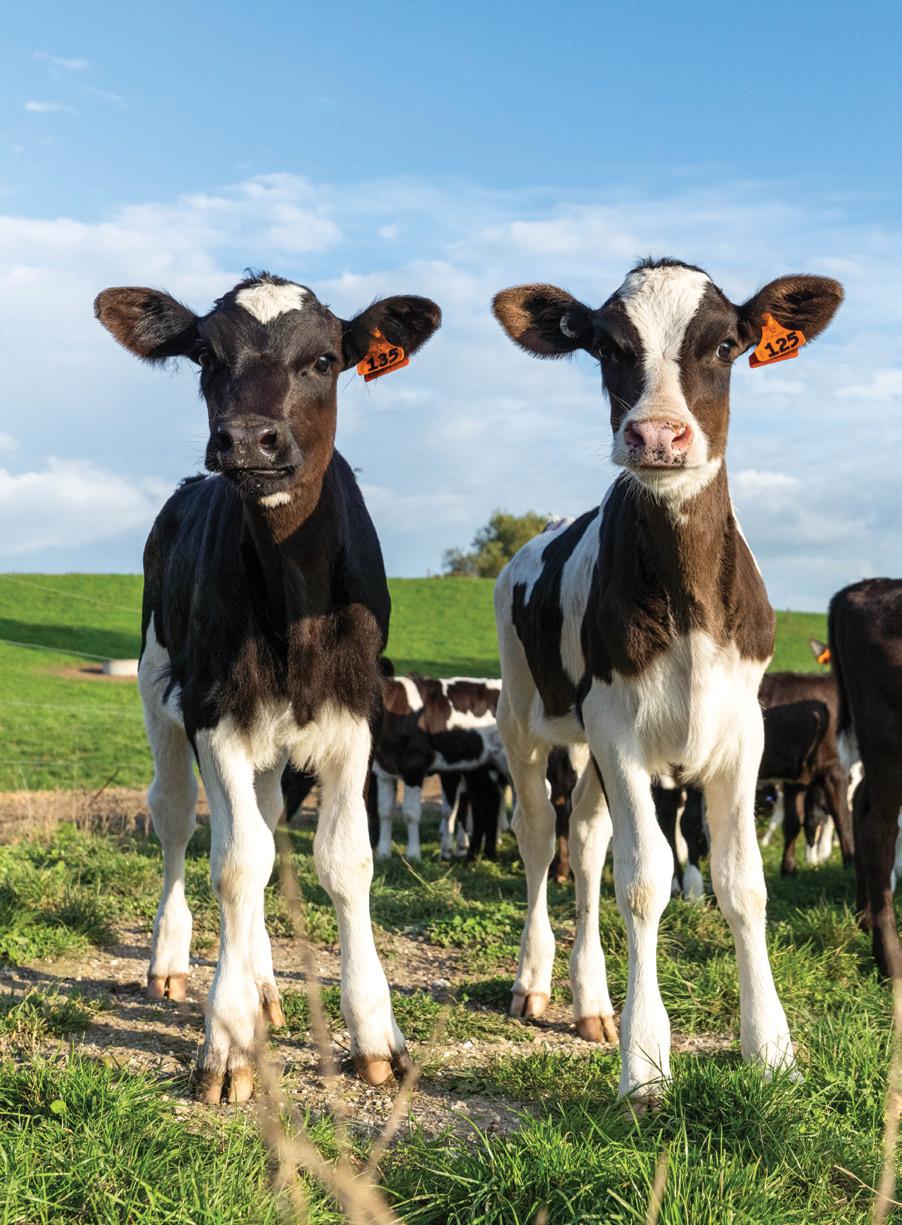
“We don’t need to wait for results to lock down that farm to make sure there is no further spread.”
If it is a positive result, there will be a national halt to livestock movement as MPI traces movements to and from the infected farm. The length of time will depend on the spread of the disease.
One of the problems with the disease is that animals can shed the virus before they have clinical signs and it can take anywhere between three to 14 days for clinical signs to show up.
That reinforces the need to be prepared and have biosecurity measures in place on the farm – in case the worst-case scenario happens.
Make sure you:
• purchase stock from reputable suppliers
• keep a simple on-farm biosecurity plan handy and update it regularly
• consider vaccines for local diseases
• have easily identified farm animals (tagged or marked)
• minimise contact between your stock and other animals (for example, on neighbouring properties)
• record new stock entering the farm
• quarantine new stock away from existing stock until you’re sure they are healthy –at least for one week but preferably two
• check feed labels to make sure they are suitable for the stock
• manage the potential contamination of people, vehicles and equipment entering and moving throughout the farm. For example, ask visitors to clean their footwear before walking around the farm and as they leave
• follow routine best practice biosecurity measures such as disinfecting farm equipment and maintaining intact boundary fences where possible
• consider developing a detailed farm health plan with your vet.
Don’t:
• feed ruminant protein to ruminants (such as cattle, sheep, lambs, goats, deer, alpacas and llamas)
• feed pigs food that could contain (or have contacted) meat, unless it has been cooked for 1 hour at 100 degrees Celsius
• let overseas visitors near stock for a week after they were last near animals or infected places overseas
• let overseas visitors bring contaminated shoes or clothes onto your farm.
• High fever for two or three days.
• Blisters or sores around the mouth, muzzle, feet and teats
• Drooling, tooth grinding and chomping
• Lameness (limping) or a tendency to lie down (pigs may also squeal when walking)
• Shivering or raised temperature
• Lethargy or depression
• Drop in milk yield for cows
• Death of young animals.
For more advice from MPI: www.mpi.govt.nz/biosecurity/ plans-for-responding-to-seriousdisease-outbreaks/foot-andmouth-disease
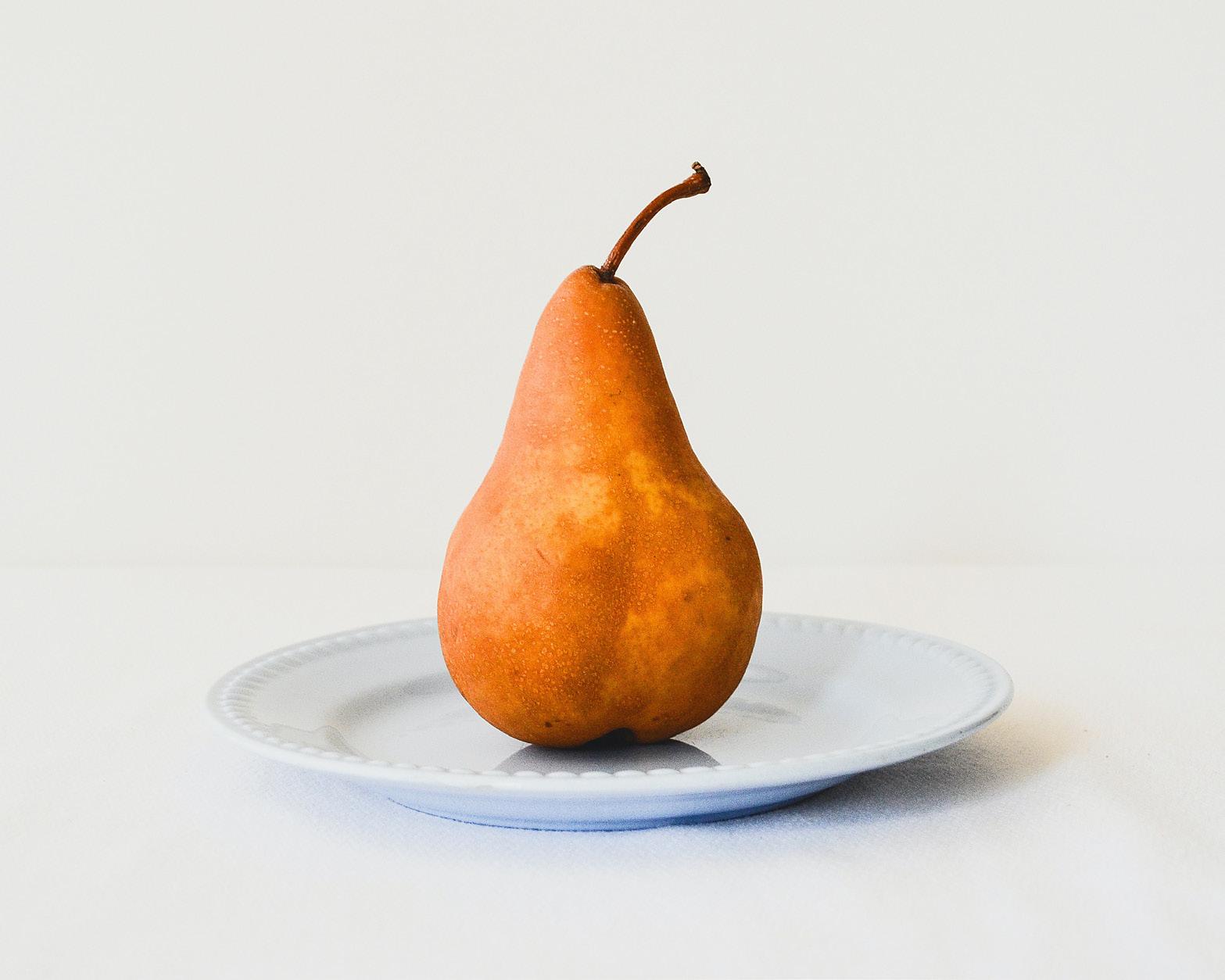
Dairy Women’s Network has presented a Relationship Property webinar to give advice in case of relationship breakdown.
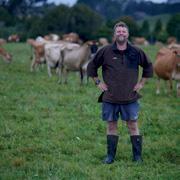
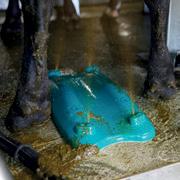
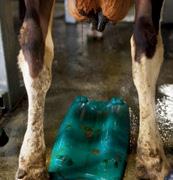
 By Elaine Fisher.
By Elaine Fisher.
When a relationship breaks down, get professional advice early – even before leaving the relationship.
That was among the recommendations from lawyers Angela Kershaw and Nicole Gordon of Eastern Bay of Plenty law firm Hamertons Lawyers during a Dairy Women’s Network webinar on Relationship Property presented in July.
“It is important to get advice quickly. The best outcomes often result from seeking advice before you leave,” Angela said.
“It may sound awful to see a lawyer before your partner knows you are going to leave but, especially in a farming situation where everything is tied up together, a consultation can help think things through before leaving.”
Nicole said fear often stopped people getting advice early.
“We see clients who are afraid to get advice, who don’t want to rock the boat or spend the money but in fact there is
a lot of value to be had in getting legal advice early on.”
The webinar hosted by DWN outlined what relationship property is and what can happen when a relationship breaks down. It also covered intergenerational farming operations and how to protect a farm from a child’s relationship break-up.
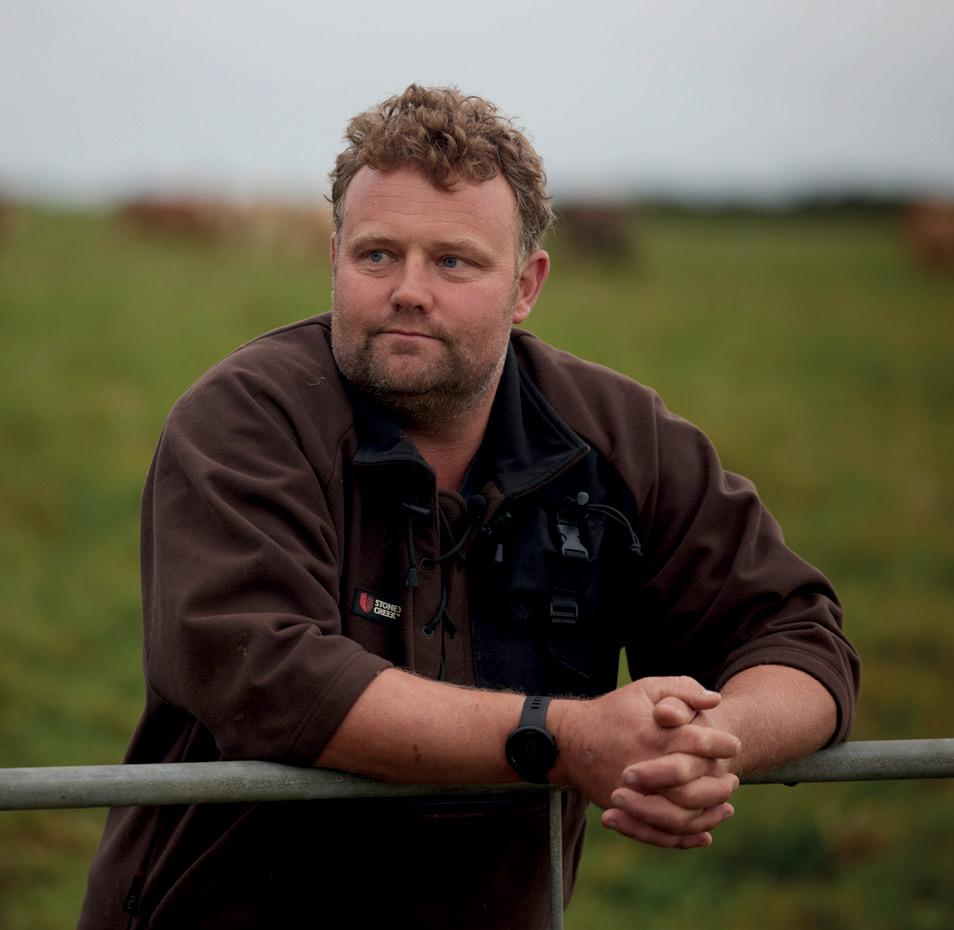
Constructive Trusts, often used by courts to settle relationship disputes, were explained – as was why they arise in farming situations on relationship breakups so often.
What happens to the farming operation while the division of property was resolved and how to protect against adverse outcomes were also outlined.
The widely held assumption was that in relationship break ups, property and assets would be divided 50/50 but Angela and Nicole said that was not always the case.
Angela used as an example a family in which husband and wife were both accountants, but the wife left work
“Our somatic cell count was sitting at 150,000. Since installing the iSPRAY4, it’s settled at 90,000”.
Andrew Pritchard - Taranaki Milking 420 cows across 2 herds
nozzles
to raise the family while the husband continued to progress with his career. After 20 years they separated and the husband, because of his earnings and support from his wife, was financially significantly better off than his wife, who had put her career on hold.

“In such a case it would be unfair to divide the property 50/50 as clearly his life moving forward would be easier financially than hers.”
An unequal sharing of the relationship property may be ordered but could be complicated and would involve independent advice from financial advisers.
It was a mistake for a disadvantaged party to walk out thinking the only option was a 50/50 division. “They really need to take some independent advice and tell their lawyer all the circumstances. Likewise, the advantaged party should also talk to their lawyer and be realistic about what the advantages and disadvantages are within the relationship,” Angela said.
Relationship breakups among farming families were often complicated because everything was tied up in the farming operation including employment and the family home.
Consideration must also be given to who would continue to run the farm and who would remain in the home.
“If minor children are involved, who stays in the home may not be the person running the farm. There are questions too around if there is enough money from the farm to fund two separate households,” Angela said.
When it was an intergenerational farming property the situation could become even more complicated if the relationship of a child working and living on the farm broke up.
Both Angela and Nicole stressed the
importance of not leaving anything to chance. “You need to think about these issues before they happen.
“To protect against adverse outcomes number one is to have open family discussions about expectations and reach an agreement.”
It was vital parents engaged with the spouses of their child or children involved in the farm when reaching agreements.
“If they are not involved everything can become unravelled. Don’t make promises which are not followed through in documents as that can also lead to problems,” Angela said.
Dinner table promises were common, but Angela and Nicole said it was vital nothing was agreed without advice from a lawyer, and often an accountant and banker.
“I can’t emphasise enough the importance of paying market rates for services. Paying children what anyone else in their role would be paid is vital. If they put money into the farm, document that as debt back to them. Putting money in on a handshake understanding is a big mistake.”
A contract-out agreement in which the son or daughter and their partner had a clear understanding of what was expected was not a complete answer but was close to it.
“It is hard to argue against when people have gone into it with eyes wide open. Don’t leave things to chance. It is much harder to address after the fact.”
Angela said the division of relationship property came down to money.
“I know that sounds awful but realistically the division of assets and who pays what is akin to a business decision. Try to make decisions with your head rather than your heart.”
Relationship break ups were hard for both parties as they represented the loss of shared family goals, dreams, aspirations and perhaps financial security.
“It is a grieving process, even if it’s amicable. To survive it is vital to have a good support team, not just your lawyer. Lawyers are not councillors. It’s really good to see someone, a counselor or psychologist for one or two appointments to get your head around the changes so you are emotionally prepared for what is happening.”
Nicole and Angela both said – “never take legal advice from someone who is not a lawyer”.
Angela heads up the Family and Estates team at Hamertons Lawyers Ltd. She brings compassion and care to sorting out separations, dividing assets, establishing optimal familial arrangements and supporting families in times of crisis.
Nicole specialises in family and estates and has a passion for helping clients cope with emotionally challenging situations. She especially enjoys guiding clients through all of their legal options, helping identify optimal solutions.
www.hamertons.co.nz
‘It may sound awful to see a lawyer before your partner knows you are going to leave but, especially in a farming situation where everything is tied up together, a consultation can help think things through.’
Dairy Exporter published a story about coated urea (August 2022) in which it was claimed using this type of product could reduce the volatilisation of nitrogen from urea by 50%. The associated editorial asks –should all farmers switch to these types of products?
Most farmers reading this would, I think, take the message that these products are very beneficial and economic. I express great caution.
To be clear; what we are talking about is urea treated with the chemical agrotain. Both fertiliser co-ops sell this product as either SustaiN (Ballance) or N Protect (Ravensdown). Agrotain slows the conversion of urea-N to ammonium-N and thus through to nitrate-N. Both companies
claim adding agrotain to urea reduces the loss of N, via volatilisation as ammonia gas, by 50%, thus increasing N use efficiency (NUE).
Ammonia is not a green-house-gas and thus the only benefit a farmer can derive from switching from straight urea to SustaiN or N Protect is via an increase in NUE. In other words more pasture or crop growth per unit of N applied.
In a paper to the New Zealand Grasslands Association in 2011, a colleague and I reviewed all of the available trials in NZ comparing the effect of urea and agrotain-treated urea on pasture production (n = 16 trials).
The average response to agrotaintreated urea, relative to straight urea, was 4% (confidence interval 7%). We have subsequently updated this estimate by
With the extensive Massey Ferguson hay range, including Mowers, Rakes, Tedders, Conditioners and Balers.
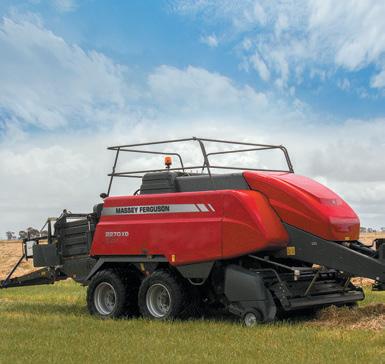
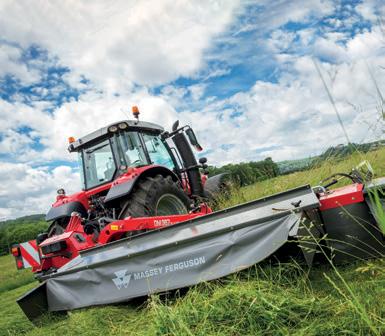
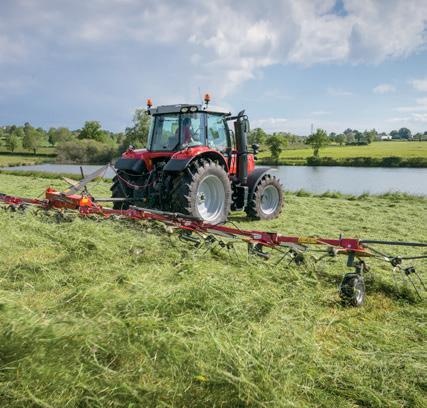


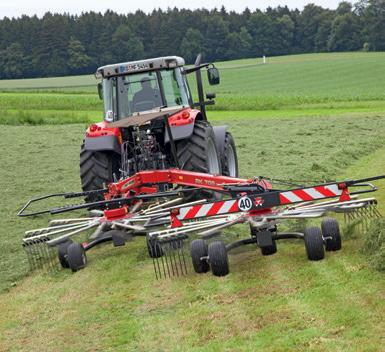
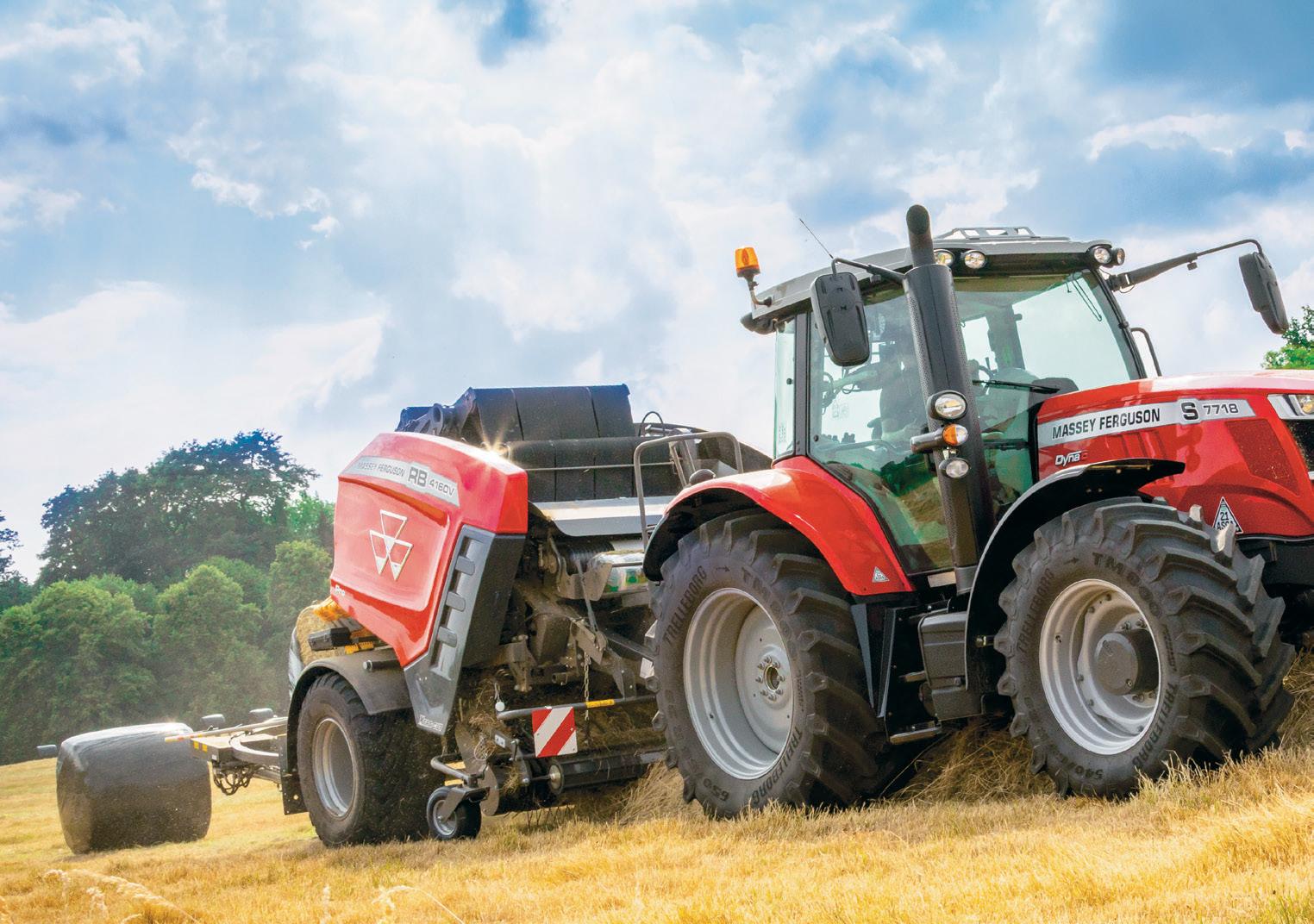
AVAILABLE NOW
Loads of models are in stock now and ready to roll.
including trials from all around the world on both pastures and crops (n= 348). The average response was 3%.
Of particular relevance to NZ pastures, the results were rate dependent; at low rates of < 50 kg N/ha (108 kg urea/ha) the average response was 1.4% increasing to 7.5% where the rate of application was > 200 kg N/ha (434 kg urea/ha).
If, as both co-ops claim, adding agrotain to urea reduces ammonium volatilisation by 50%, then the only realistic conclusion, given the pasture and crop yield data above, is that the absolute amount of N volatilised is very small, in the range of 2-3kg N/ha, irrelevant in the overall scheme of things - 50% of a small number is a smaller number?
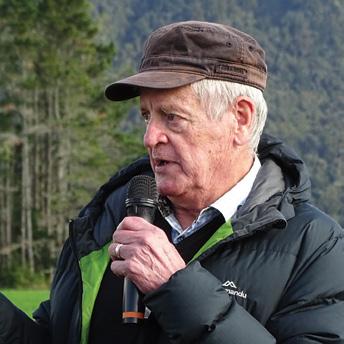
Rising costs are a concern for households and businesses across New Zealand – and dairy farmers are also feeling the impact of high inflation.
Many farms have had cost increases in their budgets of around $1/kg milksolids (equivalent to a 19% lift from 2020/21 average operating expenses).
Higher fertiliser, feed, wages and fuel costs are some of the key drivers of these increasing costs.
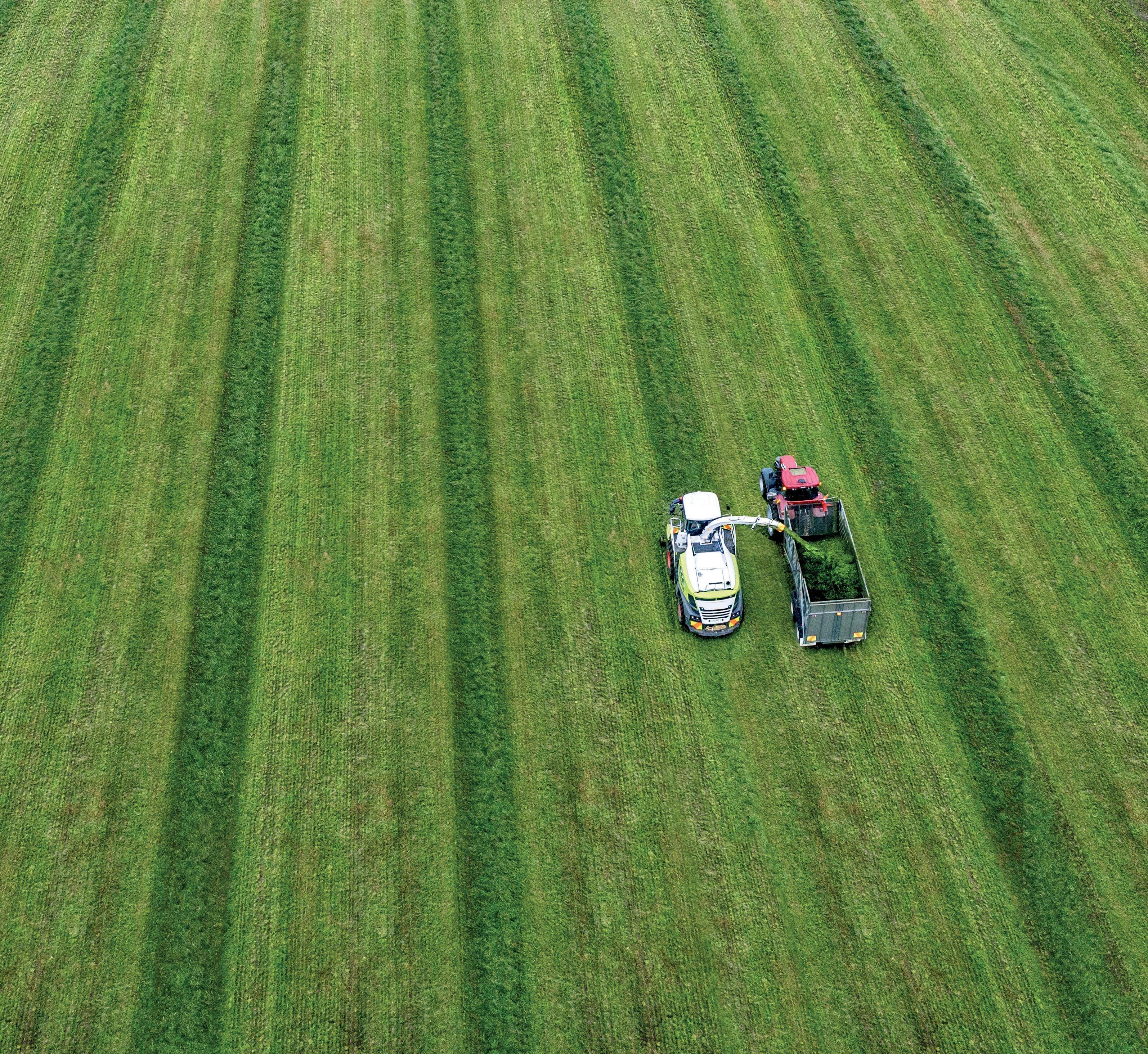
Managing your budget in times of high inflation isn’t easy. Any savings you can make in the season will continue into future seasons, so it’s worthwhile being proactive now, before a fall in milk prices requires action.
We’ve seen farmers prioritise paying off debt in recent years. This has left farmers better positioned to cope with tougher years. Continuing to focus on reducing debt is an excellent strategy to reduce future interest costs, so you can meet higher costs – or cope with a lower milk payout.
Benchmarking your business against similar farms can help identify opportunities to save or increase your income. Focus on making incremental gains to boost your income such as improving cow reproductive performance or ensuring you receive all the premiums your dairy company is offering.
Consider if you can increase milk production from pasture – the cheapest feed source. You can compare your current pasture use with similar farms using DairyNZ’s pasture potential tool at dairynz. co.nz/pasture-potential
There may also be opportunities to use pasture, supplements or fertiliser more efficiently. Drawing on advice from farmers, DairyNZ has information on options to reduce fertiliser use without reducing production, visit dairynz.co.nz/ nitrogen-use
You might find zero-based budgeting useful. It involves starting with a blank budget and reviewing each cost. Most farmers can find some savings using this approach.
If you’re finding it difficult to identify options to manage costs, it can be helpful to involve your farm advisor, or get in touch with your DairyNZ local team on 0800 4324 7969.
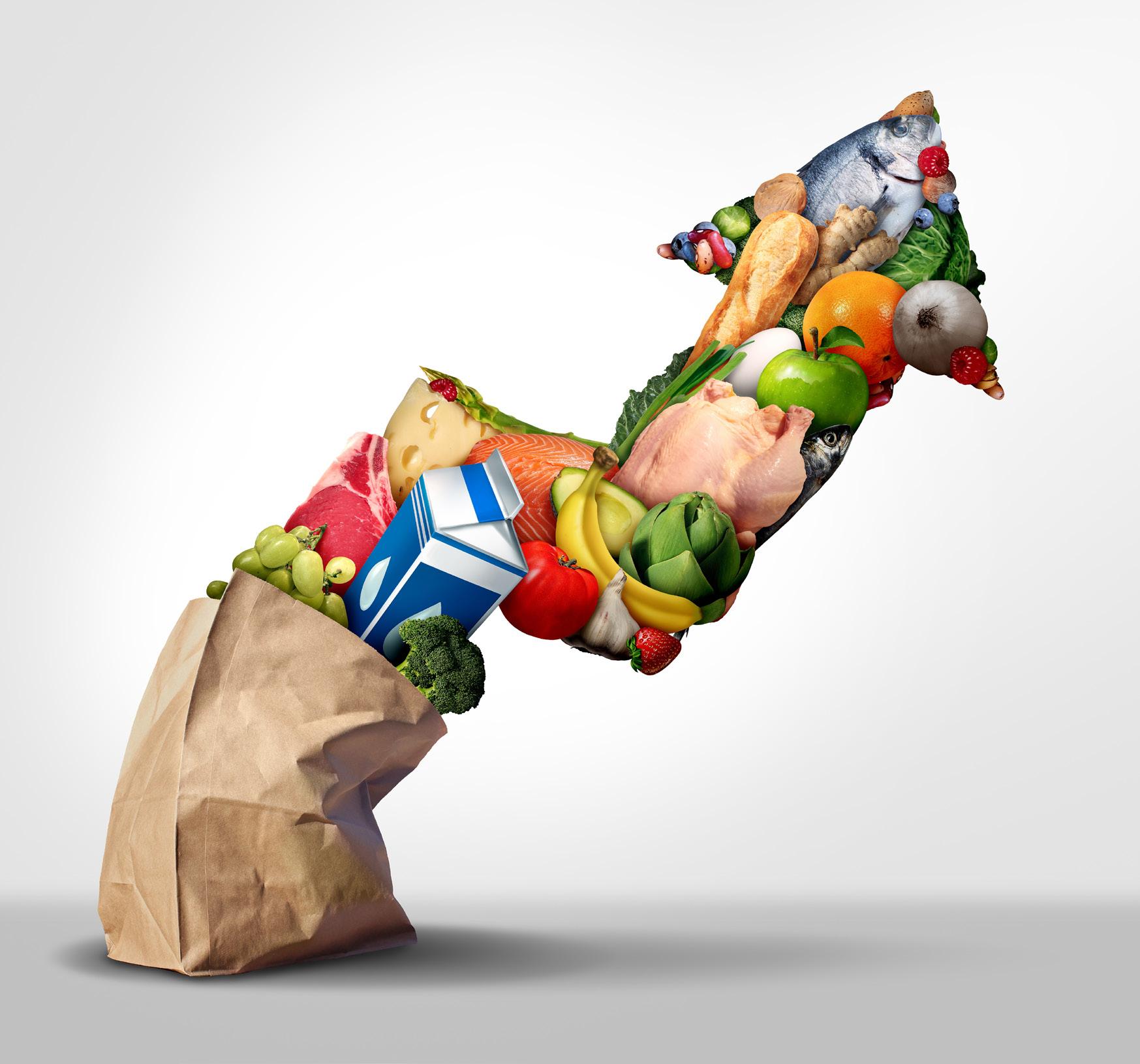
With costs rising quickly, we encourage contract milkers to run their figures for this season through DairyNZ’s contract milker premium calculator, to check you’ll
achieve a reasonable return. If contract rates are set too low, both parties should discuss the situation as a first step. Involving professional advisors can also be useful. You might identify opportunities to review contract conditions or to agree on how cost increases can be managed.
With costs changing rapidly, it’s important to set future contracts based on up-to-date figures, and ensure the contract can accommodate cost increases without penalising contract milkers.
To use the contract milker premium calculator, see dairynz.co.nz/homework.
BENCHMARKING YOUR BUSINESS AGAINST SIMILAR FARMS CAN HELP IDENTIFY OPPORTUNITIES TO SAVE OR INCREASE YOUR INCOME.

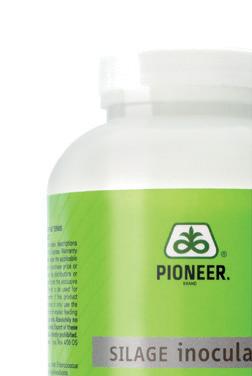
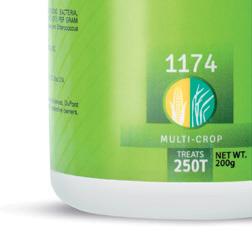

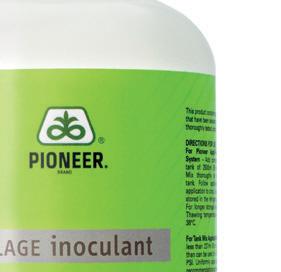
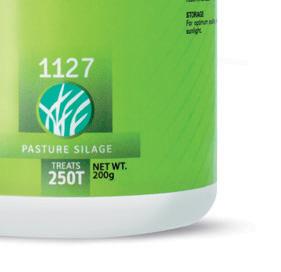

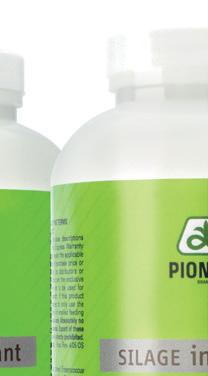
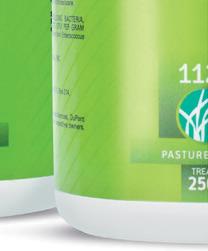
Alternatives to the exclusion of exotic forests from the Emissions Trading Scheme are back in the mix.
By Joanna Grigg.Without getting bogged down in detail, here’s a quick summary of where things are at with the Emissions Trading Scheme.
The Government has hit pause on the plan to exclude exotics from the new permanent post-1989 forest ETS category. This is a win for forestry advocates, including iwi who actively swayed Economic Development Minister Stuart Nash and Climate Change Minister James Shaw. It was an impressive campaign.
Emerging Forests managing director Mark Belton was one of the campaigners. In June, he floated an alternative scheme, to take the heat out of farmland conversions, but still allow permanent exotics in the ETS.
He suggested exotics should be allowed for permanent carbon forestry but only when integrated within farmland owned by New Zealand citizens. This should primarily be located on problem marginal LUC 6, 7 and 8 land types.
He floated the idea of landowners and the Government partnering on permanent carbon forests. They would take 50% each of the carbon credits. He believes this so-called ‘Belton-scheme’ would decelerate the carbon market price, making it rewarding but more stable. Returns per hectare to the landowner would be reduced – slowing the land price escalation problem. Will this idea be taken on board?
Will the farm sequestration choir sing as loudly and in unison, as the foresters?
In their July report, the Climate Change
Commission threw the cat among the pigeons suggesting onfarm sequestration be excluded from an agriculture emissions scheme. Instead, it should lie within the MPI-administered ETS. The reasons were that it would be too complicated to run and too costly.
Will Beef + Lamb NZ, Federated Farmers and other farmer groups, wanting inclusion of farm sequestration outside the ETS, get the same response from their advocacy? Perhaps not, unless Maori farming groups rally to the cause. The weight of the Climate Change Commission advice may tip it.
Farmer organisations have cried that it’s unfair to exclude farmland trees. Kiwis pride themselves on being fair. The beast that is the ETS, tends to see only in black and white, and onfarm indigenous blocks are seldom let through the gates. Yes, building a custom system to measure onfarm sequestration might be tricky and require building another beast to do it, but shouldn’t we try?
A possible solution is a voluntary option for farms to opt into measuring and contracting sequestration, via He Waka Eke Noa. Keep it simple and don’t try to count every shrub, scrub and stump. Build on it over time, as the science comes through. With a subsidised methane tax, increasing in cost over time, farmers may not see it making much of a difference to their bottom line initially. They may opt in later as the tax increases. Watch this space.
The Climate Change Commission made some more big calls last month. One
was the suggestion that the Government put shopping for carbon credits overseas back on the agenda. And now, not later. NZ will never meet emissions reduction targets otherwise. There are no approved overseas units in the NZ ETS. Dr Rod Carr, in his chair’s message, said it is essential the Government secure access to sources of offshore mitigation as soon as possible, and decide how this will affect the NZ ETS. This matter cannot be left until later this decade, he said.
The other was decarbonisation. Carr
“He suggested exotics should be allowed for permanent carbon forestry but only when integrated within farmland owned by New Zealand citizens.”
They want to see the stick used on emitters. The government provides some NZUs for free to firms undertaking activities that are both emissions-intensive and trade-exposed. This is called industrial

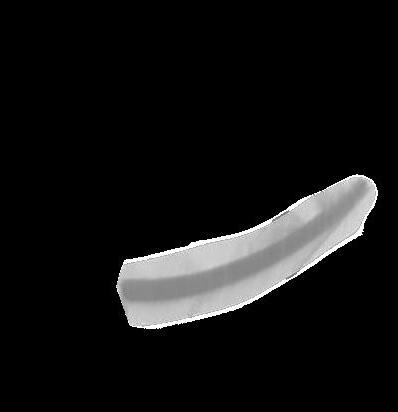



free allocation. The commission suggests the Government reduce the subsidiary businesses’ allocations on carbon liabilities. In other words, businesses have to reduce emissions, not rely on subsidiaries.
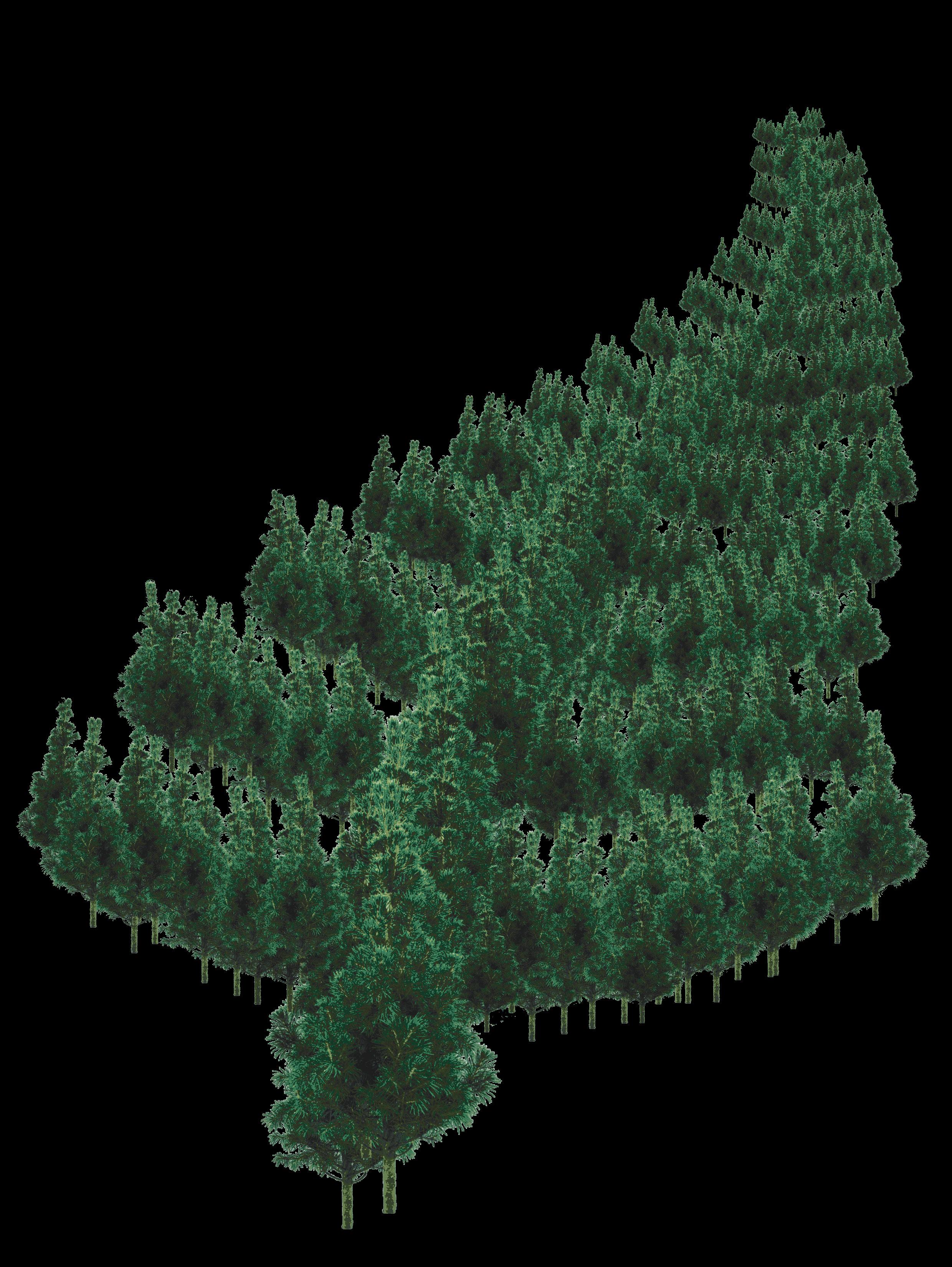
One issue has been the stockpile of credits in private ownership. There are 144 million units held in the NZ ETS as of June 1, 2022. This is about four times as many units as were surrendered for emissions released in 2021. The commission suggests reducing auction volumes, and driving down the surplus by 2030. Watch the price rise.
Auction price levers should be pulled, suggests the commission. It suggests reducing the limit on the number of units available for auction from 16m in 2023 to 10m in 2027. It also suggests raising the trigger prices for the cost containment reserve and auction reserve price. Combined, these moves set the tone for the carbon market which agriculture is being drawn into.
• First published in Country-Wide magazine September 2022.
Ballance Farm Environment Awards regional winners
Geoff and Jo Crawford are charting their own course with reduced fertiliser and water use. By Delwyn Dickey.
Farmers have got to get off the nitrogen drug,” Geoff Crawford says.
Wanting to show it is possible to be both financially and environmentally sustainable in a large-scale farming operation saw Geoff and Jo Crawford enter the 2022 Ballance Farm Environment Awards.
Here they won the Northland Regional Supreme Award, including Ballance Agri-Nutrients Soil Management Award, DairyNZ Sustainability and Stewardship Award, Hill Laboratories Agri-Science Award and WaterForce Wise with Water Award. Geoff and Jo are trialing different pasture species in their paddocks as they adapt to a warming northern climate, and finding ways to reduce both synthetic fertilizer and water use. The couple’s home looks out over the vast Hikurangi Swamp farm land, west of Whangarei.
And although they’ve farmed in the area for 30 years, with their operations covering dairy and beef, they hadn’t farmed “the swamp”.
Then seven years ago they bought three farms over several years on the swamp, and set about adapting the dairy operations to accommodate the occasional flooding. Sitting side-by-side, the farms totaling 260 hectares are run as a single operation, and run 1000 cows. Another 140ha dairy farm in the Hikurangi Hills runs a 500-cow herd. Combined they average 590,000kg of milksolids annually. The only downside of the swamp operation is the main infrastructure buildings, including the 50-bale rotary, are at one end of the farm, so it can be a bit of walk for the cows. To help counter this a second milking shed still operates for about three months of the year at the other end, for the autumn herd.
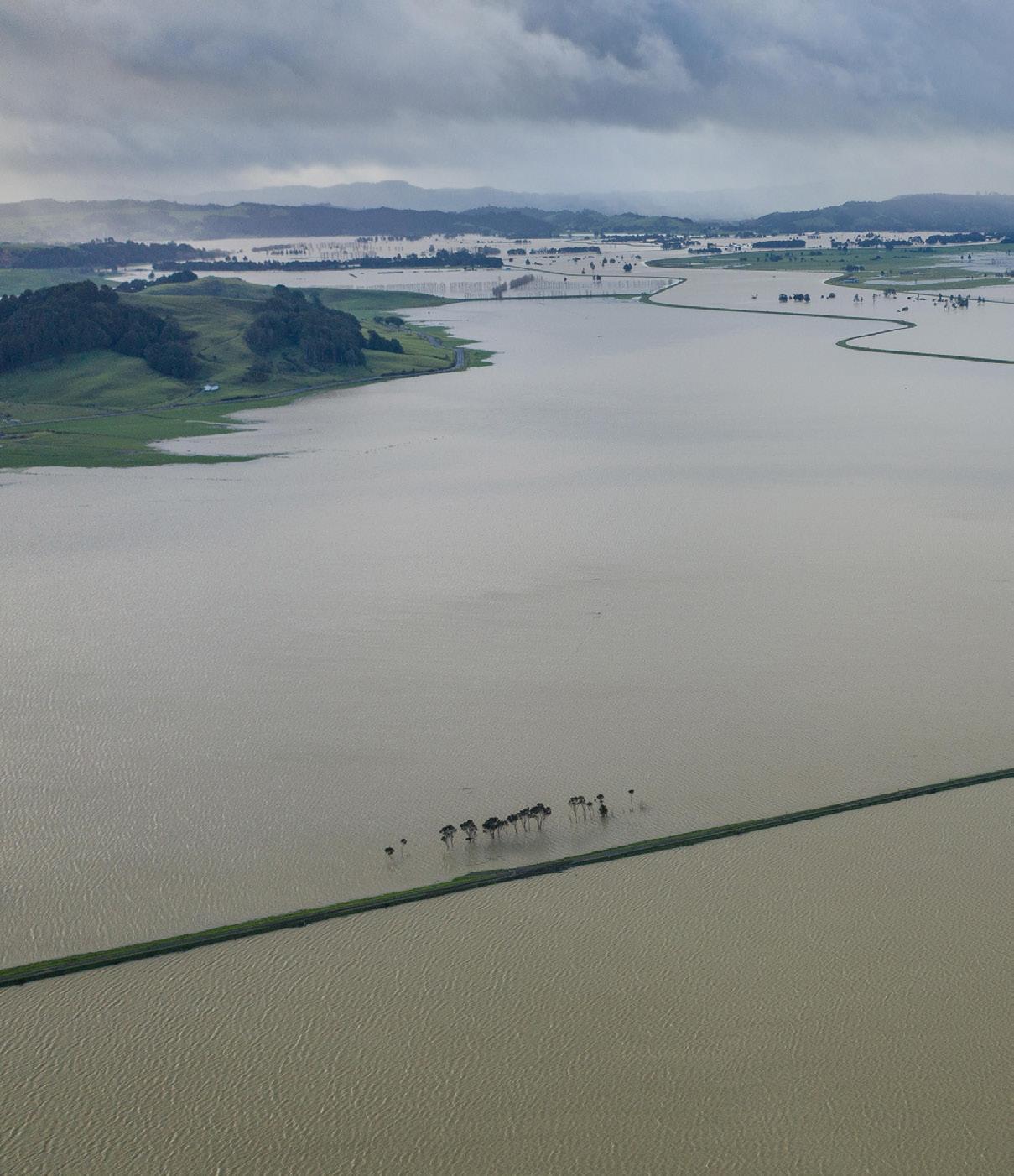
Most of the 1000 calves born on the farms each year are destined for beef production, and Geoff has built a large
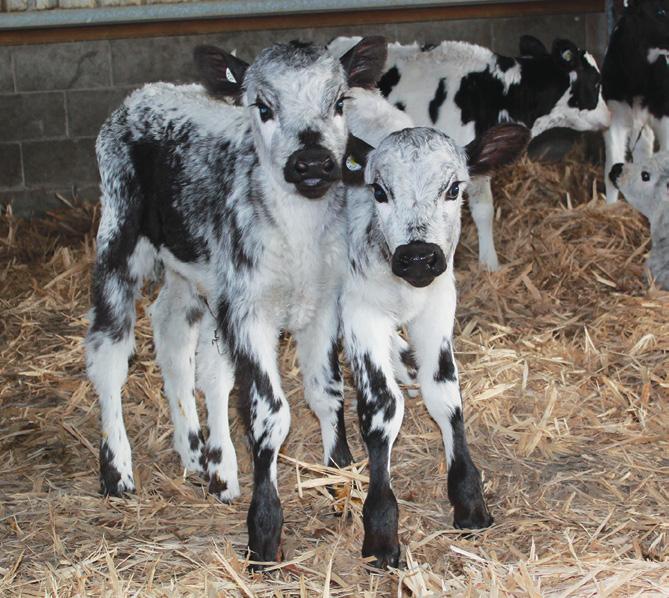
barn specially for them.
The changing climate is seeing a lot more pasture growth in autumn and has seen them shift to mainly autumn calving. The 60% autumn calving will likely increase to 80% in the next couple of years, Geoff says.
When they first bought the home farm it had been set up in a way that used a lot of water – easily 70 litres per day, per cow - with their effluent pond filling up too quickly and Northland Regional Council unhappy. Cows were also injuring themselves slipping on the concrete in the milking shed.
This saw Geoff covering the concrete with rubber mats, and start scraping instead of washing down the yards. The water on the backing gate was also stopped. They may be expensive, but rubber mats are needed to do this properly, Geoff says, as the concrete gets very slippery without them. Big water washers for the cups were changed to small squirters. In the end, having installed a water meter, they say they were able to show the council they were using far less water than the average 70l/day/cow and didn’t need to get an annual $2500 resource consent for water. While flooding can be a nuisance, farmers on the Hikurangi Swamp have learned to adapt. July is the wettest month with flooding on the plains almost every year, says Jo. Covered stand-off pads for the cows are becoming more common in the area, as flooding can see some paddocks out of action for up to two months.
The Crawfords have built a covered standoff pad that can hold 600 cows.
While these floods keep farmers on their toes, Jo and Geoff use them to their advantage. The big floods only tend to happen about once a year and Jo and Geoff now use these events to significantly cut back on the amount of synthetic fertiliser they use by making compost from the animal manure deposited on the stand-off pad.
When flooding looks likely a layer of pine peelings goes on the floor of the pad, before the cows are moved in. Rather than standing for days on hard concrete this makes the cows’ stay more comfortable and they can lie down on it.
Here they are fed, watered and can be moved off to be milked, with more peelings being applied over time. When the paddocks have recovered the cows are
moved off again. About 30 tonnes of lime is mixed in with the peelings at this time - while still on the pad, before the whole lot is scooped off and set aside in huge mounds. Normally a couple of tonnes of urea would also be added, but the high cost has seen him skip that this year, says Geoff.
The peelings also can’t be put out on to the paddocks at this point as they would suck nitrogen out of the soil as they break down, he says.
The pile is left to break down to nutrient-rich compost. A natural part of this process sees the pile heat up which kills any seeds or pathogens in the mix.
The compost goes on their maize paddocks well before the maize goes in. Not only does it put nutrients back into the soil it also helps it hold more moisture – important in hot, dry summers.
While their paddocks don’t need much nitrogen now, they lack sulphur, Geoff says, using both sulphate of ammonia and potash on them.
Adapting to warmer and drier summers, along with replacing damaged pasture after flooding, has seen Geoff trialing not only different pasture species for different areas on their farms but also the timing and order in which they are laid.
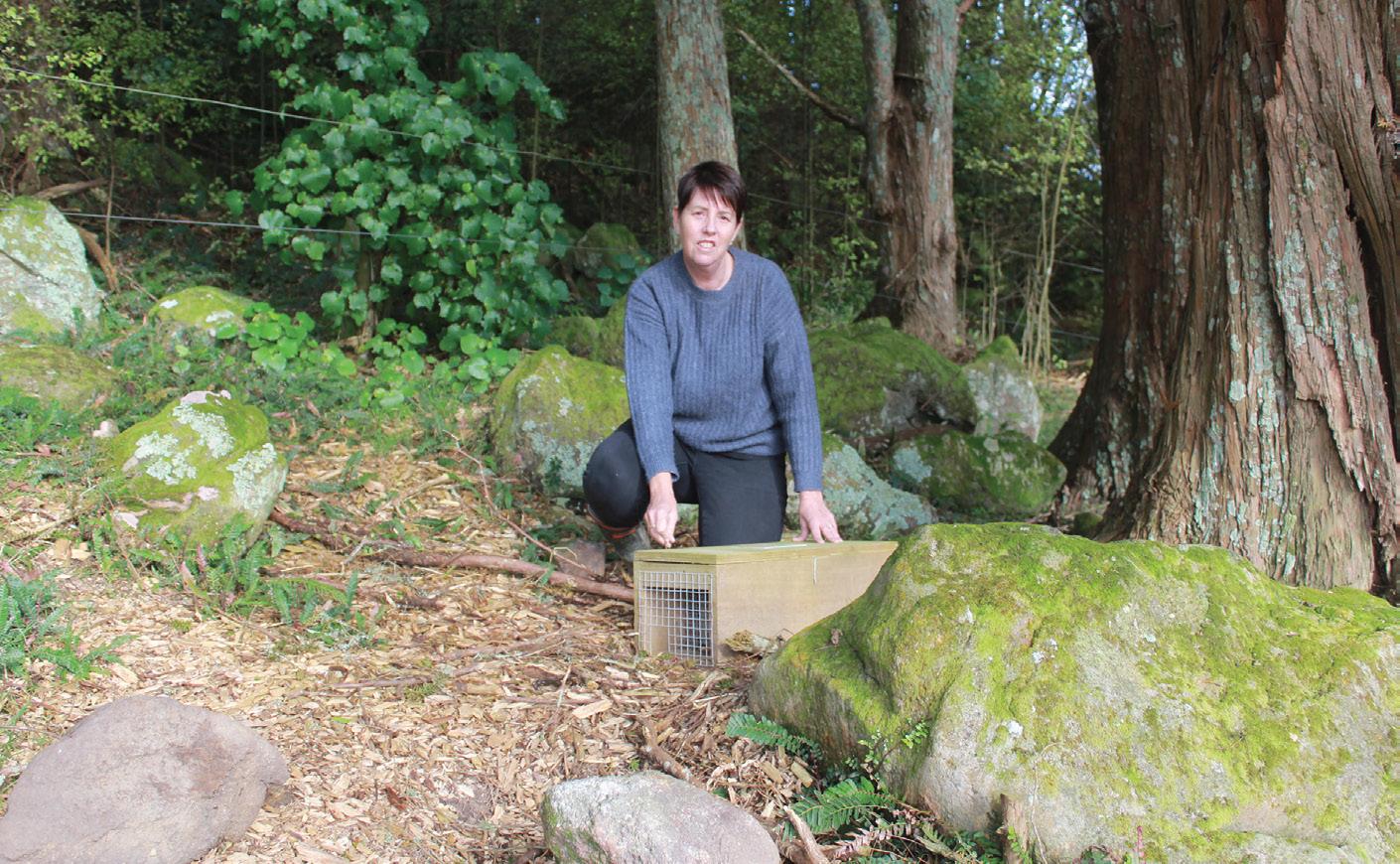
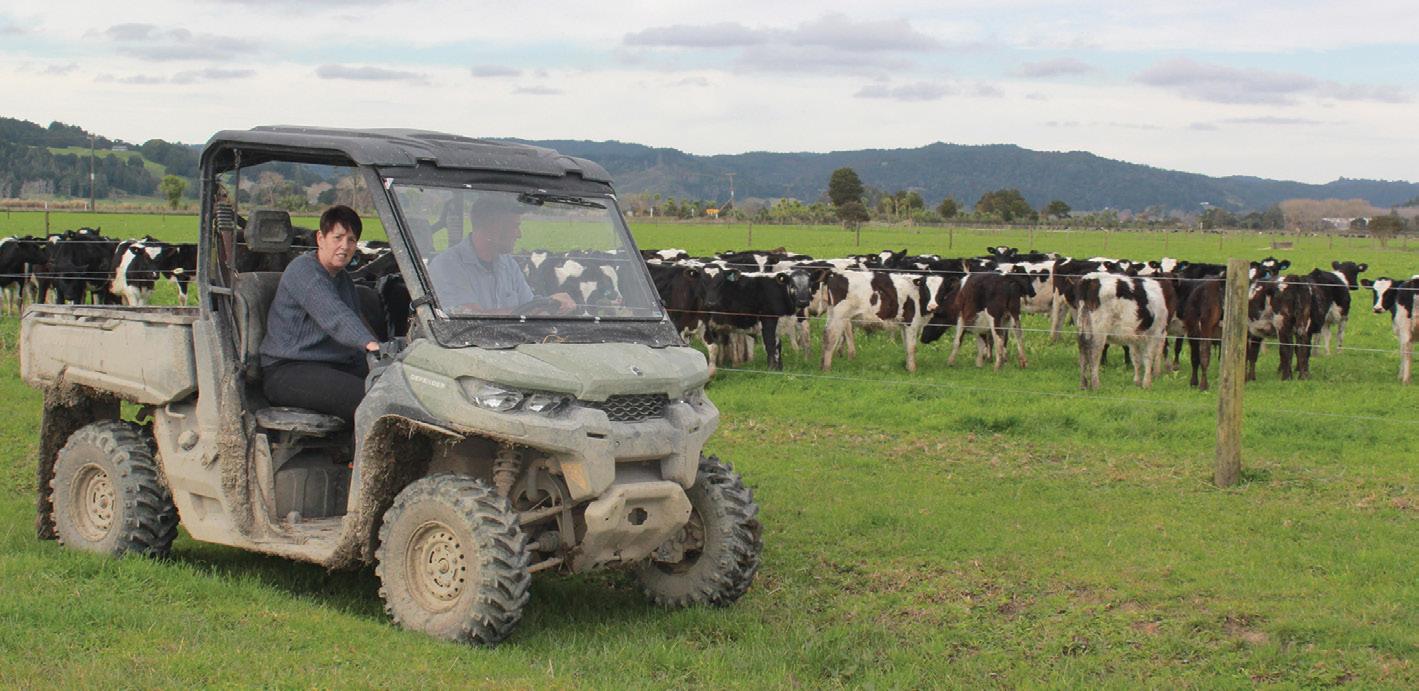
High flood risk areas that are likely to flood annually, make up about a third of the dairy farm. When water damaged these pastures are over-sown with chicory and clover.
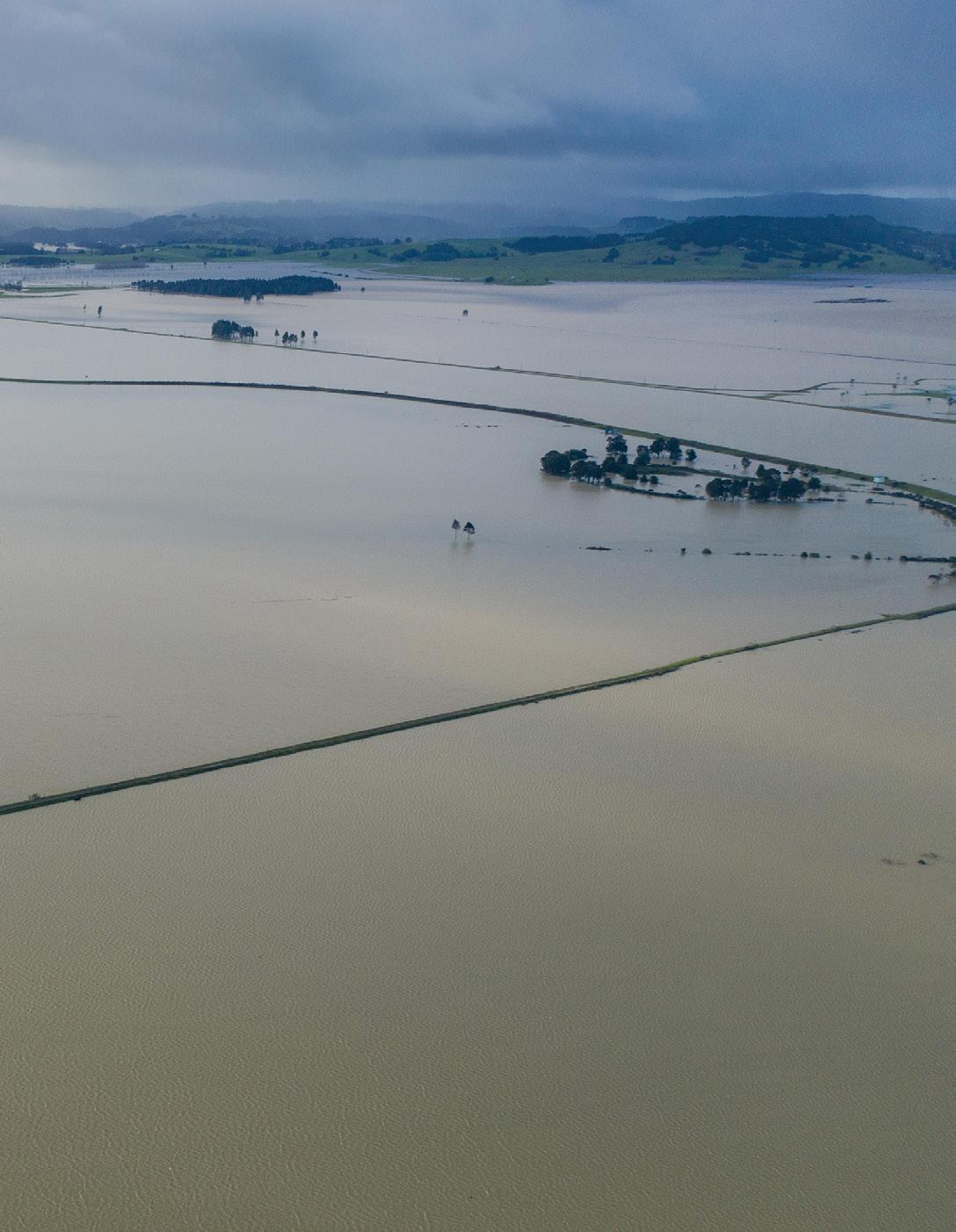
“We’ve been getting 20t/ha of good chicory crops. We’ll keep that for two years,” he says.
If there is another wet weather event
‘Generally, plantain performs well in warmer conditions, with an optimal growing temperature more like that for clover and higher than for ryegrass.’Left: The Whangarei couple turn flooding on the Hikurangi Swamp to a positive by making compost. Above: With 80 kiwi on their property trapping to protect them has become just part of the weekly routine. Below: Jo and Geoff Crawford run multiple dairy and beef farms including on the Hikurangi Swamp.
this winter that will change to an annual grass and then sow chicory again in the spring. Areas that have some flood risk, again about a third of the farm, are being transitioned to Mohaka – an Italian hybrid ryegrass, chicory and clover mix.
Where there is no flood risk Geoff is using Oakden - a broad spreading fescue, with Hummer – a tall fescue.
“With eight cows/ha this has to be strong enough to handle a 10-day round with lots of cows on it,” he says.
Geoff has done more trialing on the 60ha runoff block just along the road, where the weaner calves are raised.
“We found planting clover with permanent pasture in the first winter sees the grass shade the clover out. Grass is more dominant and people also put nitrogen on it to make it grow – come autumn the clover is gone.”
Instead, in the first-year chicory and red and white clover mix go in the paddocks and are left for two years. Permanent rye grass is then drilled in at the beginning of year two.
Establishing the nitrogen-fixing clover first, for a year or two before putting the ryegrass in has been a game changer for Geoff, but the high clover count means calves need to be monitored more for bloat. The chicory also alleviates eczema, which is common in autumn. It doesn’t eradicate it, but dilutes it, he says.
Geoff has also trialed plantain which is being seen as a popular forage species that reduces both nitrous oxide and methane emissions.
But this has raised a red flag for Geoff over the use of plantain in the north
under his management system - that doesn’t include nitrogen fertiliser.
“In spring the cattle will eat it but once it heats up and the plant gets stressed – the cattle won’t eat it – it becomes unpalatable.” he says. “Put nitrogen on to it and they’ll eat it – but that’s not what you’re trying to achieve.
“Plantain is also really aggressive and a prolific seeder, especially in really hot summers when the black beetle has pulled everything out and the seeds get into the open soil and take off,” he says. “The cattle won’t eat it, and it blankets out clover or other species.”
Geoff even trialed it to see if plantain would survive a flood. It did. Now he’s got three years to break its cycle and get it out of his pasture.
Other successful agribusinesses Jo and Geoff have run over the years, in conjunction with farming, have included contract spraying and forestry contracting.
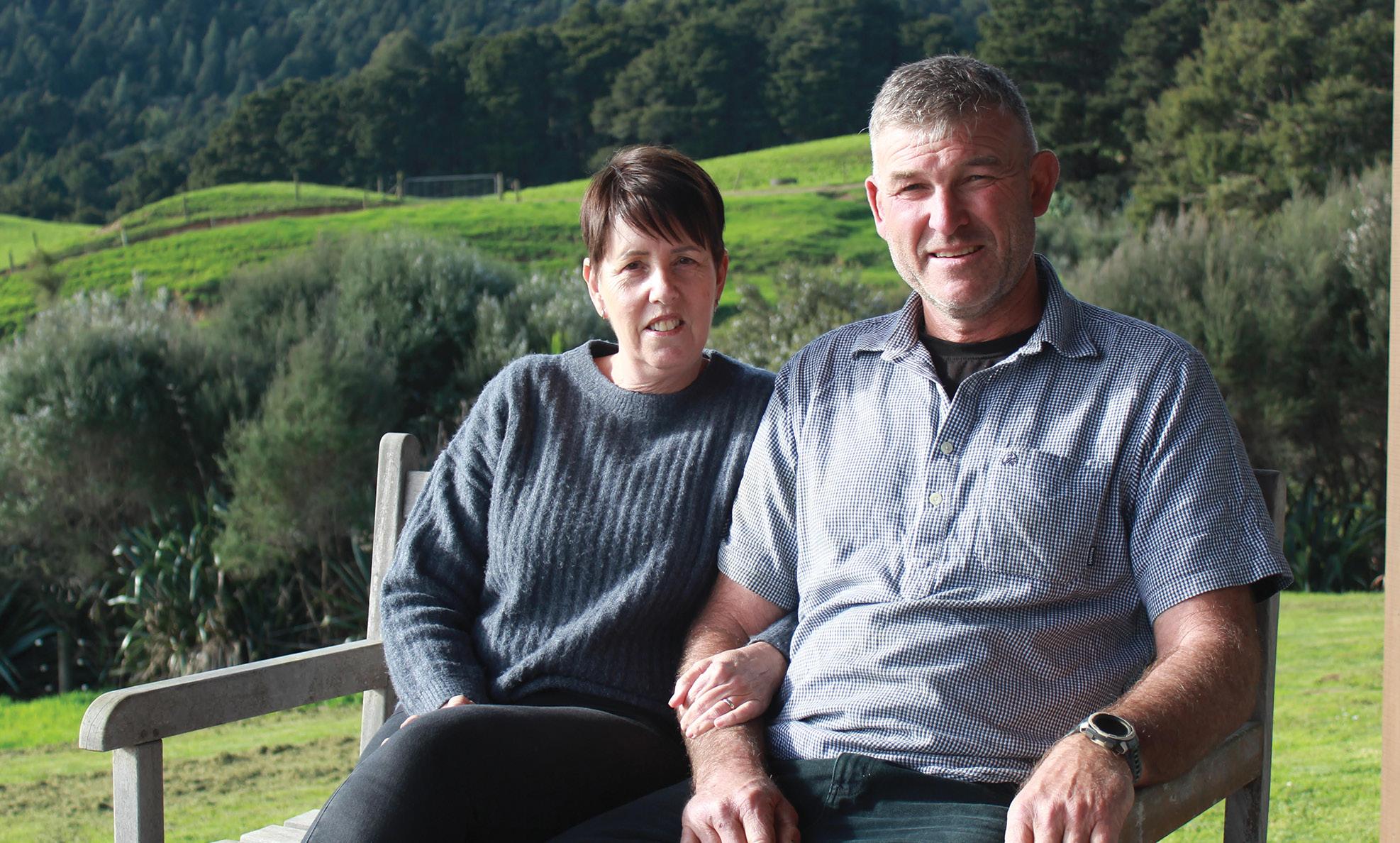
Jo is also a nurse, working three days a week, and currently studying toward a postgraduate diploma – while also doing administration for the couple’s multiple business interests.
Geoff’s trials on plantain may have raised an interesting quandary for emission reductions on some northern pastures, under some management. AgResearch senior scientist Mike Dodd says research to date does support the ability of plantain to reduce nitrogen losses from the urine patch, and consequently nitrous oxide emissions.
So finding ways to manage pasture that includes plantain successfully, needs to be looked at carefully.
Research is underway by industry, including DairyNZ, PGG Wrightson Seeds, Fonterra, alongside government and science organisations such as AgResearch, seeking to further grow the understanding of the effectiveness of plantain as an animal feed in different conditions, Mike says, with regional field trials underway across the country.
He has heard anecdotal reports of poor palatability of plantain, which can occur where old tissue and hardening seed heads remain after a grazing round and the cattle are put off by it at the next grazing.
“Generally, plantain performs well in warmer conditions, with an optimal growing temperature more like that for clover and higher than for ryegrass,” he says.
“Plantain is certainly a prolific seeder and will readily fill gaps in pasture where there has been damage or death of plants due to other stresses.
“Many farmers complain they can’t keep plantain in their grass-based pastures due to suppression by ryegrass in cooler seasons, but it is likely a different story in Northland where the warmer winters favour strong growth throughout. It could be that a strong winter active ryegrass is an option in this circumstance.”
In Northland, seed supplier Agricom is running trials at Kerikeri to assess plantain yield and persistency in grass mixes with ryegrass and tall fescue, in different environments and soil types, says Northern North Island Territory Manager, Cassey Edgcombe.
Plantain has been used successfully in Northland for 25 years, she says.
While trialing has found individual circumstances of unpalatability at certain times of the year in general, they believe this is caused by old leaves left in pasture. But they also agree with Geoff’s results of unpalatability being associated with low nitrogen conditions.
“We have seen this successfully reset via topping while nitrogen use is also a useful tool to prevent it from occurring leading into the summer dry.”
It’s important to remember that when clinical signs are seen, serious damage to the calf’s gut has already occurred, reducing the calves ability to absorb feed and liquids, and opening a way for other bugs to cause infection.
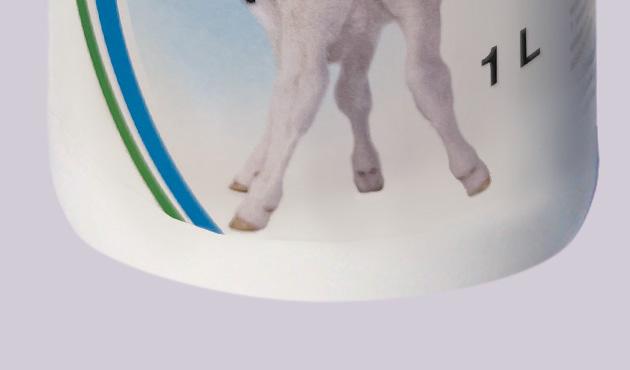

Even when the disease is treate d, the gut does not fully recover for several weeks, and appetite may be suppressed. Longer term effects may include poorer milk production at first lactation1.
BaycoxTM C acts on intra-cellular stages during schizogony and gamogony (all stages). BaycoxTM C covers all developmental stages except oocysts and is effective against first-generation schizonts.
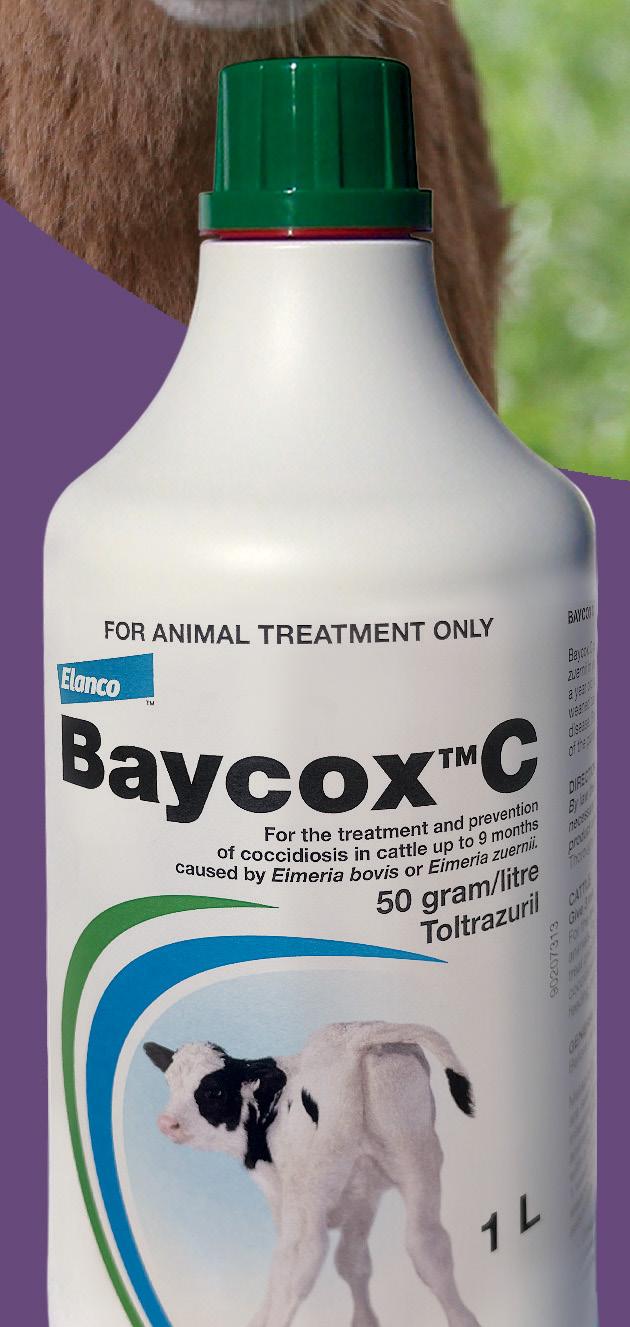







66 Treats
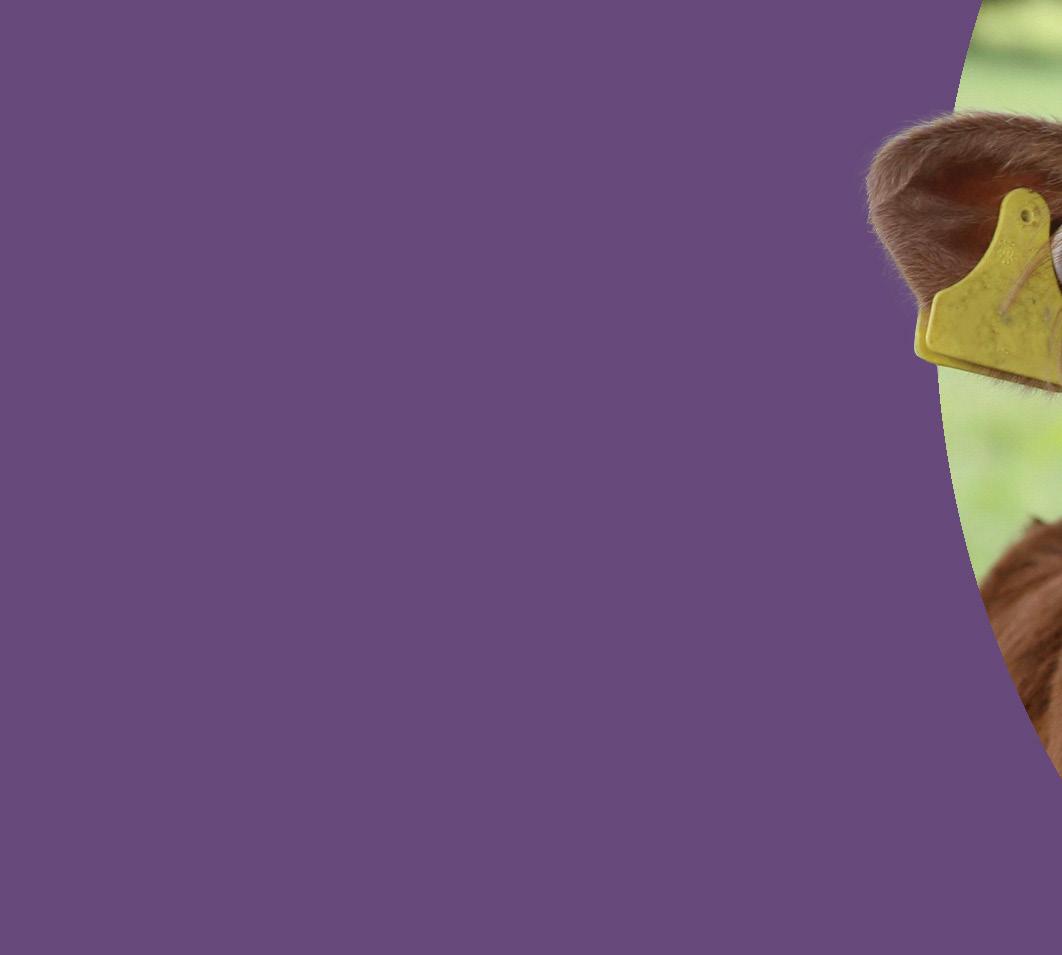
It will impact productivity even when you don’t see it.
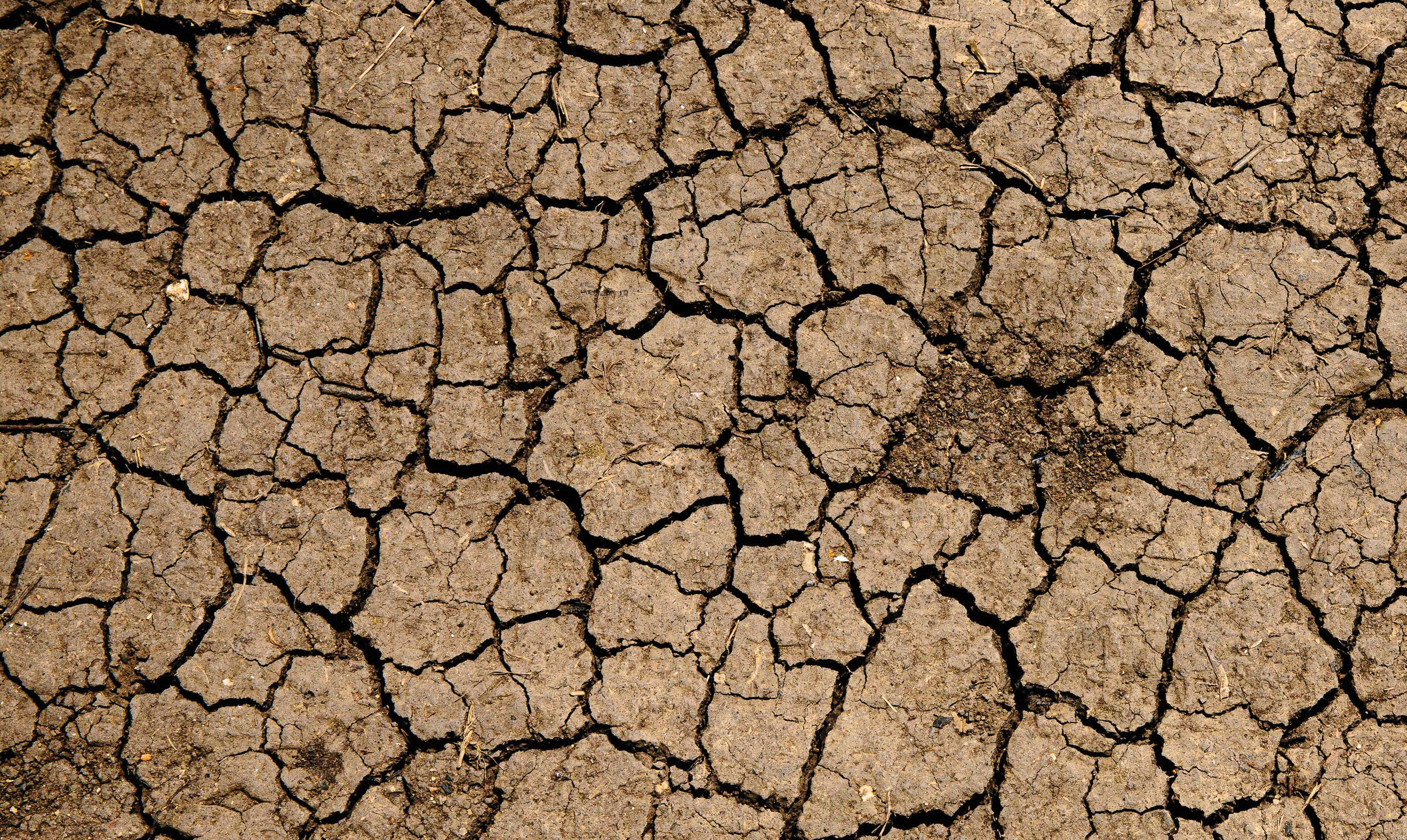
Different strategies took Waikato farmers through a tough season. By Elaine Fisher.
The long summer dry which lasted into autumn saw Waikato dairy farmers Bart van de Ven and Michael Woodward change their normal farm management practices to protect the welfare of their cows and pastures.
Both outlined the slightly different strategies they adopted to successfully come through a very tough season during a SMASH (Smaller Milk and Supply Herds) webinar in July called ‘Getting a grip this spring’, hosted by AnneMarie Case-Miller for SMASH and DairyNZ Senior Extension Partner Frank Portegys.
Bart and Vanessa are 50/50 sharemilkers milking 205 cows on a System 1 property at Springdale north of Morrinsville.
Michael and Susie Woodward own a 170-hectare dairy /dry stock farm near Otorohanga milking 320 cows once a day and they also run 300 Angora goats.
Bart said last autumn was tough and dry.
“In April we made the decision that we had
waited long enough to find rain and it was not coming. Stress levels were high for us. So, we bit the bullet and dried off on April 6 instead of in May as usual.”
Eighty tonnes of palm kernel was brought in to feed the cows and weekly plate meter readings were taken to check on grass growth.
“Grass cover now is over 2300. It’s phenomenal. We have really grown grass in the last two months, in fact, grown it better than ever. There’s some truth in the saying that grass grows grass.
“In our second week of calving, we had calved half the cows and the cows were seemingly looking almost better than last year. I don’t know what impact the palm kernel has had or if it’s because of more quality grass with not so much dead matter.
“However, it’s been the toughest season we have ever had cow-wise, and mentally. We have gone through hell.”
It was the first time in 25 years that the farm
Bart is sharemilking on had brought in feed. “It’s been a blessing. If we had not done it, I hate to think what the situation would be like now.
“My main concern was to get cows back into calf and to have low empty rates. The reason I got in all that feed was to be able to continue farming. We were running at a loss the last three months but at least we know the cows will get in calf again and we are back in the game.”
Michael (known as Woody) also brought in feed to get through the dry autumn and dried his cows off earlier than usual, basing that decision on grass cover and body condition.
“We used 30 tonnes of winter hay and straw in April to try to keep cows ticking through and not destroy paddocks. Through the winter, 70-day rounds were used to help keep the grass cover.
“We had the opportunity to buy 180 bales of feed early in May and had turned our nose up at it, but thankfully it was still available later and saved our bacon. We got through June and brought in another load of straw from Hawke’s Bay and 30 tonnes of ryegrass from Canterbury, not to put weight on but to keep the cows happy on the grass hay they were getting.”
Woody chooses not to feed palm kernel. In July his milking cows got 16kg of feed each day, 13 from the paddock and three through the shed. Dry cows were on 2kg
of straw and 10kg of grass in July and heifers received some meal when they were put through the shed for training ahead of coming into milk, and 10kg of grass.
“We got through the season and are at break even point.”
In late July cover on the farm was at 2100 and “the quality is fantastic”. That result has been achieved by standing cows off.
“We stood cows off the pasture more this winter than in the last three years combined but is has paid dividends because the pasture grazed has come back faster,” Woody said.
Only the heavier and mixed-age cows were stood off. The heifer mob was left on the paddocks. Woody doesn’t have a specific stand-off facility so used the milking yards when the rain was coming through. Depending on the weather the cows might be in the yard from 5pm at night to 8am the next day. Other times they would be there from 5am to 3pm. “Because of our ash soils and topography of rolling hills, the water disappears quickly so if the cows come off for a time they can get back on quickly.
“I hate standing cows off on concrete or on races but think if they have to go anywhere, clean concrete is better than races which can affect their feet and damage the race.”

By the end of July Woody was planning to apply 85kg/ha of ammo fertiliser to the whole farm by helicopter to help the farm “climb out sooner rather than later”.

Bart, who farms on sandy soils, stood his cows off on the concrete yards five times from June 1 to mid-July, usually between 3pm and 7am the next day.
“Some heifers and young stock were in the race, but we have got Jersey cows which are better at everything, and definitely when it comes to their feet. I think I had two lame cows last season and not one this season.”
Feed on Bart’s farm is worked out on a square metre basis with milkers offered 100sq m each on paddocks with 3000 cover plus 1kg of palm kernel. Every year
‘The planner gives a basic outline. However, who gets what area on the day depends on how much pasture is in the paddock, especially this year when paddocks have come back more inconsistently than in the past.’
Bart prints off the DairyNZ spring rotation planner.
“If I don’t have the planner, I cannot see far enough ahead of myself to make decisions. The planner is the best tool on the DairyNZ website. I’ve used it for 18 years. The one time I didn’t I got in the shit so went straight back to it. It works for me every single time.”
Occasionally Bart veers off the guide. “Sometimes it should be an 80-to-83-day round but that can drop to 70 days if required. It’s not stuck in concrete but by using it I have never had no grass.”
Frank said the spring rotation planner was a deceptively simple tool to stop farmers going too fast too early in spring, and to allow grass to regrow before putting cows back into paddocks. Woody also uses the planner but doesn’t stick to it ‘to the nth degree”.
“The planner gives a basic outline. However, who gets what area on the day depends on how much pasture is in the paddock, especially this year when paddocks have come back more inconsistently than in the past.”
Frank said the pressures of first the dry summer and then a wet winter could be demoralising, and he asked what Woody and Bart were doing to look after themselves and their staff. Bart and Vanessa, the sole staff on the farm, aim to make sure the basics are done, but also get plenty of rest. They take part in a
regular Monday night catchup for farmers in the Springdale/Waihou area.
“We meet at different farms from 6.30pm to 7.30pm for a beer or two.” Bart and Vanessa have also bought a V8 and plan to go cruising in the summer.
Woody said reducing stress on himself and Susie was one of the focuses when they came north after farming in the South Island.
“From day dot we have been once-a-day milking for the full season to make sure we have time for the kids’ school events.
“We also sort out what jobs are nonnegotiable each day. At the moment that’s milking the cows, organising the bobbies, feeding stock and getting the kids to school. Then for the rest of it – if it doesn’t get done, don’t stress and do it the next day.”
This year for the first time the couple have taken on a manager fulltime and are already seeing the benefits.
“It is a chance for us to give someone an opportunity in the industry and also enable us to keep doing what we do for years to come.”
Frank and Anne-Marie urged farmers feeling under stress to reach out to DairyNZ, SMASH or other support agencies and where possible, to get off farm for social and industry events.
“Also check on your neighbours to see how they are,” Anne-Marie said.
• Dry cows off earlier than usual
• Bring in extra feed
• Stand cows off paddocks in the wet
• Prioritise farm jobs
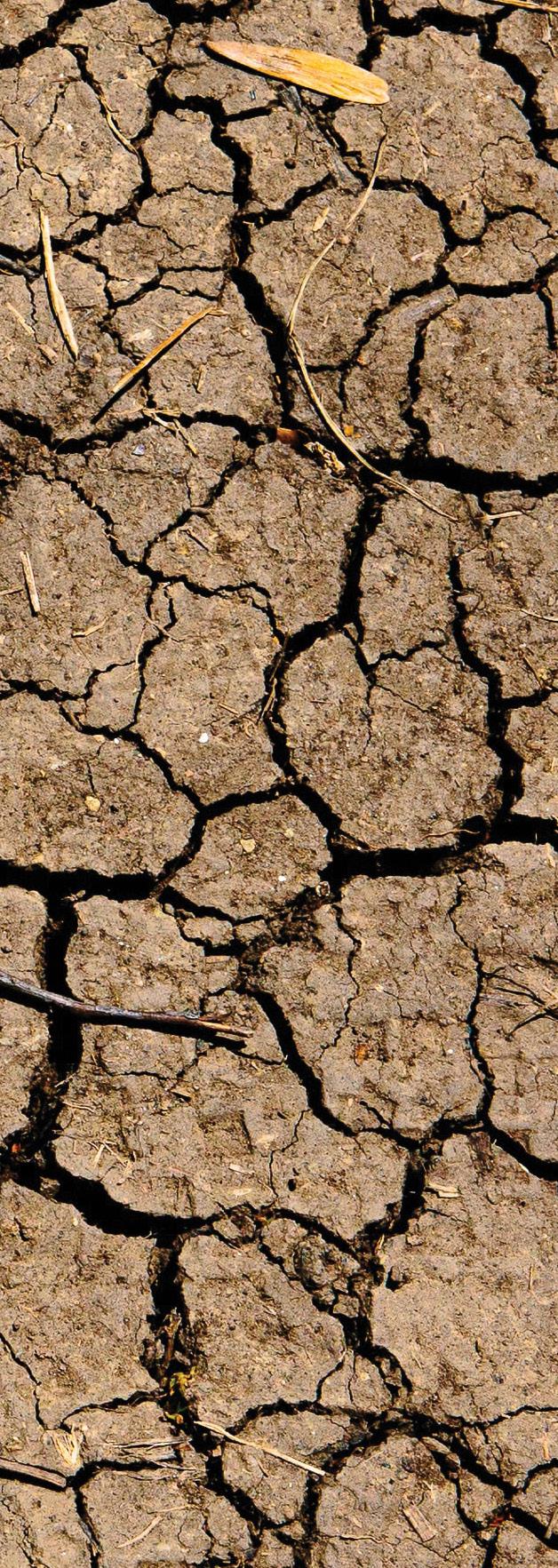
• Use the DairyNZ spring rotation planner
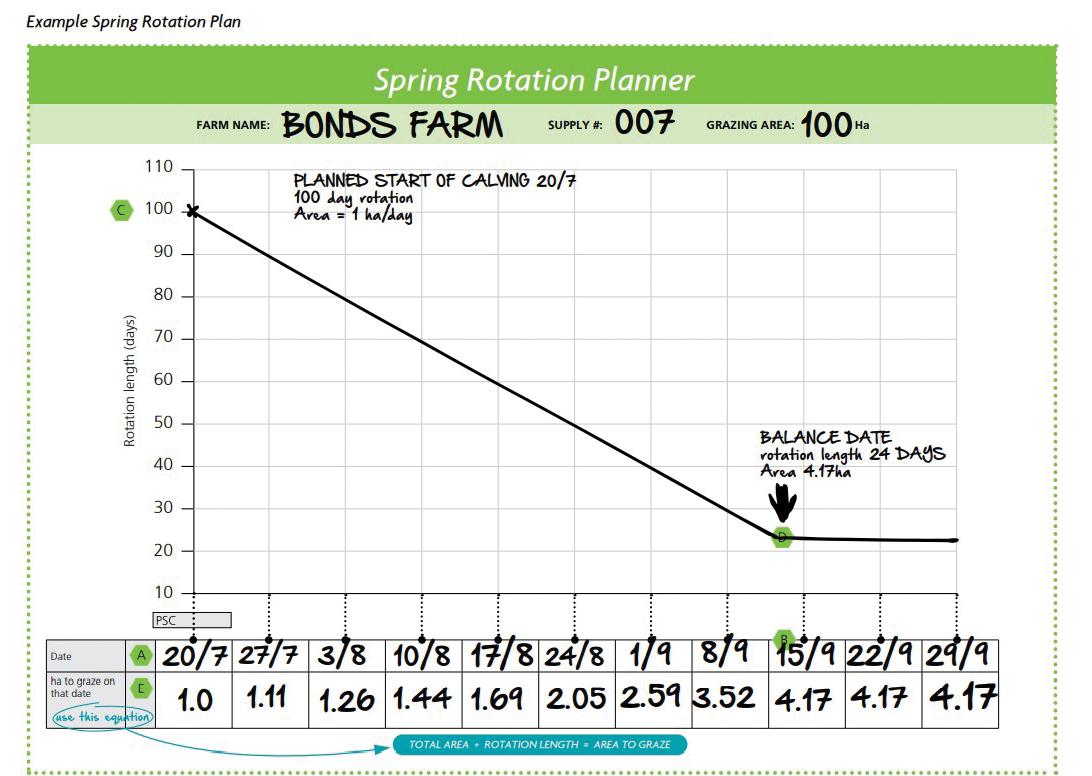
• Look after yourself
SMASH (Smaller Milk and Supply Herds) is run by a group of NZ dairy farmers with a passion for the industry and for helping to build a strong and sustainable future for dairy farming.
www.smallerherds.co.nz
DairyNZ is the industry organisation that represents all NZ dairy farmers, supporting them through investing in research, resource development, extension, and advocacy to ensure they lead the world in sustainable dairy farming.
www.dairynz.co.nz
Our farms and our futures depend on us farming smarter. We have reached peak cow numbers and the nation is calling for better cows. Cows that can generate more milk, more efficiently. Cows that can produce more milk solids with less liveweight. Cows that can better utilise nutrients with lower nitrogen and methane outputs.
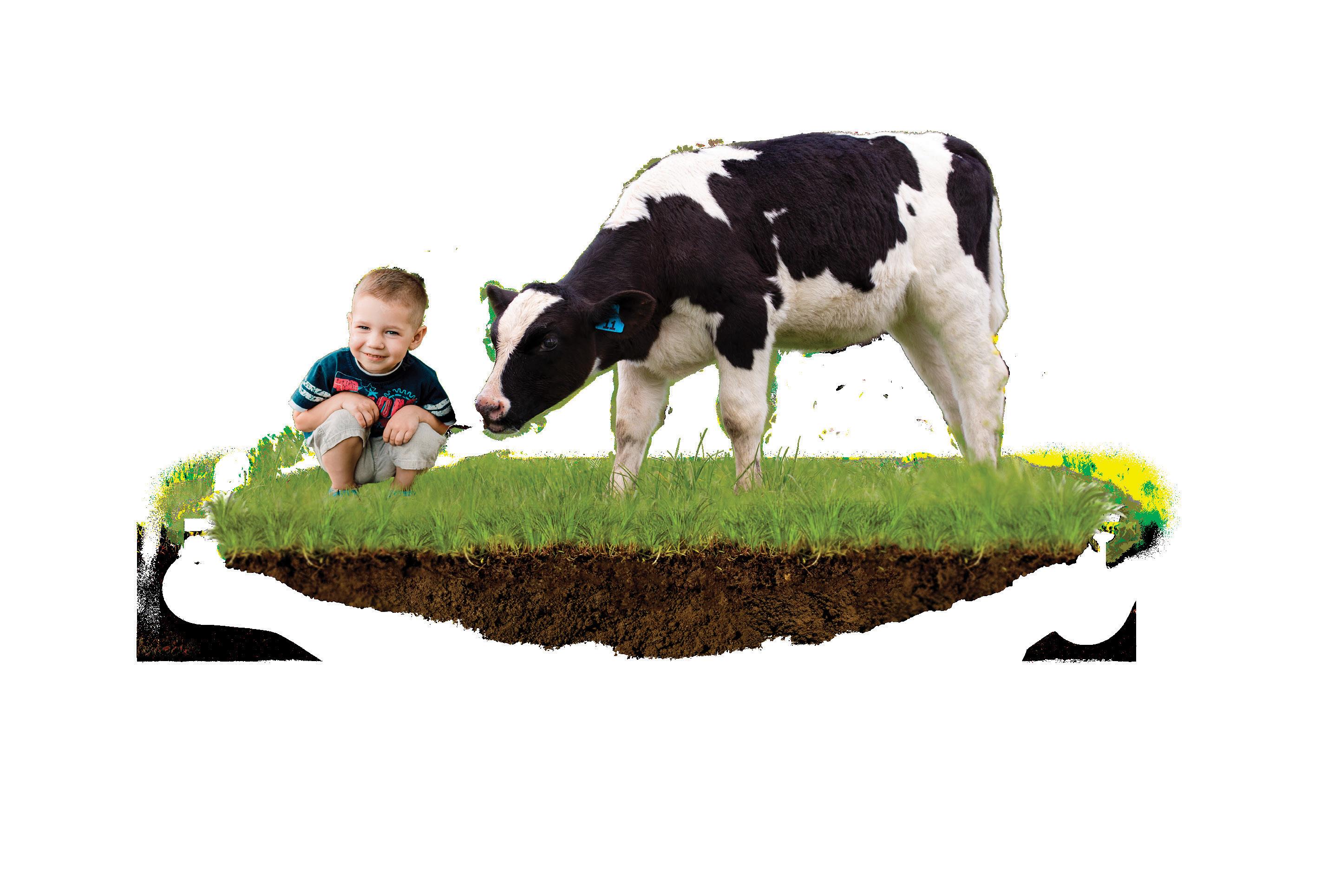
Our Premier Sires ® teams have been expertly chosen to help you accelerate your rates of genetic gain. While our Sexed team provides a 90% chance of generating heifer replacements from your best cows.
And every gain you make filters through the national database, building herd insights, and empowers other farmers to make better decisions for the next generation.
Talk to your Agri Manager today about farming for the next generation. Farm smarter with Premier Sires.
There's always room for improvement
Trials of a regenerative grazing system with diverse pastures at Align Farms’ Clareview Farm has variable results. Anne Lee reports.
Diverse pastures have been given the big tick from Align Farms as a fantastic tool to cut synthetic nitrogen out of the system but they haven’t earned the same accolades when it comes to reliability.
The Align team started its transition to the half-and-half trial four years ago on its Clareview farm sowing diverse pastures and removing synthetic nitrogen altogether from the regenerative paddocks.
They replaced superphosphate with guano and began using a liquid brew that includes fish fertiliser, humates, fulvic acid, other micro nutrients such as boron (Bo) and Molybdenum (Mo) as well as effective microbes (EM) - a kind of soil probiotics.
Last season was the first full year of data collection for the study. Align chief executive Rhys Roberts says financial returns from the regenerative side of the trial were disappointing and changes to
grazing management of diverse pastures will be made this spring and summer in the hope of rectifying that this year. There’s even some consideration being given to adding in a little nitrogen if other tactics don’t work.
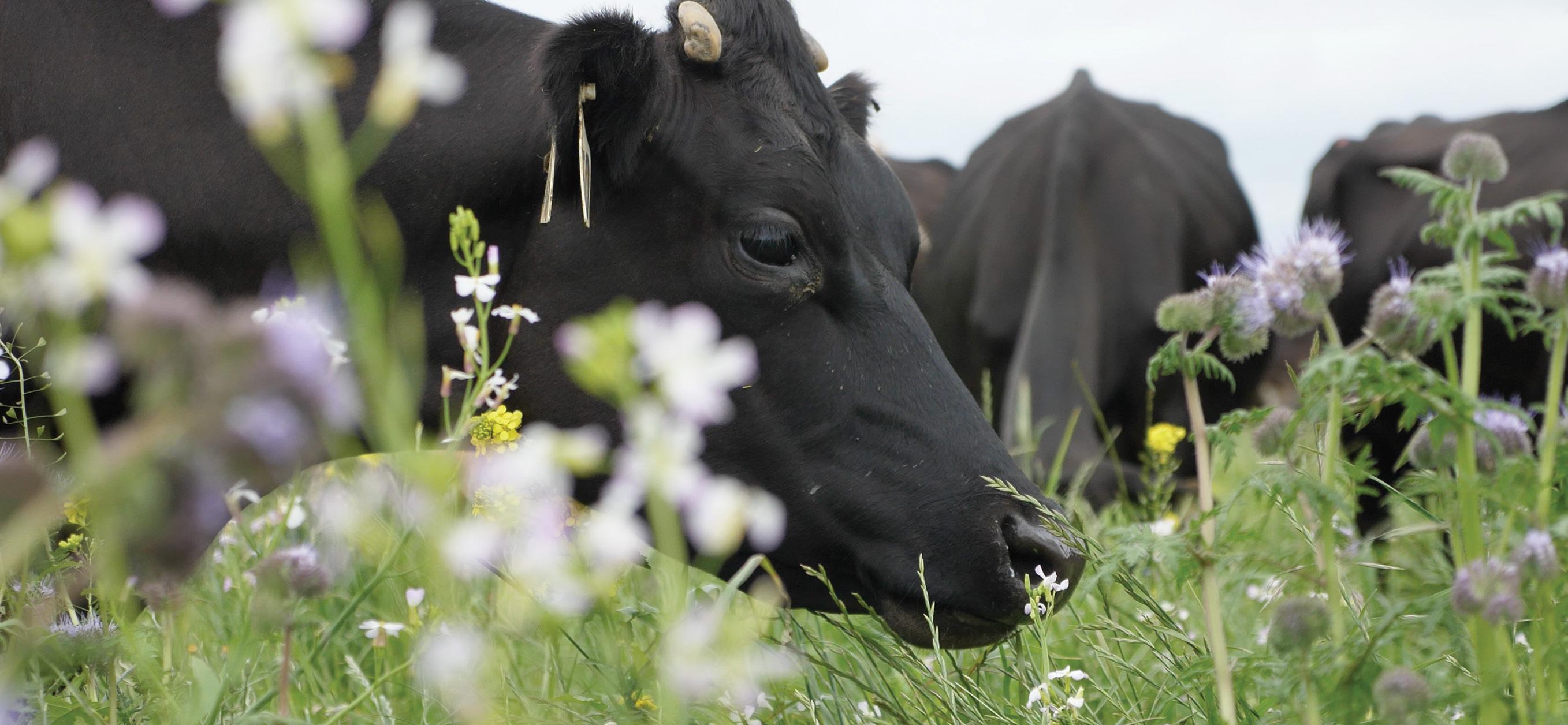
Profit or earnings before interest and tax (EBIT) per hectare for the regenerative area in 2021/22 was $1651/ha less than the $6943/ha earned on the conventional area of the farm. Rhys says much of that difference was due to increased supplements used on the regenerative side to combat poor autumn growth.
“We were very focused on sticking to the regenerative grazing principles of long grazing rounds, but in retrospect the quality of the diverse pastures suffered as a result.
“We did grow more feed overall in the diverse pastures – 800kg drymatter (DM)/ha more overall – but the extra was through the spring and summer with quality declining as the season went on. Then over autumn we had poor growth in the diverse pastures.
“We’d been hurt the previous season by not leaving a high enough closing cover on the regenerative side at the end of the season so last season we knew we had to close out with about 2200kg DM/ha.
“To do that and get the milk production we were after we had to bring in more supplement.
“Even then, though, we had to dry off on May 15 on the regen area.
“At first glance of the data you’d say late season pasture production and milk production is the whole issue.
‘We were very focused on sticking to the regenerative grazing principles of long grazing rounds, but in retrospect the quality of the diverse pastures suffered as a result.’Align has moved away from hyper-diverse pastures to 8-10 pasture species instead.
The 2021/22 season was a busy one – not only has Rhys been overseeing the regenerative trial, the farms now have a market garden supplying veges to farm staff across the seven Align farms, the company has bought the Cyclops yoghurt brand, they won the Safe and Healthy Environment Award as part of the Ministry of Primary Industries Good Employer Awards and Rhys was awarded the Zanda McDonald Award.
“But we’re thinking that, given production yield on the diverse pastures is substantially more than the conventional over the October to February we need to shorten up the grazing round length a little over that period, lift pasture quality and get more milk early.
“That’s going to take the pressure off the farm system at the later end of the season.
“So we’re going to target a 25-day round rather than 30 days – last season we never dropped below 30 days.”
Align has modified its view on what constitutes an ideal diverse pasture too, moving away from what it calls the hyperdiverse swards containing 20 or more species to one that contains 8 -10.
“The issues we’ve had with them is that they a just too variable either from paddock to paddock or within a few days for the same paddock in that you can see a huge drop or increase in drymatter over just a few days if you get a frost for instance or a burst of really hot days.”
Included in the 8-10 species is cocksfoot, fescue, hybrid ryegrasses, Persian clover, large leaf white clover, small leaf white clover, red clover and herbs chicory and plantain.
The pasture production graph by paddock across both the conventional and regenerative paddocks shows that
the regenerative paddocks are growing a lot of feed without any artificial nitrogen (urea).
Four paddocks on the regenerative side were not regrassed but receive no nitrogen and the regenerative fertiliser regime.
They make up four of the bottom five producing paddocks on the whole of Clareview.
“It shows you that a sudden wholesale cut in nitrogen across New Zealand could be severely detrimental to production if you didn’t put more diversity into pastures – get the clover up at least.
“It’s also very clear how we got to the point as a country of using a lot of N (urea).
“The return on investment of putting that first 10k-20kg N/ha on is huge, it’s the same for the second 10-20kg/ha.
“The problem is as farmers we carried on thinking it was going to be linear but it’s not.”
Rhys says if they can’t get better milk production over the late spring and summer through their altered grazing management the team have been discussing the possible use of 10kgN/ha in February as Calcinit - 15.5% N and 19% calcium (Ca).
It’s fully soluble and could be applied with other nutrients in the regenerative
fertiliser programme through fertigation via the Tow and Fert.
“It’s not something we’ve settled on yet – the last thing we want is to get five years down the track of this study and people discount all our findings because we added nitrogen in one year.”
The Overseer N loss number is 33kg/ha/ year - almost half that of the conventional side’s 65kg/ha/year.
For every 1kg N lost on the regenerative side 38kg milksolids (MS) is produced making it significantly more efficient than the conventional side which produces 25kg MS/kg N loss.
Heading into this season Rhys says, cows have wintered exceptionally well this winter on diverse pastures at Align’s support block near Methven with the regenerative herd wintered on 12kg DM/cow/day of diverse pasture plus 2kg straw coming back at body condition score (BCS) 5.3 and the conventional herd, wintered on 12kg DM/ cow/day Kale and 2kg straw coming back at BCS 4.8. Per cow production is expected to be close between the two groups and although the lower stocking rate on the regenerative side means less total income, lower costs should mean profits are targeted to be within $174/ha of each other.

Unlike carbon dioxide, methane is a fast and furious gas, but it doesn’t need to be a liability. Sandra Taylor reports.
Managed well, methane can be a tool used to reduce global warming and go from being a liability for farmers to an asset.
This was one of the messages Professor Frank Mitloehner, an air quality specialist at University of California Davis, gave the audience at the recent Red Meat Sector conference in Christchurch.
Speaking virtually, Mitloehner called for the animal agriculture sector to take the challenge of methane reduction seriously to help address climate change.
“It will not go away, we need to reduce methane and if we do, great things can happen.”
Reducing methane will have the same effect as planting forests.
“You are reducing warming by reducing methane.”
Methane reductions could also offset gases emitted from other industries which will help the planet reach carbon neutrality.
It was important policy makers understood that farmers can be part of the
climate solution, but they need to work alongside farmers and take a carrot and not a stick approach, he said.
He also called for a change in the way methane was measured against other greenhouse gases as he believed the widely used matrix GWP100 was not fit for purpose.
Mitloehner described methane as a fast and furious gas in that while it is potent, it is short-lived and is removed from the atmosphere by hydroxyl radicals.
Methane is differentiated from carbon dioxide in that it is a flow gas which is destroyed in the atmosphere. Carbon dioxide on the other hand, is a stock gas that accumulates in the atmosphere and stays there for thousands of years.
This means a constant source of methane does not add additional methane to the atmosphere so there is no additional warming. It also means reducing methane will induce cooling immediately, unlike carbon dioxide which would continue to warm the atmosphere because it is a cumulative gas.
He drew the analogy of a bathtub. With the tap on and no drainage hole, the bath will just continue to fill and eventually overflow – as is the case with carbon dioxide. With methane, there is a drainage hole (in the form of methane sinks) so the water level will remain constant. Decreasing the flow will immediately drop the level, unlike carbon dioxide which will continue to overflow.
Mitloehner says GWP 100, the traditional matrix used to measure the impact different greenhouse gases have on the atmosphere, is troublesome, as it doesn’t correctly describe the impact constant sources of methane have on the atmosphere. It simply converts methane into a carbon equivalent and this overestimates the impact of methane on the atmosphere by a factor of three or four. A fact acknowledged in the IPPC’s 2021 climate change report.
“Every time we burn fossil fuels we add new additional carbon dioxide to the atmosphere.

“Methane is treated like a stock gas, yet it’s a flow gas.
“It’s not only produced, it's also destroyed.
“As long as you keep the herd size constant, you don’t add additional
carbon to the atmosphere and there is no additional warming.”
GWP*, which was developed at Oxford University, looks at the rate of change of methane and how it affects warming.
He believes GWP 100 will continue to be used by governments and other sectors. However it is important for sectors that are methane heavy, that there is a matrix such as GWP* that is fit for purpose.
The two can be used in parallel with GWP* being used as a way of defining production goals.
Mitloehner says methane heavy sectors such as agriculture shouldn’t be opposed
Dairy farmers in California have risen to the mandated challenge of reducing methane by 40% by 2030 and are now in a position where they have been able to diversify their businesses by selling renewable natural gas to the transport industry or carbon credits back to other industries.
Mitloehner said farmers were initially worried about the 40% reduction targets, but with the help of public funding, they covered their effluent ponds to capture
methane-rich biogas.
Rather than burning the biogas to fuel their dairy farms and communities, they send it off to be turned into renewable natural gas. As a result, the Californian dairy sector has reduced its methane emissions by 30% in just a couple of years, and that’s without rules, regulations or fines.
“This was with a carrot approach of financially incentivising the reduction of methane.”
to methane reductions.
“Methane losses are energy losses and we must aggressively work out how to minimise losses not only to be green, but to be in the green.”
Highlighting the reductions that have already occurred over the past 50 years, Mitloehner says since 1970, the United States beef herd has declined from 170 million head to 90 million today while production has stayed the same. Similarly, the dairy herd has shrunk from 25 million cows in 1970 to nine million today while production has increased by 60%.
By 2027 he expects the sector will reach carbon neutrality and beyond that, it will take out more warming from the atmosphere than it replaces.
Within the next few years, farmers would have numerous tools at their disposal to reduce the production of enteric methane which would further help reductions, he said.
• First published in Country-Wide magazine, September 2022
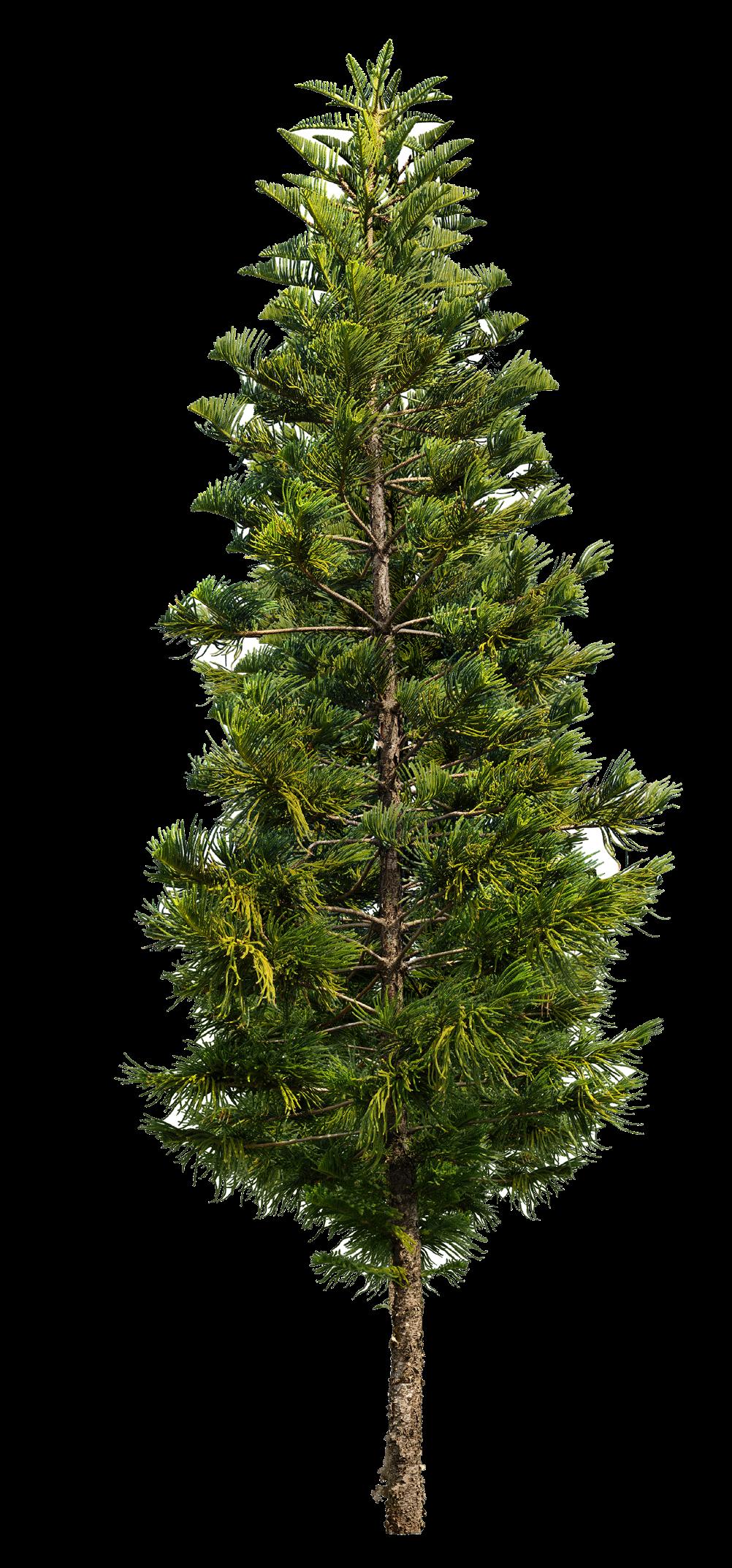
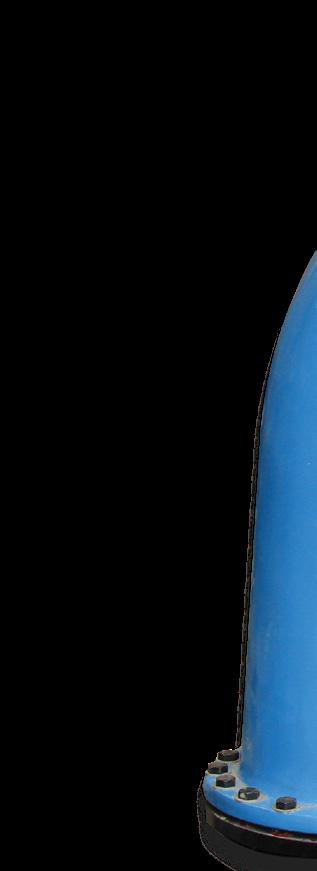
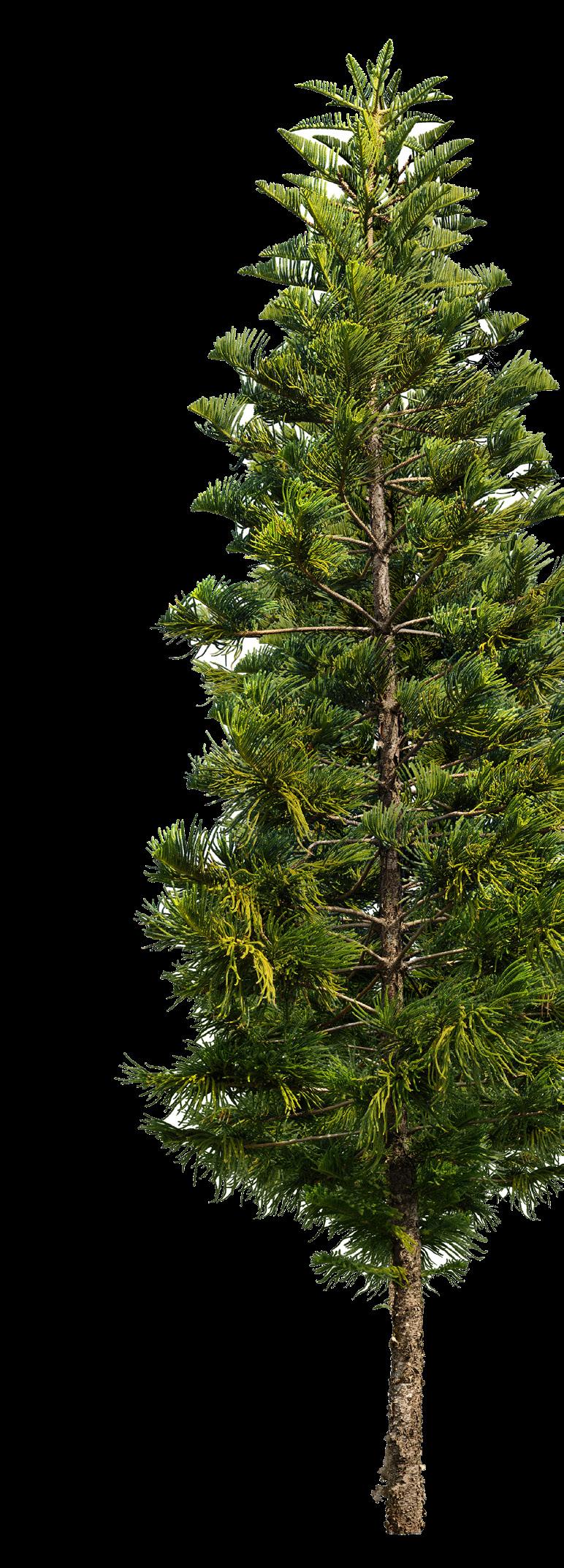
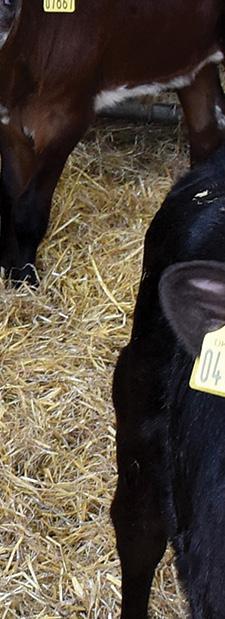
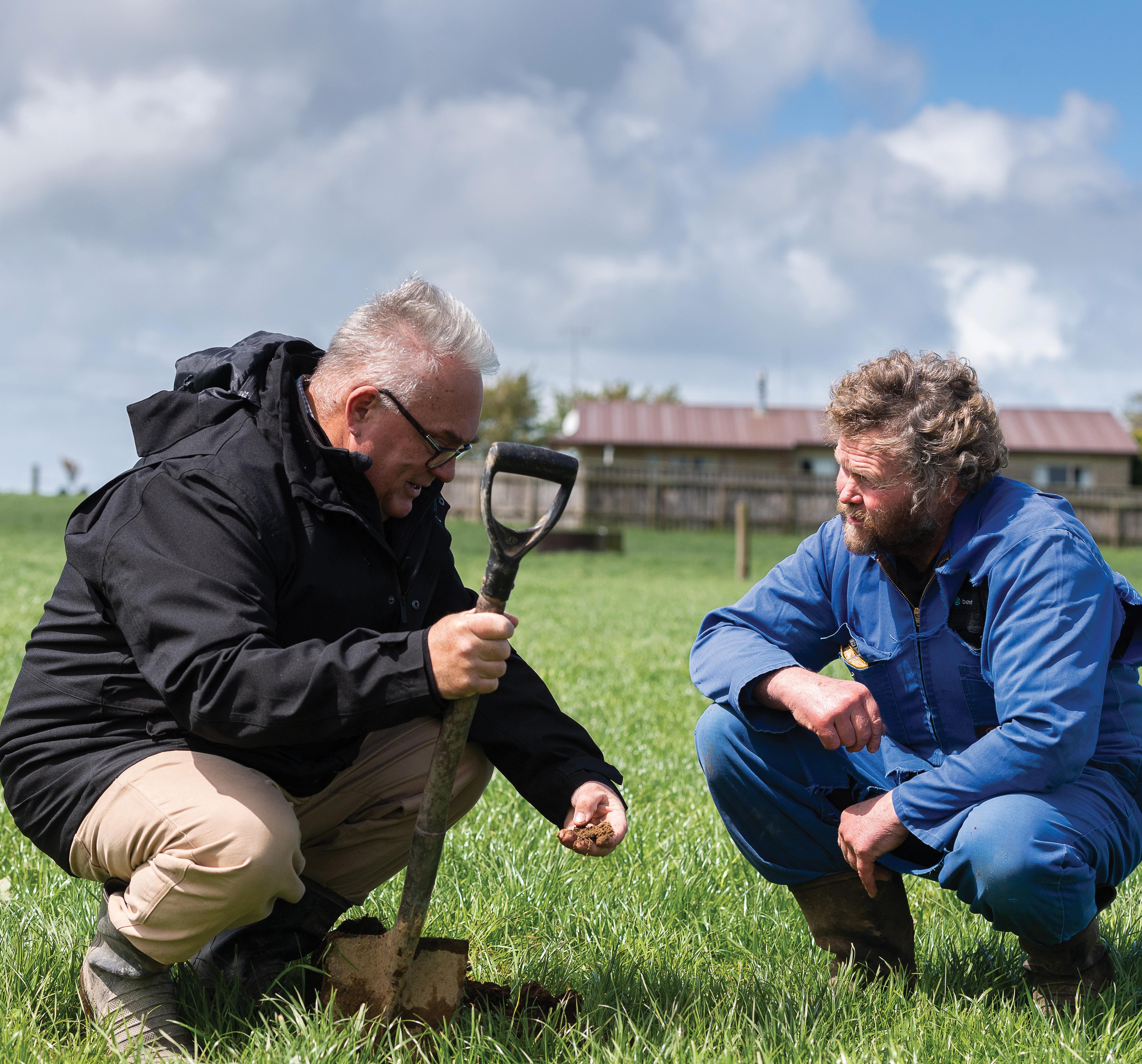
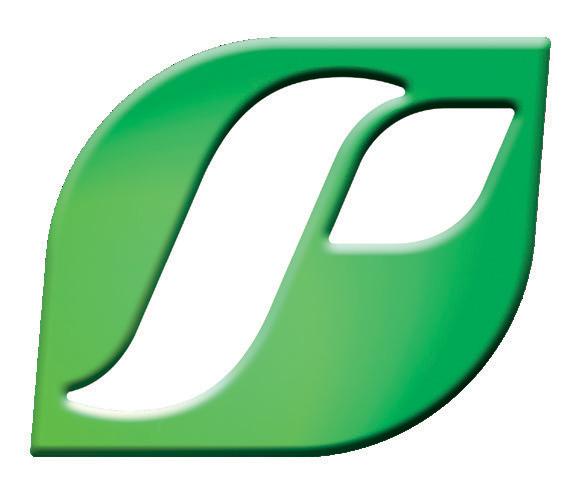
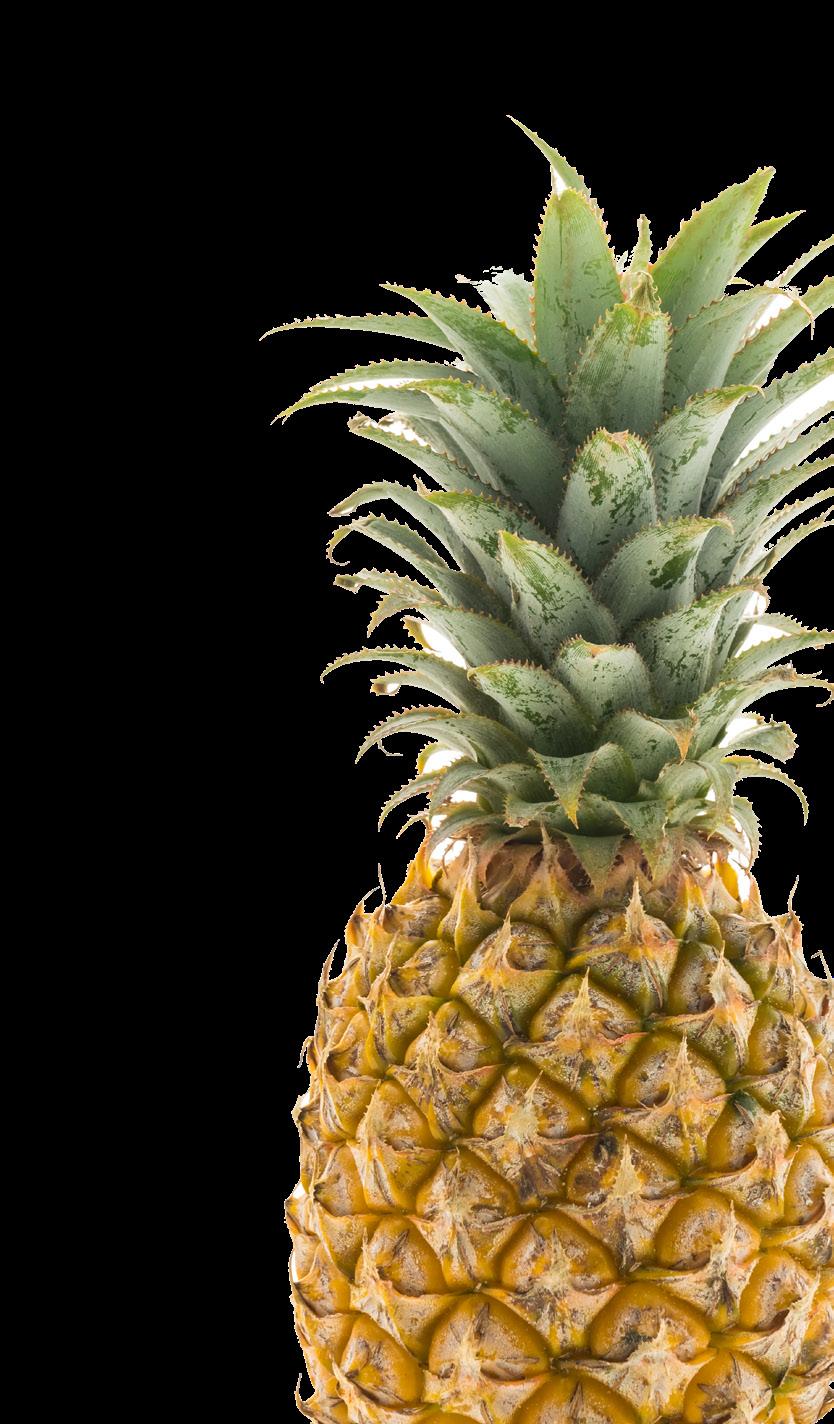


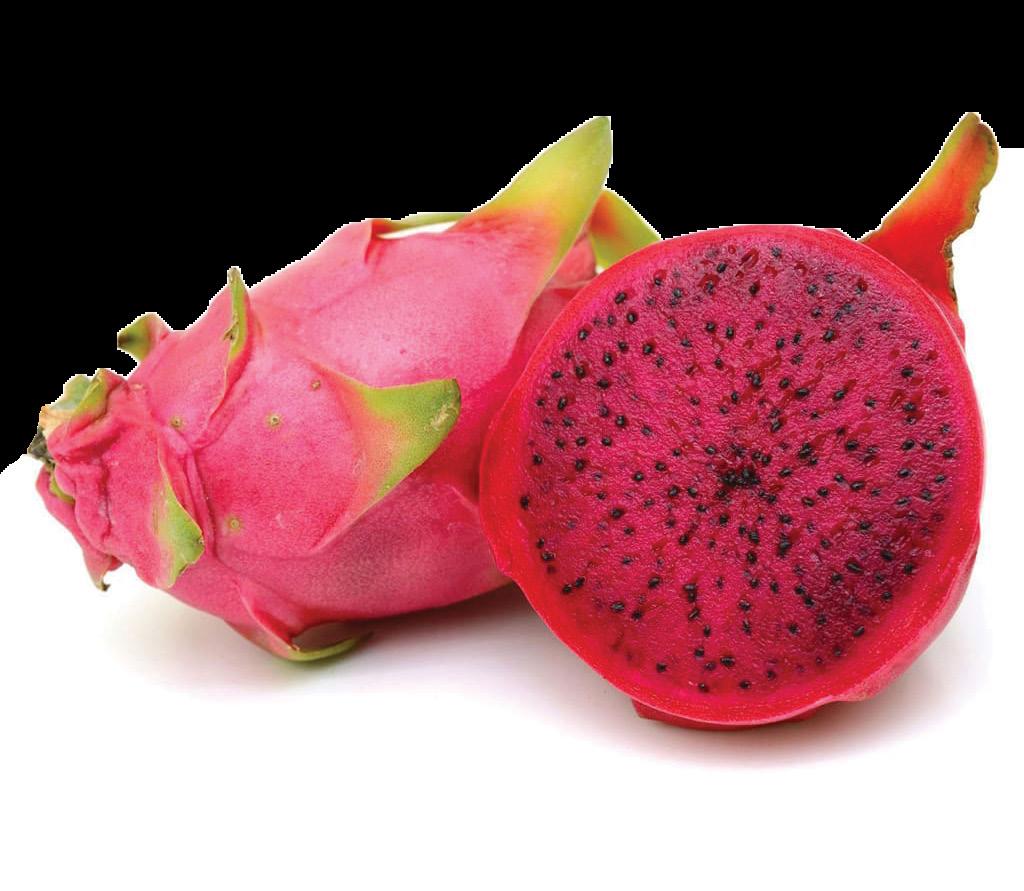
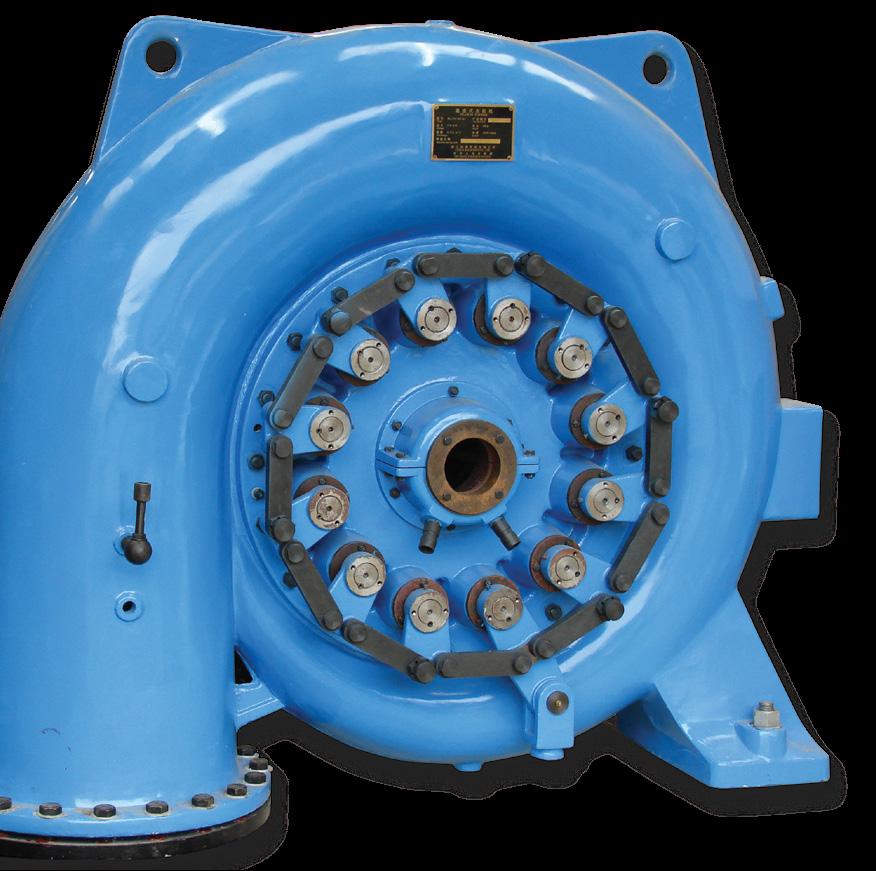
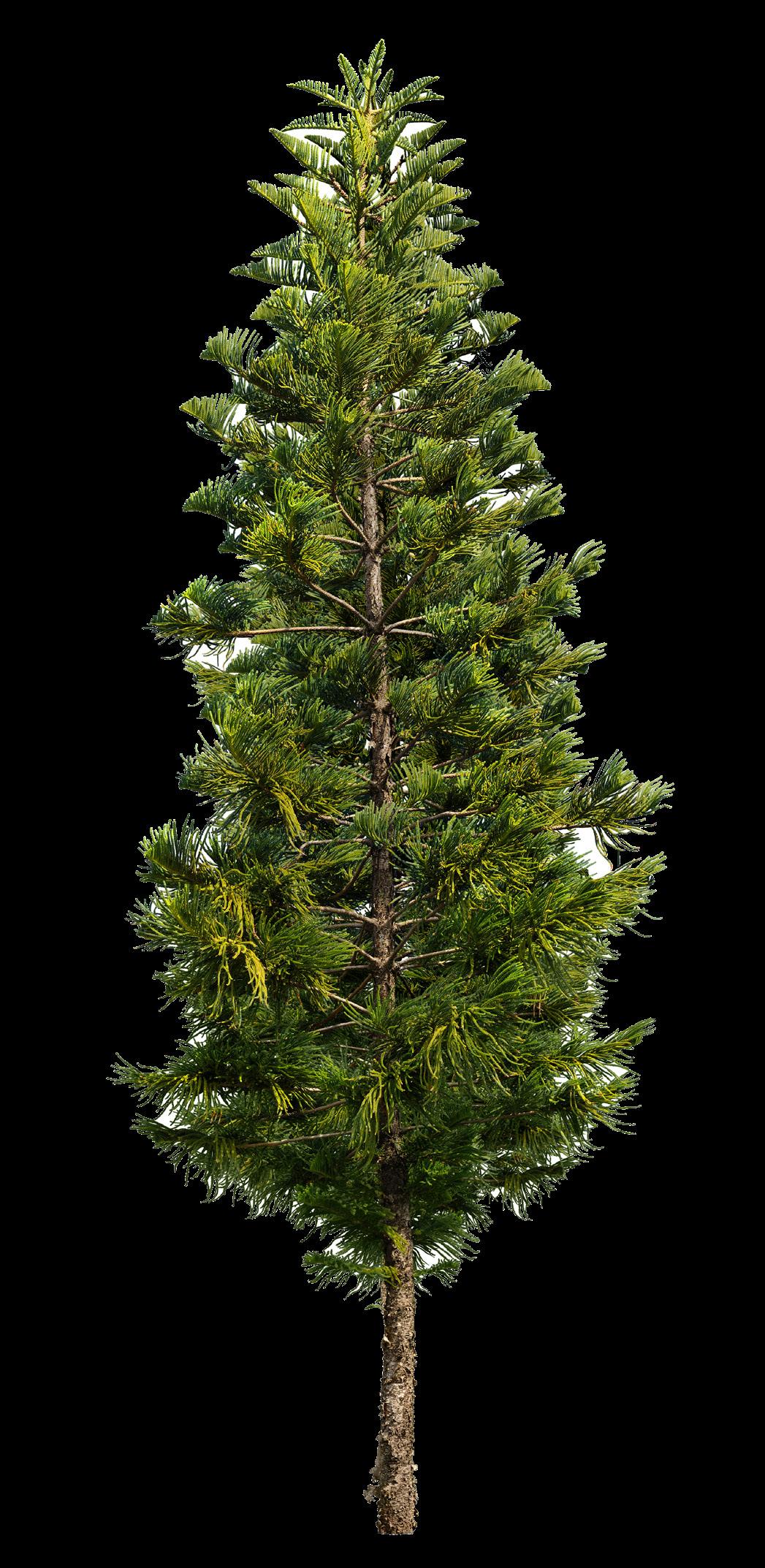


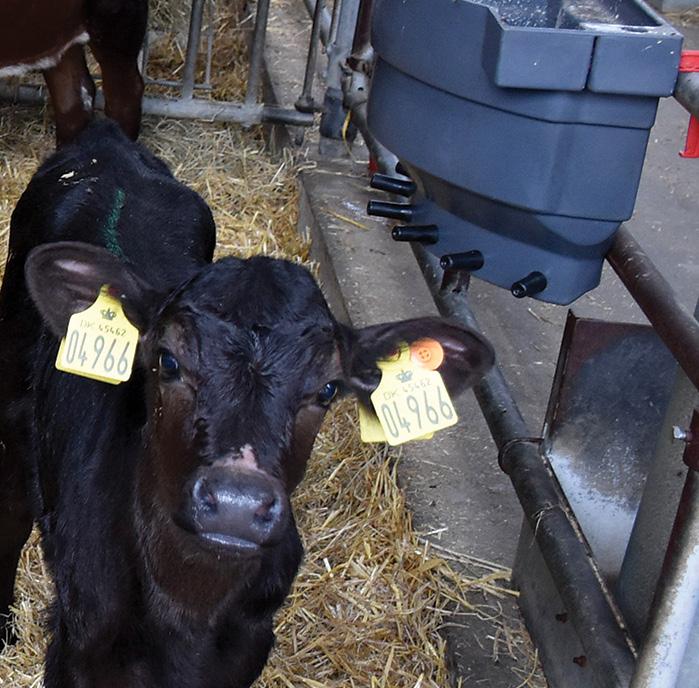
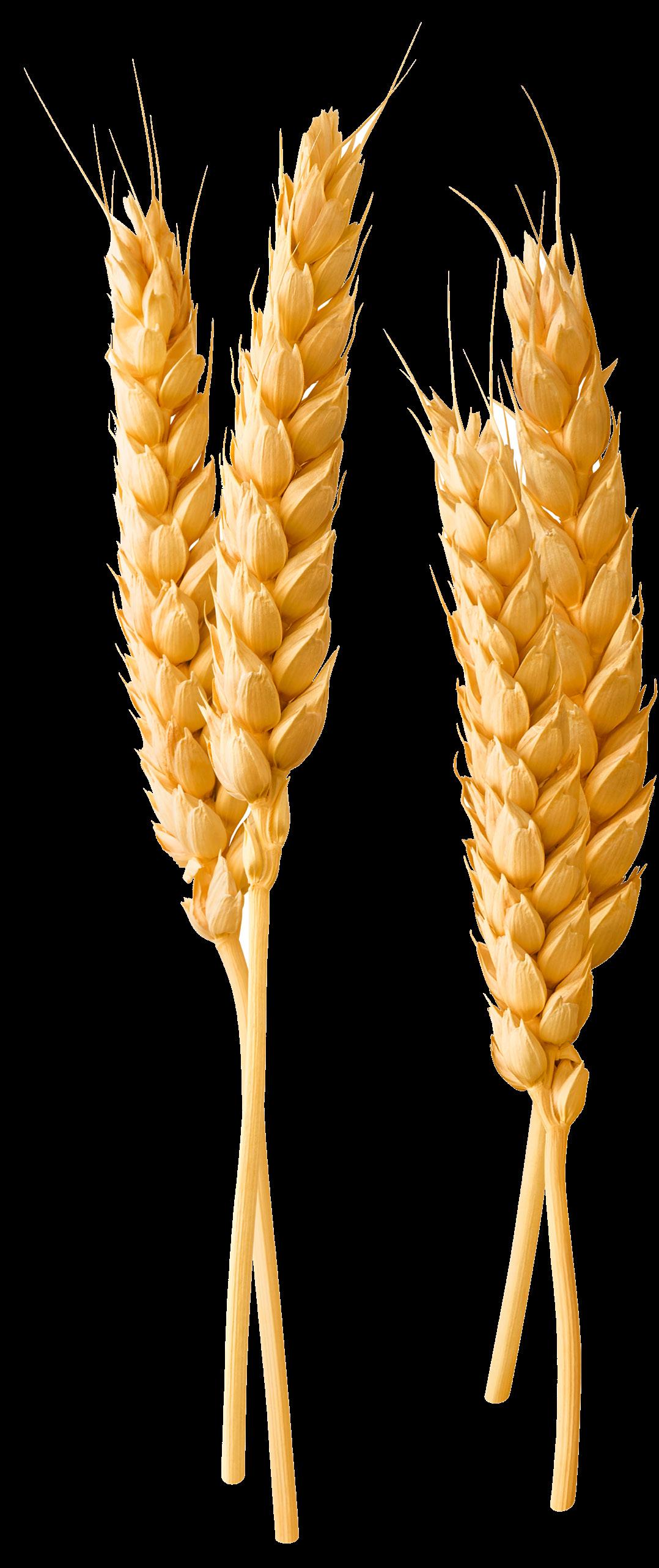


Steve Wilkins is a sheep and beef farmer at Athol, on the road between Queenstown and Te Anau, but he also grows grain and sends it to the nearby dairy farms the Wilkins family has interests in.
What they do – the integration of dairy and arable –he believes is the future for New Zealand with benefits not only for the economics of producing milk, but also an answer to lowering greenhouse gas emissions (GHGs) and reducing nutrient losses on dairy farms.
“Thirty to 40 years ago, before the dairying boom, most dairy farmers had some sort of cropping on their farms. It’s only recently we’ve had a monoculture of just grass,” Steve said.
“The focus today is on milksolids per hectare and the less-attractive parts of the business are left for someone else to do and I think that needs to change so we have more sustainable farming operations.”
A 2013 Nuffield scholar, who researched the synergies between arable and dairy, he said he came back from the experience with more questions than answers but saw firsthand the futility of having grain growing for animal feed in one part of a country and the animals to eat it on the other.
“In the UK, most of the cereal crops are grown on the east side and the animals are on the west. The United States is similarly divided.
“It means there are logistics and costs to get the feed grain to the animals.
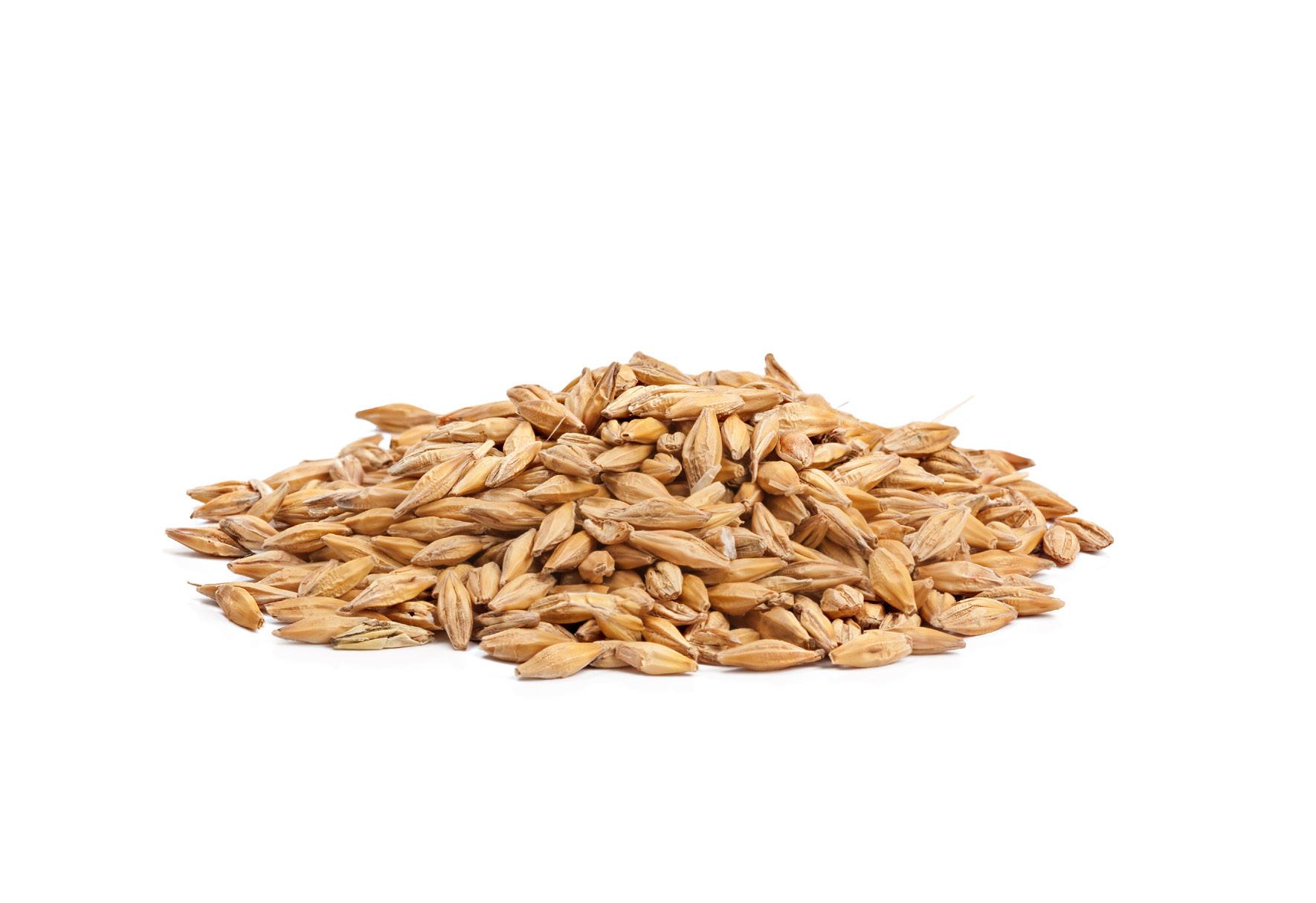
“In New Zealand, we do have arable farms throughout
the country next to dairy, beef and sheep operations but we could still do it a lot better.”
Steve said what other countries did excel in was capturing nutrients from dairy cattle for use to grow grass or crops.
“Because most of our cows are not wintered on pads or inside, we lose a lot of the nutrients, especially when paddocks are left bare in the winter months before sowing.”
If those nutrients were instead captured on feed pads, growing grain could use them.
“In the arable industry we know it takes 26kg of nitrogen to grow a tonne of grain but that includes the residual N in the soil as well.
“And on a dairy farm, a lot of that nitrogen could be from captured effluent.
“Or, if you get the grain sown quickly enough after a winter crop is eaten, it can soak up most of the nutrients, especially nitrogen, in the soil before they are leached away.”
Plus, growing grain reduced GHGs as there was no methane produced.
“The carbon produced is part of the carbon cycle. And a lot of the carbon is returned to the soil in the stubble which is incorporated before resowing so it’s stored.”
On his farm at Athol, his GHG figure was “very low” due to the grain grown.
“We have stock for the rotation of the different arable crops plus we use store lambs to eat the grass seed paddocks which increases our GHGs.”
A greater variety of birds and beneficial insects were
also attracted to areas growing grain, another tick for the environment.
What farmers grew would depend on their feed requirements for their cattle as well as their soil conditions and expert advice was always available.
“Barley doesn’t like water-logged soils or the cold but otherwise it’s the most resilient to grow. Oats will germinate in wet and cold conditions. However, wheat has the best energy as a feed per hectare grown.
“But at different times of the year cattle need different nutrient levels to balance out the grass, so sometimes they need higher levels of protein and at other times, in spring when the grass is lush, they need energy, especially to get in-calf.”
Vice-chair of the Foundation for Arable Research (FAR) and chair of its Research and Development Advisory Committee, Steve said the economics and benefits of feeding grain to dairy cattle were well established.
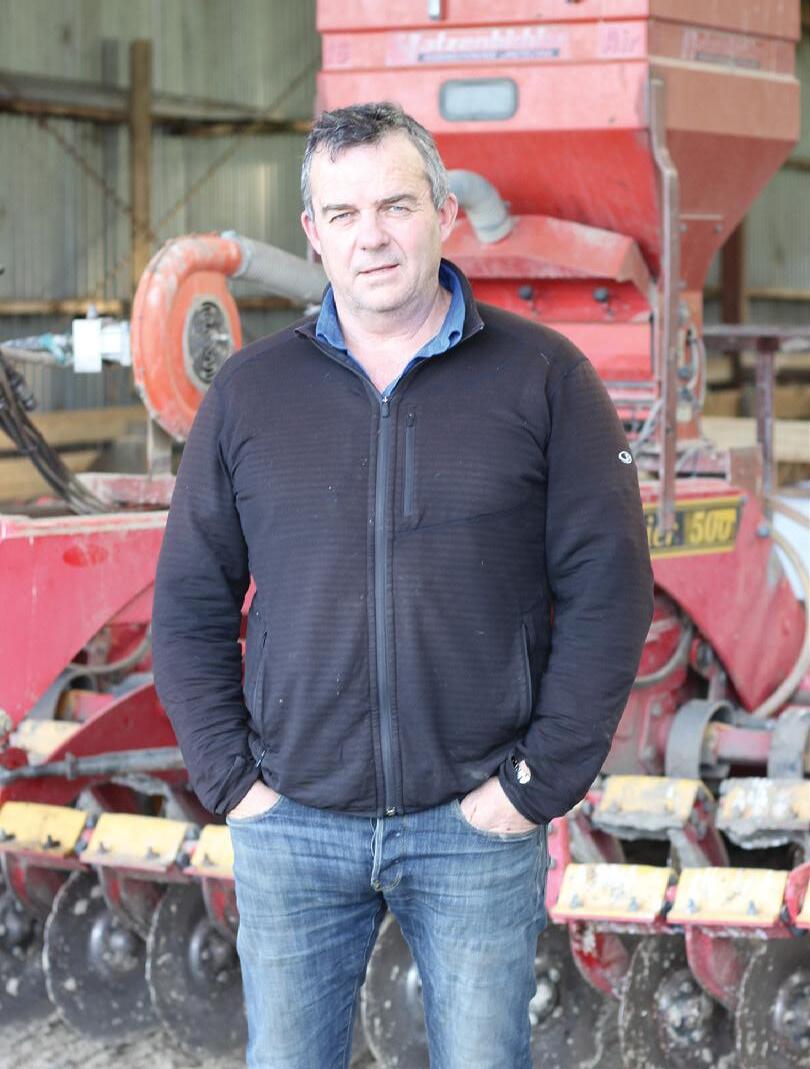
It was up to dairy farmers to make the next step in utilising the benefits of growing some of that grain they required themselves.
“And we can do it in most of the country.
“We’ve had a world record wheat crop grown twice near Gore so Southland as well as Canterbury, Nelson and Marlborough and the lower part of the North Island can all grow good cereals.

“In the upper part of the North Island it’s maize.”
A large range of cultivars were available to suit almost all environments in the country.
Planting cereals needed no more equipment than planting winter brassicas and for those already growing greenfeed cereals, used for wholecrop silage or balage, they were halfway there.
“It’s near harvesting that you need the equipment and the knowledge and dairy farmers could work with their local arable farmers.
“Just like you get a contractor in to make balage, you can get someone in with a header.”
However, the main expense was storage which could cost $70,000 for a grain silo.
“It’s always the problem with grain –

storage. You harvest all of it in the autumn but it’s the following spring that it’s starting to be fed out.”
Farmers would also have to invest in a crusher.
In the south he saw wheat ideally following a summer turnip or early fodder beet crop.
“If you plant a cereal in the autumn, you get less weeds and insect burden and there is something growing in the soil to protect it during the winter rains.
“Or you use it as part of a regrassing programme. Whatever you do you have to rotate it around the farm or you get a buildup of diseases.”
And not only was a high energy and protein feed for dairy cattle produced, there was also the straw which could be used as feed or as bedding.
“I’m not suggesting dairy farmers try to produce all their requirements. Rather we could have an integrated approach where a percentage of what they need is produced onfarm to complement what they buy in for their existing system.
And the integration of arable and dairy was not as much of a leap as many people thought.
“Arable already produces all the grass seeds, the brassica seeds for dairy farms. This is just another part of the story.”
‘I’m not suggesting dairy farmers try to produce all their requirements. Rather we could have an integrated approach where a percentage of what they need is produced onfarm to complement what they buy in for their existing system.’Athol farmer Steve Wilkins.
hile the warming climate in Northland is going to see changes for farming it is also going to bring opportunities as the region becomes more subtropical.
Farmers are already adapting their farm
Wmanagement practices to reflect that - trialing different pastures like cocksfoot and tall fescue - that are more robust in the drier summers and likely to withstand periods of drought better.
The warming climate, with fewer frosts, also opens up the possibility of farmers diversifying - to get more out of their land, and supplement their income while spreading their business risk.
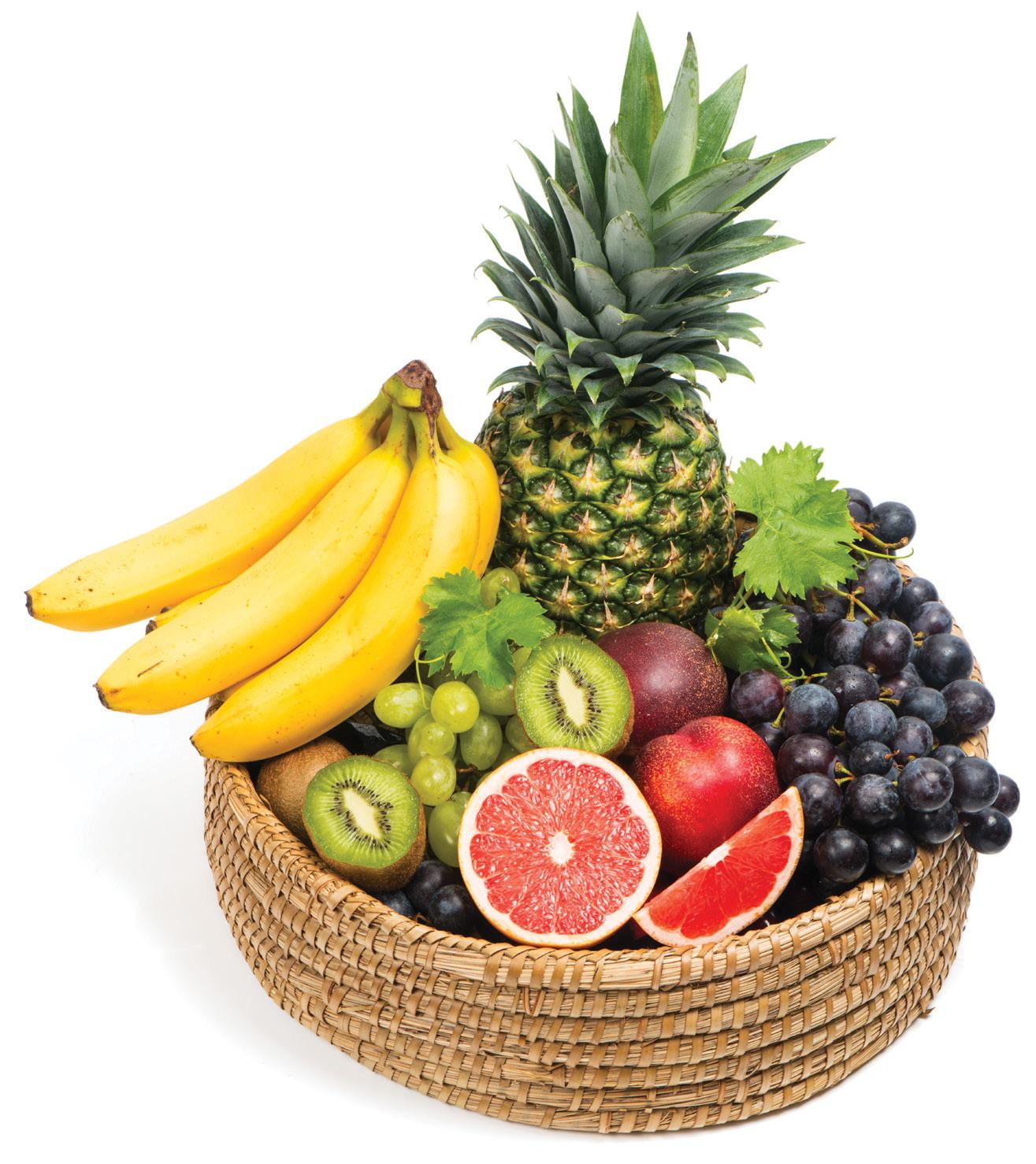
Declan Graham, business manager, science at Plant & Food Research, believes Northland has a bright future as a food basket as the climate warms, with some big corporate growers already settling into the region.
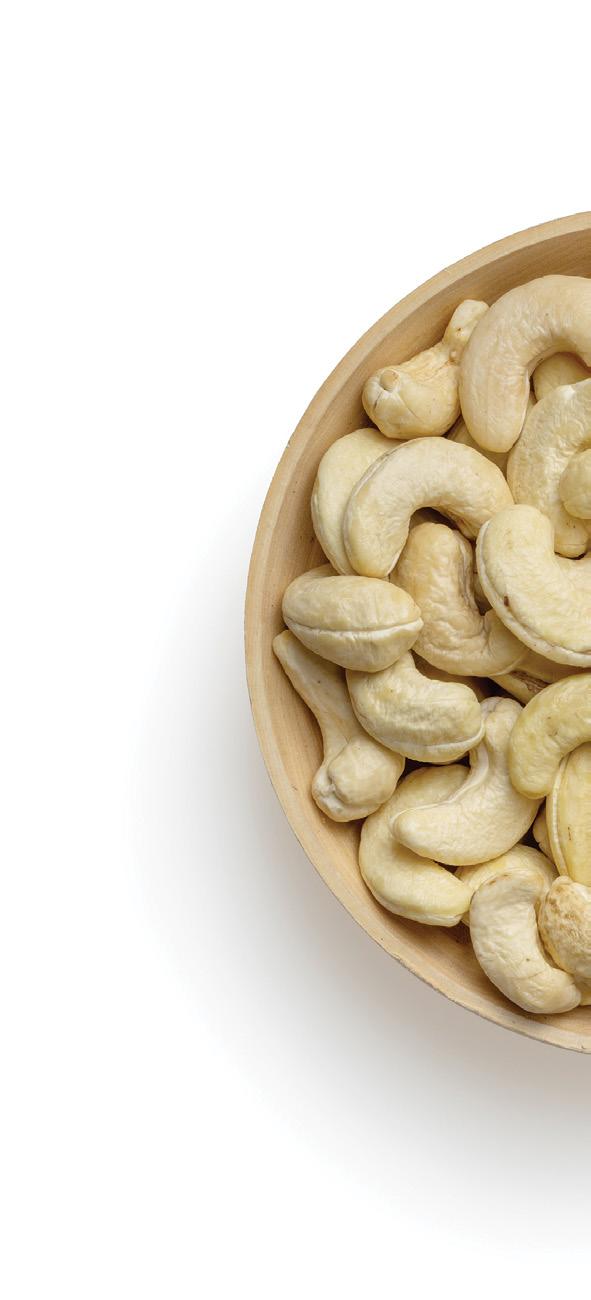
While there have been avocados being grown on pockets of volcanic soils like at Mangawhai and Maungatapere outside Whangarei, a boom in the far north in the last five years has seen more than 1000 hectares planted in avocados. Much of that land was former dairy farms.
But dairy farmers don’t need to sell up to start investigating or experimenting with some of the crops that will now grow in the north. Plenty of crops don’t require hundreds of hectares of land. Some are already well known like blueberries.
The blueberry industry is expanding, and blueberries
under cover are also attracting corporate attention in the north, Declan says.
Best grown in free draining acidic soils with a pH of between 4 - 5.5, a mature block of blueberries would be expected to produce more than 10 tonnes per hectare.
One berry exporter - Miro, owned by about 20 Māori trusts, iwi and collectives is focused on sustainable productivity and partnering with Māori landowners. In 2019 they indicated a five-hectare blueberry crop grown in plastic tunnel houses could return $104,000 per hectare annually over the first eight years of production from an investment of $300,000 per hectare.
Like most crops blueberries need good moisture from flowering through to harvest with the requirement for water increasing as the fruit increases its berry size. There is a very high labour demand at picking time.
As Northland warms, farmers are looking to subtropical crops to augment dairy earnings.
By Delwyn Dickey.
Coffee is another good example of a new northern crop that can be trialled on smaller pieces of land.

Northern areas are cooler than most coffee growing regions but this could work in a grower’s favour as harvesting would happen once a year rather than as in hotter climates, Declan says. Coffee in Australia is grown from Queensland to eastern New South Wales with this southern area close to our latitude. Usually grown at altitude with cool nights, this is not a growing necessity but is rather to lower the risk of rust, which is the biggest problem for coffee growing globally. Being cooler here, rust shouldn’t be such a problem.
Cooler climate beans are also ready to harvest all at once rather than ripening throughout the year as in hotter climates. This means it can be mechanically harvested all at the same time. There are also dwarfing cultivars available that can be grown intensively too.
Already a small number of people are growing it in the north, he says.
The first commercial grower was Icuras Coffee overlooking Doubtless Bay. After trials they say they found just the Bourbon Pointu (Arabica var Laurina), proved to be consistent enough with between 60 to 90% beanset. As rainfall has dropped considerably there in recent years they have now started irrigating.
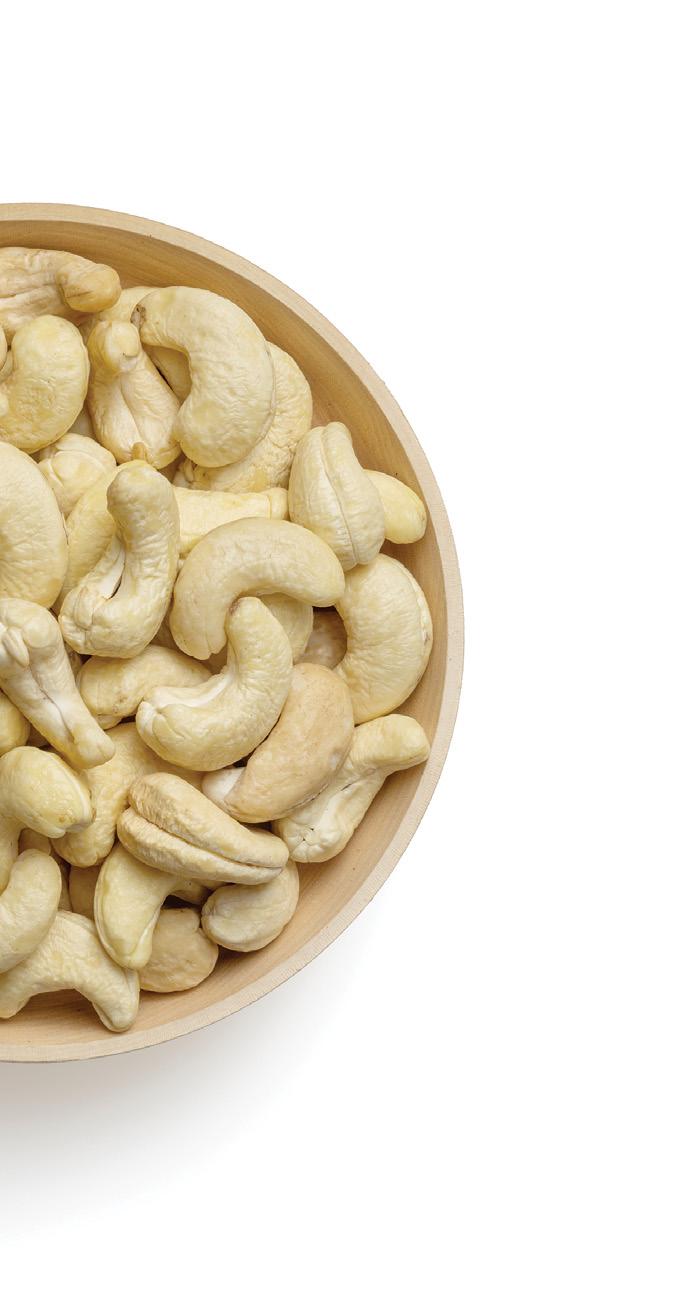
An emerging crop in the north looks to be peanuts with promising trials around the Dargaville area over the last couple of years.
“We’re working with local farmers plus staff from Farmlands and Kaipara Kai to see if peanuts could become another cropping option for Northland farmers and growers.”
Initiated by Pic’s Peanut Butter and backed by the Ministry for Primary Industries one of the trial sites was Pouto Peninsula on Allister McCahon’s dairy farm.
With sandy loam soil his farm proved ideal as the peanuts need friable fertile soil with soil temperatures
above 18C from planting in October through to harvest in April.
Peanuts are an arable crop and so final large-scale cropping would need to be done on flat land with machine access. With large-scale horticulture like kumara-growing already set up in the area the infrastructure to support a new crop was already there.

The project is now under the control of Northlands economic development agency Northland Inc. who are now moving it on to seven trial sites around the north and producing larger quantities.
In a couple of years this new crop could be worth a serious look, he says. With the country importing 10,000 tonnes annually, and fresh nuts having higher nutritional value, there would likely be a good market for them.
Should the nuts continue to do well at trials, rather than going it alone, one possibility he sees for interested dairy farmers could be getting a group together and trialing it to know what it looks like. Then perhaps bringing in a contractor grower.
‘We’re working with local farmers plus staff from Farmlands and Kaipara Kai to see if peanuts could become another cropping option for Northland farmers and growers.’
Dragon fruit is originally from central America and is grown in the tropics around the world. It is also now being grown in Kerikeri. Plant and Food researchers have been breeding them in Vietnam in collaboration with Vietnam’s Southern Horticulture Research Institute, just outside Ho Chi Minh City. Several cultivars from that programme are in the process of licensing and marketing with some plants now growing at the Kerikeri Research Station as well.
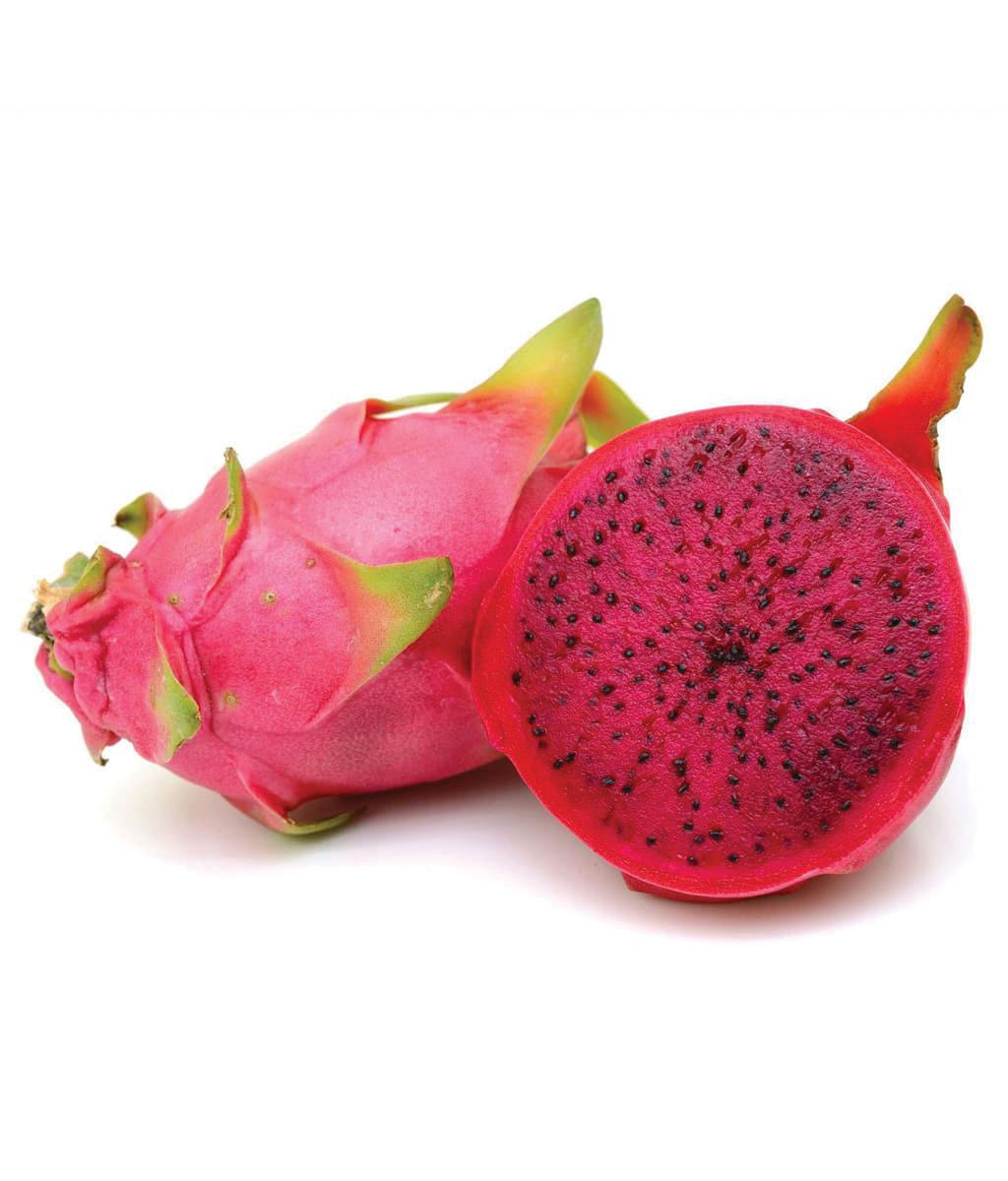
For not-so-flat parts of a farm, table grapes could be a good option as we also import a lot from Australia, South America and the United States. Declan reckons Plant and Food have different varieties in NZ that could be worth trialling as well.
Pineapples, bananas, passionfruit and a new interest in citrus; there are plenty of options for farmers wanting to play around and have a go at fruit.
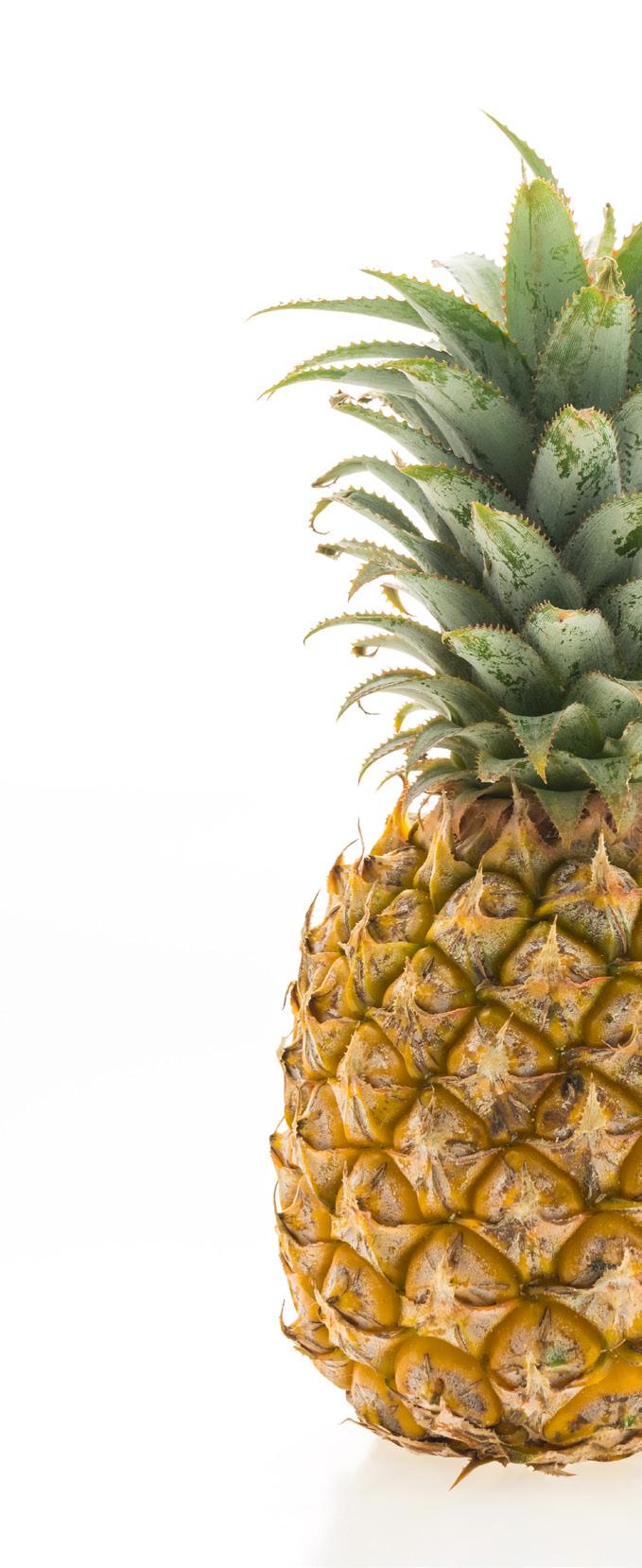
If that weren’t enough to make your head spin there are also arable crops like hemp, sorghum, and subtropical legumes.
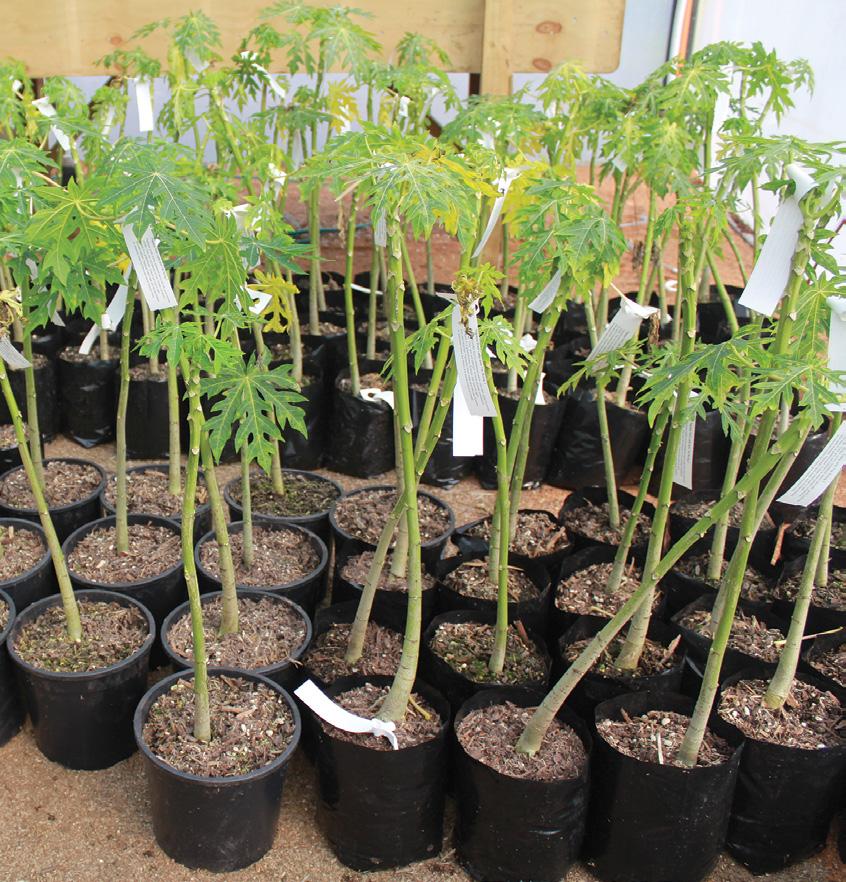
One of the more interesting trials for adapting farm management practices using a new crop was run by Graeme Edwards near Whangarei who tricklefed a small banana plantation from his dairy effluent pond. Along with reducing effluent Graeme hoped the banana palms could also act as summer fodder for his cows. Bananas are a fast-growing plant that really powers away through the heat of summer when other crops may be struggling.
AgResearch had a look at the trial, with funding from Our Land and Water National Science Challenge. They found no red flags from the trial, although more expensive research would be needed on the health effects on the cattle eating the
banana palm or its fruit before it could be officially recommended as stock fodder.
Farmers looking at growing bananas for fruit, or sugar cane, would definitely need cattle-proof fences, says orchardist Geoff Mansell. While both are good options for farms, cattle find them very palatable, he says. An added bonus is both crops are also nitrogen-fixing.
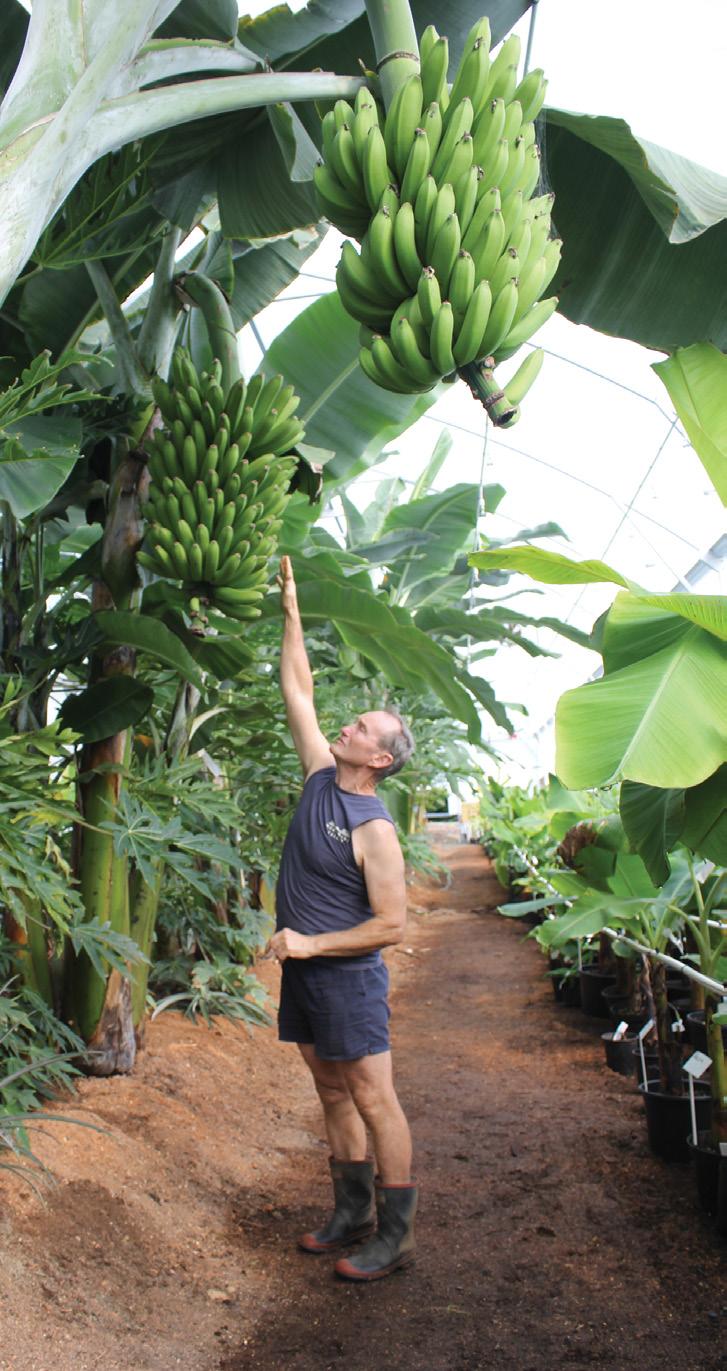
Geoff recently took out the Massey University Innovation Award for Northland at the Ballance Farm Environment Awards as he embraced the changing northern climate and is creating new business opportunities for himself and other growers in the north as the climate warms.
While the main crop on his 4.7-hectare property Kotare Farm, near Whangarei, has been feijoas and figs, he is now growing and trialling subtropical fruit including in a new unheated greenhouse.
Bananas have been a big part of this change of focus and Geoff has many producing different varieties on his property. Some are edible like lady finger, Cavendish, and Honduran varieties while others are ornamental. They need a sheltered spot to grow as the large leaves, which are the carbohydrate factories for the fruit, are easily torn in the wind resulting in smaller fruit. But he has even found a variety that can be used as a windbreak.
Along with supplying the restaurant trade, being NZGAP certified makes it possible for him to supply wholesalers and retailers rather than going through
farmers’ markets which is where many smaller growers sell.
Certification promotes sustainable farming practices in NZ, covers food safety requirements, safety and welfare of workers, and traceability.
Able to inspect other growers to ensure they meet the provisions of the certification, Geoff along with dietician and banana grower Roslyn Norrie set up Kotare Subtropicals to give other smaller growers access into the supermarkets in the future.
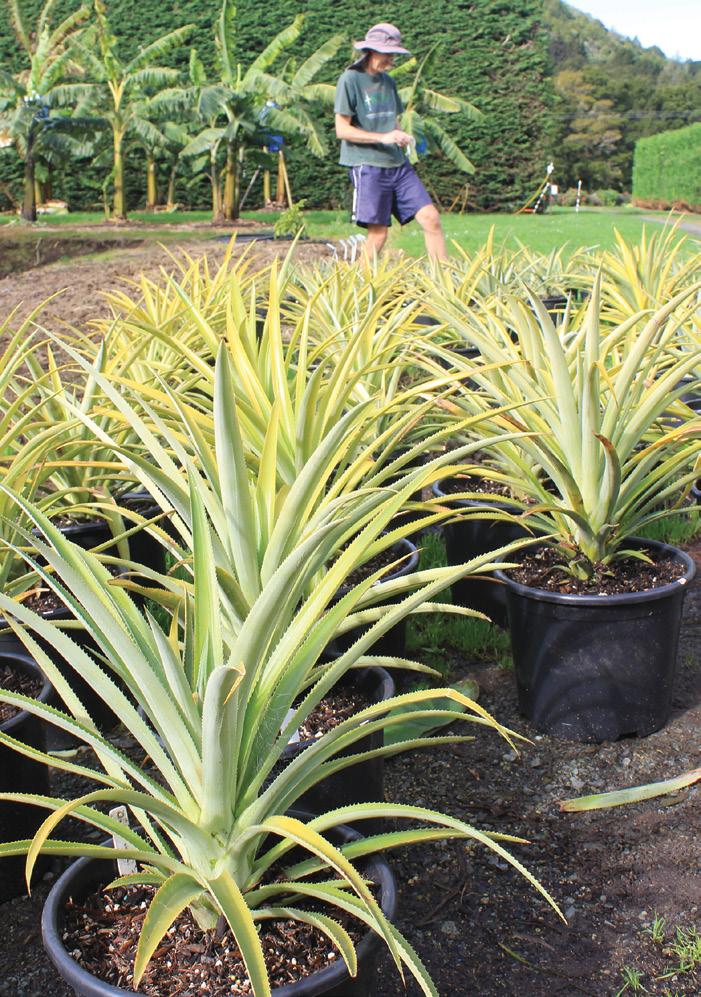
Geoff also runs a consultancy for others looking at growing these emerging subtropicals, including bananas and pineapples, commercially.
There is a real future for NZ-grown bananas, as we eat our way through 18kg each per year - 72,000t nationally, he says, all imported from the Philippines and South America. If there were more local growers he says they wouldn’t need to. And while locally grown fruit commands a higher price there is also a lot of interest in NZ-grown fruit, he reckons.
A likely banana site onfarm would have free-draining soil, good shelter, a sunny aspect and access to nutrients during their growing season. One hectare would carry 1400 plants, with each plant producing 10-15kg of fruit annually. Possibly the only pests are pukeko who like to peck into the centre of the stems.
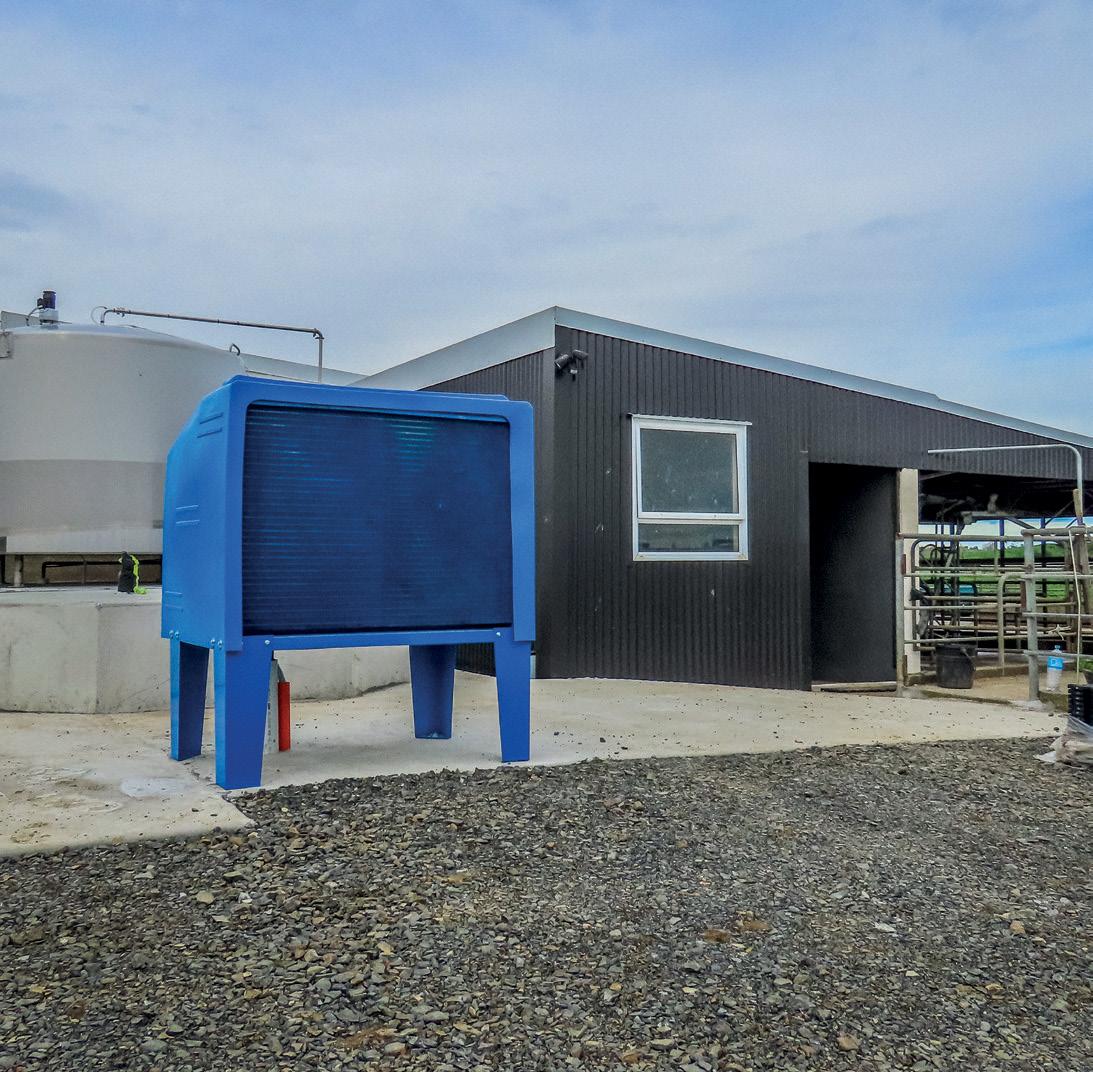
While bananas will produce fruit at any time of the year Geoff recommends
farmers check harvest times or other labour intensive times with any crop so they don’t coincide with busy times of the year on the farm - like calving - unless they have ready access to labour.
Some crops like blueberries can be very labour intensive during harvesting.
Along with the bananas, pineapples and papaya, there are persimmons, abiu, cherimoya, cassimoroa, pawpaw, turmeric, ginger and arrowroot and more able to be grown on Northland farms now and in the future, that could easily find their way on to local supermarket shelves.

Some will need an unheated greenhouse but many won’t.
Knowing the farm’s soil type is key to where to begin with a growing project.
Plant and Food have produced detailed soil maps for the north – particularly for the Kaipara District Council and they have a good understanding of where some of these crops would grow best. The maps for climate, soil temps, soil types, sunshine hours and the like were produced for the council through the provincial growth fund project.
The other big consideration is water. Most horticulture needs irrigation so if there isn’t a good supply through the heat of summer a large pond or reservoir will likely need to be dug. The Kaipara District Council is building two to three reservoirs on the Northern Pouto peninsula that would be sufficient to supply water for around 4000ha of new horticultural
development. For Declan this is an opportunity not to be missed.
“If you are a farmer in that area this is a golden opportunity to seriously explore some form of horticulture on your farm, why wouldn’t you make the most of it?” he asked.
“This is an exciting time for horticulture in the north and farmers can be part of this too. “
IF YOU’RE FOCUSED ON MILK QUALITY, YOU’RE IN GOOD COMPANY. At DTS we live and breathe milk quality. We know each farm is unique. That’s why we offer a range of milk cooling solutions to suit any farm.


Those who decide to diversify their land use could include dairy farmers looking to build additional and complementary revenue streams. By Elaine Fisher.
For 140 years, dairy farming has been a mainstay of the Taranaki economy and a major player in the region’s social structure. However, it is about to change, thanks to an initiative encouraging new ventures to add value to the region’s economy.
‘Branching Out’, a project facilitated by Venture Taranaki, has launched nine opportunities focused on diversifying the region’s existing food and fibre offerings, including sheep dairying, kiwifruit, and avocados.
Project lead Michelle Bauer says existing key industries remain critical to the regional economy; however, the newly launched investment blueprints allow the region to leverage its strengths. Michelle expects those who decide to diversify their land use could very-well include dairy farmers who are looking to build additional and complementary revenue streams by unlocking the potential of areas of their property that may be
unused, or underutilised, and suitable for horticulture. Taranaki is an emerging growing region - 27 hectares of new kiwifruit plantings are already under development and the region is seen by the industry as having potential for growth as traditional production areas are predicted to shift due to changes in temperatures.
The region is also attracting interest from the avocado industry with new orchards under development. An assessment of the land and climate in Taranaki has identified 270,000ha as suitable for horticulture.
“We have more than 50 growers who have expressed interest in supporting pilot trial activities across a range of ventures,” Michelle says.
The other ventures in the blueprint are gin botanicals, grains, legumes and vegetables, hemp fibre for construction, hops, medicinal plants, and trees (and their value chain).
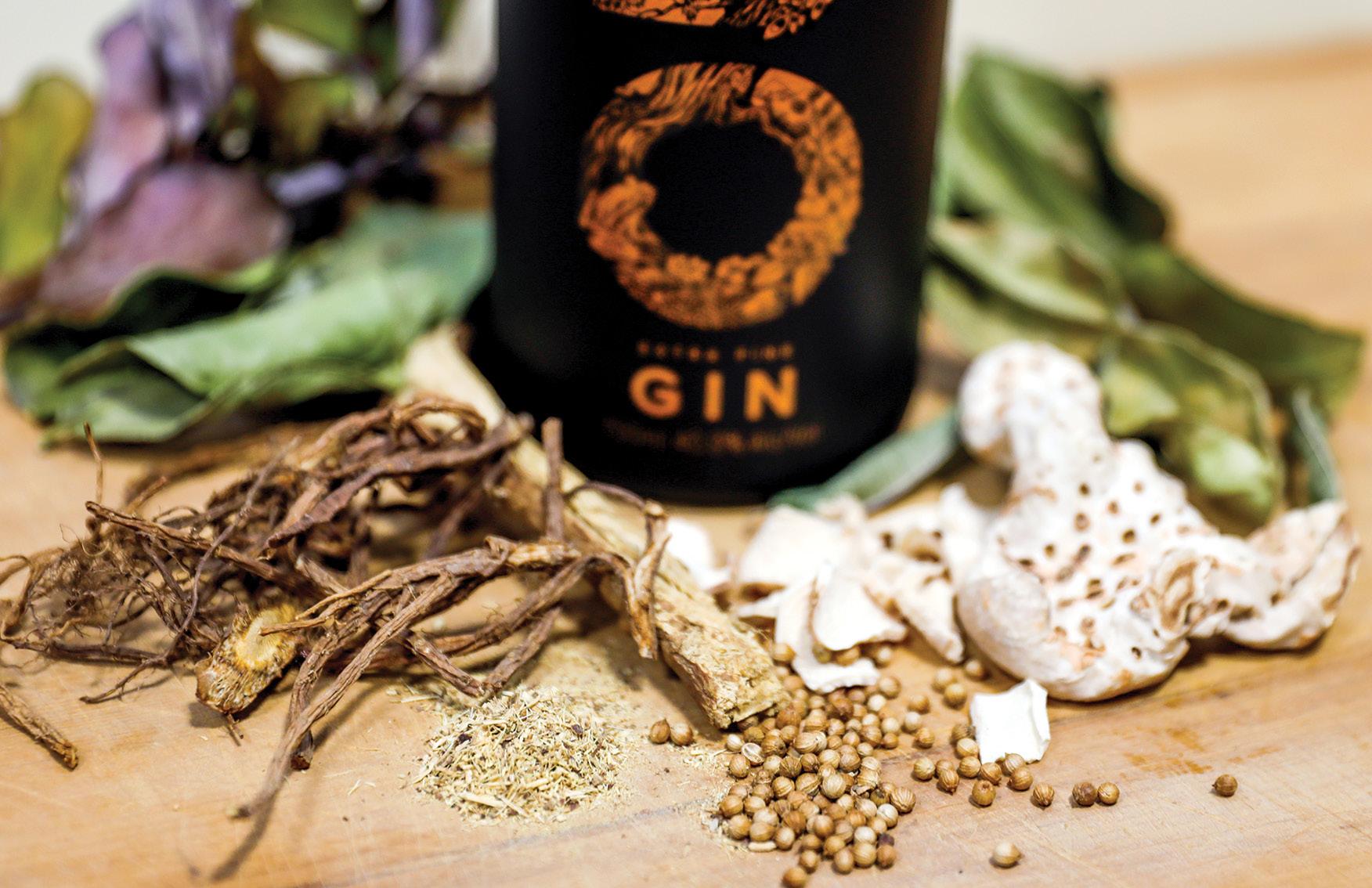
Of the nine opportunities identified through the Branching Out project kiwifruit, avocado, and sheep dairy are likely to be the first to launch, she says.
“All the ventures have significant market potential. In some cases, the path to market is clear, for example with kiwifruit, avocado, or sheep dairy, so these would be considered closer to launch – particularly as there are currently plants in the ground, or sheep milk being sent to the dryer.
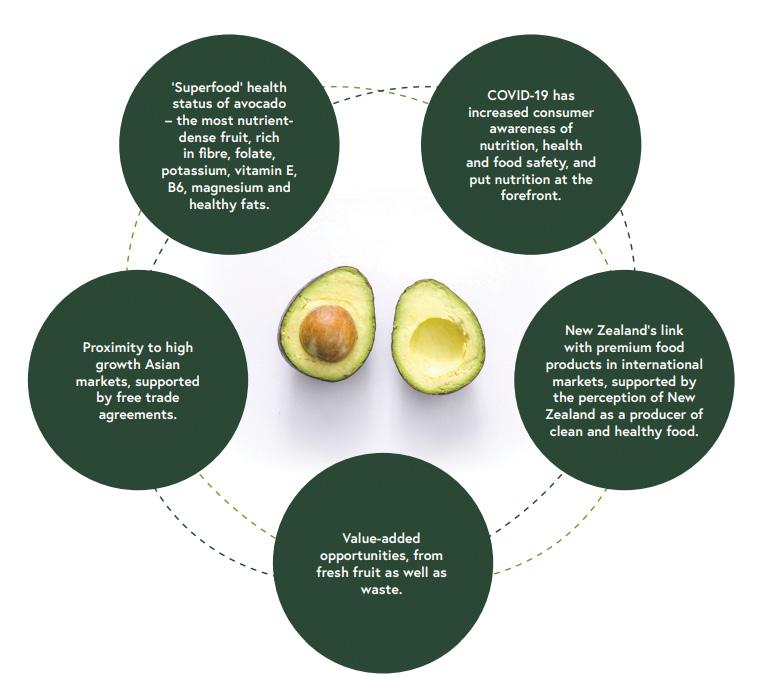
“In other cases, the path to market will need to be established such as for gin botanicals or medicinal plants. But in all cases, it is clear that a market does exist, and future trends and consumer preferences support this.
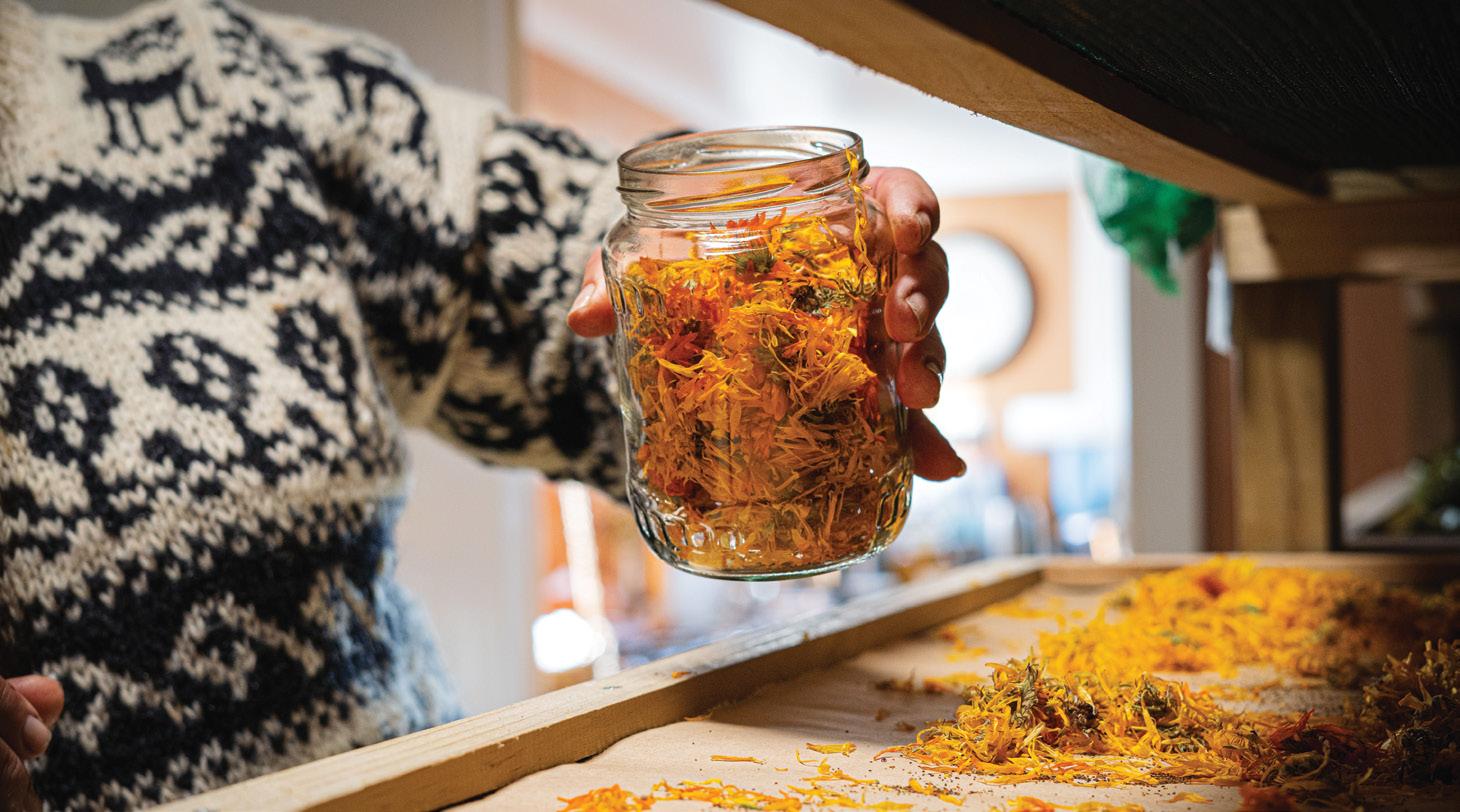
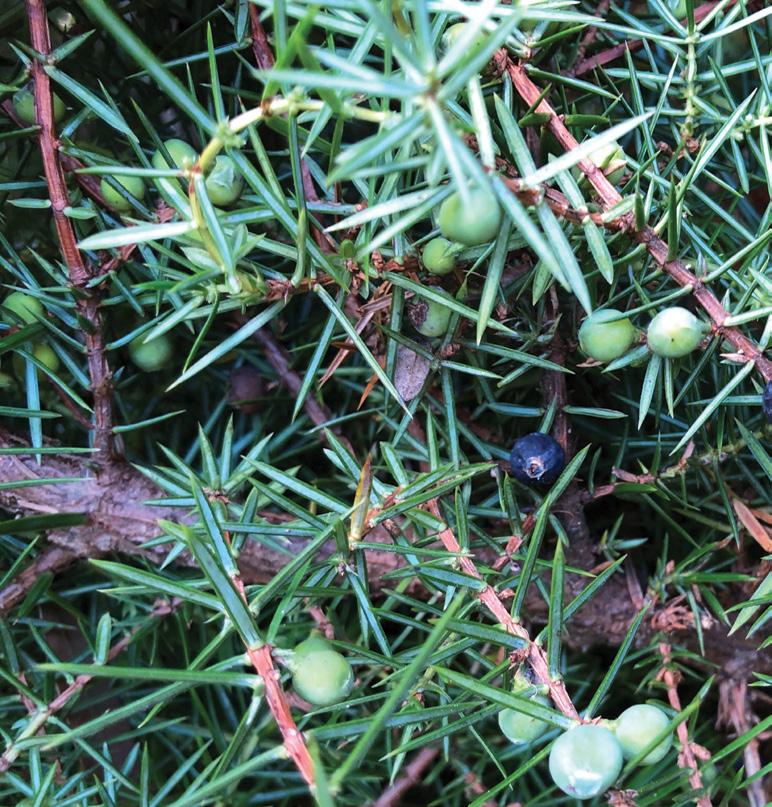
“We are looking for significant scale in new diversification but are aware of people with smaller blocks of land between 10 and 40ha actively looking for horticultural opportunities.”
Carefully managed, land use diversification could have positive environmental and social impacts, Michelle says.
“We are planning a key piece of research around how to measure the environmental, social, and cultural outcomes as industries scale up, and we will be supporting new ventures through education to adopt sustainable operational practices as part of their establishment and growth.”
The nine blueprints, commissioned and published by regional development agency Venture Taranaki, are the culmination of extensive research, analysis, and insights provided by sector stakeholders, partners, support services, and academic institutions.
The blueprints contain details about sector opportunities and drivers of growth, required growing conditions, crop management, value chain development, financial assessments, and potential impact for the region (economically, socially, and environmentally). While regions promoting land use diversification is not unusual, what is different about the Branching Out project is that it takes the value chain perspective and provides potential investors with an overview of key decision considerations from commercial establishment, supply and value chains, potential returns, to everything in between.
The nine opportunities the project focuses on were narrowed down from a long list of 96 suggestions.
“We decided to progress the opportunities with high-growth, and
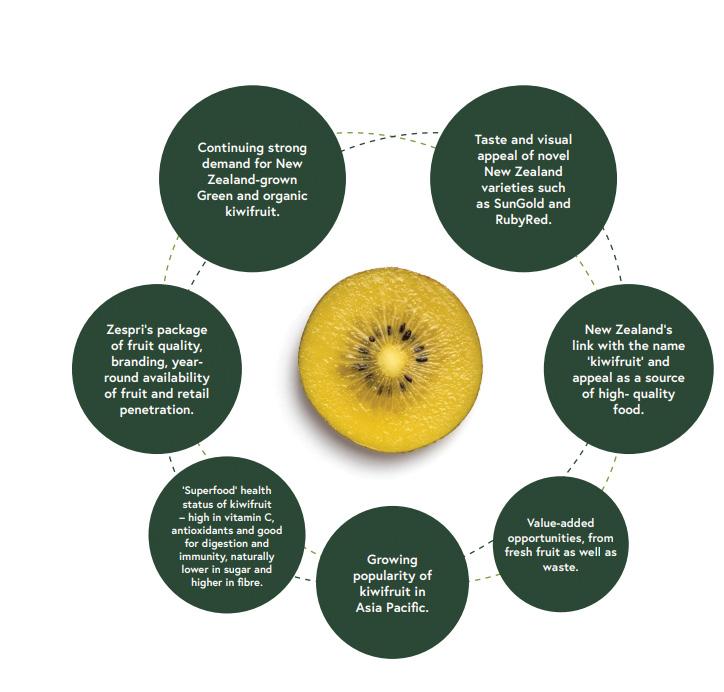
strong market potential; alongside opportunities where skills, capabilities, and existing in-region infrastructure that could be applied to an adjacent industry.”
Among locals taking up the challenge is Matthew Hareb, who is developing an avocado orchard on 30ha that was previously part of a dairy farm.
“I’m Taranaki born and bred, and for the last 15 years I’ve run an earth-moving contracting business in the oil and gas industry. I am now looking to diversify and see avocados as the next chapter in the book.
“Avocados felt like the right choice and move as my family has experience and knowledge from owning two orchards in the Bay of Plenty,” he says.
Commercial plantings of Zespri Green kiwifruit have been established near Waitotara in South Taranaki and the blueprint document states there is potential for more kiwifruit development in the region. David and Jo James, of Begin Distilling (makers of Juno Gin) have for some time been championing the growing of juniper berries, orris root, liquorice root, and angelica root, which are ‘core’ gin botanical plants, as an opportunity for Taranaki and have invested in research to help progress their potential.
Keen to see the gin botanical industry flourish, David and Jo have been working with Massey University and others throughout NZ since 2017 and these collaborations have been making steady progress in terms of developing more understanding about these botanicals and the opportunity they represent.
Although all of the four botanicals which are a focus of the Branching Out blueprint are known to be able to be grown in Taranaki, NZ has to date not placed any significant focus on growing these botanicals commercially.
It is hoped the Branching Out blueprint on gin botanicals will stimulate interest in the opportunity and data gathered since the blueprints’ launch, indicates that is happening, Michelle says.
In July there were more than 1000 visits to the Branching Out webpage, up 154% compared with the previous month.
“In addition to the inquiries that we are receiving directly, we can see from our website analytics, that hemp fibre for construction was the most-visited page followed by medicinal plants, gin botanicals, avocados and sheep dairy.”
Venture Taranaki has called for landowners to add their details to the land use register and registrations have increased since the Blueprints launch, due,
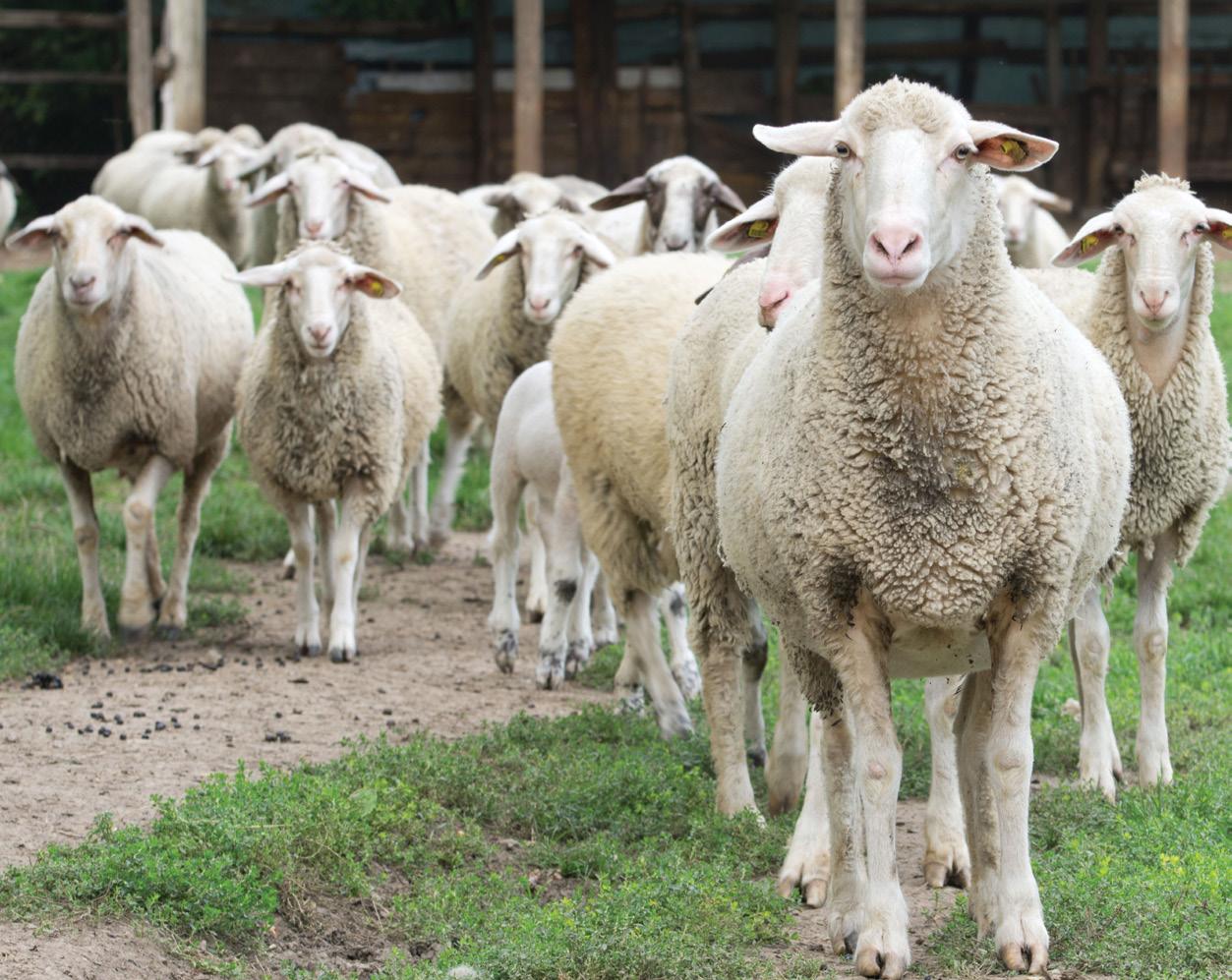

Establishing a kiwifruit orchard provides opportunities for a considerable increase in land value largely based on cashflow and profit potential.
Developed kiwifruit orchards in the Bay of Plenty region are valued in the hundreds of thousands of dollars per hectare. Valuations of over $1m/ha for Sungold orchards have been reported
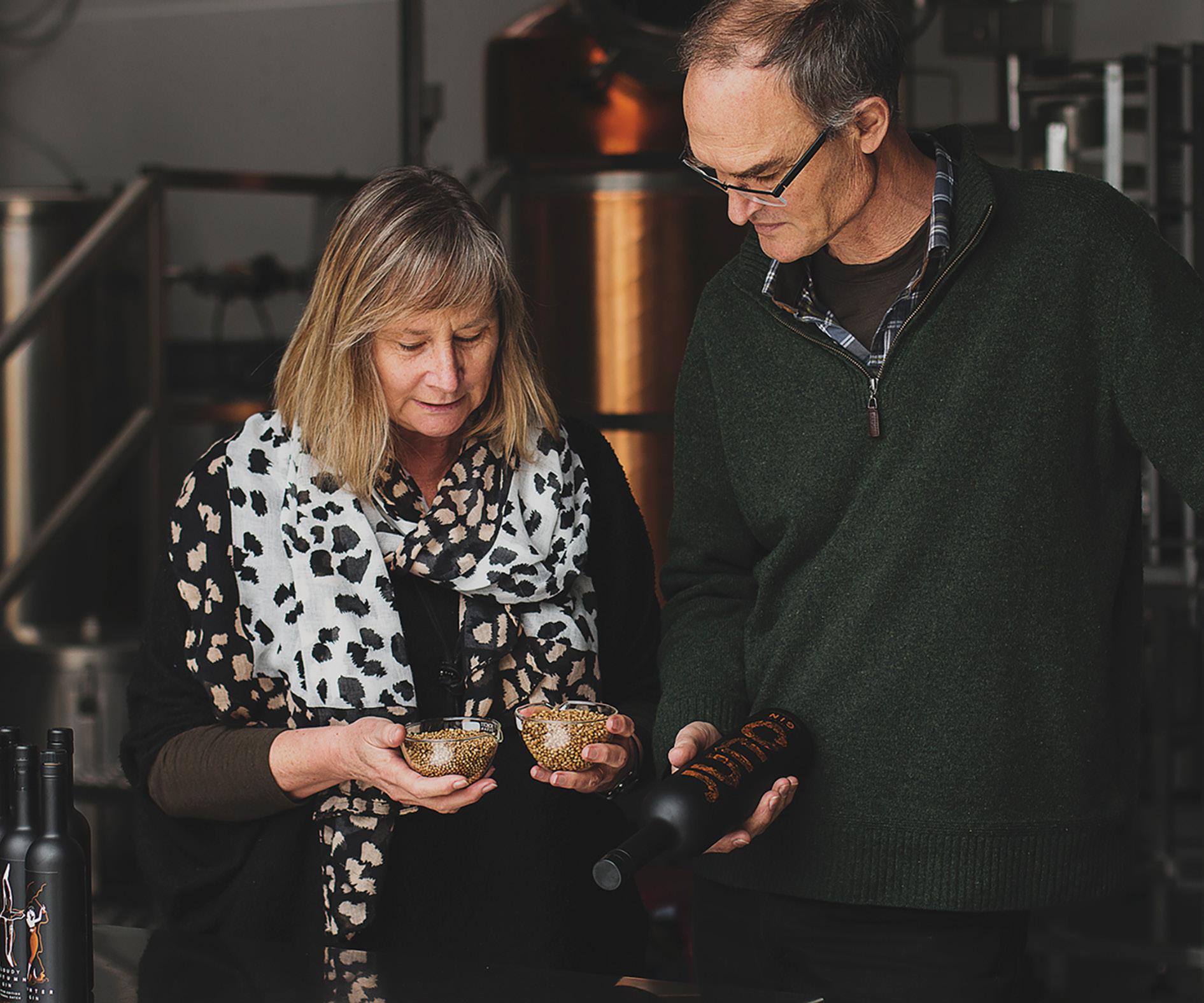
Michelle believes, to the interest in the opportunities presented.
“As we look towards the second phase of the project, there are opportunities to get involved in pilot activities – so we would encourage those interested to register their information.”
The blueprints, Michelle says, serve to build investor confidence and be an informative roadmap for complementary land-based activities and associated value chain enterprises in Taranaki.
“The investor-ready blueprints are to be used by community including landowners, farmers, food manufacturers, growers, and investors to give them all the information they need to get started.
“We are encouraging these groups to review the opportunities presented by visiting the Venture Taranaki website, downloading the blueprints, and joining our land use registry so that we can connect them to others and share information on the ventures that are of interest.”
The region’s three district councils have funded the first phase of Branching Out; New Plymouth District Council, South Taranaki District Council, and Stratford District Council, along with funding from the Ministry for Primary Industries.
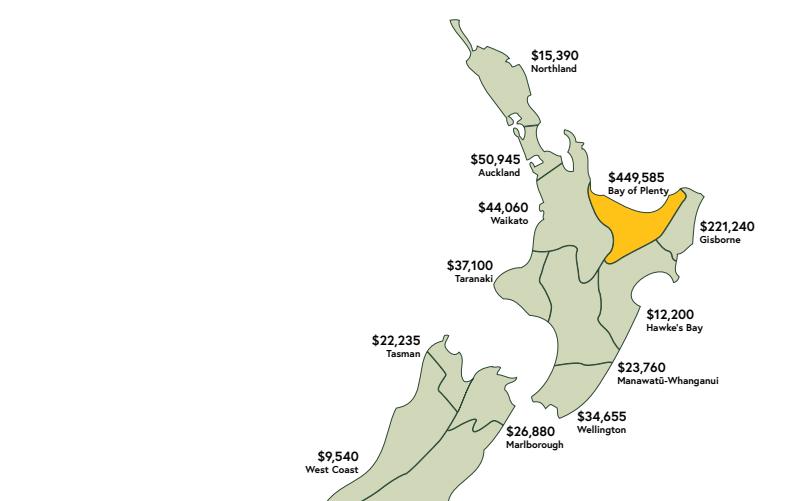
“Our councils are supportive of the Branching Out project, and as ventures progress, we will continue to work closely together.”
For more information visit: www.venture.org.nz/projects/branching-out
ater from a river running through Harwoods’ farm in Golden Bay is diverted to their hydro-electric power station to reduce the farm’s power bill and provide a substantial income stream to their business.
The power station has been operating for several years now and Nigel Harwood says it has performed beyond expectations in both returns and generation. It cost $1.8 million to build the station which has three turbines capable of driving their pivot irrigation on the dairy farm as well as earning $210,000 by exporting surplus power to the local power company.
“It brings quite a bit of power for irrigation, and in winter we export everything.”

Though the Takaka River borders the dairy farm, it has limitations due to the Cobb Hydro Station further upriver generating on the spot market. For their own hydro scheme they divert water from the smaller Waitui River that runs through the farm. The Harwoods initially planned to install just one turbine to help cover electricity costs on the dairy farm and then Network Tasman upgraded its substation at nearby Upper Takaka. That prompted two more turbines and the opportunity to add another income stream to the business.
The farm was buying electricity on the spot market before building the hydro operation and generally prices are high in winter, lower at the beginning of irrigation and then the price climbs again as the water levels drop in the southern hydro lakes. Now they are making their own electricity, they can sell at
Wthe higher prices in winter when they have plenty of water going through the power station and aren’t using it for irrigation. They still pay about $15,000 to buy power through summer for irrigation on the dairy farm, which is about half the costs without the hydro scheme and the overall income of $210,000 dwarfs that cost.
The family has multiple income streams without electricity, spread between the main farm at the base of the Takaka Hill through to a large, isolated finishing property on the northwest coast of Golden Bay. All up, they milk up to 900 dairy cows and run about 3,300 ewes, 750 Red hinds, 70 breeding cows, 200 bulls and finish 8,500 lambs.
Hydro into the mix meant familiarising themselves with the electricity industry and learning a new language that entailed kilowatts, negative pressure waves and transient pressures. It involved the purchase of Francis turbines from China with generators attached to convert the energy into power and computers to control the speed and automatically alter
the turbines to suit the water level. When they laid the pipe, they also put fibre optic cable into the trench so that the intake computers talk to the generators and signal them to ramp up speed if there’s more water coming through and then close the gate as they reach full speed.
The hard yards have been done and now it is a low-input operation where they pay a knowledgeable person $500 a month to keep an eye on the power station.
Nigel says diversity is becoming increasingly important for farmers as liberal democracies around the world make it harder and harder to farm for food production.
“I’m watching local and central government making it harder and harder to farm. And it’s happening right around the world – coming from liberal democracies leading the charge against farming and I think it will end in tears somewhere.
“This is where having diversity kicks in. If I look at this farm, I can make higher returns from power and aerial transmission sites. We will follow the trend that Government is pushing and plant more trees into the carbon market. We have pine trees and regenerating blocks and are looking at letting large areas revert. If they keep putting more and more pressure on, and the carbon price keeps going up, it will make sense at some stage to plant pine trees on dairy farms. That will be swapping food production for trees.”
Theoretically, hydro schemes fit well with the Government’s push toward renewable energy, though in reality, Nigel says there is little encouragement to establish them. Yet he says hydro has little effect on the environment as water is diverted into the turbines and back out again into the river.
A farm’s own hydro power station has turned around the energy consumption of the operation. By Anne Hardie.
Dairy farmers could diversify their incomes with development of a system to extract protein from leafy plants. Anne Lee reports.
For Maury and John Leyland Penno the next step after high profile dairying careers wasn’t to jump ship and turn their backs on dairy in favour of plant proteins – it’s been about bringing the two together.
The couple founded Leaft Foods in 2019 and in the next 12 months they hope to bring a new protein to market that could be a game-changer for dairy farmers –in a good way.
When they started the company they had both not long left full-time careers in the dairy sector, making names for themselves – Maury in Fonterra and John in founding Synlait.
“We were thinking about what was next for us and it was clear that plant protein was getting higher and higher up the agenda in terms of consumer interest –we’d started thinking how New Zealand farmers might participate in that,” John says.

At the same time, the pair were ever conscious of the environmental challenges pitching up at dairy.
But it was at a Lincoln University “hackathon,” which
John says Maury had “convinced” him to come along to on a Sunday afternoon, that they both sat up and took notice.
Other plant proteins being produced were all related to seeds, beans or grains of crops and were already being grown elsewhere in the world at huge scale.
At the hackathon, though, they heard about Rubisco –an abundant protein in leafy plants - and the possibility that it could be extracted to make an extremely highly nutritious and valuable human food source.
The technology and process to extract it didn’t exist although there had been some progress made.
A curious and technically minded Maury set about researching the concept and managed to get to the “green protein” stage using a system she set up in the home kitchen.
The final white rubisco protein though is the “holy grail” and they realised that developing the process to extract it would be ground breaking.
“We were thinking about all of this through a lens of fitting into our farm systems and how we could combine it with what we do now and enhance it,” John says.
He was the chairman of the Freshwater Leaders Group which put forward tough recommendations to government on freshwater standards and policies.
“We know the issues we face in the dairy sector in terms of nitrogen and our waterways and we can all see the issues around climate.
“What we saw in this was something that wasn’t just an incremental change to tackle those environmental challenges but a massive step change,” he says.
“Although it’s not a massive step change in terms of farming practices,” Maury says.
• A farmer grows a crop – lucerne is a front-runner at this stage but there are other possibles.
• The crop has the protein extracted to produce rubisco.
• The farmer earns income from that.
• The farmer also feeds the crop – minus the extracted protein – back to their cows as a low protein and therefore low nitrogen feed source.
• Cows excrete less nitrogen in their urine reducing nitrate leaching potential and nitrous oxide gas emissions helping cut greenhouse gas (GHG) emissions.
• The farmer could lower stocking rate and gain an income source.
• The cropped area has a lower GHG emissions profile.
Cows excrete less nitrogen in their urine reducing nitrate leaching potential and nitrous oxide gas emissions helping cut greenhouse gas (GHG) emissions. The farmer could lower stocking rate and gain an income source.
The cropped area has a lower GHG emissions profile.
“The simple solve for GHG emissions at the moment is to reduce stocking rates but that has an impact on income.
“If we can dovetail this into the farm system then even if you have to reduce stocking rate you’re going to have an income stream from the Rubisco and you’re lowering the environmental impact of the animals you are still carrying by feeding back the by-product,” John says.
This isn’t about plant protein vs animal protein.
“We’re dairy people – and we’re still dairy people and deeply committed to the dairy industry – it’s hugely important to New Zealand,” John says.

“Food is not enemies of each other – liking plants doesn’t make you anti-dairy,” Maury says.
“Adding foods into diets doesn’t mean removing foods from diets.
“What we are creating here is an integrated system that could have transformational benefits,” she says.
Ross Milne is Leaft Foods chief executive. He too has an impressive dairying CV. Following an honours degree in chemical and process engineering from Canterbury University he cut his teeth working on Synlait’s first milk powder drier before working in China on what was then the world’s largest infant formula plant. After that he was off to Europe where he worked for GEA designing and building food processing plants and became the head of the company’s project execution group for Europe, Middle East and Africa. It was the chance to come home and work on something truly transformational that made him jump at the opportunity to lead Leaft Foods. While
a big part of his work over the past three years with Leaft has been focused on what could be world first technology to enable the extraction of the protein at a scalable level and produce it to exacting food quality standards he’s also been building a team to develop the business so it spans from inside the farm gate to the consumer. That’s why Lincoln has been a great base for the new company with onfarm research facilities and food technology research through Food Innovation Network Food South. Lincoln University vice chancellor Grant Edwards says Lincoln University is excited with Leaft Foods innovations in land use and the creation of high value foods and it’s great to be able to partner with the company as it now also moves to farm scale studies. Ross says they’re also working with Callaghan Innovation, Canterbury University and crown research institutes. Lincoln University’s Ashley Dene Research and Demonstration Farm has 35 hectares dedicated to Leaft studies. Lucerne is being used at the research farm with dairy cows also involved in the studies. Ross says a lucerne crop producing 20 tonnes drymatter (DM)/ha could produce 2500kg/ha of high-quality Rubisco protein.
“That’s revolutionary in itself – being able to produce that quantity of such high quality, nutritionally valuable protein,” Ross says.
It’s three to four times what a dairy system could produce alone so integrating into a dairy system, while reducing its environmental footprint could be a revolution in food production.
The concept and the company have attracted high quality attention, recently securing US$15 million of funding from Silicon Valley-based venture capital company Khosla Ventures – also backers of Rocket Lab. That funding is in addition to NZ$8m from the Ministry of Primary Industries through the Sustainable Food and Fibre Futures fund and the money John and Maury have poured into the venture.
‘We were thinking about what was next for us and it was clear that plant protein was getting higher and higher up the agenda in terms of consumer interest – we’d started thinking how New Zealand farmers might participate in that.’John and Maury Leyland Penno and Ross Milne – Leaft Foods plant protein not a threat but an opportunity.
A Danish veal producer sources calves from 25 dairy farms. By
Chris McCullough.Increasing numbers of dairy farmers are using sexed beef semen with their herds to produce calves with added value.
That’s the animal Danish beef farmer Kristian Sorensen wants to purchase for his Tranbjerg Ostergaard farm near the town of Arre in Jutland, western Denmark.
Each year Kristian produces around 4000 calves which are then slaughtered for veal at the local Danish Crown abattoir in Holsted. The calves are all bought from 25 local dairy farmers which ensure Kristian has a continuity of supply.
Plus, Kristian’s business is a good outlet for the dairy farms to sell their crossbred calves at a higher rate than the traditional dairy-bred bull calves.
Seven employees work on the 600 hectare farm on which he grows cereals, rapeseed, maize and grass.
“Back in 2010 I bought half this farm from my father and then nine years later I bought the other half,” he said. “We began producing 1000 calves for Danish Crown but since then have expanded the business by building new barns and now rear 4000 calves for veal production each year.”
This particular Danish Crown veal production programme is called Danish Calf and operates with a specific set of guidelines the 160 farmers who supply the calves must follow.
Basically, the calves must be born and reared in Denmark to the highest welfare standards before slaughtering at local abattoirs which are on average less than 2.5 hours travel distance from the farms.
The calves must be fed healthy and natural feed such as colostrum, fresh straw feed or roughage without the use of antibiotic growth
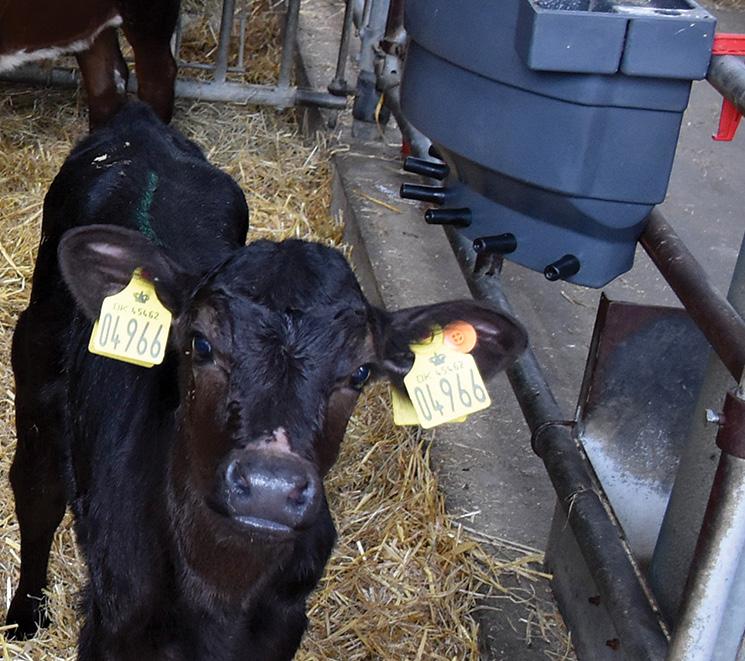
Other standards include correct slaughter weights, body shape and fat coverage measures as guided under the programme.
“We buy the calves in at around three weeks old,” Kristian said. “I have a constant supply from 25 local dairy farmers from whom I buy all my calves. In fact, right now we have 2700 calves on the farm and I just bought another 175 calves from them this week.”
The goal is to rear the calves until they are nine months old and have reached the target slaughter weights as set out by the Danish Calf programme. Calves are fed milk for the first two months then are switched to dry feed and roughage until they
“In Denmark we have a national calf price that is set to all farmers,” Kristian said. “As an example, for a Holstein calf crossbred with a beef sire weighing in at around 60kg I would pay €100 (NZ$160) for that animal across the board.
“However, I currently pay a bonus of around €100 for the best male calves, on top of the basic price of €75 per head. This gives the farmer a clear economic incentive to use more beef cattle sires.”
All the calves are vaccinated when they arrive on the farm. Kristian said the crossbred calves have a better feed efficiency rate than the purebred dairy bull calves.
“Two years ago around 20% of the calves I was buying were crossbreds but that has now increased to around 60%, and will rise even further over the next few years.
“We generally slaughter the calves at nine months of age when they should reach around 205kg slaughter weight. Generally we receive around €5 per kilogramme deadweight for the calves when slaughtered.
“Having more crossbreeds and fewer purebred dairy cattle benefits my bottom line and the climate,” he said.
Until the calves are three months old they receive 1kg of bought-in dry feed per day, which rises to 1.2kg to 1.3kg when they are five months old and around 1kg until nine months old and slaughter. All the calves receive about 2kg of fresh straw per head per day as well.
Kristian is well aware of which beef breed combinations perform the best as he has participated in some feed trials in the past.
Measured quantities of feed were fed to a specified batch of calves in special feed troughs. The feed intakes were then compared to the daily liveweight gain of the calves and results calculated.
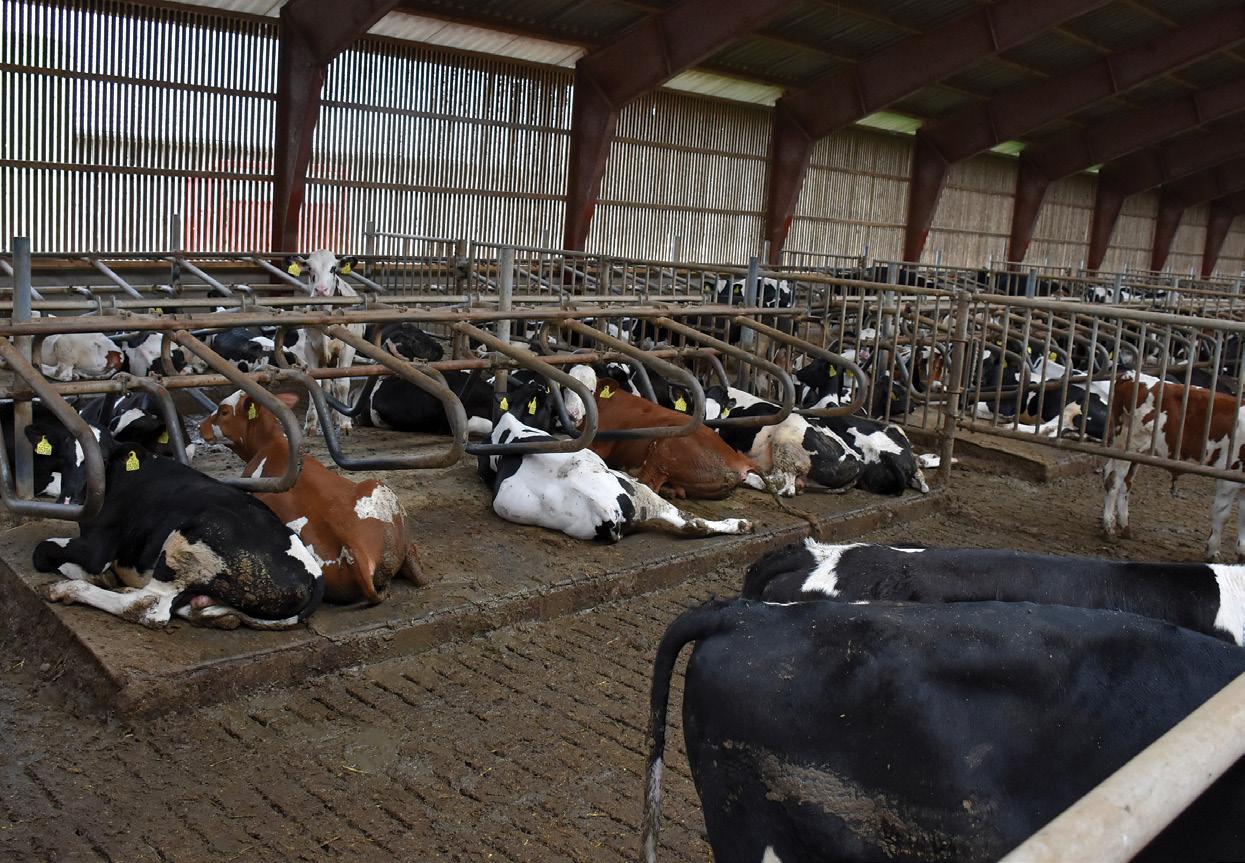
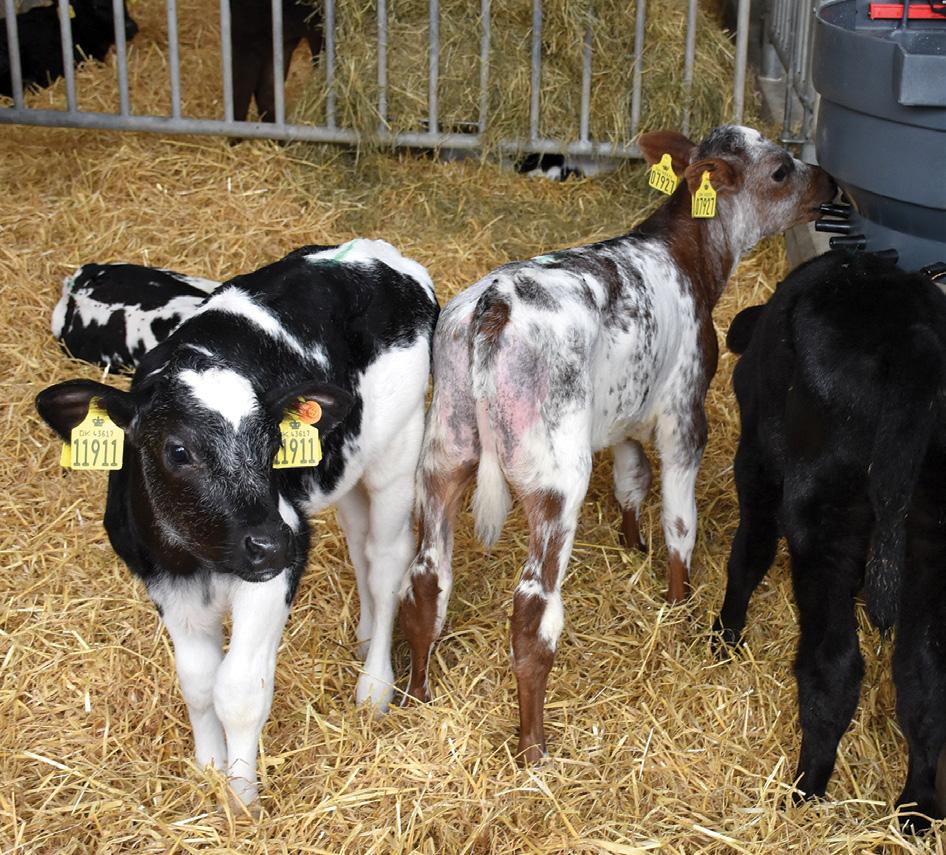
Kristian prefers to buy in Belgian Blue, Charolais or Angus beef breeds crossbred with the dairy breeds as they tend to thrive better in his system.
While most of the calves for the veal production programme are males, he also runs a heifer production system running them longer to produce red meat.
These heifers fall under Danish Crown’s new Premium Heifer concept, which dictates the cattle must be fed with a high proportion of roughages and must be slaughtered at 18 to 20 months. He hopes to deliver about 600 heifers per year to this special programme.
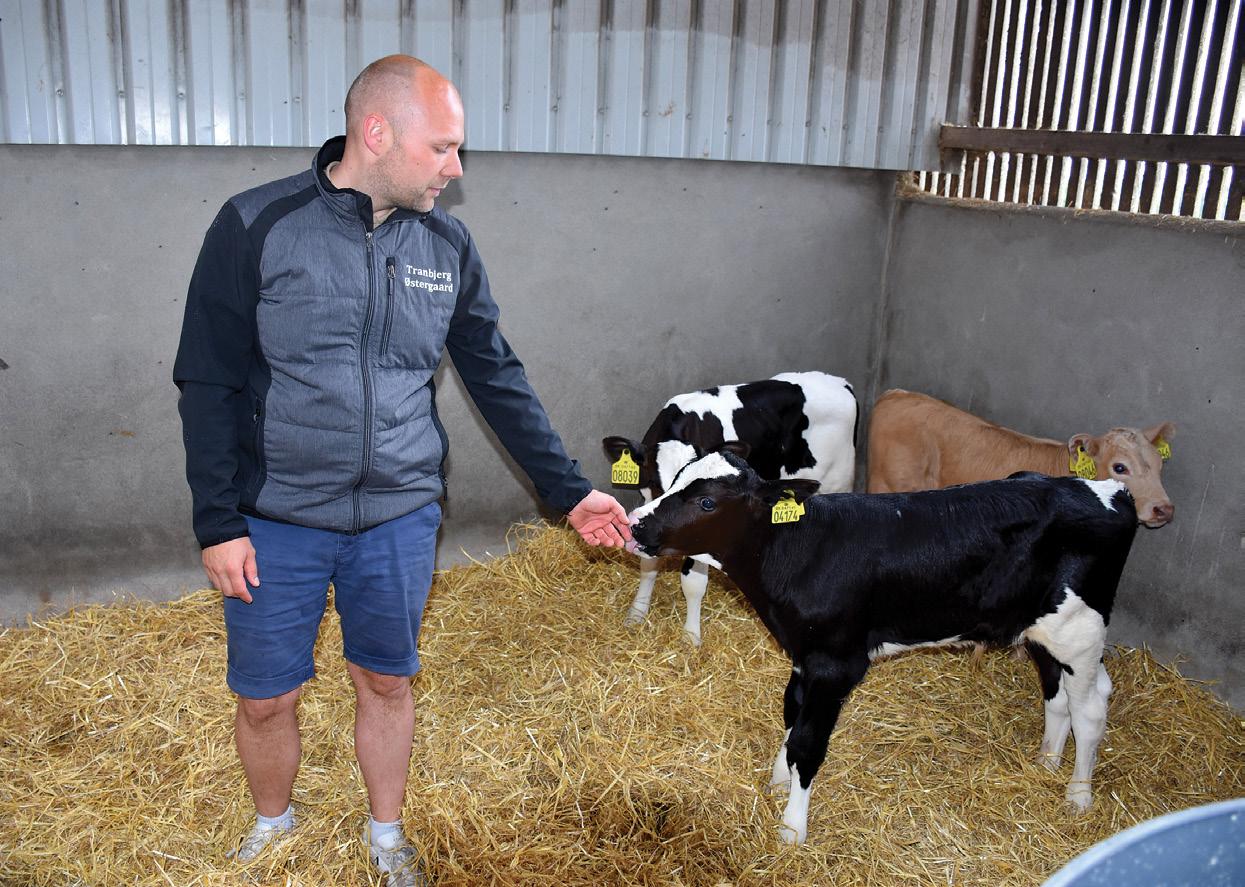
While four people work in the calf system, 1.5 people look after the heifers and 1.5 work in the fields and on maintenance around the farm and machines.
With so many calves on his farm there are certain to be some casualties but using good welfare practices, and fresh food these are kept to a minimum.
“We have a mortality rate of around 3-4% each year,” said Kristian. “All the calves are well looked after on our farm and we try to keep losses as low as possible.”
Brent Morrison reckons every farmer should plant at least 1% of their farm in trees to reap the benefits down the track and even if the farm is sold, the growing trees will add value.
The Morrison family milk 400 cows on a 160-hectare milking platform in the Rai Valley between Nelson and Blenheim and the surrounding hills are covered with a diverse mix of trees for harvesting over the next few hundred years, with a 12ha plot grown purely for their aesthetic appeal.
His grandfather began milking cows on the farm in 1924 and then his father began planting pine trees in the 1960s. When Brent took up the reins, he replaced sheep on the hills with more trees and has been planting ever since for financial, shelter, biodiversity and aesthetic reasons. Over the years he has experimented with numerous species and today the mix on the hillsides includes Douglas fir, 30ha of lusitanica, acacia melanoxylon (Tasmanian Blackwood) and of course pinus radiata. Forestry covers 150ha on different blocks including a 40ha block of existing pine plantation he bought a few years ago and another 30ha in pines that he has leased.
While the pines are relatively short-term crops - with blocks harvested over the years by the family - Brent has planted trees commercially that won’t be harvested for several generations.

Redwoods, even a handful of deodar cedars and totara have been planted and managed for harvest for future generations which may be 200 to 300 years down the track. Added to the commercial forestry plots, he has planted 12ha with a mix of redwoods, Douglas fir, larch, liquid amber and oaks simply for aesthetics and beneath them he has planted 100 rhododendrons that will flower about the time when it can be quite wet on the farm.
“When it rains, I thought it would be quite nice to put a smile on your face,” he says.
“It’s all very well doing the beautification, but the bottom line is pine forest is hard to beat commercially. It all adds diversification to the farm and provides another income stream.”
The family harvested 11ha of pines earlier this year and he says it took a year of planning to have everything ready for harvest when the price was right. As it happened, the price dropped in January and February and they held off harvesting until it rose again in March and April.
Working closely with contractors who predicted it would rise again gave them the opportunity to target harvest for that rise. They averaged $110 to $120 per tonne and prices are now down to about $80/t. Brent says anything over $100/t is a pretty good return for his blocks. Rai Valley is between two ports
and mills which gives them options for their wood. “Rai Valley is a great place to be because we have distinctly different markets in Nelson and Blenheim.”
A two-metre rainfall provides an ideal environment for growing trees which is another reason to add them into the farm business, whether it is pine trees or alternative species. When farmers plant trees on their less-productive areas, he says it won’t have a big effect on milk production and will add an asset with big benefits down the track.
“In Nelson-Marlborough I don’t know why any farm doesn’t have one hectare or 10ha of hill or gully in forestry. I think a lot of people can’t see 25 years ahead and fence off that hill or gully. They’re not going to lose many cattle and in 25 years time they will get a golden handshake.
“Why not take a gamble and put 1% of the farm into redwoods that will be worth twice as much as pine trees,” he says. “If you sell the farm after 10 to 20 years, you have an asset with a value on it. Don’t procrastinate.” Planting is the busiest time for a block of forestry and silviculture gangs take care of tree management over the years. One of Brent’s sons is also involved in management of the forests and works alongside contractors. The farm already earns carbon credits and Brent says they are considering putting more land into carbon credits. However, he has mixed feelings about the carbon credit industry which he says is politically driven to change land use and yet the Government does not recognise what is already planted.
“We’re carbon neutral here but aren’t recognised for it.”
Brent has also been busy planting natives around the farm and has just taken up an offer from the Te Hoiere/Pelorous Catchment Restoration Project to plant 3000 trees on a runoff in the Marlborough Sounds.
Abbe Hoare is known as the sunflower lady, and she doesn’t mind the moniker. The Mangamaire Sunflower Field, established by farmer, photographer and mum, turned sunflower entrepreneur extraordinaire, Abbe, is turning heads for all the right reasons. She and her partner Emile de Greeuw, and their two girls Florence, 8, and Maeve, 2, have a 90-hectare farm at Mangamaire, just south of Pahiatua. Their ultimate dream is to one day buy a bigger farm that will sustain their family, but for now, they’re constantly looking for ways to diversify their operation to make this happen. Emile has a fencing contracting business, Omata Fencing, which means Abbe is in charge of the day-to-day running of the farm. She grew up on a sheep and beef farm, but trained as a radiographer initially and had no farming experience. The challenge is one she is relishing.
They have a flock of 320 ewes, buying in trade lambs and also their lamb replacements and taking them through, as well as 100 trade cattle.
“Three years ago, we bought this, there’s two separate blocks and we’ve got about 90ha and they were bare, there was no house. We’ve built a shed house, we thought we’d quickly build something and then build an actual house. It took so long and was so expensive that we’re in the shed for the foreseeable future, and that’s fine. “As I’m sure people are aware, 90ha doesn’t make much money, so we’re always on the lookout for ways to try and diversify
our farm income. I’m a big believer in diversifying onfarm and I think that every farm has the opportunity to do something outside the box.”
It was when renting a nearby cottage while building the shed, and Abbe was at home with new born Maeve, that she first dreamed up the sunflower field idea.
“As you do, you spend a lot of time sitting on the couch thinking, and I just needed something that was fun and creative to think about, and that was where the idea for the sunflower field came from.
“I wanted something I could integrate my photography with and I knew that there was this beautiful backdrop, great flat paddock where the sun was setting, it was all perfectly orchestrated from a planting perspective.”
Abbe hit on the idea of planting a sunflower field on their farm, initially as a way to mitigate a threat to their farming business and turn it into an opportunity instead. With the farm on either side of a busy road, which she regularly needs to move stock across, the sunflowers seemed a novel way to slow traffic.
Ironically, the sunflower field didn’t achieve her objective of slowing the traffic, as it was so popular, she actually increased the traffic on the road exponentially to the point it almost had the opposite effect.
Planting a cut variety – sowing every one of the 47,000 sunflowers herself – meant she was able to sell cut flowers too.

Over just 12 days of being open in the summer of 2022 Abbe was blown away by the number of visitors from the city, and an extra bonus of the field was the opportunity to share their farm and life with an urban audience. They had 4000 people through the gates over that time, and Abbe says, financially, it was a worthwhile exercise. “We had this perfect storm of Covid, everything was closed, but we tried to remain open as we were outside and it was safe. So many people came from Wellington. I was amazed by how many people are obsessed with sunflowers.”
Abbe has big plans to make the sunflower field even bigger and brighter this year, with a picnic concept in the pipeline.
“I’m allowed to have a bigger part of the farm this year, which is great. I think we need to keep it simple, and being a one-person management team, I need to be careful about how much I do. We are going with a picnic idea and I really want to have people come to the field because they think they’re coming for the sunflowers, but try and keep them for the farm. So many people came who had never set foot on a farm before, which blew my mind.”
• Listen to Abbe’s episode of From the Ground Up to hear more about the sunflower field, how she marketed her idea and what she learned along the way.
www.nzfarmlife.co.nz/podcasts-2
Flooding is a fact of life for farmers on the Manawatu plains. By
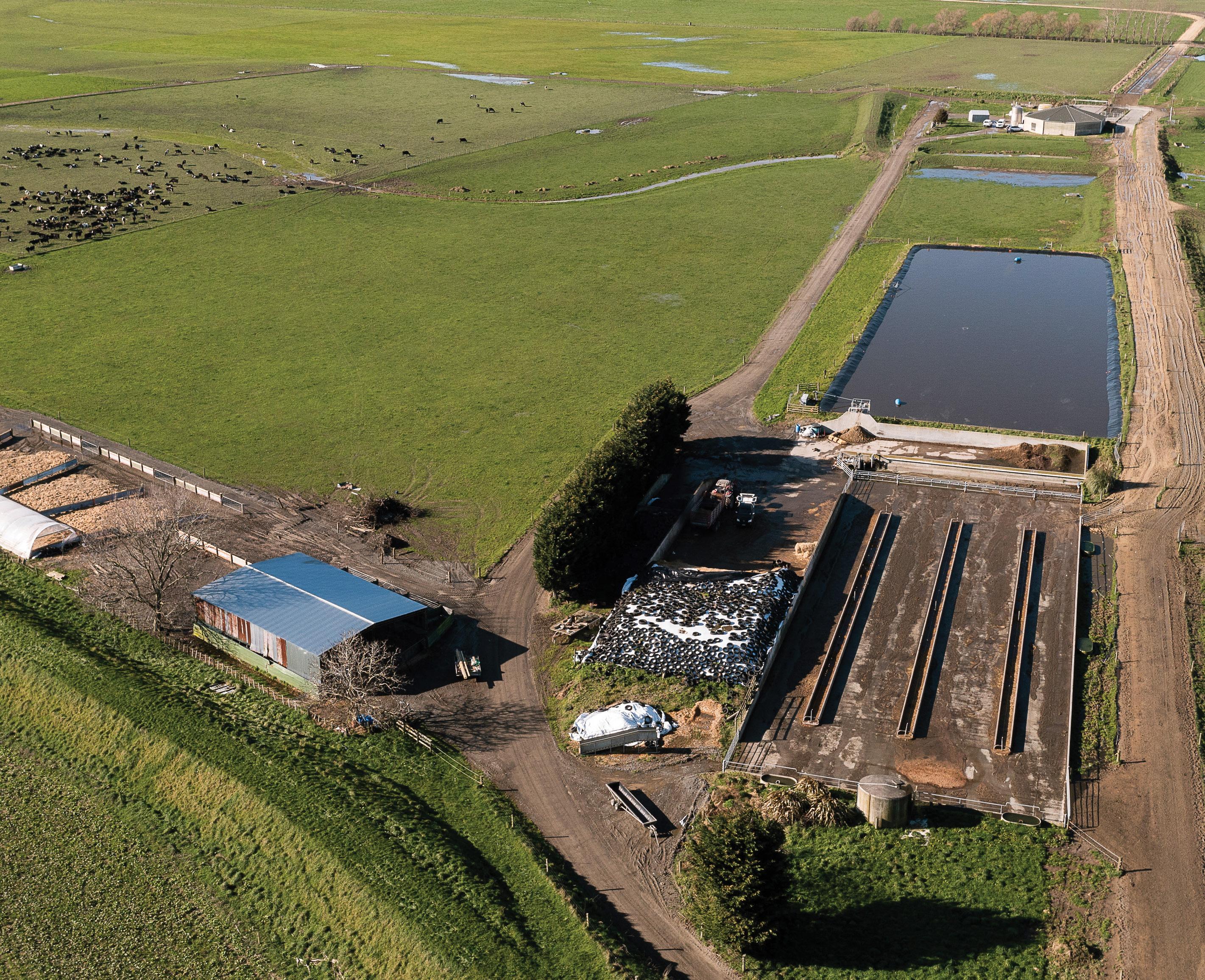 Jackie Harrigan.
Jackie Harrigan.
After spending four years farming in the Basin, Angela Strawbridge is well versed in weather watching, flying into action after receiving flood alerts and dealing with floodresistant pastures.
It’s knowledge her new farm owner obviously valued when he offered her to stay on in the role of farm manager on the 255-hectare milking platform at Rangiotu in the Manawatu. She has worked hard on many initiatives to increase production, improve cow efficiency and shore up team systems, some of which helped her win a merit award for people management in the 2022 Horizons Ballance Farm Environment Awards.
Ownership of the Basin changed in June 2022, from Hopkins Farming Group, who Angela had managed the property for for four years, to the OB Group.
It’s not quite business as usual for Angela, with a change from calving 850 cows in a split calving system to 750 cows calving in spring, to take pressure off the farm in the wet of winter.
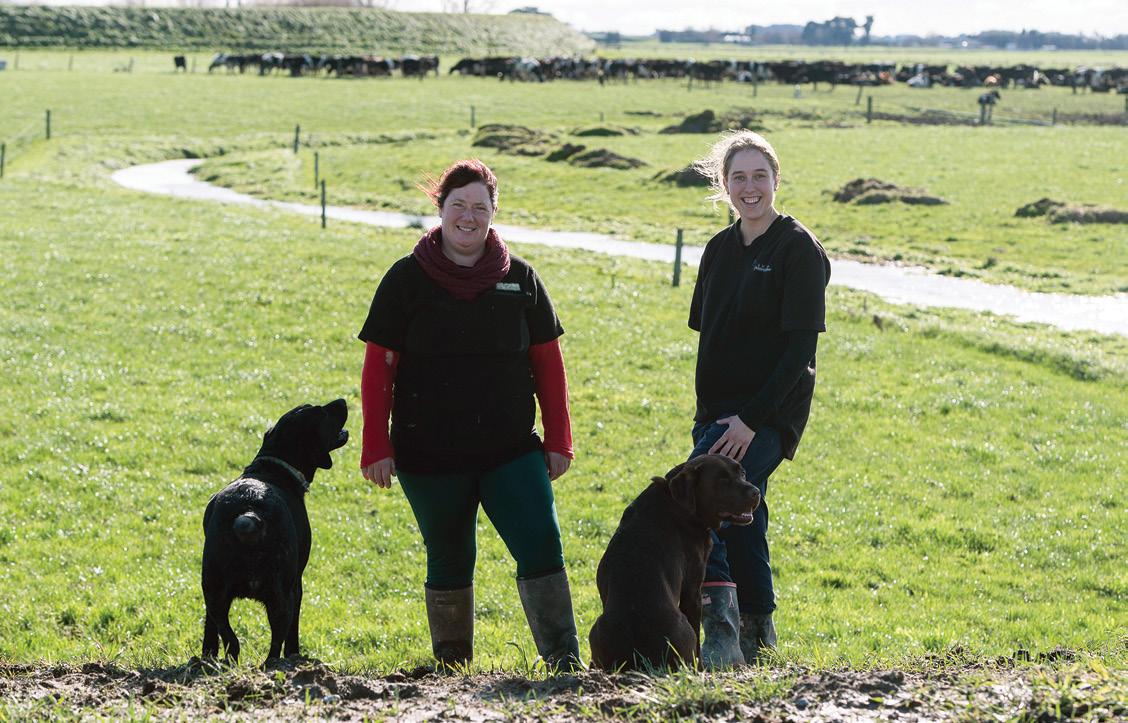
And every winter is wet, with The Basin named after the basin it sits in, alongside the Oroua River with Burke’s Drain running along the northern boundary - the main drain that takes the overflow of stormwater from Palmerston North city, preventing the city from flooding in a prolonged rain event. Another drain takes overflow from the Oroua River.
Angela is impressed with the flood alert calls she gets from Horizons Regional Council and tracks the rain warnings for the Oroua and Manawatu rivers while taking a flooding event in her stride.
“We know if there is a big rain event through in the Tararua, at the source of the Manawatu River, there will be lots of water coming our way.
“They can be quite helpful - we know that a December flood means a good January/ February for summer pasture production.”
Up to 75% of the farm has been under water in a bad event, and can take up to 10 days to clear.
Previous owners Hopkins Farming Group put 25% of the farm into a fescue-dominant sward in the back paddocks nearest the drain which Angela says survives really well up to 10 days under water.
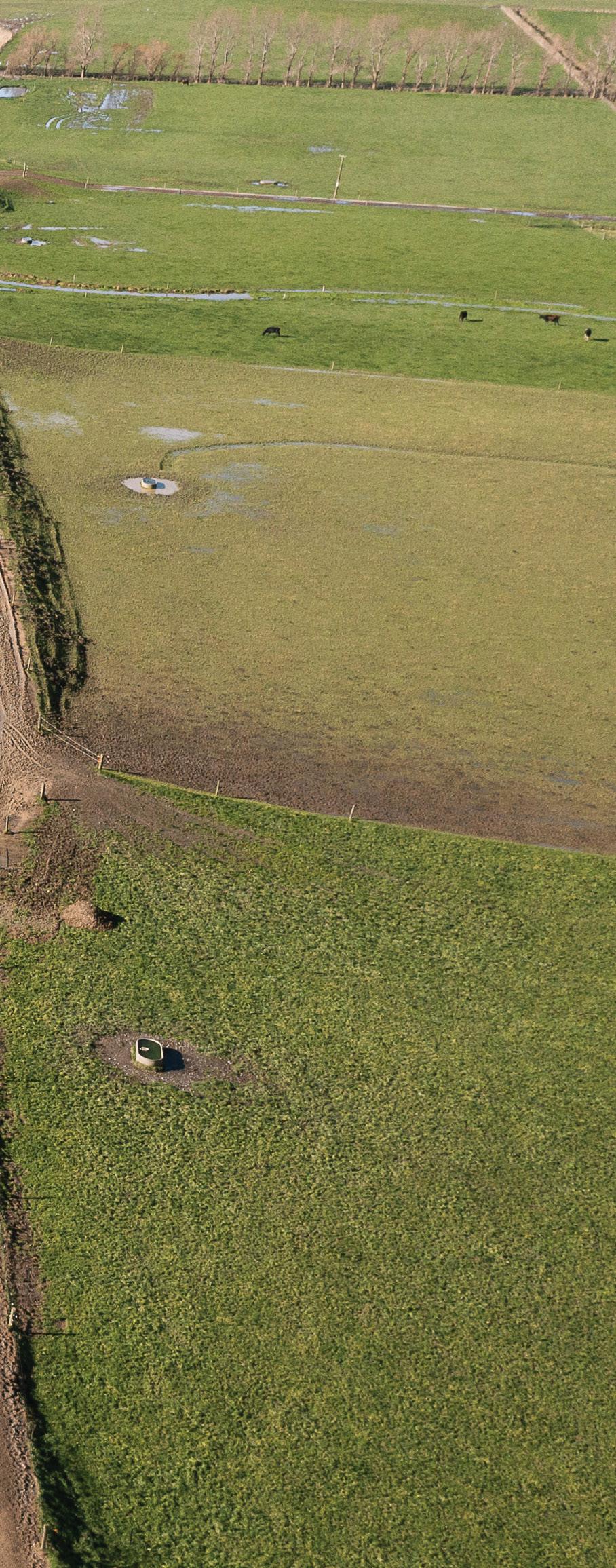
The fescue, plantain, clover mix (15% plantain, 30% clover, 55% fescue) has taken a different management approach but has
proven its worth in terms of flood recovery. Growth is fast, with good winter growth and earlier seed head that thrives in summer but needs to be watched carefully and often involves some topping, Angela says.
“We have also put some red clover in - with the longer tap roots to bring moisture up from below.”
“We can graze the sward every 12 days with a faster growing round - so we try to do a weekly pasture walk to keep an eye on it.”
The farm grows 13-14 tonnes/ha each year, Angela says.
When asked if the cows milk well on it, she explained that the milk protein levels drop slightly but that the fescue is a four-leaf stage type plant, but really needs to be grazed at the three-leaf stage before the cows find it too fibrous - and then it might need topping to get it back under control.
Fescue prefers warmer temperatures for establishment - so Angela says she needs to have a discussion with the new owner about changing to chicory rather than turnips for summer feed - to get the regrassing done sooner. And to ensure a good strike.
It’s a balancing act Angela says, as milksolids can dip 0.5kg on the fescue sward but jump by the same amount on the chicory with the higher protein intake.
Last season the farm was a System 3-4 operation with the winter milking, bringing in mainly maize, palm kernel and making 200T of grass silage, but plans are afoot with the new owner John O’Brien opting to grow their own maize (400-500T maize) at the runoff and on the extended platform, from adding in a neighbouring 100ha, which is part of the O’Briens’ home farm.
The additional land will be useful as it’s slightly higher ground and will be partially
‘WE KNOW IF THERE IS A BIG RAIN EVENT THROUGH IN THE TARARUA, AT THE SOURCE OF THE MANAWATU RIVER, THERE WILL BE LOTS OF WATER COMING OUR WAY.’Left: Aerial view of the farm and its upgraded infrastructure. Right: Angela Strawbridge and 2IC Letisha Stubbs.
milked on and also used to grow the maize, Angela says.
Supplement will be fed until September when balance date hits then the herd reverts to straight pasture along with the summer crop.
Angela has spent 25 years in the dairy industry and the past four years at The Basin.
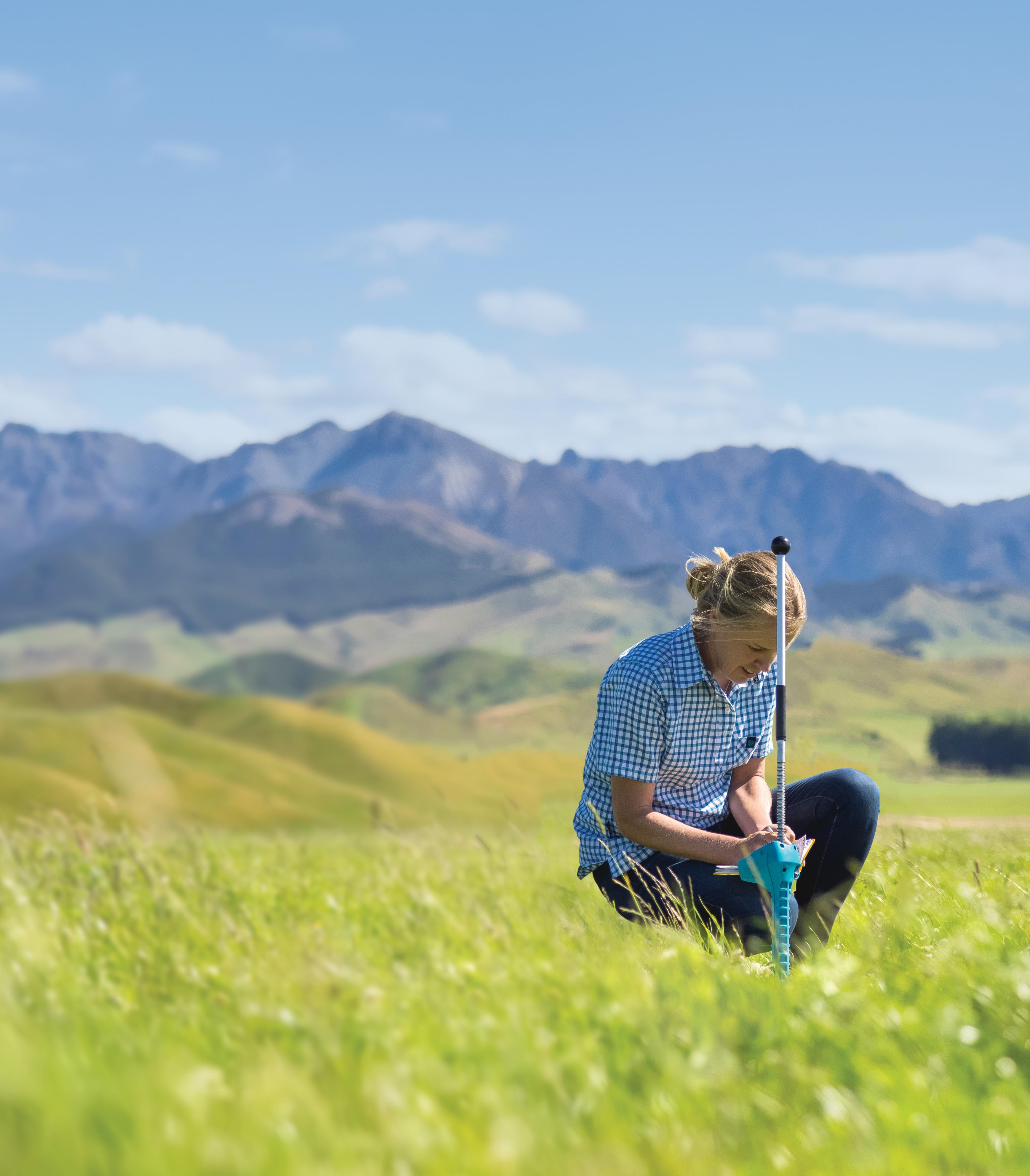
The herd was producing 268,000kg MS in her first season there and she has built production to 319,000kg MS with 50 fewer cows. She puts the increase down to improved grazing management and improvements to the herd. With a reduced empty rate she was able to cull some of the poorer cows from the herd.
“There were lots of three-titters and old cows here when I arrived, but we have been able to get rid of them. We also really reaped the rewards of a better empty rate by reducing it to 15% from 19% and improving the six-week in-calf rate to 70%.
“Part of that was increasing the herd fertility by whole-herd metrichecking and monitoring body condition score each month.”
Drafting light cows into a once-a-day herd with the lame cows meant they could build their condition before mating.
The effluent system has been rebuilt with an enlarged pond which can cater for the wet soils and for the planned increase in cow numbers to 1000 when the extra 100ha is brought into the milking platform.
A solids separator has been a bonus to screen the solids out and apply that to the crop paddocks.
The effluent area has been expanded to 90ha and has the ability to extend the lines Angela says. “Because we are on a flood plain we need to have flexibility.”
“We have kept the N application regime to under 100kg/ha/year because I prefer to stay away from nitrogen application and use more effluent application area.”
The farm team has fenced off lots of old drains, along with putting new proper drains through and the next project is to plant natives to build biodiversity.
“The duck ponds need fresh planting too, so we will be going for co-funding from Horizons Regional Council to buy suitable plants.”
She is proud of how many small native frogs they have noticed living in the old Taonui stream bed and is keen to bring more back into the drains and streams around the farm.
This season the calf rearing facilities have been extended to increase access to sunlight and have bigger runs for the calves. The races have also been limed, to address the lameness problems from the wet farm.
“Limed races are much better for cow flow, they have their heads down walking along and walk at their own pace - we have just had quotes for rubber matting in the rotary dairy shed also.”
Auto cup removers, auto chemical dispensers and an auto teat sprayer have been installed in the shed, along with green floodwash for the yard and feed pads.
“We don’t use any fresh water for cleaning them and to further save water,
the chiller water goes into a water tank and into the cow water supply system.”
Angela is a people person and thrives on building and enabling her farm team.
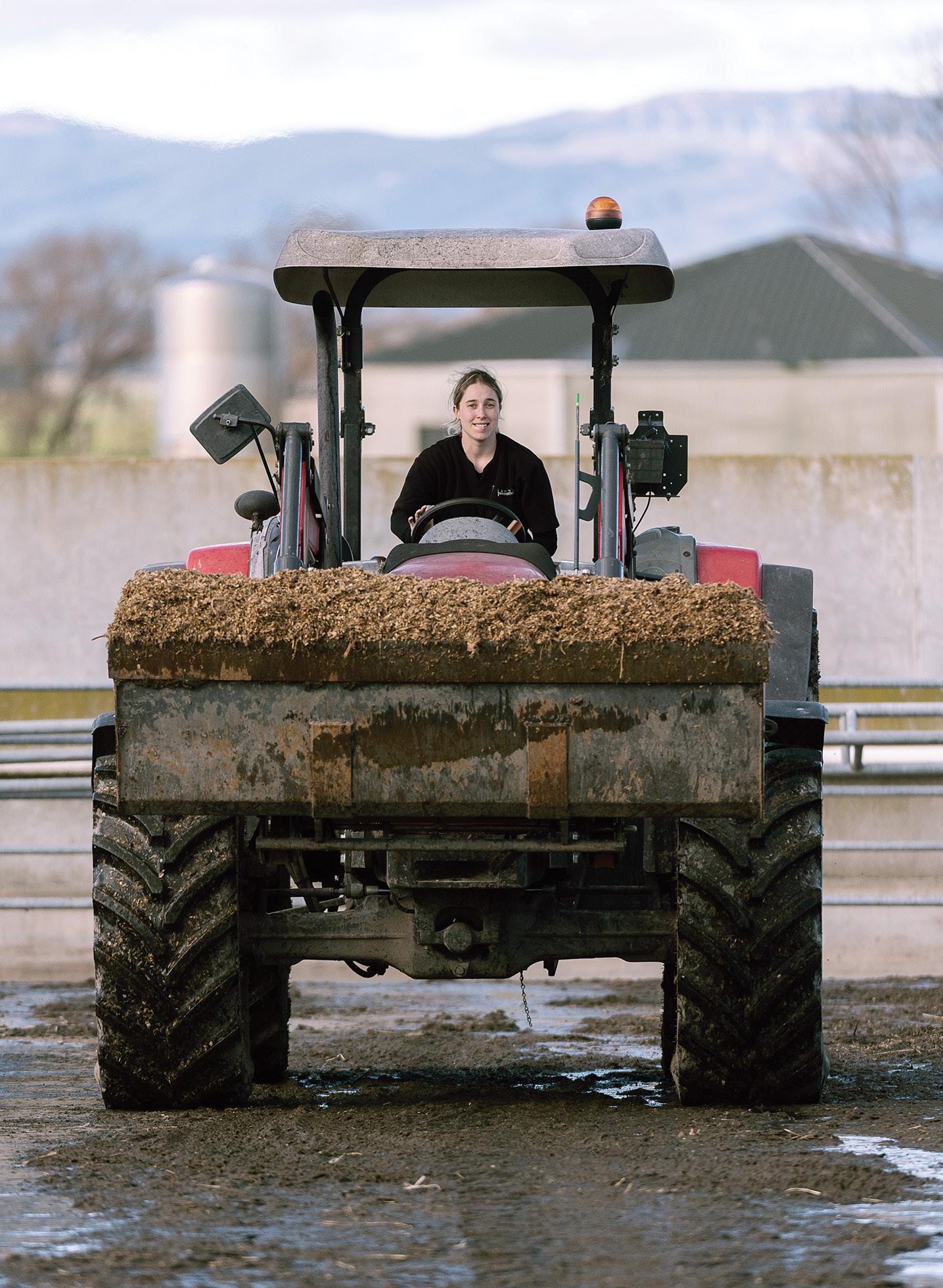
“I like to build a farm team where you share passion and goals, when everyone knows what you want to achieve and to upskill all the team members to keep high standards.”
She has upskilled the team on cell count management and good shed hygiene to avoid grades and has trained them all in effluent management.
“It’s important to give them the ‘why’ so they understand the reasoning rather than just how we do things.
“All of the staff have a personalised training plan and the opportunity for upskilling - working with Primary ITO to make sure they get recommended courses to suit them and the farm pays for the training.”
Aiming for five fulltime staff, she says the key to retaining good people is having an enjoyable team environment and stafffriendly rosters.
“The 6:2 roster works well with a team of four, and we can put a junior person on as an overlap and still have a strong team.
“You have to be more flexible around rosters these days, so we try to be open to different rosters for different team needs.”
Her 2IC Letisha Stubbs, who has a B Ag Com degree and is now studying Primary ITO level 4, is a keen dog agility competitor and values the flexibility to swap shifts when she needs to travel to competitions.
Angela is studying part time for a B Ag Com qualification by distance, combining study of two papers in Semester 1with one paper in Semester 2 and 2 papers over summer school.
She also manages to fit in leading three regional DWN leaders in her role as Lower NI Hub Leader and supports her three children and grandchildren.

Many native forest trees that would qualify for the Emissions Trading Scheme suffer if planted in retired pasture. Story and photo by Karen Trebilcock.
armers wanting to plant native trees need to do more than their homework before fencing off a hectare. University of Otago botanist Associate Professor Janice Lord said most native trees, especially those that grow more than five metres and can be counted under the New Zealand Emissions Trading Scheme (ETS), will struggle to grow in retired pasture.
“You are trying to change a whole ecosystem, so it’s not just about planting a tree,” she said.
“The pasture biomass, as well as the soil microbiome, is completely alien to native trees so getting rid of rank, perennial grass and thinking about the soil is important before the introduction of natives such as manuka, pittosporums and other pioneer vegetation.”
Insects, fungi and soil organisms needed for native plants to grow can be introduced to the area from soil around purchased plants, but the suitability of what you get depends on
“Beech trees need ecto-mycorrhizal fungi and they should come inoculated
“However, you can’t guarantee that a nursery has used inoculum that suits your location. If your beech trees or other natives fail to thrive, introduce soil from an area that is already growing the native plants that you want to grow.”
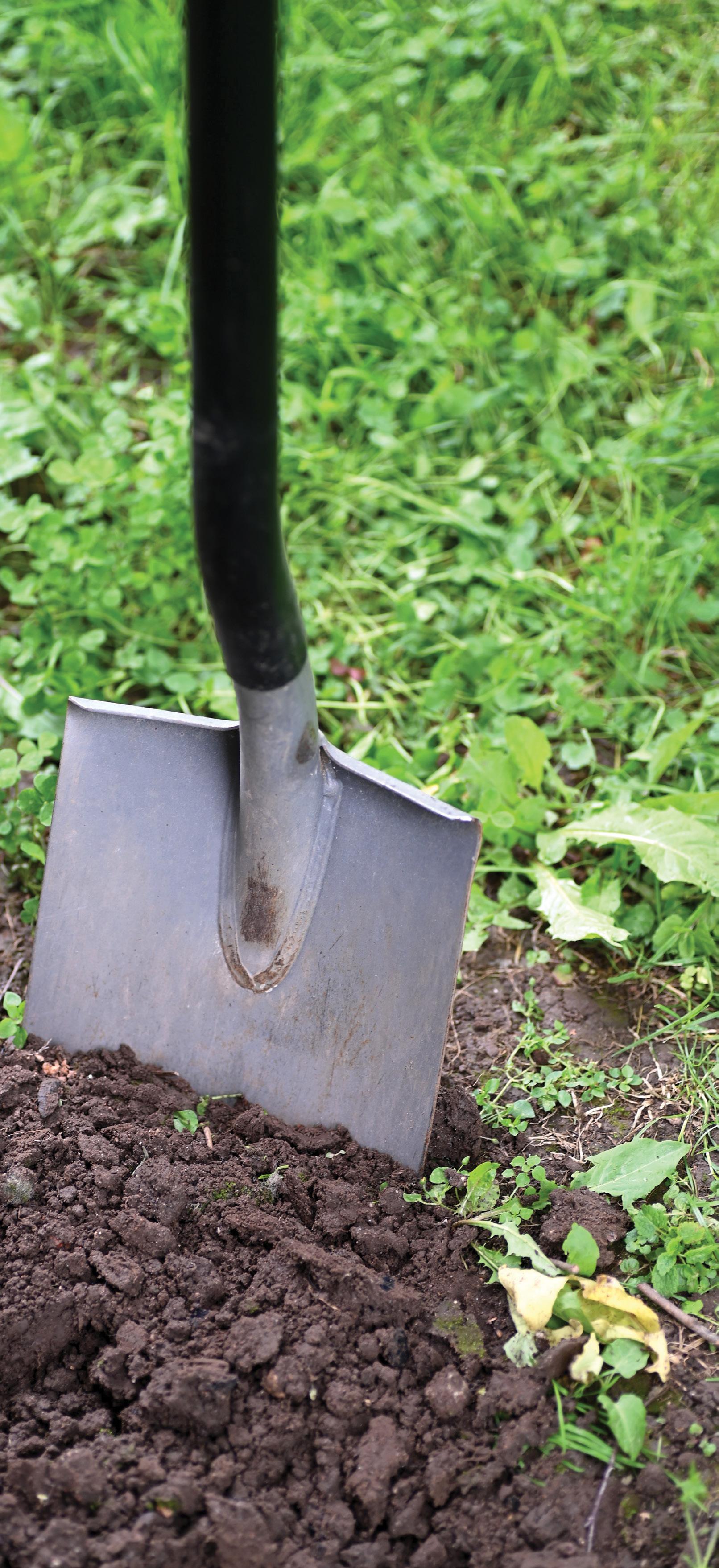
Growing natives near already established blocks also helps, providing corridors for birds, insects and fungi. Gorse was not such a problem as rank grass, as many natives needed shading which gorse could provide.
“Totara need at least 30% shade when they are young and so do the other podocarps which become canopy trees.”
Placing bird feeders in the area helped attract birds such as kererū which brought native seeds in with their droppings. When buying plants she advised not to go to Trade Me. “You won’t know what you’re getting. Instead approach a local native plant nursery. Then the plants you’ll buy will have been grown in similar climate conditions to your own and have local mycorrhizae on their
“And don’t buy cultivars because they are usually less hardy than the original species. The red cabbage trees may look great, but they don’t do as well as the green ones.
“If you can, choose plants that can handle higher temperatures than your area normally has, so you can build in some resilience to climate change.”
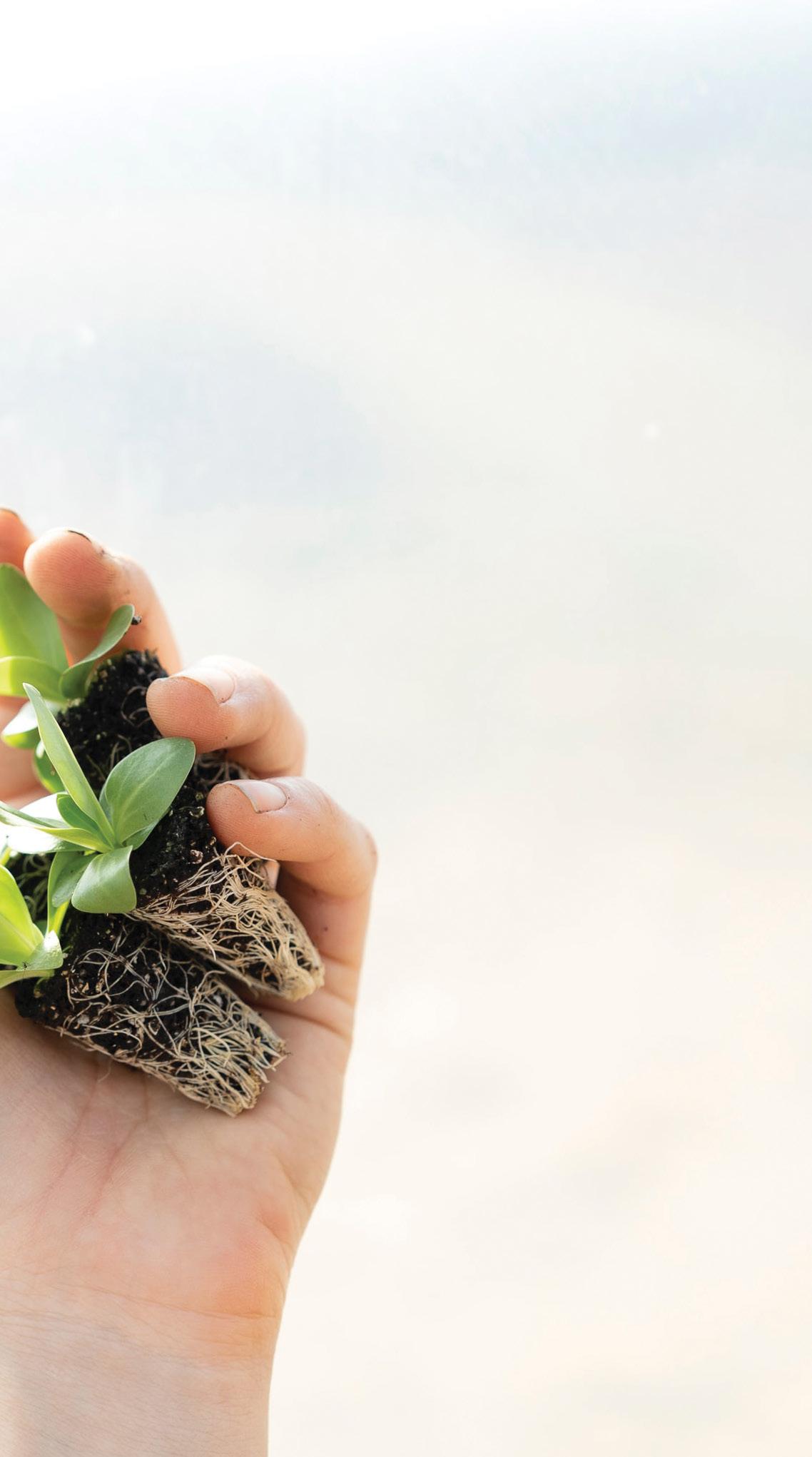

Although radiata pines allowed the regeneration of native plants under them in the North Island, where conditions were mostly warm and wet, southern dry and colder temperatures mostly prevented it.
However, recent trial work near Dunedin was showing natives were introducing themselves successfully under poplars.
“We think, since they lose their leaves in the winter, they’re letting enough light in for the natives to
grow plus the dead leaves provide humus and helps to keep the moisture in the soil.”
Farmers could start by growing poplars, which can be part of the ETS, and then when the natives became established, the trees could be selectively removed.
If planting by waterways, she said to add in swales and ponding areas so water had somewhere to go in times of flooding.
“Look at the whole landscape, how you can protect it from droughts and high rainfall.”
Areas should be fenced from stock and pest control put in place but she said there
was nothing wrong with cattle being able to reach over and nibble, especially as some native plants may provide them with health benefits such as harakeke (NZ flax).
Janice was concerned the Climate Commission has so far rejected the proposal under He Waka Eka Noa to include shelter belts and riparian plantings in the ETS.
“There is no difference to the trees. They’re still sequestering a whole lot of carbon whether they’re planted in rows or in blocks of a hectare or larger.
“We should be incentivising and rewarding landowners who are planting native trees but at the moment planting radiata is more rewarded.
“We seem to be obsessed by radiata and it does grow a lot quicker and so sequesters carbon a lot quicker, but we need biodiversity and forests that provide benefits in the long term.”
Together with colleagues in the Otago Business School she’s applying for funding to develop a research programme on
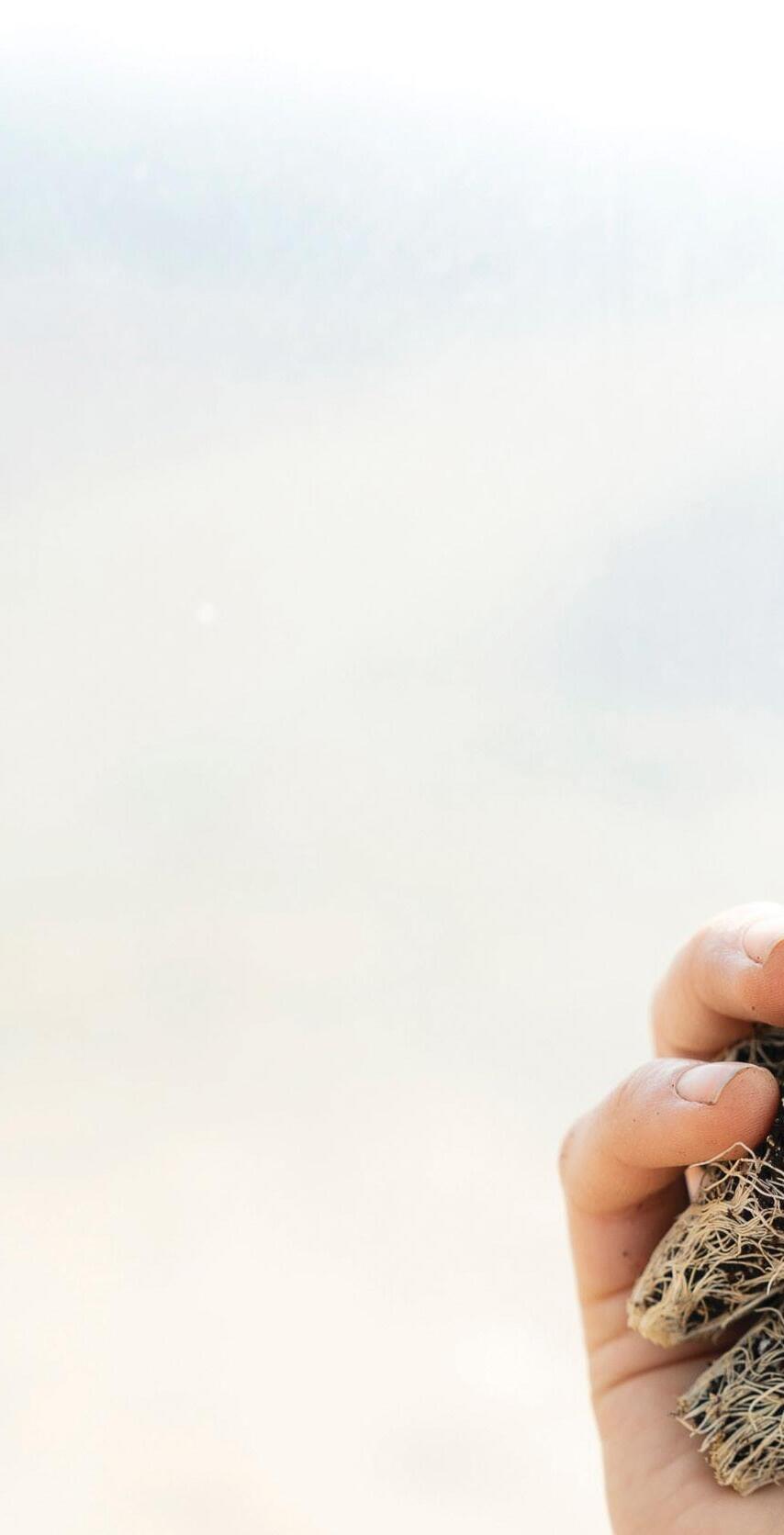
how planting natives can be rewarded, to incentivise their planting.
“It’s part of our nation’s goals to have more bush restored and if farmers are doing that then there should be some way they can be encouraged.”
Although Janice’s earlier research covered reproduction and pollination of native species, she is now firmly focused on restoring native bush in rural landscapes to improve ecosystems and for carbon sequestration.


“I own a pair of Red Bands, so I hope I have some credibility.”
This year she has 16 postgraduate students, many of whom are researching issues relevant to farmers.
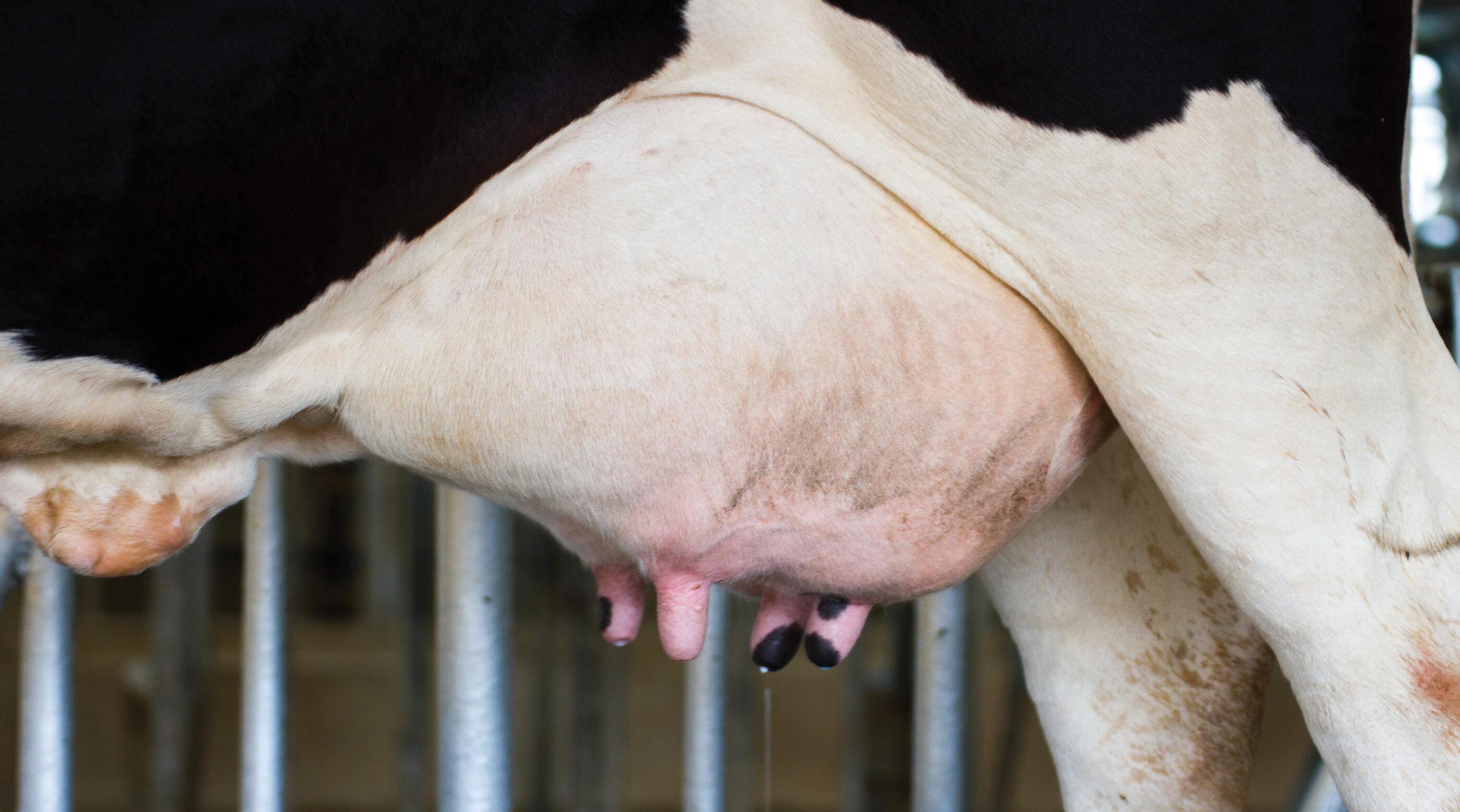
“If there are any farmers in Otago and Southland who want to host a research student please get in touch. Students can benefit hugely from being at the coal face of measuring carbon sequestration and regenerating native bush.”
She can be contacted at janice.lord@otago.ac.nz
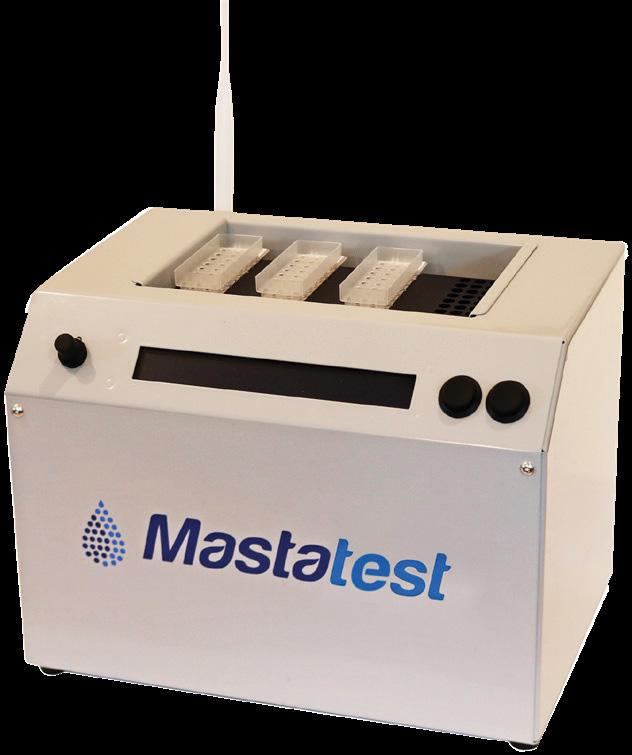
Changing behaviours of some pest plants, probably triggered by milder-than-usual winters, has the Tasman District Council’s biosecurity team nervous about the future and reviewing its management practices in case the trend is ongoing.
“We have observed some pest plant species that have not been responding as usual to the onset of winter. In several cases, this seasonal trigger is what allows us to identify some of our pest weed species. The warm, wet winter we’ve had here hasn’t provided enough of an impact to trigger the usual key changes that enable us to identify and control them,” Tasman District biosecurity officer Briar Cook says.
One example is climbing spindleberry, which is only identifiable in May when the leaves yellow and droop briefly before dropping off. Briar says this is a very narrow window of opportunity to check known sites and look for new ones. This season, known sites were visited in May as planned, and no yellowing was visible at several locations.
“We usually use the local vineyards as a good indicator of when exactly things are starting to change. This year we noticed the vineyards were also late to change. We have had to go back two to three times to some of the sites to check for the yellowing. I happened across a new site in early July that I only saw because it had the yellow drooping leaves – this is two months late.”
Variegated thistle is another pest plant the team has observed, in both 2021 and this year, as germinating early at some sites. It is an agricultural pest, forming dense stands in pasture and wasteland. It will suppress desirable pasture and its spines can be toxic and cause injury to animals. It has the potential to have a significant impact on pastoral and crop production.
“This change is quite concerning as we have recorded mid-winter germination, when typically,

they don’t germinate until September/October. This plant is a fast-growing annual or biennial, with a seed life in the ground of around 20 years.
“If we miss a seeding event from even a single seed head that puts us right back to square one at that site, and so it is vital to get to the plants before this occurs.
“This extending germination period means we will need to start checking our known sites significantly earlier in the season – and we have already done this for a couple of the sites this year. It’s made our team very nervous.”
Old man’s beard (OMB) is another species which is not behaving as usual.
“We have observed on several occasions, including early August, that vines still had green leaves on them. OMB is deciduous, dropping leaves after flowering in May. Some have dropped their leaves; others are still green and a lot we have seen are somewhere in between.
“This is not a species we target as biosecurity officers in Tasman (with the exception of Golden Bay and Upper Buller) however I can appreciate due to its widespread distribution that it is likely an issue for farmers and growers.”
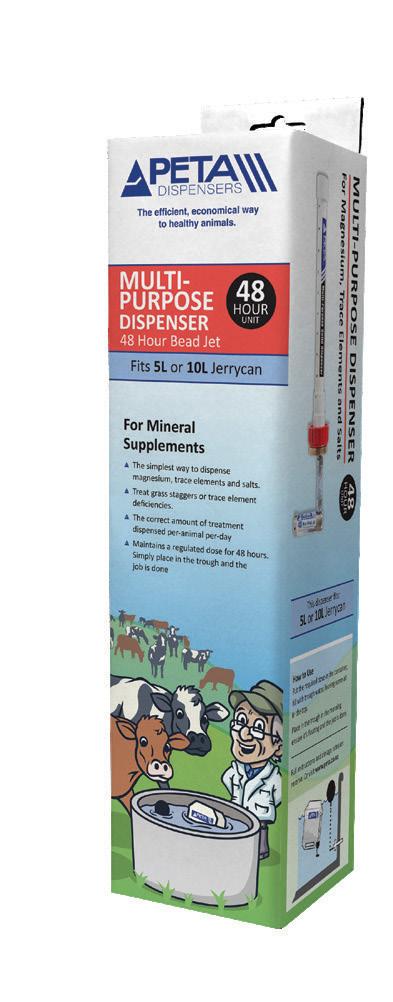
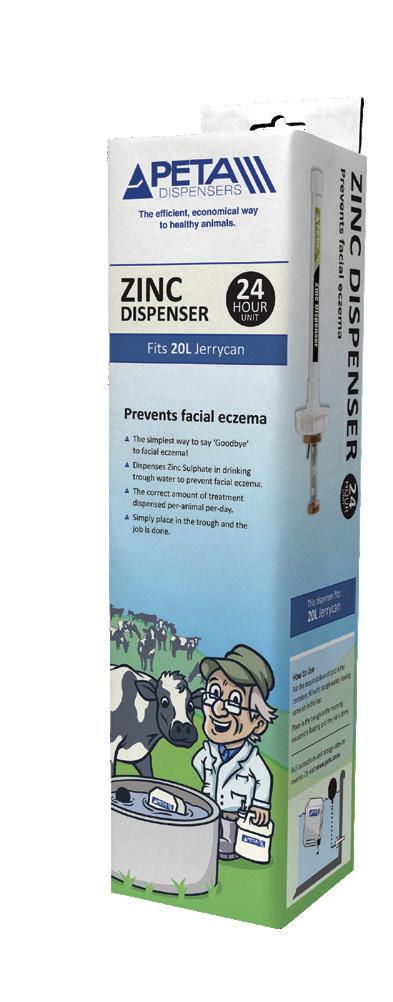
OMB is a highly effective smothering vine, and the winter leaf drop is often the only opportunity that smothered trees get to see the light of day. “Unfortunately, the warm winter has further limited this already brief reprieve.”
The Tasman District biosecurity team keeps farmers and orchardists up to date about large variety of pest plants including climbers, woody weeds, aquatic weeds and ground cover plants and

the best way to control them, through a range of pamphlets on the council website and from its service centres.

“We also use social media and the council newsletter to pass information to the public about particularly concerning pest weeds or pertinent updates and directly respond to enquiries on how to control certain weeds.
“More specifically, and particularly on farmland where biosecurity threats can impact productivity, we are always in touch with the landowners before carrying out surveillance, and often carry out the control on the spot if we identify a target plant. Landowners with pest plant sites are kept up to date following the surveillance as to what we find, any sudden changes in our knowledge and what to keep an eye out for.”
Briar says what the team have observed is “an early days’ trend”.
“However, it wouldn’t surprise me if the trend becomes more of a feature in the future, given the ominous loom of climate change.
“It’s definitely making us think more about the way we manage our top priority pest plants and what we may need to put in place to account for the extending seasons we are experiencing. It has also put us on the alert for other upcoming annual summer weeds in our calendar, so we will be keeping a close eye on that to make sure there are no more surprises.”
New Zealand’s future pastoral weeds are already in the country and climate change may enhance their opportunities to spread widely, Crown Research Institute, AgResearch principal scientist Dr Graeme Bourdôt believes.

“New Zealand has strong biosecurity protocols at our international border to stop new pests coming into the country but most weed scientists, including myself, would say most of our future weeds are already here.
“What we have is an internal biosecurity problem around future weeds, but that fact often gets lost amongst those who consider we have biosecurity sorted at our international border.
“Our future weeds are amongst the huge pool of about 21,000 exotic plant species introduced to New Zealand. Of those 1798 are naturalised, amongst which are all our current weeds. Another 1043 species are ‘casuals’ and potentially in the early stages of naturalising.”
AgResearch is using CLIMEX modelling software to create models for many of NZ’s existing agricultural weeds to determine the likely impacts of climate change on their potential distributions.
Among these is Chilean needle grass, an invasive weed able to out-compete productive pasture grasses and take over large areas if uncontrolled, particularly in dry environments such as east coast Hawke’s Bay, Marlborough and Canterbury. It is unpalatable to stock, and when the sharply pointed panicle seed is present (November-January and March-May), it becomes an animal welfare problem. A published AgResearch paper on Chilean Needle Grass, shows the plant could grow on 39% of the country’s land mass but by 2080, through climate warming, this potential distribution will increase by 60%, mainly by range expansion in westward and southerly directions.

Modelling has also been carried out for another invasive plant, Nassella Tussock which is able to spread and dominate pastures. The tussock is
unpalatable to stock and has a high reproductive capability with 120,000 seeds being present on one mature plant.
“The modelling shows that the land area in New Zealand with a climatically suitable environment for Nassella, currently 46% of the total landmass, will increase by 14% by 2080 due to climate change.”
The potential distribution of Californian thistle, one of the most common thistle species in NZ, has also been modelled. Once established in pastures, California thistle is difficult to control and forms a patch of shoots connected by a creeping root system.
“We have built a model to show the potential distribution of Californian Thistle under the current climate but have not yet looked at the future areas of potential for this weed,” he says.
While most pest plants have not been subject to climate change modelling, Graeme says it is possible to build climate niche models and produce maps to show where these plants could grow in future.
“For the ones we have modelled so far, and based on several future climate global models, it’s certainly clearly evident that New Zealand becomes climatically more suitable for these weeds.”
NZ is also likely to become more suitable for the spread of plants which are as yet not considered weeds. These are classed as ‘sleeper weeds’.
“These are weeds in waiting if you like and they include many thistles which are enormously serious agricultural weeds in North America. In New Zealand they are currently very localised.”
Modelling to discover what their future ranges could be hasn’t been conducted yet, but Graeme believes they could be among our serious weeds of the future. According to the Ministry for the Environment’s website,
Introduced, invasive weeds are lying in wait around the country, ready to take advantage of climate change. Elaine Fisher reports.Dr Graeme Bourdôt, principal scientist at the Crown Research Institute, AgResearch with the pest plant giant buttercup.
NZ has around 2500 named native plant types, including flowering plants, ferns and conifers and more than 80% of them are found nowhere else. However, since the arrival of humans around 1000 years ago about 21,000 plant species have been introduced. As a result, 1798 of these exotic plant species are now established in the wild and considered naturalised.
“We now have an order of magnitude more exotic plant species in New Zealand than natives!” says Graeme who believes many will be more widely spread in natural eco-systems, pastoral and arable lands and orchards in the coming decades.
“Our current and future weeds have got here either by themselves or been imported for agricultural, horticultural or garden use.
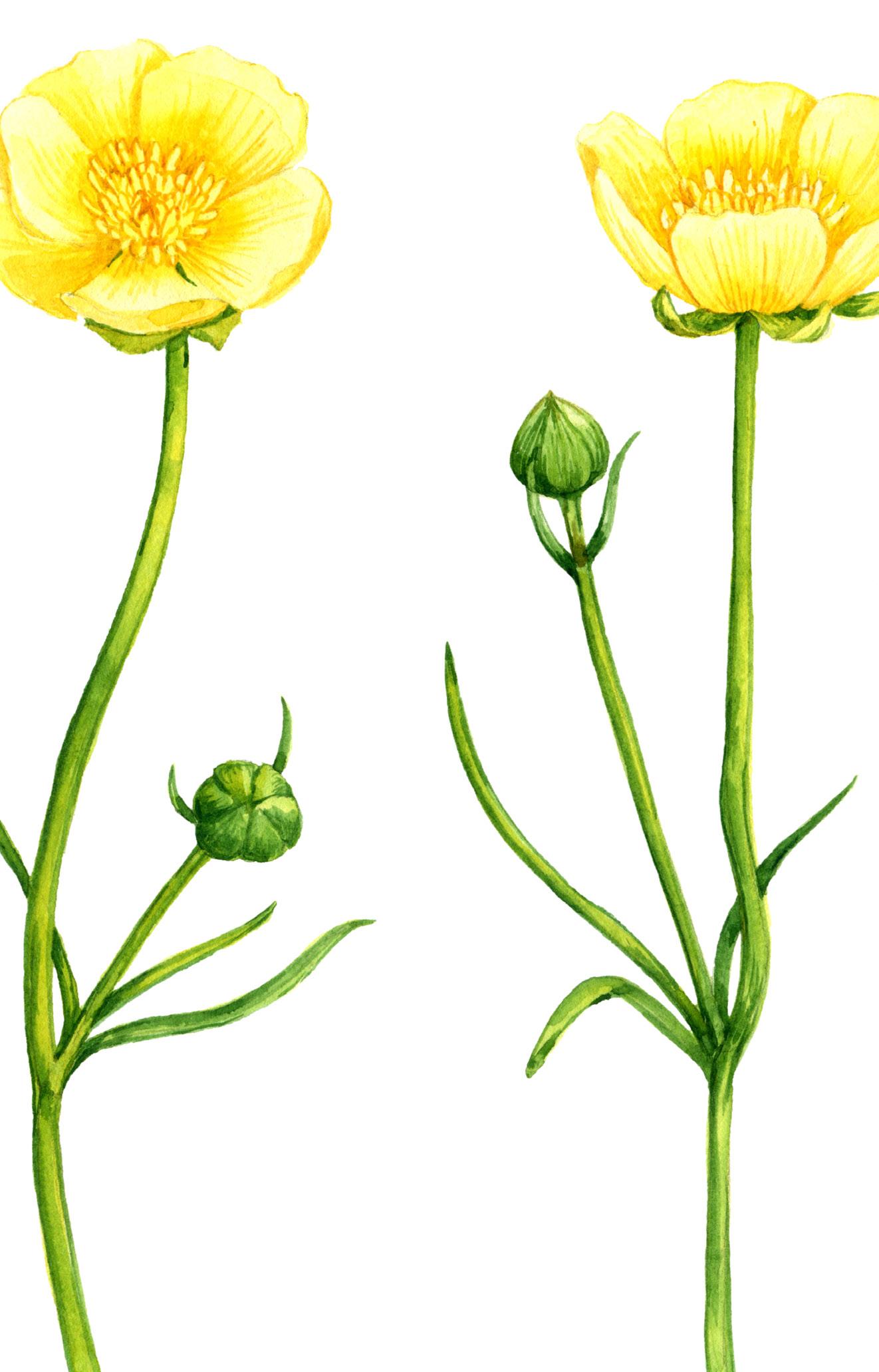
“We should worry about unwanted plants arriving unintentionally at our borders in imported grains, in soil on vehicle tyres or through other means, because there are tens of thousands of other potential pest plants in the world which could come into New Zealand.
“However, we have a huge pool of plants already here from which many of our future weeds will arise.”
Understanding which plants will become threats is vital, Graeme believes. “So many weeds have already invaded our natural and agricultural ecosystems that there is no way that we can ever manage them all. There is not enough manpower or funding to do so.

“The important question now for the Department of Conservation, Ministry for Primary Industries, and regional councils, is how to prioritise weeds for management to ensure biosecurity resources are applied to achieve the ‘best bang for the buck’.”
It is likely this will become the subject of a substantial new collaborative research programme, which would take climate change into account, and involve major science providers, including AgResearch, Manaaki Whenua Landcare and universities, and regional councils, DoC and MPI.

“The programme would aim to come up with objective methods to determine the weed potential and prioritise for management, all of our exotic plant
Try a DOCILE RED DEVON BULL once and never look back.
Better beef – fewer calving problems!

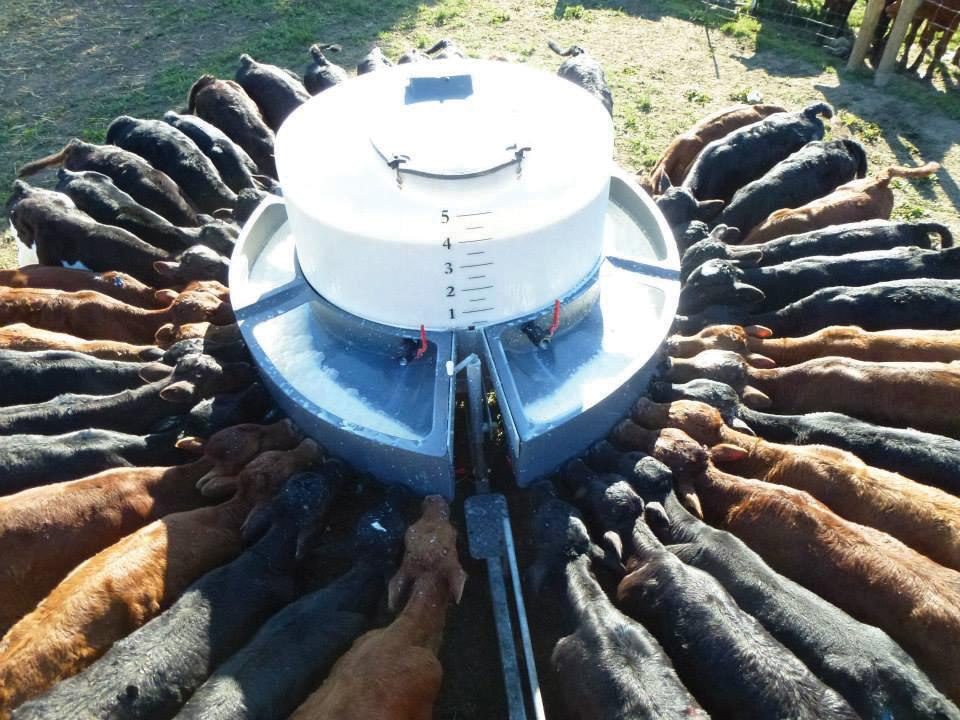
Bred for ease of calving
Suitable for heifer or cow mating
Placid in the cowshed and yards
Docile calves with solid colours
Early maturing quality beef
Proven fertility
Poll genetics now available
species, not just those which are currently invasive, but also those “sleepers” which could invade our natural, agricultural, and urban environments.
“The biggest issue facing decision makers is how they can best decide which species to target now to avoid huge problems in future.”
To help in that decision making, Graeme says new tools are needed to identify “sleeper weeds” before they become a serious problem, and that includes many plants currently grown in home gardens and public parks.
NZ needs to learn from past mistakes in not attacking pest plants early enough. “Imagine how different the Mackenzie Basin would be today if we had controlled Pinus contorta when we first knew it was naturalising.”
Most of NZ’s weeds are spread by humans, or by birds which feed on exotic fruits and spread the seeds in their droppings, and by animals.
“Arguably though, humans are the main vector for spreading weeds, including through garden waste and transporting of livestock or animal feeds. We are the architects of our weed problems. Once we know about these pathways, theoretically we can prevent the spread of weeds.”
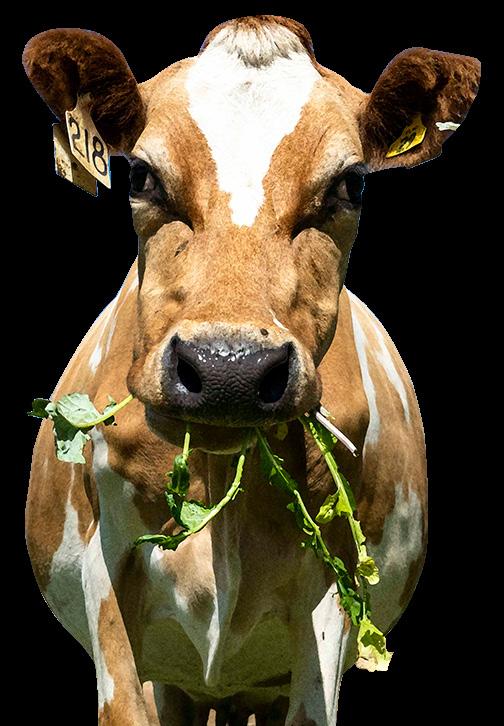

Seven years after its inclusion in the Animal Welfare Act, the thinking on animal sentience has continued to develop. But has it translated into much-needed action? By
In 2015 New Zealand became the first common-law country in the world to include the word ‘sentient’ in its Animal Welfare Act. The change in law reflected what many animal caretakers had implicitly known for a long time – that animals have feelings.
At the time, the move was applauded by international animal welfare organisations and experts, who said it was fitting given NZ’s high animal welfare standards. Yet it quickly became apparent that simply slotting a word into the Act – however meaningful it may have first appeared – had real shortcomings in its application to the animals in Aotearoa.

One of the biggest issues was that sentience wasn’t actually defined in the Act, leading animal welfare experts at the time to argue that the law had very little “bite”.
Today the scientific understanding of the animal experience has once again moved forward and work is underway to have that understanding reflected in legislation and ways that animal caretakers, including veterinarians, behave. But have the bugbears of nearly a decade ago been resolved? And what will the next seven years hold for animal sentience?
The difficulties attached to the absence of a legislative definition of sentience still hangs over animal welfare law and practices. The Animal Welfare Act still doesn’t include a full definition, instead saying only that the purpose of the Act is to “recognise that animals are sentient,” but doesn’t clarify what that recognition means in terms of people’s responsibilities. However, the National Animal Welfare Advisory Committee (NAWAC) – tasked with providing independent animal welfare advice to the Government – states on the Ministry for Primary Industries’ website that it “acknowledges the explicit recognition of animal sentience within the Animal Welfare Act in 2015” and defines sentience as the “ability to perceive or feel things”.
The NZVA’s position statement on sentience clarifies that an animal is “not only capable of feeling pain and distress, but also can have positive psychological experiences, such as comfort, pleasure or interest, that are appropriate to its species, environment and circumstances”. It goes on to say, “To state that animals are sentient accepts that they can experience positive and negative emotions.” Having these definitions is more than a matter of semantics. According to animal law specialist Ian Robertson, legal responsibilities are created by a law’s words and definitions, so a clear definition of sentience is critical to assist those who have a duty to comply with the law and those entrusted to enforce it.
Mirjam Guesgen.“There’s been a tendency for welfare assessments to focus on alleviating the negative without promoting positive experiences,” he says. That approach is mirrored in anticruelty law that focuses just on preventing unnecessary pain and distress to animals. “It’s kind of stating the obvious, but less pain is not the same as more pleasure.”
Ian is the co-founder of the grassroots lobby group, the Sentient Animal Law Foundation, which advocates for a legislative definition of sentience that creates a duty of care for the animal’s negative and positive states. He says the amendment will mean that in addition to not being cruel to animals, animal caretakers will also be required to provide animals with opportunities for positive experiences.
Ian is a strong advocate for using law as a unique change management tool.
“No other tool can establish a standard that mandates changes in people’s behaviour within a definitive timeline, and has the power to take away your money, property or freedom if you don’t comply,” he says. “A clear and unequivocal change in law’s duty of care concerning animals affects all people and would foreseeably see all sentient animals given a genuine quality of life experience, not just the lucky ones”.
According to Sally Cory, the NZ Veterinary Association’s Head of Veterinary Services, Companion Animal, the inclusion of ‘sentience’ in law has already affected veterinary practice.
“It’s likely to have done this through creating a subconscious awareness of animals’ capacity to have feelings,” she says. “Many practices are acknowledging sentience without necessarily realising it. Examples include separate waiting areas for cats and dogs and the use of lowstress handling for all patients.”
It’s also affected large animal veterinarians and caretakers, who are starting to promote positive and alleviate negative experiences. For example, Fonterra’s ‘Cared for Cows’ programme is based on the Five Domains model, which aims to ensure that cows are well fed (the nutrition domain), comfortable (environment), healthy (health) and content (behaviour), and in doing so enhance their mental state (the fifth domain) and wellbeing. However, its minimum standards for farms are limited to the third (health) domain – and incidences of lameness, mortality and bulk
‘It’s a win all around for veterinarians who are already promoting the concept of happy cows and showing how an animal’s wellbeing links to production and the public’s expectations.’
somatic cell count. Since 2015 there’s been a slow shift in recognition of the need for animals to have positive experiences, and that people can play a big part in that. However, that recognition isn’t widespread and the number of those applying it regularly is few. This largely reflects a lack of knowledge on how to implement these ideas in a way that’s auditable and holds people accountable.
Plus, when animals are still subjected to negative experiences, is there space to ensure the positive?
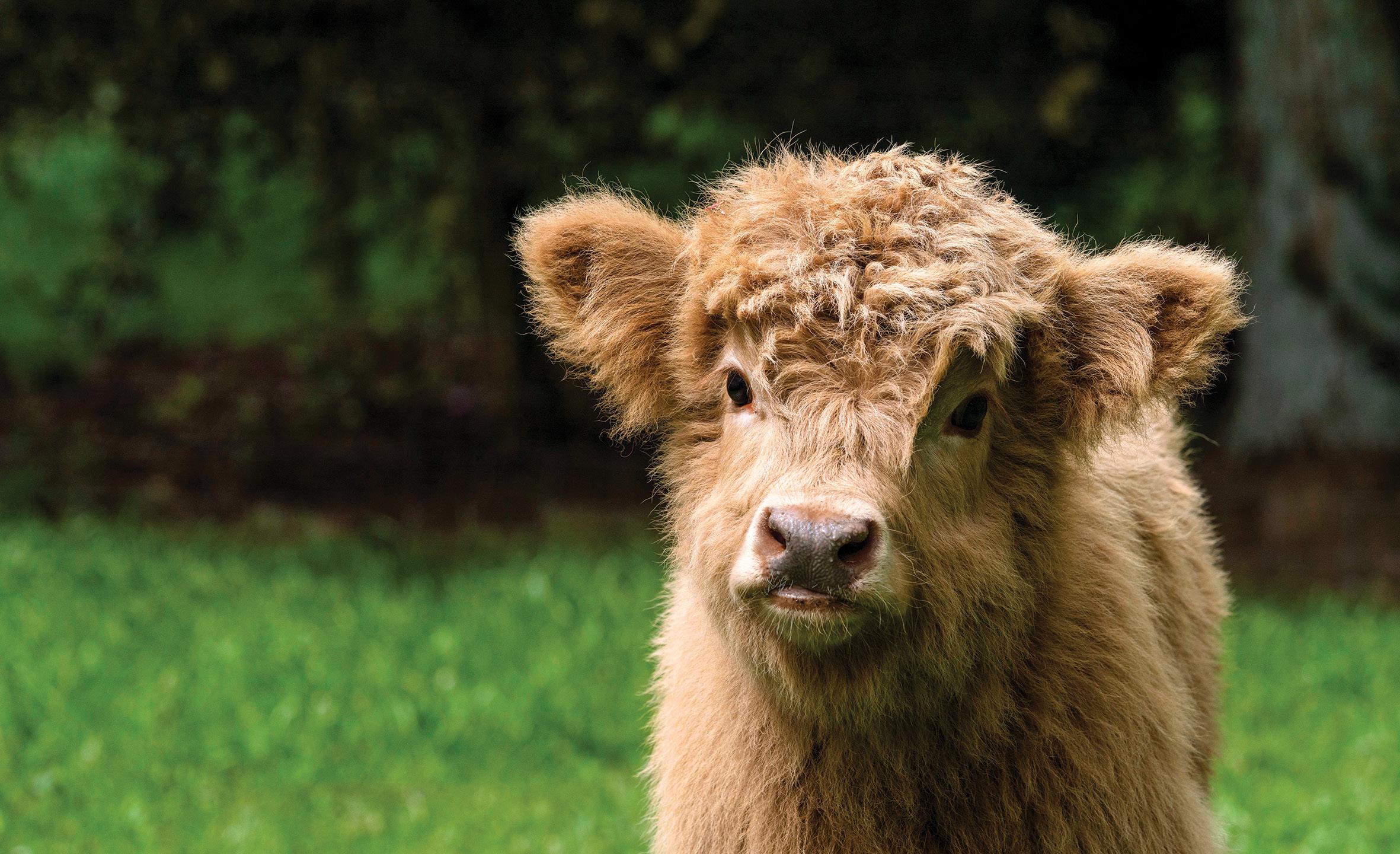
In 2017, shortly after ‘sentience’ was added to the Act, NAWAC hosted a major workshop with stakeholders from the veterinary, production, game, and zoos and aquariums industries. It was a chance for participants to grapple with the meaning of the word and how it could be further incorporated into the veterinary codes of welfare, which specify how people should care for animals, and fall under the Animal Welfare Act.
“Without definition [in the Act] we were like, ‘What does this really mean?’,” says Gwyn Verkerk, chair of NAWAC.
The workshop highlighted the need for a better understanding of ways to recognise an animal’s emotional state, how to formally assess it and how to move away from minimum standards of care – which mostly do well to alleviate negative experiences – towards providing opportunities for animals to experience positive emotions.
The workshop, which coincided with a change of government, prompted NAWAC to review the 20-odd codes, allowing sentience to be considered within the context of the codes.

“Basically, this has involved going through the codes and reviewing them from all sorts of angles,” Gwyn says.
“For example, technology needs to be accounted for, as do advances in thinking, and we’ve committed to including explanations of sentience.” The review is still underway, but the revised pig and dairy codes are now both
out for public consultation. As part of its review, NAWAC has conducted a full Five Domains assessment of farrowing crates and mating systems.
“It’s the first time we’ve used the Five Domains approach to assess a whole farm system,” he says. “People will find the results quite interesting.”
According to Nikki Kells, a senior lecturer in animal welfare at Massey University, sentience underpins the Five Domains model. Through recognising an animal’s capacity to experience positive and negative affective states, we can see whether their welfare is positive or negative. “Basically, it’s an underlying assumption that animals need to be sentient to have welfare.”
The Five Domains model has been updated several times since 2015 to reflect advances in scientific understanding. One of the significant changes is its stronger emphasis on the role of people in animals’ mental states.
“Before 2020, human-animal interactions were included in Domain 4 (behaviour), but not explicitly,” explains Kat Littlewood, veterinarian and lecturer in animal welfare. “The update in that year fixed that – the domain became much more explicit in how humans can affect animal welfare.”
Specifically, Domain 4 was renamed ‘behavioural interactions’ and was subdivided into the interactions that animals have with their environments, other animals and people. The key feature, according to Kat, was animals’ ability to exercise agency, or “do what they want to do”, which results in positive affective [emotional] engagement and mental experiences.
Since humans often control the lives of animals, including domestic species and some wild animals, “active human interventions are often necessary to facilitate positive experiences,” she says.
The changes to NZ’s law have also included a widening
in our scientific understanding of which animals are sentient. The Act now includes mammals, birds, reptiles, amphibians, fish, octopuses, squid, crabs, lobsters and crayfish, as well as mammalian foetuses, avian and reptilian pre-hatched young that are in the last half of their gestations, and any marsupial pouch young. It also leaves room for the list to change as new evidence comes forward. For example, changes in 2018 strengthened the regulations on the killing of caught crab, rock lobster and crayfish, reflecting new evidence of their ability to experience pain and stress.
Other countries are following NZ’s approach and expanding their lists of animals deemed sentient by law. In the United Kingdom, for example, the Animal Welfare (Sentience) Bill is in its final reading and, if enacted, will see octopuses, squid, cuttlefish, crabs, lobsters, shrimps and crayfish added to the list. The bill was proposed after a review by The London School of Economics and Political Science concluded with high or very high confidence that these animals are sentient beings (Birch et al., 2021).
Gwyn says it’s imperative that we have laws and regulations that line up with science.
“You go back to the science. The decisions on what to include in the codes are very much based on the literature.” That said, it gets tricky when it comes to making sure the rules are followed and the desired outcomes are achieved.
One of the sticking points is knowing whether human interventions can actually create positive experiences for animals.
Kat gives the example of providing a toy for an animal in a zoo enclosure or farm pen. If the animal doesn’t play with it but isn’t scared by it, it’s probably not affecting their welfare positively or negatively, it’s just neutral. So having a rule that all enclosures and pens must have this form of enrichment does little to promote positive experiences.
“This example highlights the need to understand what welfare indicators mean for animals in affective state terms.”
That’s why it’s important to have good, animal-based indicators of welfare (that is, ways to measure animals’ affective experience) as well as understand scientifically what matters to a particular animal in a particular context, she says.

This is a growing area of scientific research, with animal welfare scientists investigating measures such as oxytocin levels, eye temperature, eye white, play behaviour and certain vocalisations and facial expressions.
Gwyn agrees with the need for animal- based indicators as well as environment assessments, adding, “You have to be

careful that you’re not thinking, ‘The system’s providing this for the animal so therefore the animal is happy’. They don’t necessarily go together. You can design awesome systems, but you need to demonstrate that the animal is in a positive emotional state.”
Because of the difficulties in putting positive welfare into law, Kat believes that industry and veterinarians will be at the forefront of getting animal caretakers to give their animals opportunities for positive experiences. She points to programmes like Fonterra’s, where veterinarians are actively involved in developing wellbeing plans for cows. Gwyn is optimistic about the power of legislation, particularly in alleviating the pain associated with common farming procedures such as docking.
“We’re trying to use the code review to promote the idea that we can do more for animals. It’s about recognising that people as a society sometimes need to have conversations for a while before they figure out it’s doable.”
For certain actions, like giving pain relief during docking, you can create the rules (and consequences) and the commercial solutions will follow, she says.
The societal conversations include those between veterinarians and their small animal clients, and large animal caretakers. “Short comments from veterinarians can have quite an impact,” Gwyn says. “The veterinary community is a really important channel for helping people to understand; they listen to what their veterinarians say.”
Kat adds that veterinarians have a valuable role in assessing the welfare of animals in their care and offering advice on how the animals’ lives could be improved –including in a range of contexts such as onfarm and inclinic.
“We’re seeing animals all the time, but if we’re thinking only about the animals’ health and nutrition we’re only returning them to neutral. We can enrich our opportunities
to talk to owners about their animals’ behaviour, and help to provide animals with opportunities to have good lives.”

Ian too would like to see more veterinarians speaking out on the positive side of the animal welfare coin.
“Veterinarians are society’s trusted experts on animals’ health and modern welfare so, of course, you expect them to be giving advice based on the sentient animal’s ability to feel and experience negative and positive states,” he says.
“It’s a win all around for veterinarians who are already promoting the concept of happy cows and showing how an animal’s wellbeing links to production and the public’s expectations.

“In addition to benefiting the animal and the client,



recording observations about an animal’s positive states benefits the veterinarian in circumstances that involve assessing the records.”
The NZVA’s Animal Welfare Strategy, which is being updated by the middle of 2022, aims to publicly promote veterinarians to being sought after as knowledge leaders in the space. Getting there will mean upskilling the profession in new research and understandings of sentience and how this applies across the various species and how the law ties into the work veterinarians do.
“This strategy update ensures NZVA’s work in the animal welfare space remains closely aligned with what our members are telling us is important to focus on,” NZVA chief executive Kevin Bryant says. “It also ties our animal welfare efforts more tightly to our strategic plan and vision – that veterinarians are the integral leaders of the health and wellbeing of animals, and their relationship to people and our environment.”
As for what’s next with sentience, the list of sentient animals will no doubt grow as new scientific knowledge comes to light. Nikki Kells notes research is already available showing that ants and bees can learn and weigh up the risks of experiencing something hurtful in order to get something rewarding (a process called ‘exhibiting motivational trade-offs’).
“The scientific evidence is mounting for sentience, and for sentience in invertebrates,” she says, noting the potential minefield of thinking, for example, about how to control insect pests or keep live insects for teaching demonstrations. All this change is likely to take some time, as the country grapples with ways to address the negative experiences animals face, particularly during painful procedures, in sometimes harsh environmental conditions and when they’re used for entertainment or sport. “We have to allow time for things to happen,” Gwyn says.


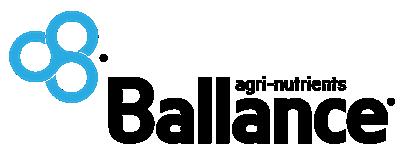
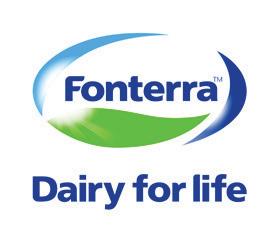







































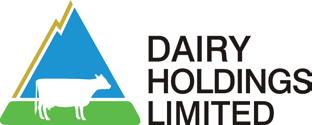

Lincoln University is doing a bit of what-if scenario testing, keeping calves on cows until weaning at about 10 weeks of age.
The study at the university’s Ashley Dene Research and Development Station isn’t designed to test the practicalities of carrying out the practice with big numbers but with its group of 15 cows and 15 heifer calves it will surely give some insights into the challenges and opportunities of pasture-based dairy suckling systems.
Dr Racheal Bryant is leading the study which is comparing several outcomes for both cows and calves under three different calf rearing scenarios.

The control is a typical system where calves are separated from their mothers
within a few hours of birth and reared with six litres of milk per calf (20% of initial body weight) per day and weaned at about 10 weeks of age when calves are about 80 to 90kg.
The second scenario also sees the calves removed from their mothers but they are fed a high milk allowance of nine litres per calf per day (30% of initial body weight).
Racheal says they’ve had no problem getting calves to drink their full allowance.
In both scenarios the calves are fed on automatic calf feeders so each calf’s intake is well controlled and monitored through electronic identification eartags read by the automatic calf feeder when the calf enters the feeder.
Under the third scenario where calves
are still with their mothers and feed ad lib, it’s estimated that by about six weeks they’re drinking about 10 to 12 litres per day.
That’s based on herd test data comparisons from a previous study run last year.
Interestingly some calves in the suckling group have shown signs of nutritional scours at brief times.
Racheal says they’re looking at the differences for the cows and calves across a range of factors.
Over the calf rearing period they’ll compare growth rates up till and beyond weaning between each calf rearing system. They’ll also compare passive immunity in the calves through blood sampling.
Indications of rumen development will be by blood sampling and measuring beta hydroxy butyrate levels as well as using accelerometer eartags to determine
rumination and grazing activity.
All calves in the study are heifers so the intergenerational effects of the different calf rearing systems can also be compared.
Once calves have grown and entered the milking herds in 2024 their milk yields and reproductive performance will be monitored and compared with the calves reared under the other two scenarios.
They’ll be compared over their lifetimes to gauge if there are any long-term effects.
Racheal says the cowcalf contact group are together “24/7” for the first six weeks except for the short time cows leave the paddock for milking.
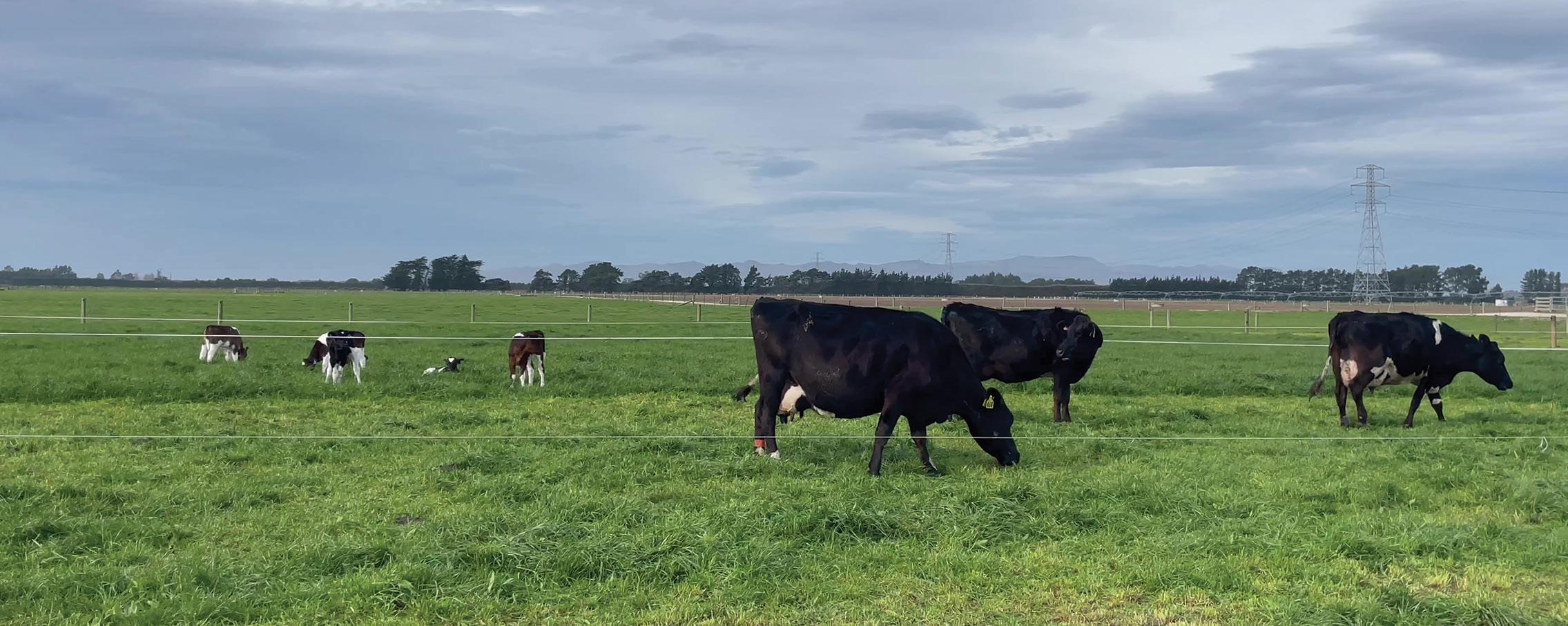
The calves are separated from their mothers at the gate to the laneway with fencing along the laneway calf-proof.
Research technician Paige Fisher says initially cows were vocal immediately after they left the calves at the gate but they quickly settled and made their way into milking without fuss.
The cows are milked once-a-day (OAD) in the morning for the first six-week period.
A towable shelter is positioned near the
break cows are being fed on so calves can shelter during bad weather.
Cows are managed with typical one-wire electric fencing and calves can move freely under the wire, often nestling down in the longer covers of the next break.
Paige says the cows make soft closed moth vocalisations to call calves and louder open-mouthed calls when agitated – for instance at the gate when calves are separated.
By late August there hadn’t been any incidences of cows bullying calves. “We’ve seen calves get a short shift from a cow if they’ve snuck in to attempt a feed from a cow that’s not their mother but nothing too rough,” she says.
Two cows, though, were discounted from the trial group after initial selection because while they showed interest in their calves it was evident the calves weren’t suckling, so the calves were removed to the pens to ensure they received colostrum.
At the six-week mark calves will be separated from their mothers at night as
the transition begins to making the calves nutritionally independent from their mothers and weaning.
The cows will move to being milked twice-a-day at the six-week mark and the calves will be removed for the night.
They’ll have access to hard feed, grass and water during the night.
The fencing system will allow cows and calves to see and touch each other through the fence but calves won’t be able to drink from their mothers.
By 10 weeks the calves will be fully weaned and separated from their mothers.
The cows’ live weights, milk yields, milk composition, udder health, somatic cell count, incidence of mastitis and post-partum anoestrus period will all be monitored and recorded to see if suckling their calves has any effect.
Cows are fitted with pedometers and their activity pre and post weaning and the shift to night separation will be recorded too.
Racheal says they’ll watch for any changes in milk yields around those times along with milking duration and milk flow rates.
“We’ll be looking at a lot of those practical aspects that might impact the adoption of a cow-calf contact system,” she says.
OVER THE CALF REARING PERIOD THEY’LL COMPARE GROWTH RATES UP TILL AND BEYOND WEANING BETWEEN EACH CALF REARING SYSTEM.Cows and calves together – they’ll be separated at nights from six weeks and weaned completely from mum at about 10 weeks.
Alot of emphasis is rightly placed on colostrum management for newborn calves, however coming a close second in importance should be care of navels.
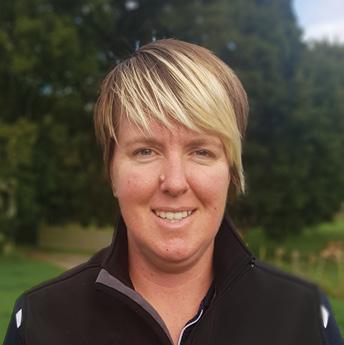
The navel is a weak point on the body of a calf, being located in a place which is guaranteed to come in contact with all sorts of bacteria from the environment, and lacking the protection skin provides to the rest of the body. Without the luxury of calving down into clean, dry, covered sheds, many calves face the challenge of fighting off infection from the moment they are born.
While still in the uterus, the navel is the point where the calf receives its blood supply from the dam, through attachment to the placenta. The umbilical vessels enter the body at the navel, and run forward to the liver, and back toward the bladder.
During birth, the external vessels rupture and remain attached as a short length of moist tissue. This shrivels into a dry cord over the first few days of life.
The remnants of the internal umbilical vessels also shrivel and eventually become internal ligaments in the abdomen. Infection of the navel establishes in the first few
days of life. Initially, the external navel becomes thickened and tender to touch. If left untreated, this can form into an abscess, which may discharge pus externally or spread into the internal umbilical remnants.
Of most concern is when a navel infection spreads internally.
With a direct connection between the navel and both the liver and bladder, internal infection can rapidly lead to a very unwell calf. Abscesses can develop on the bladder, liver or in the surrounding abdominal organs. In addition, internal infection can spread bacteria throughout the body through the bloodstream – most commonly this is seen when bacteria lodge in joints (joint ill), but they may also settle in the heart (infected heart valves), brain (meningitis) and other organs.
The best outcome is if navel infections are detected early and treated. All calves should have their navels checked during the first few days of life. Treatment with antibiotics and anti-inflammatories is warranted if the navel is firm and thicker than 1 to 2cm. For any calf which is sick or not thriving, inspection and palpation of the navel is an important step in the examination process.
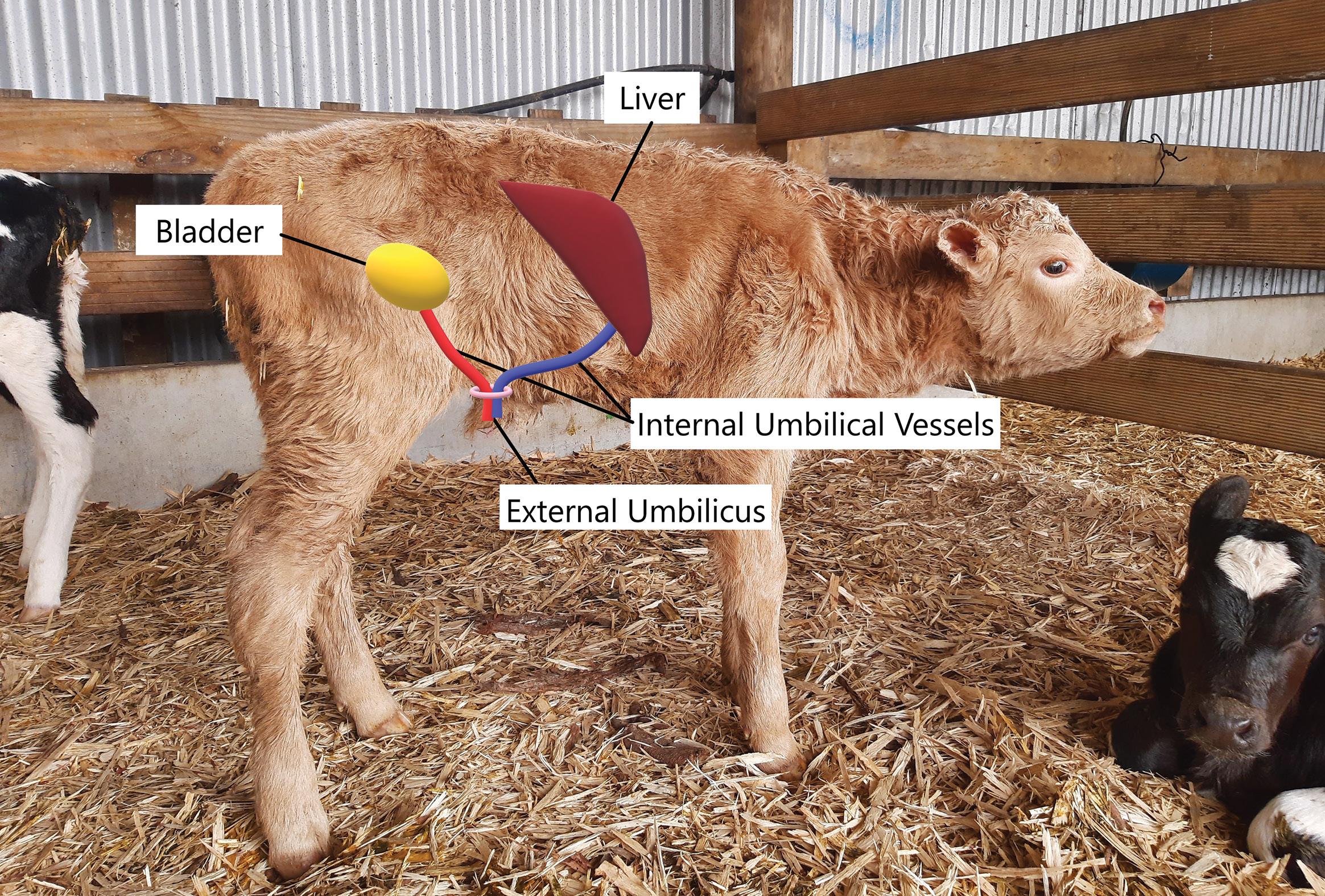
The navel of a newborn calf is a potential source of infection from the start of its life, writes vet Lisa Whitfield.Lisa Whitfield The umbilicus is directly connected to the liver and bladder internally.
Navel care
Navel care begins with three critical actions:
1. High quality colostrum intake
2. Disinfecting the navel
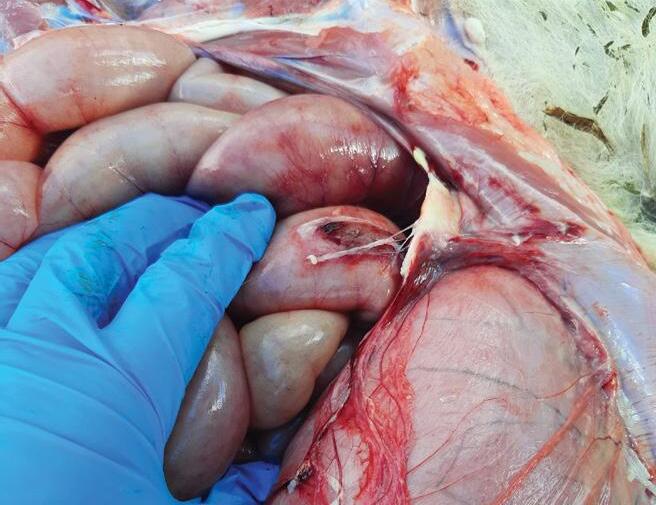
3. Minimising environmental contamination
Colostrum
While colostrum intake might not seem an obvious action to prevent navel infections, it is critical because the transfer of immunity this way gives the calf’s immune system a fighting chance in stopping bacteria from establishing infections within the body.

Navel disinfection
The use of iodine tincture to disinfect navels has two important actions – iodine is a broad spectrum anti-bacterial agent
which kills bacteria it comes into contact with. The tincture component refers to the iodine being diluted in an alcohol such as ethanol – and for navel care, alcohol is there to dry out the navel more rapidly. Once the navel has dried off, it is harder for infections to establish. Using iodine teatspray as a navel spray is not a good choice as teatspray components such as glycerine are there to soften and moisturise which is not the effect you want for a navel.
Minimising environmental contamination
Most calves in New Zealand are born out in the elements – so exposure to dirt and moisture in the paddock is inevitable and to some extent may not be completely under our control. However, we do ultimately have control over the
with this highly palatable and easily absorbed natural blend of New Zealand Fine grade Sea Salt containing Agrisea Seaweed and AgriSea Animal+ (seaweed extract)
Seaweed salt blocks are made using New Zealand fine grade sea salt, a unique blend of Ecklonia radiata seaweed and a especially batch brewed Animal Health Tonic. Together this blend of natural products provides livestock with a valuable source of essential elements, vitamins, minerals and amino acids in addition to toxin neutralisation to boost overall Animal Health.
The natural fine salt used in this block, easy on the mouths of young stock. Plus natural seaweed providing needed minerals for life.
Fine Natural Sea Salt
Source of essential Trace Elements.
Convenient & Cost effective for year round use. Probiotic effect of Animal Nutrition stimulates good gut health.
Toxin binding capacity from incorporated Animal+.
Salt addition helps optimize production. Easy to stack, handle and dispense.
Seaweed Salt Blocks are available in a 15kg Block from your local Rural merchant or Farm Merchant Store

conditions in the calf trailers and calf sheds, and keeping these areas as clean as practicable, as well as dry, will help prevent navel infections.
Navel care in the calf is an important management step which is easily overlooked in the time-constrained rush of calving season. Taking the time to make sure each calf is free of infection, and making time to treat those which need it, will reduce stock losses and have long term animal health benefits for your farm.
web site www.domsalt.co.nz
WITH A DIRECT CONNECTION BETWEEN THE NAVEL AND BOTH THE LIVER AND BLADDER, INTERNAL INFECTION CAN RAPIDLY LEAD TO A VERY UNWELL CALF.Internal umbilical abscess which caused septicemia and the death of the calf. • Lisa Whitfield is a production animal veterinarian in the Manawatu
Canaan Ahu walks the talk when it comes to helping farmers get the best out of their soils.
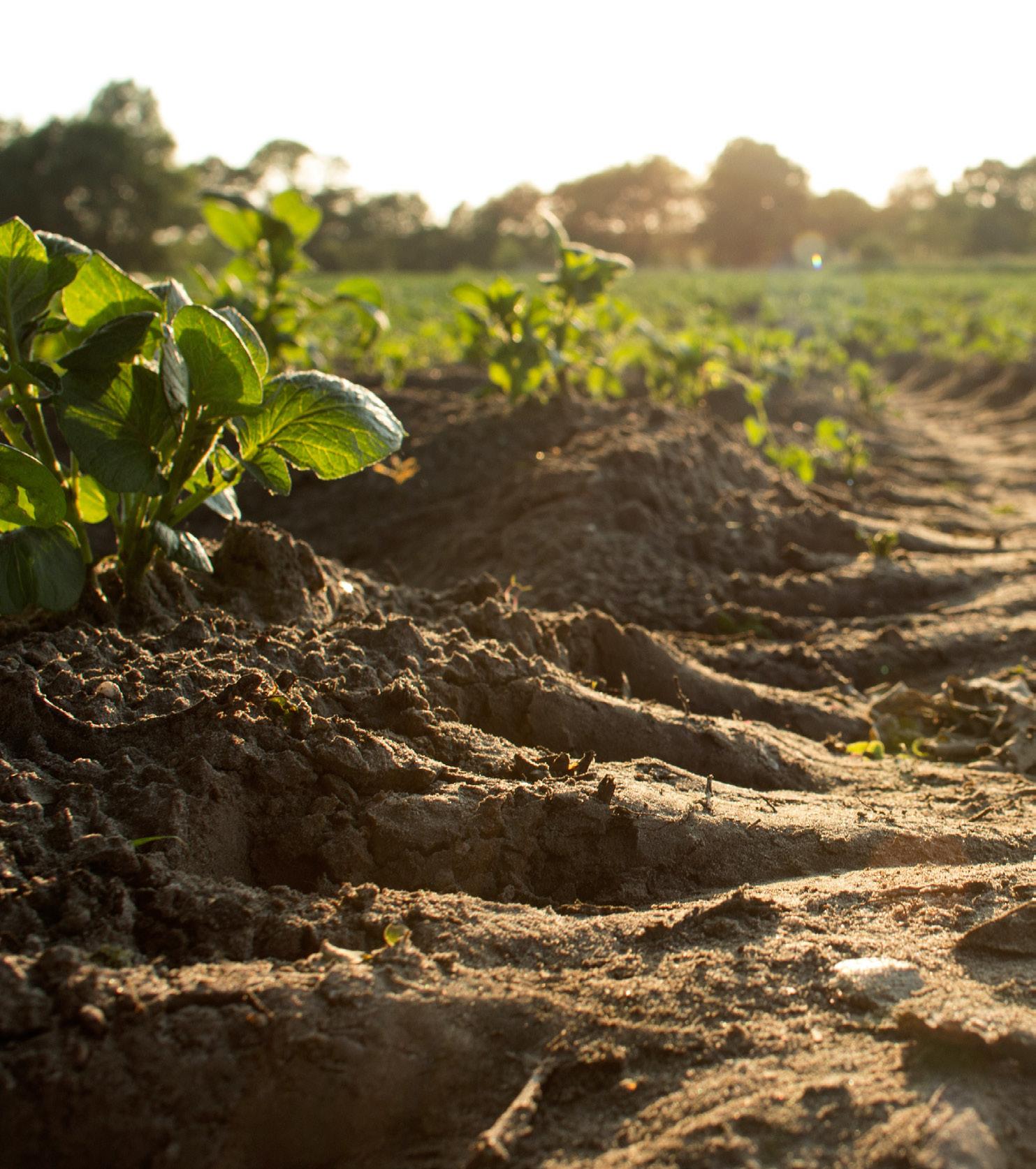
The 29-year-old has built a thriving soil consultancy business, Agrownomics and often describes his approach as one of walking alongside the farmer providing step by step advice and building trust as they see each incremental piece of advice lead to results. Canaan grew up in Ngāruawāhia on a lifestyle block.

His grandparents lived on a dairy farm nearby when he was young and the soil, plants and animals were all just part of life’s tapestry.
His love of the land and outdoors drew him to Lincoln University in 2011 and a Bachelor of Agricultural Commerce.
“I wasn’t that keen on the science papers you have to take as part of the degree but there was something about soil science that I just really enjoyed.
“There were these lightbulb moments when understanding what was happening in the soil made sense of things I’d already seen with animals and pastures.”
After graduating he remained in Canterbury and worked for an animal nutrition company that worked with vets as well as farmers.
“I couldn’t help thinking back to what I’d learnt about soils and soil health when we were dealing with animal health and nutrition issues at a cow level.
“Nutrition is used as a way to deal with animal health and performance issues, like fertility, metabolics, somatic cell counts, retained foetal membranes – it’s important and it’s very clear, food is medicine.
“That old saying you are what you eat is true and I started thinking about that homegrown feed and what was missing from the plants and the soils - could we deal with these problems right back at source?”
So he literally went back to root cause, digging into his soils knowledge, then building on it by looking further into the biological processes at work - not just in the soil chemistry but in the soil physics and biology too.
He started out small but in 2018 he moved
Understanding what was happening in the soil made sense for a young Lincoln University student. Anne Lee reports.Canaan Ahu – lightbulb moments drew an interest in soils and the life within it.
into soil consultancy as his full-time job, taking the big leap into working in his own business.
“We’re not about selling product – that’s not our business model.
“It’s about being a high service provider, really getting alongside our farmers. Literally getting out on the farm – monthly as we’re needed, looking at the soil, looking at the plants whether that’s pastures or crops and seeing for ourselves what’s happening over time.

“It’s also important to meet farmers where they’re at – in the sense that some may already be interested in the soil biology and building a resilient ecosystem down there as well as providing all the minerals and micro-nutrients the plants and animals need.
“Others could be really just starting out with that journey and they’re very much focused on that N, P, K and S (nitrogen, phosphorus, potassium and sulphur) mindset – still some are just worried about P and pH.
“Wherever they’re at, that’s fine. Little by little we have a very managed, step-by-step way of moving our people forwards.
“If they’re N, P, K and S-focused we’ll start there – those are the pillars we’ll start with, building understanding and making small adjustments so they can see the changes.
“That builds trust, as they see the results and we move on, building and building.”
Canaan says he has numerous clients who have moved from being high users of nitrogen to sitting well below the N cap limits.
“They’re not doing that based solely on my convictions, they’re doing that on their own convictions once they’ve seen results at a smaller scale.”
For farmers to reduce nitrogen and maintain pasture production the soil has to start functioning well with microbes including fungi all working together cycling nutrients in a structural environment that’s conducive to root growth.
“We’ve seen time and time again that farmers can do that. We need the micro-nutrients, the co-factors to be there so the legumes in the pasture can
readily fix nitrogen – micro-nutrients like molybdenum (Mo) are essential for the nitrogenase enzyme to function.”
Canaan works with both granular and foliar or liquid applications of some nutrients and microbes.
“Each has its place – we know we can minimise volatilisation losses when we apply various forms of nitrogen through the Tow and Fert so we’re getting similar pasture responses by using up to 30% less N.
“But you won’t get that kind of result if you don’t make some adjustments to how you’re managing your pasture for example.
“If you apply the liquid N as a foliar spray straight after you’ve grazed the paddock right down to a low residual, for instance, you’re not going to have the leaf area to absorb the nutrient, so you need to be waiting five to seven days.”
Micronutrients, fish fertiliser, humates and effective micro-organisms (EM) are also good candidates for liquid application but phosphate and calcium can often best be applied in a granular form.
EM include a range of soil microorganisms such as bacteria and fungi with EM products used to inoculate the soil in a similar way to probiotic use in human health.
There can be 80 different organisms in an EM product.
“There’s more to a healthy soil than minerals – if the biological food web is broken and not functioning well you have to create an environment where it can flourish.”
Similarly, he says, if the structure isn’t right – if for instance there’s no aeration below 50mm – plant roots can’t survive there which in turn means root exudates, sugars and carbohydrates aren’t present for the soil biology to live on.
Canaan says the polarisation of views when it comes to soil health and management is regrettable and he’s hopeful that a growing interest in regenerative practices might encourage people to learn more about life within the soil.
Based on the fact his company has a waiting list of clients, the curiosity is definitely building.
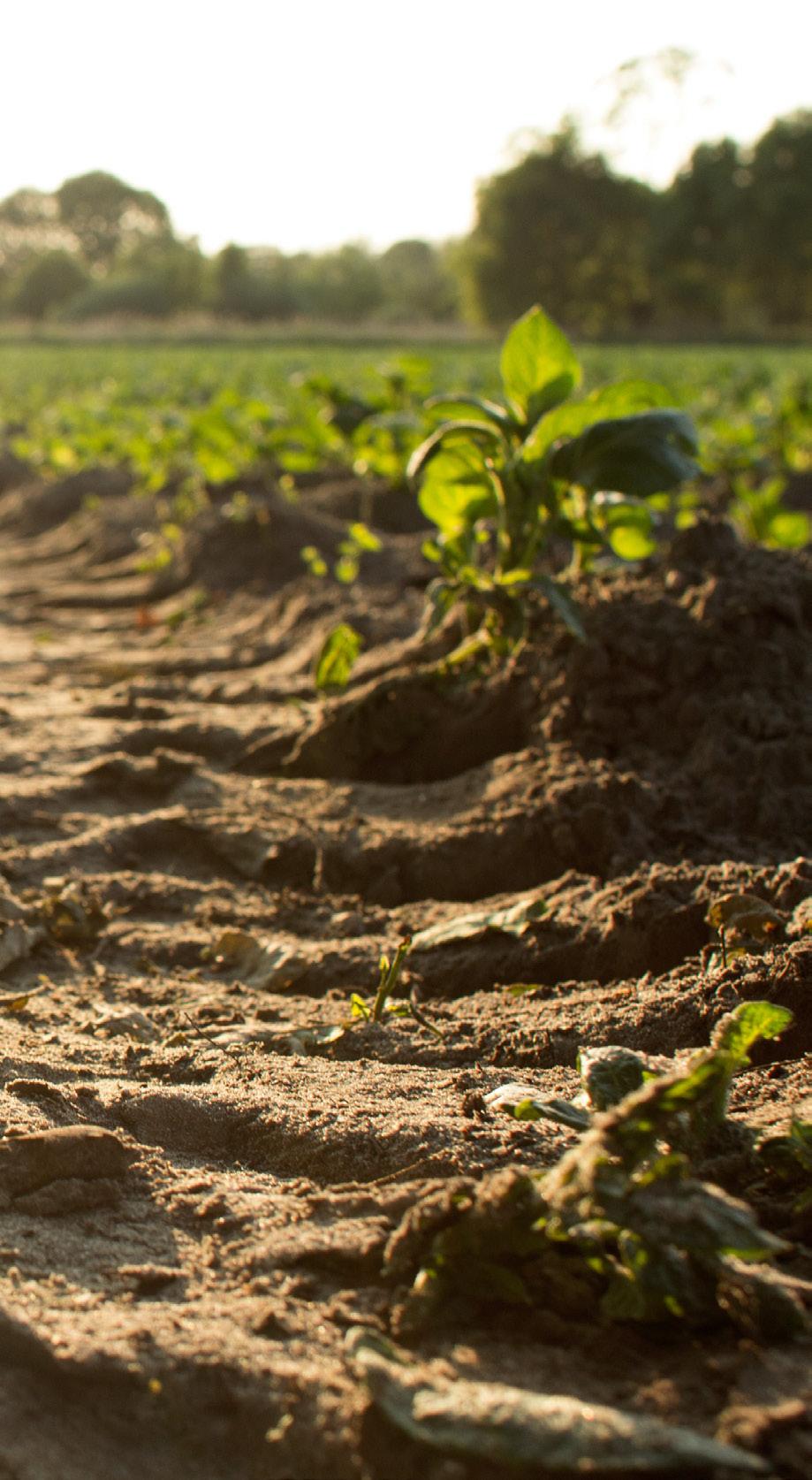
A chance visit to the West Coast led to a change of direction for a young couple.
By Anne Hardie.Luke Burns used to carve up carcases in the meat works, but a change in career to dairying means he is now looking after live animals and feeling pretty attached to some of his charges. Likewise, his partner, Ra Wilson, spent her working days cleaning up the offal from bobby calves in the meat works and now she is rearing calves.
At 34 and 35 respectively, the couple are late starters in their new-found careers and would have moved sooner but as city dwellers without any farming contacts, didn’t know how to go about it. Ra had looked at dairy courses, but they needed NCEA credits which she didn’t have and they didn’t know a soul in the industry.
Living in Lower Hutt, Luke used to spend up to two hours a day commuting to work on his motorbike to spend the day carving up sheep and beef for the company’s retail outlets and orders.

“It felt like we weren’t getting anywhere,” he says.” Just a different week, but same stuff.”
A visit to the West Coast and the first time they had ever been in the South Island convinced them to take the plunge and move their family south.
Luke took on a job at Silver Fern Farms’ Hokitika site, boning out beasts including venison and bobbies. It was a good job, but he says it is hard work standing on a platform all day, doing the same repetitive job and at 33 it was beginning to take a toll on his body.
Through the bobby calf season, shifts ran from 2.30pm until after midnight to tie in with the trucks delivering the animals and he wasn’t seeing much of his kids. The couple have four children between them – Pare, 15, Awatere, 14, Harmony, 10, and Taliah, 8. He was losing valuable time with them that he wouldn’t get back.
By chance, they were offered a farm cottage to rent, but only if Luke worked on the farm as well. It was the best news.
“I wanted to get into farming and that’s where it started. I hadn’t worked outside for more than 10 years and it was a wicked summer – one of the best summers they had had in the area.”
Compared to the inside of an abattoir, he now has the rugged peaks of the Southern Alps to gaze upon and far more lively animals for company.
“I work with the animals every day and each cow has its own characteristics. People think they are just a dumb cow but imagine what she is thinking about us. I became a bit attached to one cow last year – her name was Princess – and when she left on the truck to go to another farm down south, I said: “you don’t need me here mate. So many changes in a year for a cow.”
The job began in December because his employers, Christopher and Siobhan O’Malley had backpackers helping on the farm through spring and when they left, they needed to find another staff member. It was perfect timing to learn about dairying because they were past the bedlam of spring and Luke could get a few months experience under his belt before he tackled calving.
When the O’Malleys took him along to the regional Dairy Industry Awards on the Coast to open his eyes to the industry’s opportunities, he came away buzzing.
“They wanted to inspire me and it did. You want to get there – that’s where you want to be. I couldn’t have asked for a better boss and I’ve been told that by many people.”
When the O’Malleys moved on to their own farm, they recommended him to the farm owners next door and he is now part of a team on a 454-cow farm where he plans to continue his dairying education with his new teachers, Gus and Justine Baird.

“Gus is willing to take the time to teach someone who is willing to put in the effort. I keep telling myself that every day is a school day. Good teachers have made it easier for me – if you show you are interested in learning, they will keep teaching you. You can’t go wrong with simple instructions.”
Ra will help rear calves on the farm this year as well as another farm down the road, following a calf-rearing workshop to show her the ropes. Last season she helped Luke at milking and wants to learn more. It was also the first time the couple had ever worked together.
“I kept saying ‘you have to tell me what to do!’,” she says. “Hopefully one day we can both be on the same farm together.”
“There’s so many opportunities with dairying,” Luke says. “That’s the crazy thing about it – there’s always opportunities to grow and it gives you something to look forward to.”
They keenly watch the Farm 4 Life Hub’s online videos to learn as much as they can about dairying, then do the quizzes at the end of each video to test their knowledge. Even though they are newbies to the industry, their goal is to work toward sharemilking contracts and they would like to think farm ownership is a possibility down the track. Witnessing the O’Malleys
realise that dream has showed them it can happen.
“I think it’s quite a big goal for quite a few people and I think it’s a possibility. You have to be willing to put in the hard yards to get there. And it helps to be working for inspirational people.”
Apart from work satisfaction, he now has time for family and sees them through the day when they are home.
“It’s just a great lifestyle. You are only two minutes from work so you can go home for lunch and you get to spend more time with family.”
‘I WANTED TO GET INTO FARMING AND THAT’S WHERE IT STARTED. I HADN’T WORKED OUTSIDE FOR MORE THAN 10 YEARS AND IT WAS A WICKED SUMMER – ONE OF THE BEST SUMMERS THEY HAD HAD IN THE AREA.’LEFT: Luke and Ra prefer their new work environment. ABOVE: Late starters with big goals.
system thinking and design theory, using a full range of ecological practices such as agroecology, agroforestry and nutritional ecology where foraging is merged with pharmecology – the use of plants as medicine – along with psychology and social ecology.
Lincoln Professor Pablo Gregorini heads up the university’s Centre of Excellence for Designing Future Productive Landscapes and is leading this Integral Health Dairy Farm project.
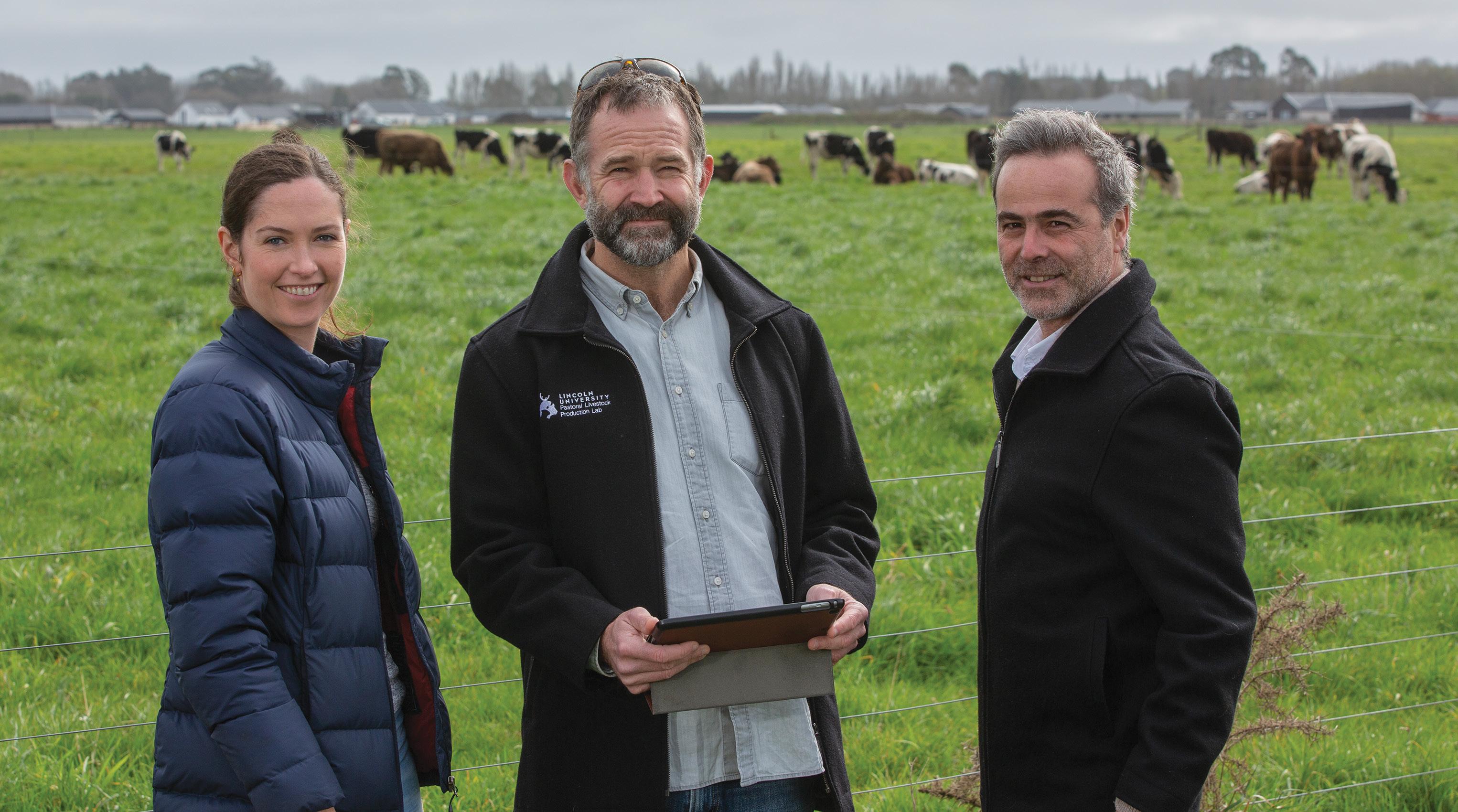
which the team working on creating the 43-hectare farmlet, is aiming to put together in a practical way.
The project’s research manager Dr Anita Fleming says they know, from other studies at the Lincoln University Pastoral Livestock Production Lab and elsewhere, that merging these scientific approaches in grazing and farm management can enhance health and wellbeing of animals.
One hundred cows at Lincoln University’s Ashley Dene will get to experience a re-imagined dairy farm focused on health as its main product.
The Integral Health Dairy Farm will aim to build healthy ecosystems from the ground up right through to the dairy products it produces and in the people that consume them.
This long-term project is based on
It aims to remediate and transform the farmlet ecosystem and enhance its prophylactic, nutraceutical and therapeutic properties as designed foodscapes, improving the wellbeing of the soil, grazing land, the cows that graze it and by extension the health of the people, he says.
“Continuous findings and outcomes from this project research will help shift the emphasis from endless searches for ‘silver bullet’ solutions to systemic approaches, embracing modern views of mahinga kai, kaitiakitanga and manaakitanga in our future landscapes, counteracting negative connotations of dairy products on our tables,” Pablo says.
It’s a novel approach to sustainability,
That may in turn be associated with properties of the milk animals produce with some of these properties associated with the reduction of inflammation and anxiety for example.
But complex systems are not easy to manage and maintain, and that is one of the reasons they want to trial this approach at Lincoln, Anita says.
“Based on our previous research, we’ve come to the conclusion animals do benefit from diversity but what’s more important is how that diversity is functionally arranged in space and time – so now we’re designing spatially explicit combinations of forage and browsing plants that grow well together.
This makes it easier from a grazing management perspective but also affords
A project at Lincoln University is taking a novel approach to sustainability. By Anne Lee.
cows a choice of what to graze and when, providing a hedonic benefit – or sense of pleasure, Anita says.
Running through the colourful stripy paddocks will be ribbons of multifunctional woody vegetation that will include a range of trees, shrubs, and even woody herbs.
PhD student and qualified architect Richard Morris is researching spatial agroecology and how this new take can be used to create better environmental and ecological outcomes in both farm and urban settings.
He’s been an architect for 25 years and has worked around the world.
By looking at research on the ecosystem services provided by specific plants and planting designs he’s worked with others involved in the Ashley Dene Integral Health Dairy Farm to come up with the ribbon planting concept.
The plants will give a mix of shade, shelter, and food, as well as a range of medicines and prophylactics and will be selected and managed so they don’t impede a pivot irrigator.
The plantings will provide a wide range of ecosystem services.
For example - planting areas provide shade but also provide a vegetative cooling effect with a breeze created as cooler air from shaded areas replaces the rising warm air over paddocks.
Richard says the tree and shrub areas will likely contain a mix of native and nonnative species and, as well as serving as a feed source and protection for the animals, will also include plants that help “soak up” nitrogen.
“If you were just aiming to manage nitrogen loss through these plantings you’d plant at a straight perpendicular to the hydrological flow and use plants with good extensive root systems.
“But we’re aiming for a range of ecosystem services from these plantings so we’ll have a variety of trees and shrubs and while they’ll be across the flow they’ll be set out with this ribbon like pattern,” he says.
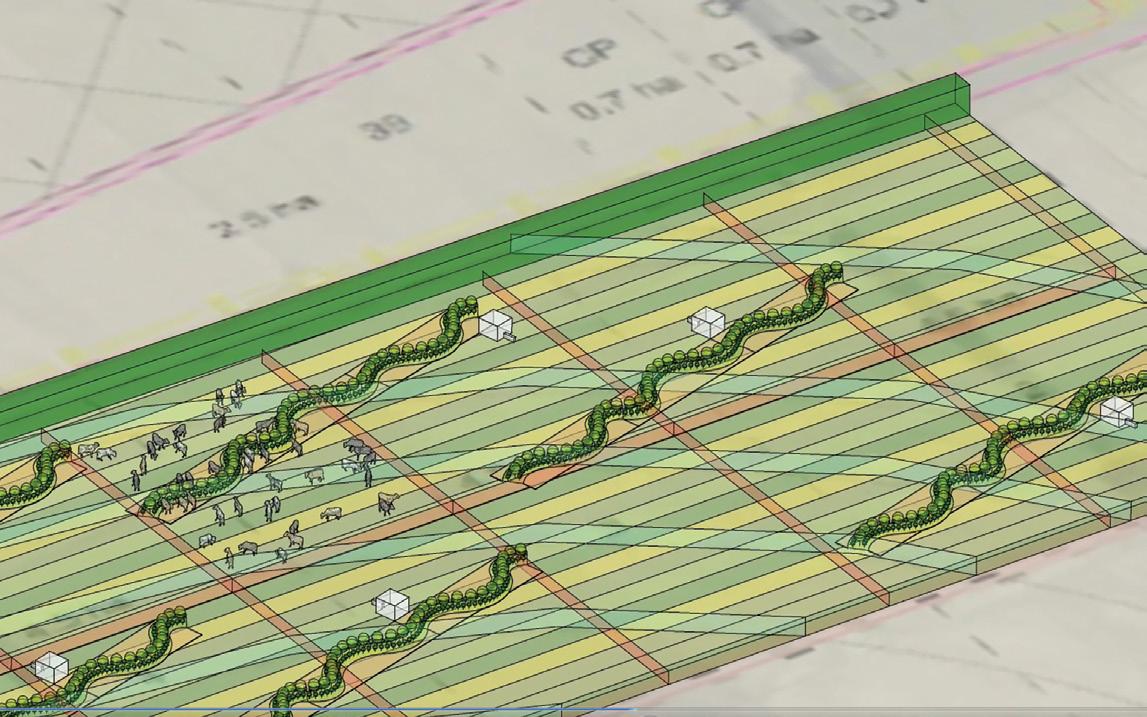
Trimming of trees such as poplar or willow would provide wood chip material that can also be spread under the shaded areas creating lying areas for cows and also acting as a nutrient capture in what are likely to be animal camping areas.
“In that way we’re creating natural areas for the animals that are browsing sites, sleeping sites, urination sites, places where the cows can come to self-medicate and seek out specific nutrients from the browsing plants.
“Everything we plan and plant and the systems we set up is and will be done based on known principles and novel peer-reviewed science… not just because it seems like a good idea,” says Pablo.
About a quarter of the Ashley Dene Research Dairy Farm will be run as the Integral Health Dairy Farm using a stocking rate of 2.9cows/ha.
The crossbred cows, which are all new to the farm following the discovery of Mycoplasma bovis in 2020 and subsequent destocking, will have an average liveweight of about 500kg with breeding worth (BW) of 180. Anita says the herd has been selected for low milk urea N breeding values.
The pasture renewal programmes and ribbon plantings will take place over time with the whole 43ha farmlet fully transitioned to the system within five years. The study will also make use of existing standoff pad areas as part of its wintering system with details of wintering practices yet to be finalised.
Pablo says the team working on this concept is not only local, but also international, with experts including Professor Iain Gordon based in Australia, and emeritus professor Fred Provenza based in the United States.
Agricom’s Allister Moorhead and Glen Judson, AgResearch scientists Alvaro Romera, Munir Sha and Mostafa Sharifi and Lincoln staff Jeff Curtis, Shannon Davis and Charles Merfield are also part of the project.
A wide range of environmental, animal and human, as well as community health indicators will be measured over the long-term project which is being funded by Lincoln with sponsorship and inkind support from several commercial enterprises.
‘Continuous findings and outcomes from this project research will help shift the emphasis from endless searches for ‘silver bullet’ solutions to systemic approaches, embracing modern views of mahinga kai, kaitiakitanga and manaakitanga in our future landscapes, counteracting negative connotations of dairy products on our tables.’LEFT: Integral Health Dairy Farm, Lincoln University, Anita Fleming, Richard Morris, Pablo Gregorini RIGHT: Diagram of Integral Health Dairy Farm showing the paddocks and designed foodscapes.
Five and a half years and one would like to think grief and its journey gets easier - because society says it should. Although it doesn’t get easier, it gets different, it is survivable. As hard as it may be, having help or someone to talk to, I have found, is paramount to your own ability to learn how to cope.
Grief rears its head at times, in places. I have found that due to my partner going on a study trip around the world, my grief has been triggered in ways I never saw coming.
So, I have started grief support again and with a woman I am excited to introduce to you. Even though it felt daunting to reach out to someone new it was the most relieving thing I could do for myself.
Hannah Rae is a former irrigation engineer and high-achieving endurance athlete with the talent to boot whose life had a complete makeover when grief hit her really hard.
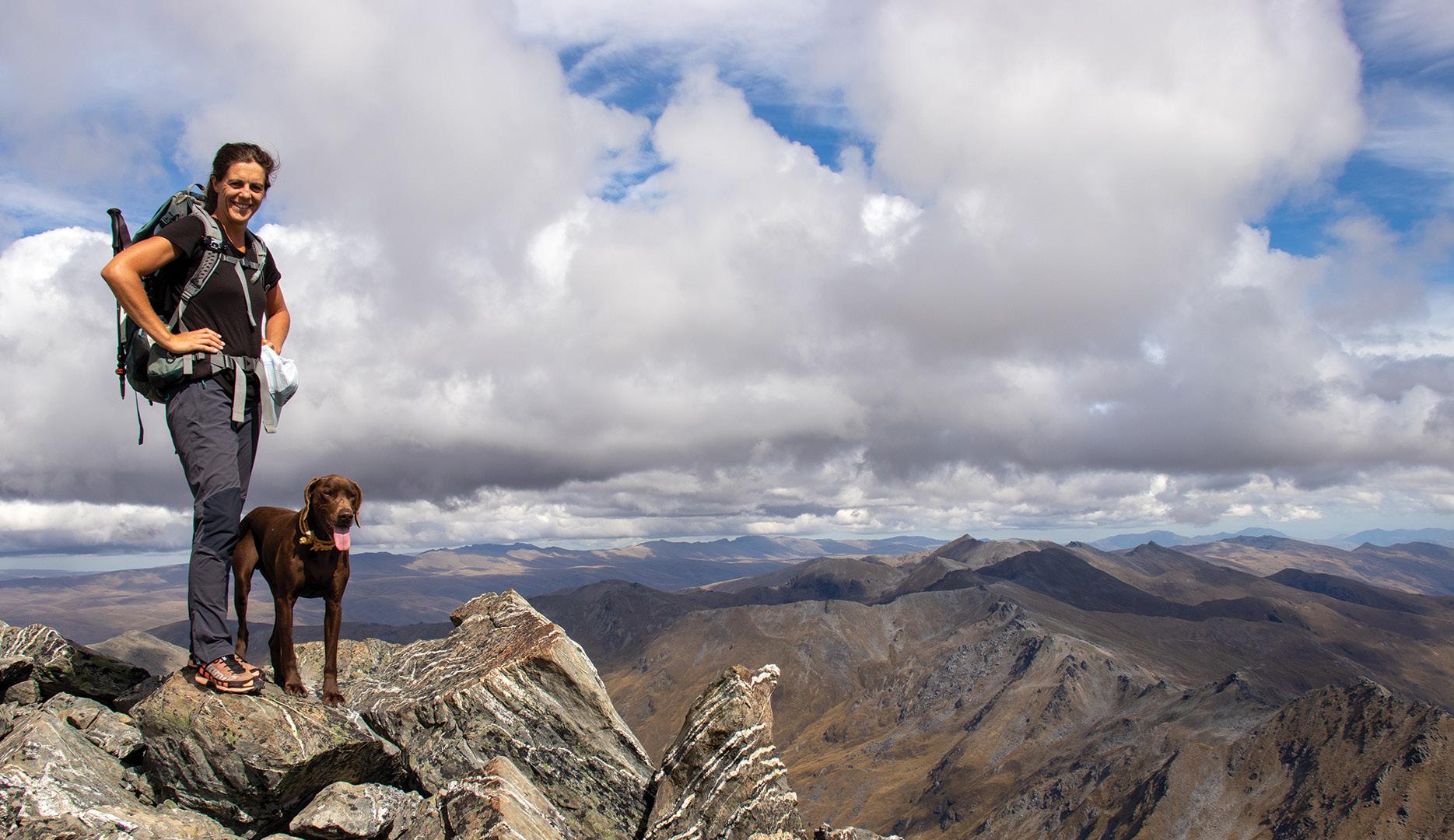
In the months following her 30th birthday, Hannah was faced with the traumatic loss of her best and only trusted friend amid the heartbreaking cancer battle her father was facing, then losing her grandfather a few months later.
Like me, she always had a full plate as she bumbled through life following the steps and expectations of a high achiever but had never stopped to think about what she truly wanted for herself. Reaching her next goal was imminent and she was always sure that next achievement would make her happy. Completing the Coast-to-Coast longest day would be the thing that fulfilled her happiness but then when it passed she was left with that feeling of hollowness. She thought she should have her shit together at 30 years old. To others, life looked good, successful and lucky but for Hannah on the inside, this was not the case.
Fast forward to the loss of her most beloved people, Hannah’s grief forced her into reevaluating her life. She knew what she wanted to do but stepping into life beyond losing three important people and letting go of what people thought of her was going to be hard.
After her father’s passing Hannah went on
a roadie up the West Coast. She forced herself to be on her own entirely, with no phone, no podcasts, music or distractions, just her and nature while she walked. She gave herself the space to be herself and not worry how that affected anyone else.
She said it is so important for us to all have a space where we can feel totally at peace and for her, it is heading into the bush and being with nature, for me it is riding my horse on the farm, with my dogs.
We are lucky to live in a country where we have free access to so many different aspects of nature. I Interviewed Hannah for this column in the sun on a beach in Manapouri, after weeks of fog and slogging around in the mud. It was the most refreshing hour of my week.
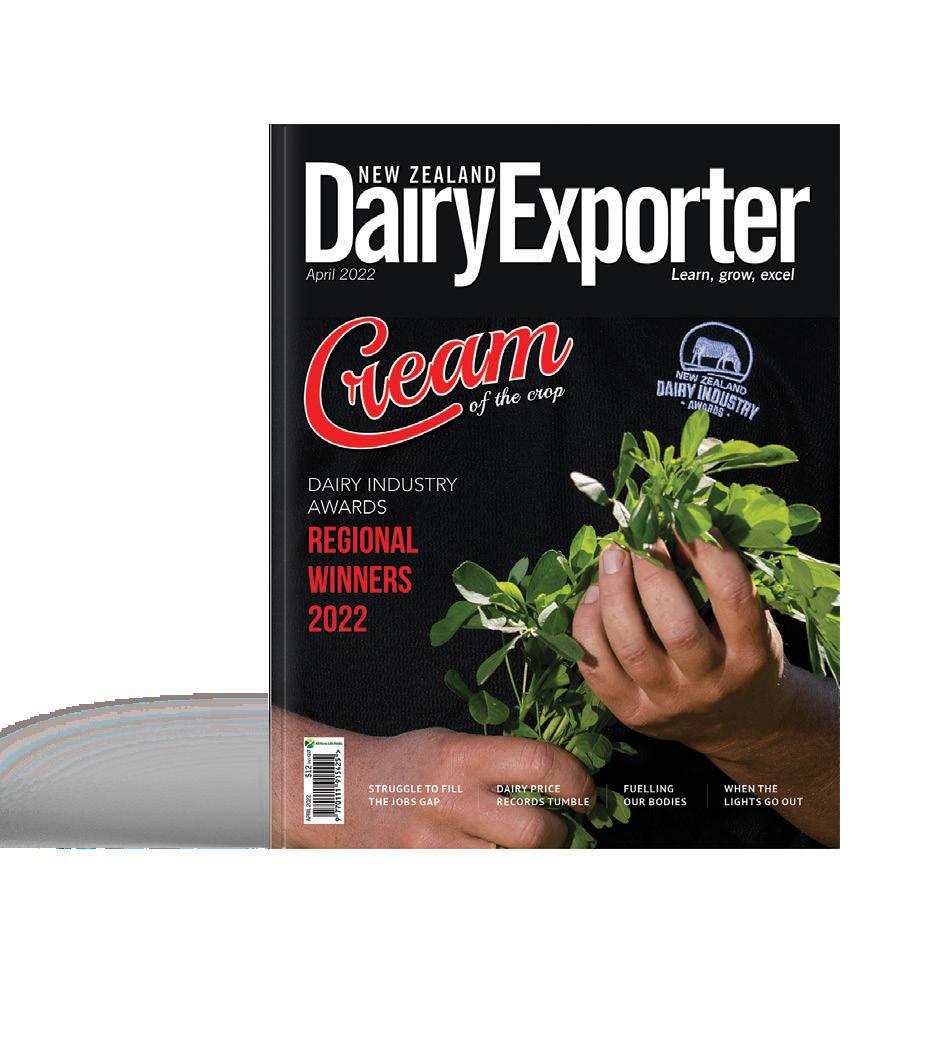
People were approaching her informally for advice and so she built this into a frameworkall while still engineering part-time.
She wanted to create a platform that allowed an opportunity for people to have access to a grief coach where they can talk openly and honestly about their challenges, frustrations and eye-rolls to someone who truly understands what it is like to live with heavy grief.
Having now worked with Hannah for three of her 12-week courses, her ability to bring me into the now and stop the frantic worry that has been haunting me has been a gamechanger.
I am reminded I cannot control what I cannot control. I really thought the hard part of my grief and trauma had been dealt with but life has reminded me we must focus on our wellbeing, otherwise it slips by the wayside. I thank Hannah for her support.
You can find Hannah on social media through: Instagram @withhannahrae, Facebook: Hannah Rae, Email: withhannahrae@gmail.com
Hannah’s story of honesty and life is not only inspiring but motivating to those around her that anything is possible. If you do one thing for yourself, do this - you won’t regret it, I promise.
Loss and grief can hit in so many ways. By Harriet Bremner.Hannah Rae in her happy space.
• Monthly magazines - choose from print or digital subscription options
• Subscribers save between 17% and 22% off the cover price, depending on your subscription term

• Share your magazines with team members to grow their knowledge or subscribe them all and each have a copy
• A great reference tool to refer back to time and time again
• Your subscription is a tax deductible farm working expense
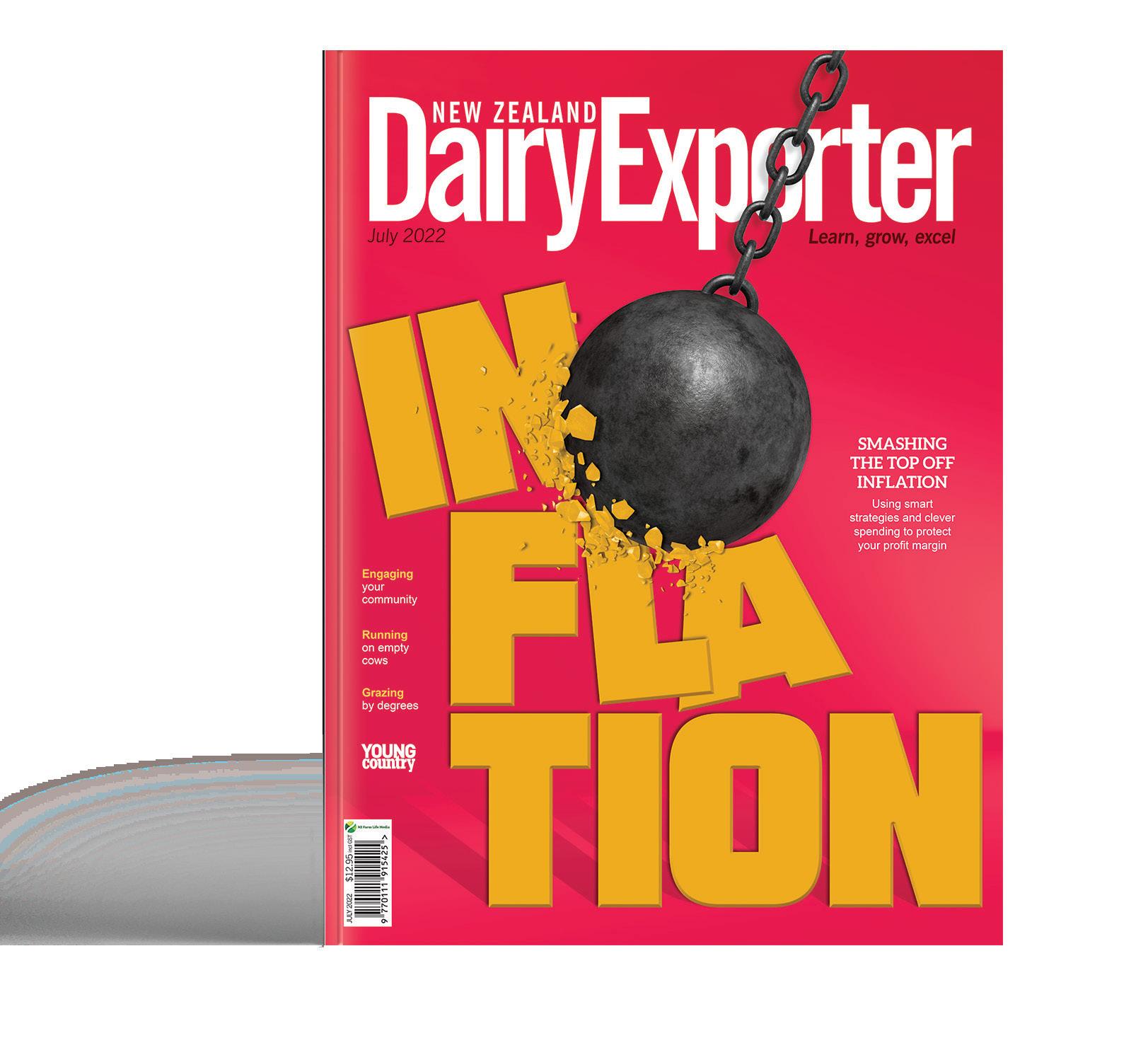
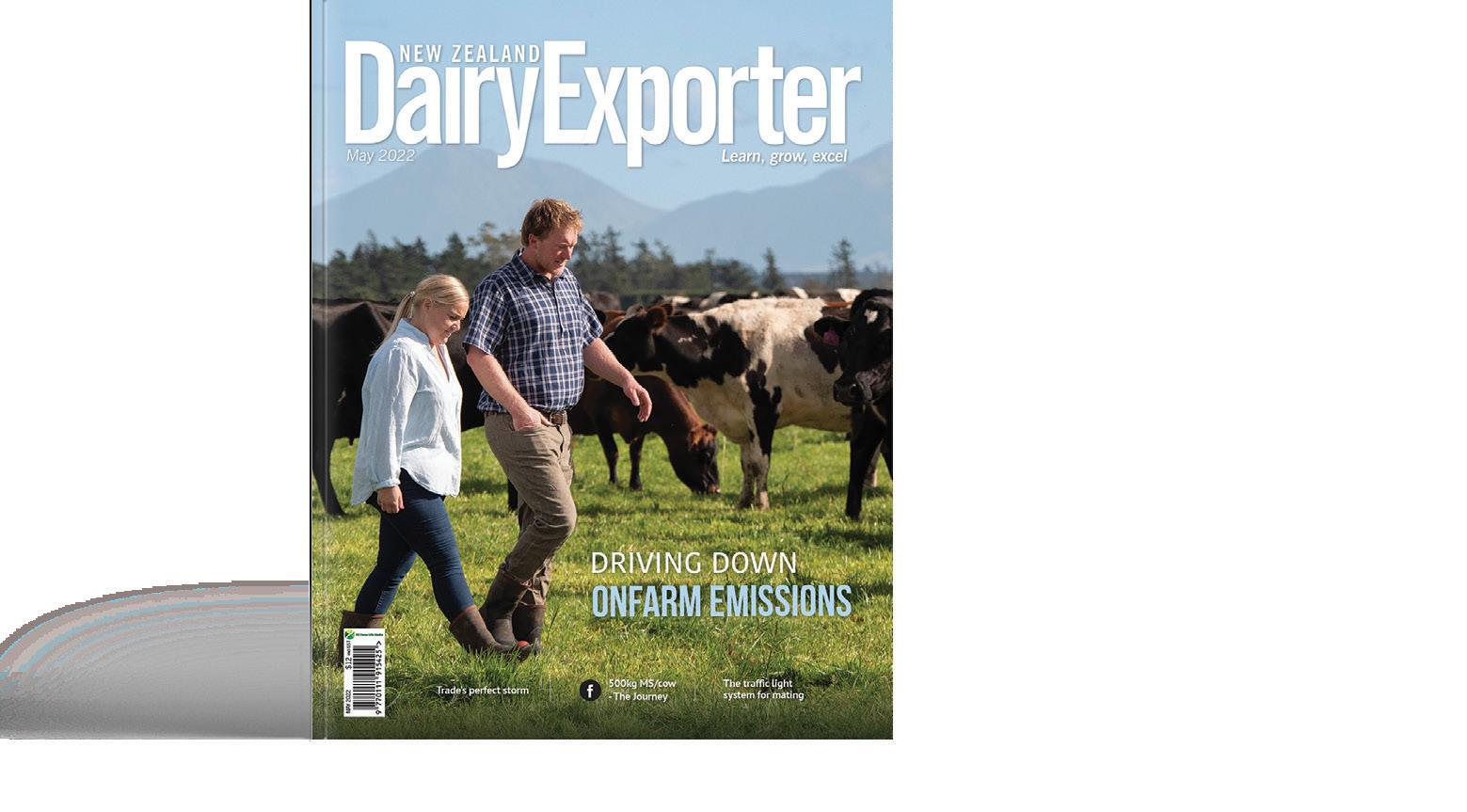
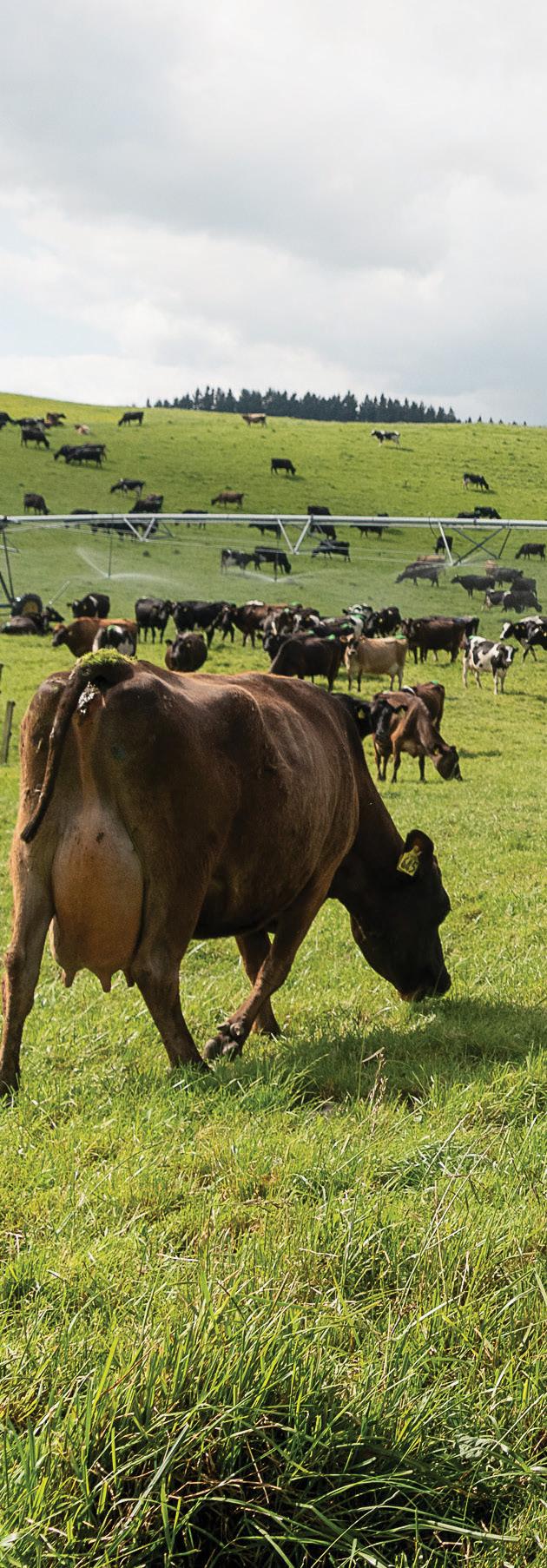
• Entry into regular subscriber-only competitions and giveaways
• Access to years of archive content on our website
12 MONTHS $129
24 MONTHS $252
36 MONTHS $360 3*


Ionce interviewed a farmer who complained his son was “gambling” on the sharemarket but the son had replied straight back it was the father who was doing the gambling.
And the father had to admit his son was right. Farmers can control neither their costs nor how much money they make, and the weather is always there to throw in a curve ball as well.
It’s a wonder any of us do budgets.
We can’t control our costs because each of us are so small on the global and domestic market we are at the mercy of fuel companies, electricity providers and fertiliser sellers.
We can’t control how much we make from our meat and milk because, although many of us are part of co-ops, those co-ops do war in international markets. We are price takers not price makers, even though we produce food and everyone has to eat.
And the weather always has been, and always will be, forever changeable. If every year was dependably dry we could farm to it easily but even dry areas have wet summers keeping us on our toes and wondering where to stack those extra bales made.
It makes us question whether we should farm for the best years or the worst years. Having not enough mouths to eat
the grass versus having to buy in feed when it doesn’t grow.
And while most money traders and fund managers would throw up their hands in horror, we stand in the howling nor-wester watching the grass we have sown, fertilised, irrigated, mowed and raked ready to be baled now lining our fences and the neighbours’ and shrug our shoulders.
So what can we do?
That budget, and yes you must do a budget, is the starting point. Every line of it should be thought of as an opportunity to cement in figures.
It used to be all about the payout – if the payout drops to this much could you survive? With rising onfarm costs, this year has changed all of that. It’s no longer about the payout but the breakeven point.
It doesn’t matter if we get a record-breaking $10 or more this season if our costs are nudging past it.
So focus on your costs.
Get the highlighter out and find the costs you can negotiate and lock in for the rest of the season.


These will include electricity, dairy chemicals, grain and insurance, leases on land and grazing.
There is nothing you can do about local government rates and ACC so ignore them.
You are at the mercy of freight and fuel companies but talk to your vet and see what they can do.
Animal health and supplement-making can blow out depending on the season’s weather so that’s about how good a farmer you are. Again, not much help.
WHILE MOST MONEY TRADERS AND FUND MANAGERS WOULD THROW UP THEIR HANDS IN HORROR, WE STAND IN THE HOWLING NOR-WESTER WATCHING THE GRASS WE HAVE SOWN, FERTILISED, IRRIGATED, MOWED AND RAKED READY TO BE BALED NOW LINING OUR FENCES AND THE NEIGHBOURS’ AND SHRUG OUR SHOULDERS.
And fertiliser companies charge what they want to – there is no negotiating there. Although you can always switch to a different product and they know that.
Apart from rates and ACC, there is arguably not one cost in your budget that you have to pay for. You can buy a solar system or a diesel generator for power, grow more grass instead of buying grain, use bulls instead of AI, forget herd testing and walk instead of taking the motorbike.
And all those companies selling you products know that and they will up the price until it breaks you and you leave the tractor keys inside. Don’t let it get to that stage. Simply say no to the higher prices. It is the easiest way to stop inflation.
Looking at income as well. Nothing can be guaranteed but again there is a lot you can do.
Lock in contracts for your surplus calves with rearers. Do the budgets and work out how to maximise income from them.
How much you will get for your culled cows at the works, even if you can get them in, is guess work but instead find more profitable options to sell them.
And then there is the biggest line in your budget, the one with hopefully lots of zeros.
Fonterra and other companies are great at forecasting the payout, and then dropping it and even a few cents change will cause havoc. New Zealand farmers are completely exposed to the world market. Arguably no other business of our size operates where there is no floor price.
And unlike in other countries, if things go bad, our
government will not help us out of the mess, even though we make up most of its export earnings.
Fonterra does not manage the milk price for its shareholders. The price the farmer gets comes directly from the fortnightly Global Dairy Trade auctions.
What it does do is hedge the price of the milk it uses to make its commodities. Fonterra is both a seller and a buyer of milk. To make its cheese and butter it buys the milk and the price it pays is not the GDT price but the price it has hedged on the futures market.
So, if your co-op, which you own, is playing the futures market, then maybe you should look at it too.
Talk to your accountant and they will put you in touch with a broker and the tools. Yes, it is gambling, yes you are trying to predict the future and sometimes you will win and sometimes you will lose but you won’t break.





If you concrete in as much of your costs and your income as possible then inflation, weather, whatever is happening in the Ukraine, will have less of an effect on your business.
Find out your risk profile. Can you survive breaking even or making a loss? Can your business shareholders (your equity partners, the farm you sharemilk/contract milk on, your sharemilker or contract milker) survive or will they bring you down with them?
Knowledge is always powerful. And play the game. Running a dairying business, whether as a farm owner or a sharemilker or a contract milker is not about milking cows. It’s about making sure you can continue to milk the cows.
CopRice has been delivering nutritional solutions that drive the productivity, profitability and long-term success of pasture-based dairy production systems for more than 30 years.

The company’s tailored programmes are designed to meet the exact nutritional requirements of cows throughout the lactation based on available feed resources and feeding objectives.
Ricegrowers Limited’s TopCow, CopRice and Longacre pellets are formulated to optimise the health, production and fertility of dairy cows at different stages of the lactation and throughout the season.
TopCow Springer is scientifically formulated to aid in reducing the number of days cows experience a negative energy balance, thereby reducing total body condition losses and the incidence of metabolic disorders.
It delivers high levels of fermentable carbohydrates and essential amino acids to support feed intake at a time when the cow’s appetite is naturally suppressed.
These nutrients allow the microbial population in the rumen to adapt to the milking ration and supports blood glucose production at a time when requirements increase dramatically.
TopCow Dairy pellets are formulated to optimise milksolids production across the entire lactation when fed in conjunction with quality pastures. CopRice Dairy pellets have been formulated to provide nutritionally balanced, cost-effective rations to support lactation.
They supply various levels of carbohydrates and metabolisable protein to help balance the total ration relative to cow requirements during the lactation and seasonal conditions. Longacre Dairy pellets are all-purpose ration options suitable for balancing seasonal variations in pasture quality and availability. Book an obligation-free onfarm consultation and find out how CopRice can help to deliver a nutrition program that really stacks up.
• Rebbecca Burrows is CopRice NZ Team Lead Manager.
Farmers are likely to be aware of the many benefits of feeding maize silage to their herd such as improved cow condition, extending days in milk and reducing feed costs. It can also help increase your milk returns and improve the environmental sustainability of your farm system.
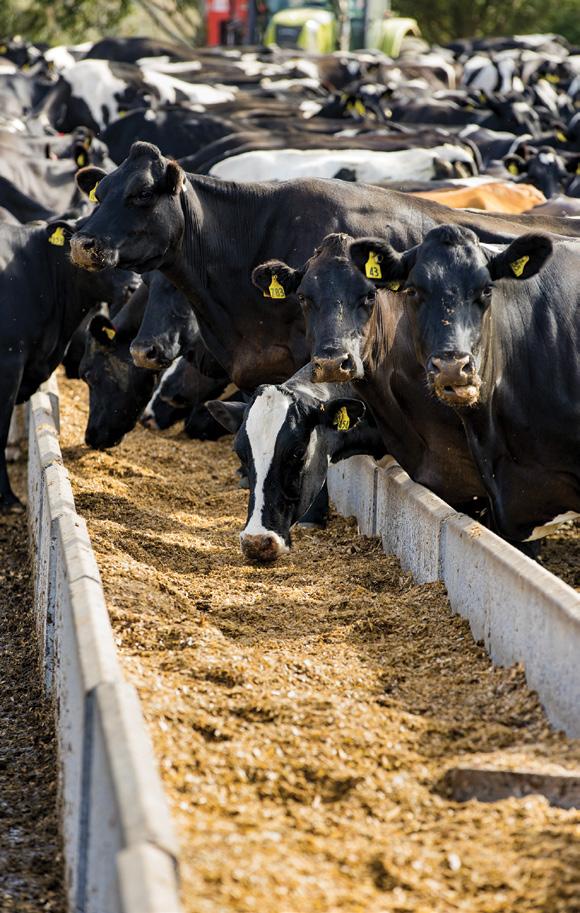
From June 1, 2021, Fonterra introduced milk payment parameters under its Co-operative Difference programme. They now offer a premium for farmers who feed more than 80% farm-grown-feed to their cows.
Maize silage, either grown or bought in, is classified as a farm-grown-feed and is a great way to increase total feed supply while remaining inside the Co-operative Difference threshold.
Fonterra’s FEI index
indicates the suitability of milk fat for processing to meet customer requirements. Palm kernel extract has been considered the key culprit for a high FEI index and farmers have been advised to feed no more than 3kg palm kernel per cow per day. Maize silage is a good option to supply additional feed without triggering any negative FEI response.
Among the most significant reasons to grow maize is its ability to reduce nitrogen leaching. Maize, with its deep-rooting structure, removes excessive soil nutrients which have dropped below the root zone of shallowrooted pasture species.
This can be particularly useful in effluent paddocks, as high-yielding maize crops require a large amount of nutrient, especially nitrogen and potassium. Growing maize mines excess soil nutrients and reduces the risk of elevated soil potassium levels or nitrogen leaching.
Feeding maize silage, a low protein feed, to pasturefed cows also reduces the risk of nitrogen loss to groundwater. For most of the year the protein content of pasture is higher than cow requirements. Surplus dietary protein is excreted in urine and is a major source of nitrogen in waterways. Feeding maize decreases nitrogen in cow urine by more than 70%.
Pasture-based dairy farms in New Zealand have continuously increased their productivity, enabling farms to remain competitive in light of rising costs. Unfortunately, for the cow, this represents some challenges.
Increased stocking density tends to coincide with greater pasture utilisation and increased vitamin D concentrate feeding. Both activities reduce the level of fat-soluble vitamin intake (vitamin A, D and E) as well as the vitamin biotin, which is dependent on high roughage low concentrate diets for adequate levels.

In properly managed pasture, micro minerals (minerals presented as ppm or mg/kg) are often adequate for low production cows. However, as milk production increases, their requirement increases and the substitution of pasture with silage or bought in feeds reduces the intake of cobalt, copper, zinc, iodine, and selenium.
Increased stocking density increases mud and transfer of disease between cows so there is a requirement for a greater concentration of vitamin A, D, E and the minerals Se, Zn and Cu to boost immunity. This means in the modern pasture-based dairy farm we have often increased our requirement for vitamins and minerals and decreased our inputs!
Cows only have five nutritional must-haves, everything else can be considered an additive that should be evaluated on a case-by-case basis. The big five are Energy, Protein, Fibre, Fat-soluble Vitamins and Minerals. The use of vitamins and minerals should not be looked upon as a feed additive but as replacing what is a normal requirement of the cow on a yearround basis. Any cow will not function properly in the absence of one of these.
Before you think of feed additives as a solution to a problem, regardless of whether they are organic minerals, yeasts, B-vitamins, protected and unprotected amino acids, essential oils, ionophores, antibiotics, buffers,
make sure you have the big five right first otherwise they won’t work as well.
It is also important to concentrate on nutrition year-round. Many of the benefits are cumulative, a great example of this is the effect of Biotin on hoof integrity and structure. The graph demonstrates the cumulative benefit of Biotin in an Australian high rainfall (>2000mm/year) pasture-based system (Fitzgerald et al, 2000).
Calcium is also a cumulative mineral as well. It accumulates in bone, along with phosphorous and is critical for effective calving, peaks and muscle strength. Calcium, along with phosphorus, is surprisingly a problem in NZ.
It has always been a problem, but has been accentuated by fodder beet.
So, keep an eye on your minerals and vitamins in your cows as your production increases on your farm – or if you have high incidences of lameness and down cows.
They are a key component and nonnegotiable in regards to animal health. The main source is your feed, so leaf analysis of minerals is a great way of knowing what your cows are eating. Talking to a Sollus team member is a great way to find out what your cows might be missing out on.
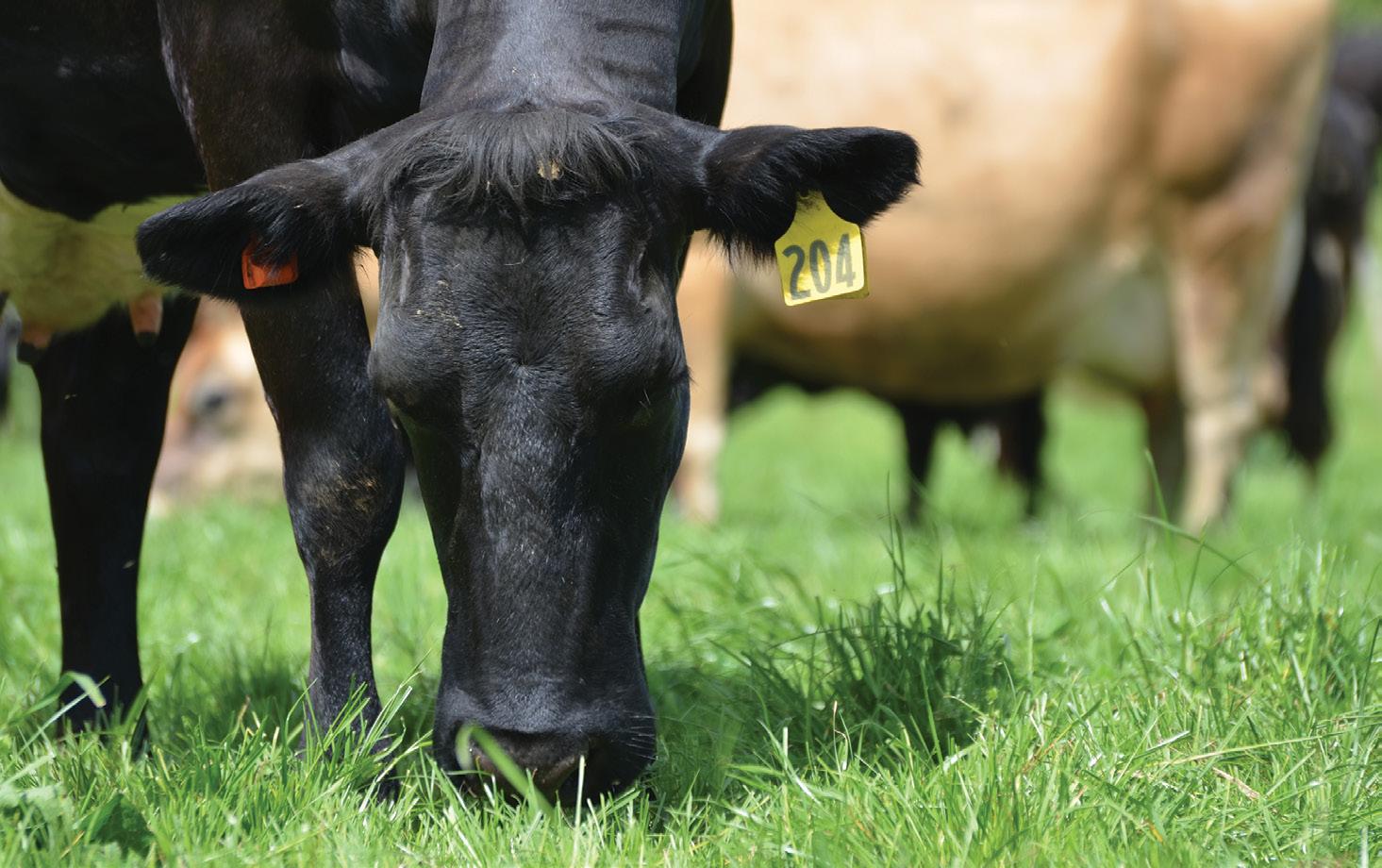
As NZ Dairy Exporter counts down to its centenary in 2025, we look back at the issues of earlier decades. 50 Years Ago – September 1972.
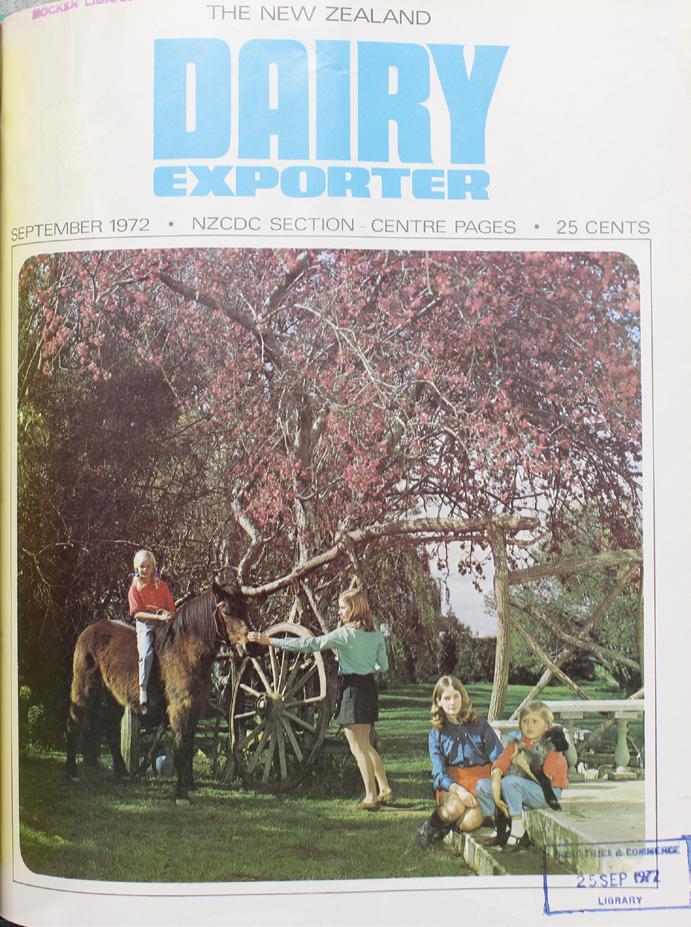
Scattered outbreaks of grass grub during the past two seasons had become increasingly common and might be “the initial tremors of a widespread, post-DDT grass grub explosion,” Ruakura scientist Mr W. M. Kain said. DDT had been an effective and readily used form of control and when it was banned in 1967 there had been warnings that the first effects would be noticeable in four to five years. Prolonged and widespread use of DDT had meant that grass grub had not yet re-established itself in pest proportions in many districts but indications were that this situation was transitory.
“Take a spade and a steely blue eye,” he said, “and turn back the pasture to see if the grub is present.”
Mr Kain said that despite any developments in plants resistant to grass grub or in use of cultivation, it seemed likely that control would increasingly depend on insecticides.
“No single investigator has ever demonstrated a relationship between fat consumption in an individual and his liability to get a heart attack,” Professor John Yudkin told a meeting of doctors and nutritionists in Auckland recently.
Professor Yudkin said there are several causes of heart attacks and it is not known how they relate, but one of those causes is the high consumption of sugar.
Professor Yudkin, who is head of the department of nutrition at Queen Elizabeth College, London, was widely reported in the New Zealand press on his views that sugar, not fat, is a prime cause of heart disease. He has written a paperback book on the subject called “Pure White and Deadly”.
The State Advances Corporation does not attempt to provide all the finance needed by the farming industry. Nor has it ever been able to provide it, says the corporation’s divisional director, rural, in Wellington, Mr H. J. King.
“Within the funds available we try to be as helpful as possible,” he says. “But farmers should be aware that their requirements often can be met from alternative sources of farm finance.”
“For example, the SAC received more than 7242 applications totalling some $108 million in 1971-72. Yet the available cash was $72.7 million.”
Mr King says that the SAC tries to give worthwhile assistance to competent creditworthy farmers who have reasonable need to borrow.
“The thinking is that the funds should be reserved for those young farmers who have not owned an economic property rather than go to those who simply wish to buy a larger or more attractive unit.”
The part the opossum may play in Tb in cattle is being investigated more widely by the Department of Agriculture.
The department is carrying out a survey of opossums and the incidence of Tb in them in areas where Tb in cattle has not been reduced as quickly as expected. This is in addition to the control measures adopted in Buller and the Wairarapa.
The assistant director of the Department of Agriculture’s animal health division Mr R. M. Salisbury says there is no concrete evidence on any part opossums may play in cattle contracting Tb.
The high standard of the average milking shed and its milk is a feature of the New Zealand dairy industry.
And it is necessary that the standard is maintained and that yards, buildings and shed surrounds should have no adverse influence on milk quality. But any attempt to enforce unnecessarily high standards, especially on points that have little or no influence on milk quality, should be queried. These comments are prompted by the move within the town milk industry to introduce a shed accreditation scheme involving penalties. In established areas where problems with drainage, fencing, ragwort control and general development have become minor worries, farm owners nearly always improve milking shed building yards and environs.
Pressure should be put on farms at the appropriate time, not when the obvious priorities are fertiliser, ragwort control, race maintenance improvement and the like.
• 1 packet malt biscuits
• 1 tin sweetened condensed milk
• 1/2 lb coconut
Line an 8 inch square tin with malt biscuits. Combine condensed milk and coconut. Spread this evenly over the biscuits then arrange another layer of biscuits over the top. Ice with chocolate icing and cut into squares when setCandessa.
• Thanks to the Hocken Library, Dunedin.
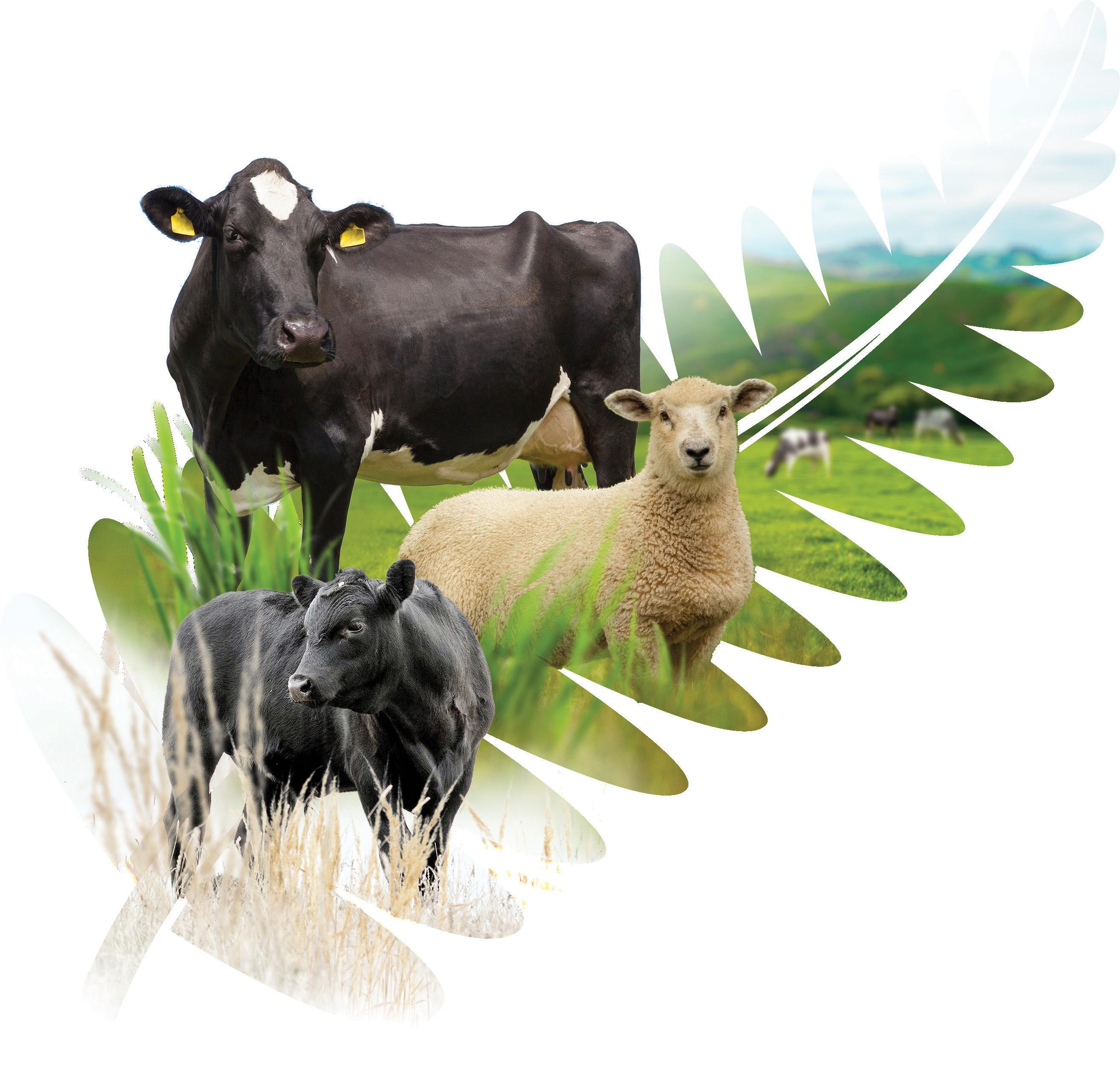
Season after season, brands like ECLIPSE®, EPRINEX®, MATRIX® and BIONIC ® have been trusted on farm to deliver exceptional health and production outcomes for farmers. Boehringer Ingelheim is the name behind these brands that continues to invest in NZ agriculture by developing and manufacturing these products right here in NZ, ensuring kiwi farmers maximise production - not just this season, but for many, many more to come.


